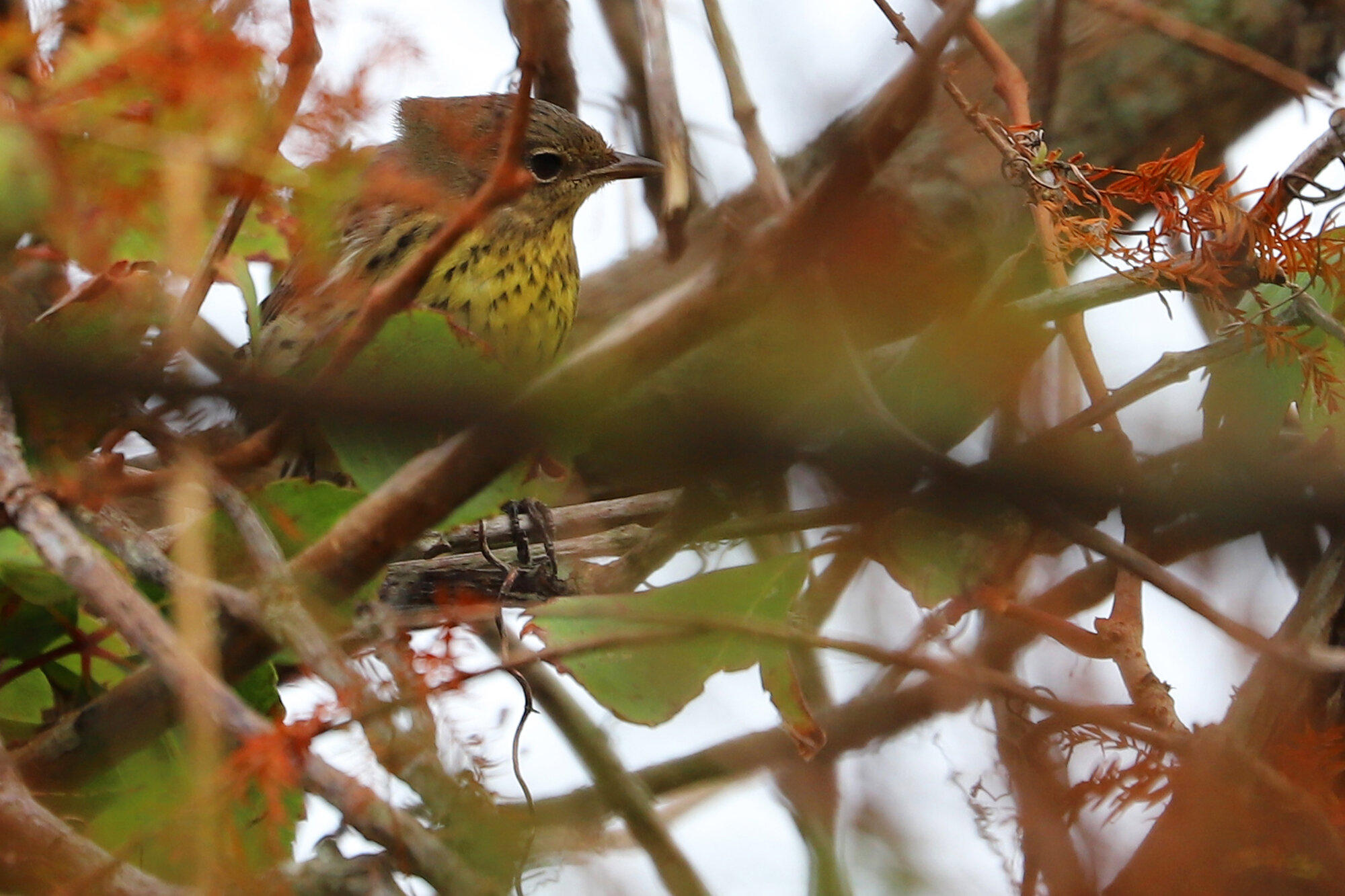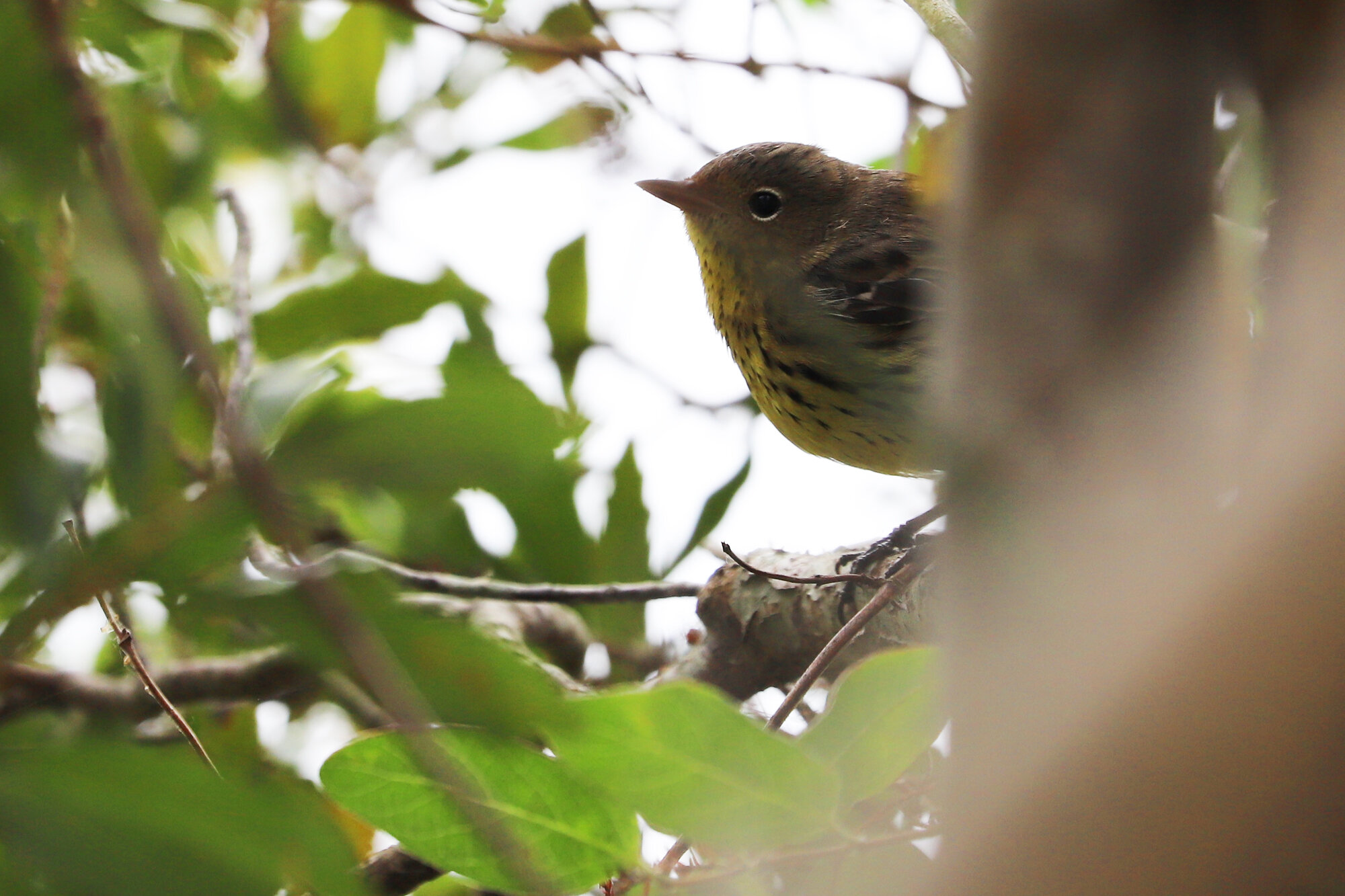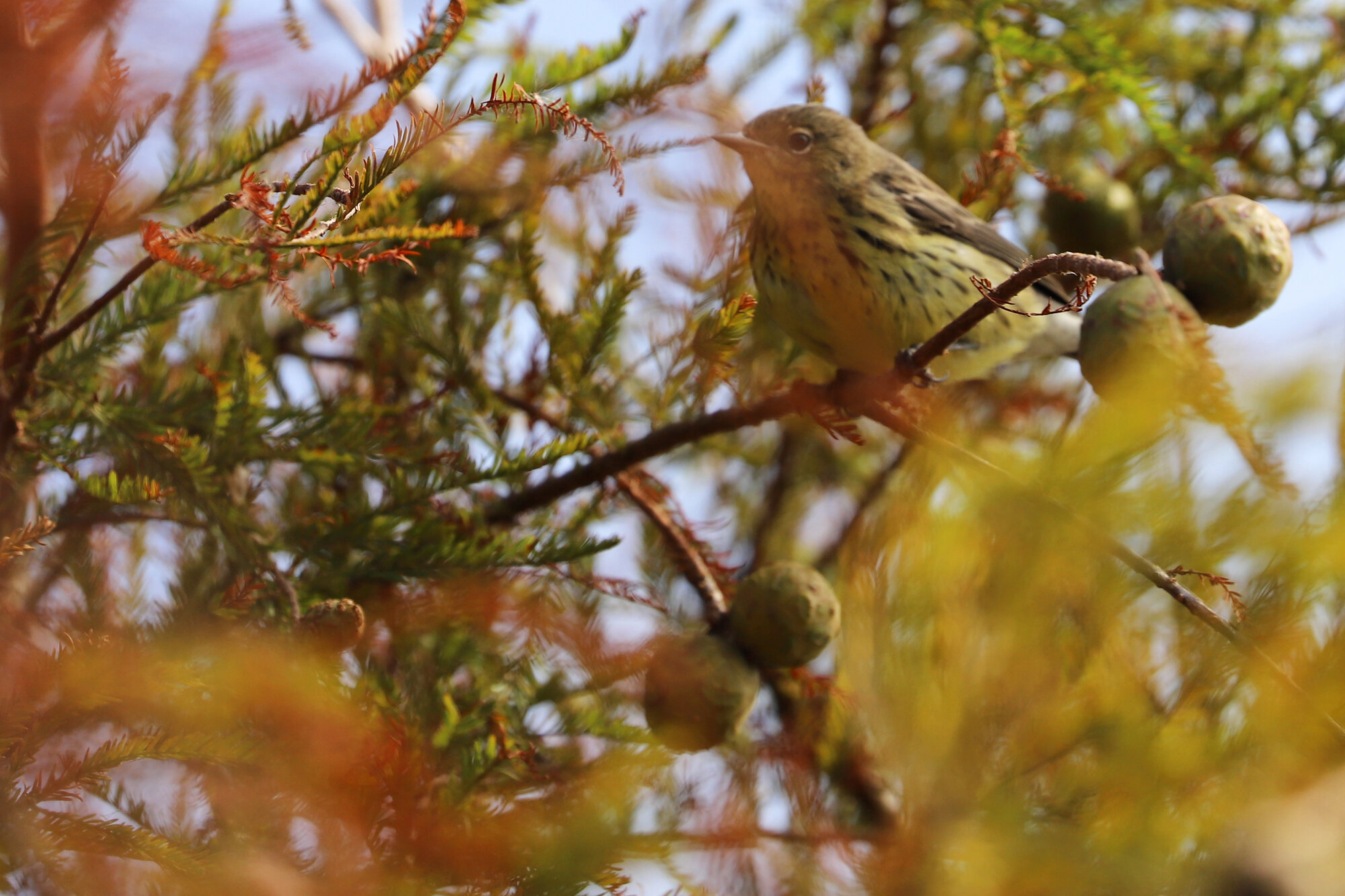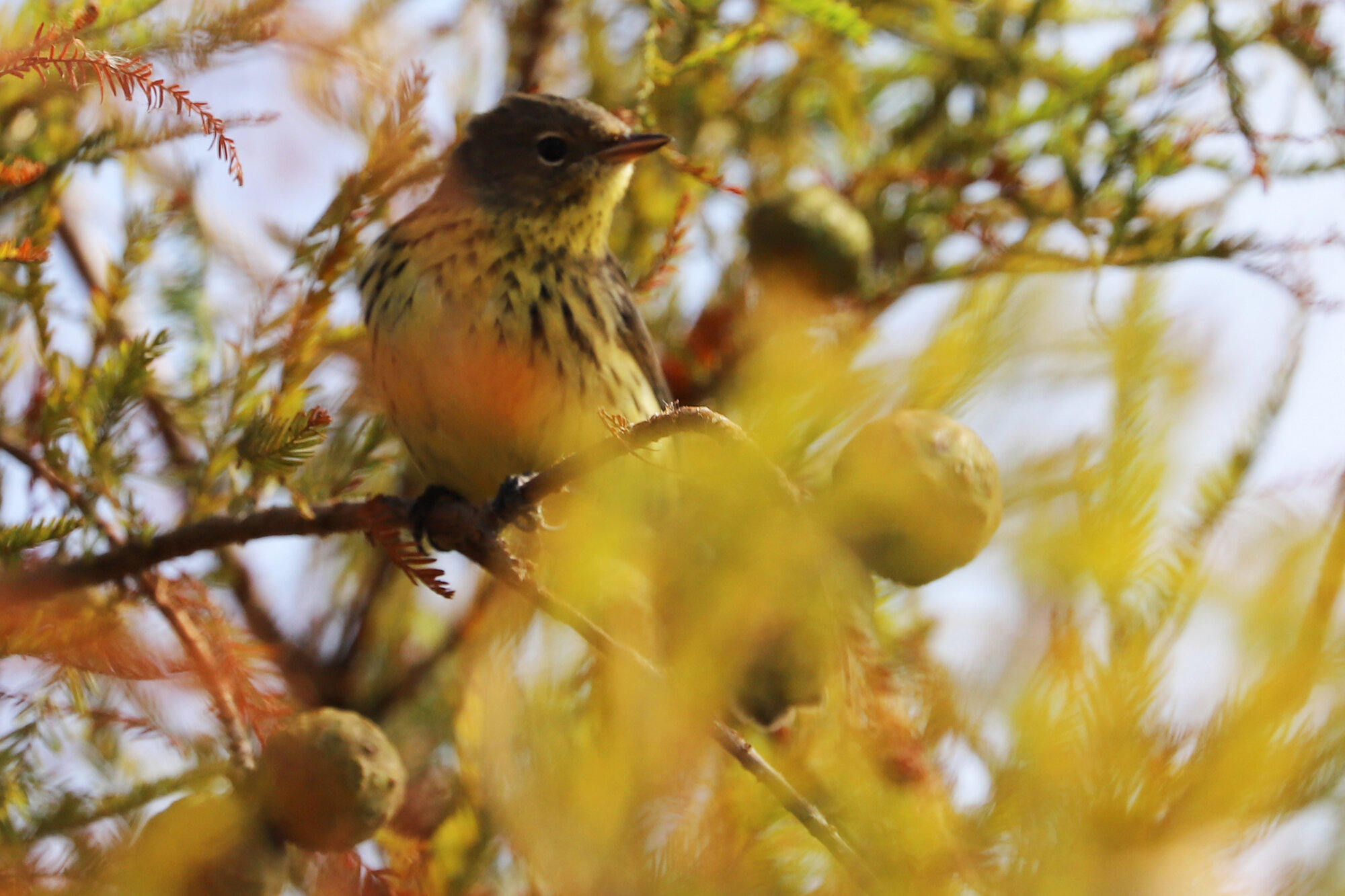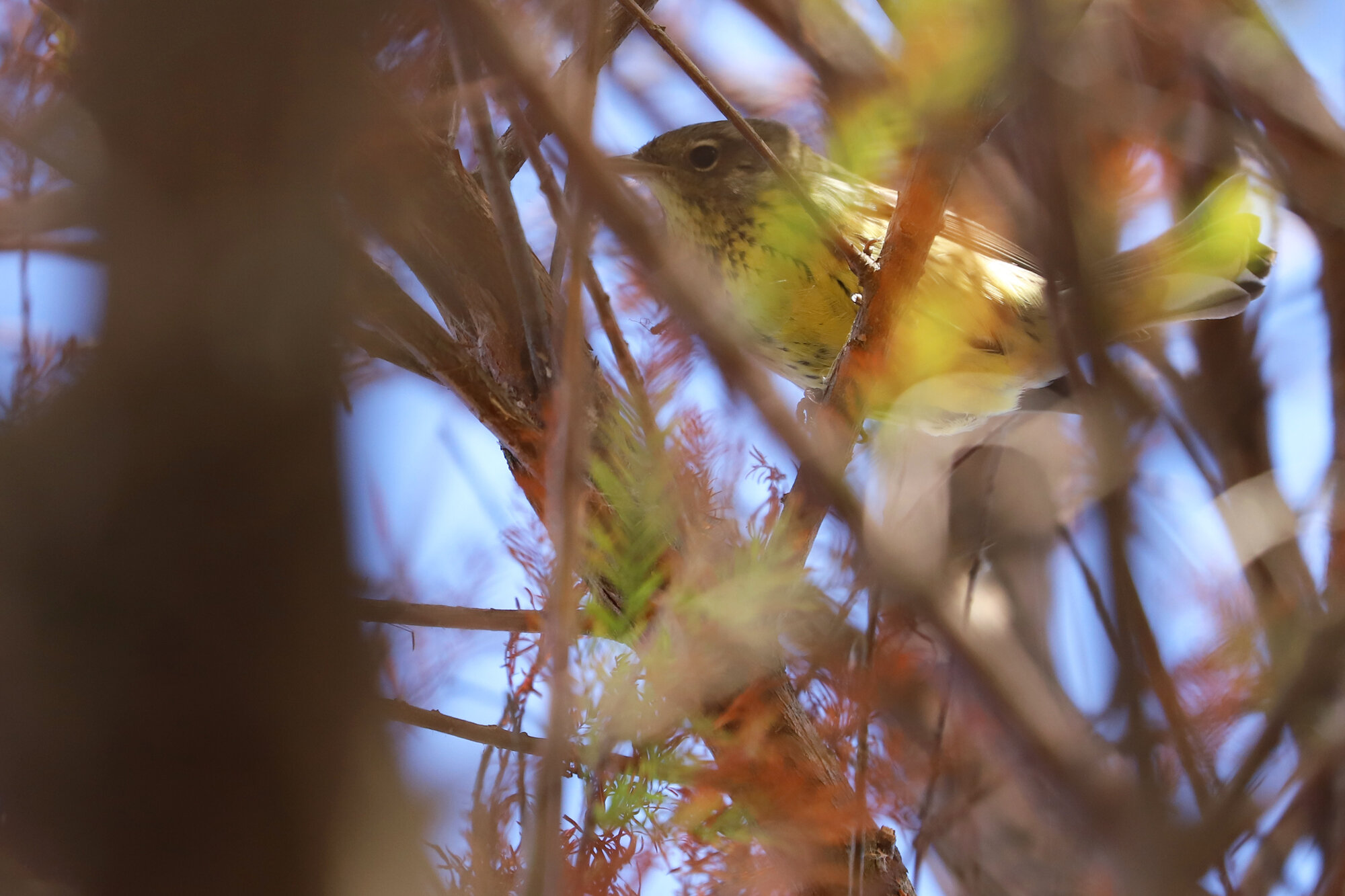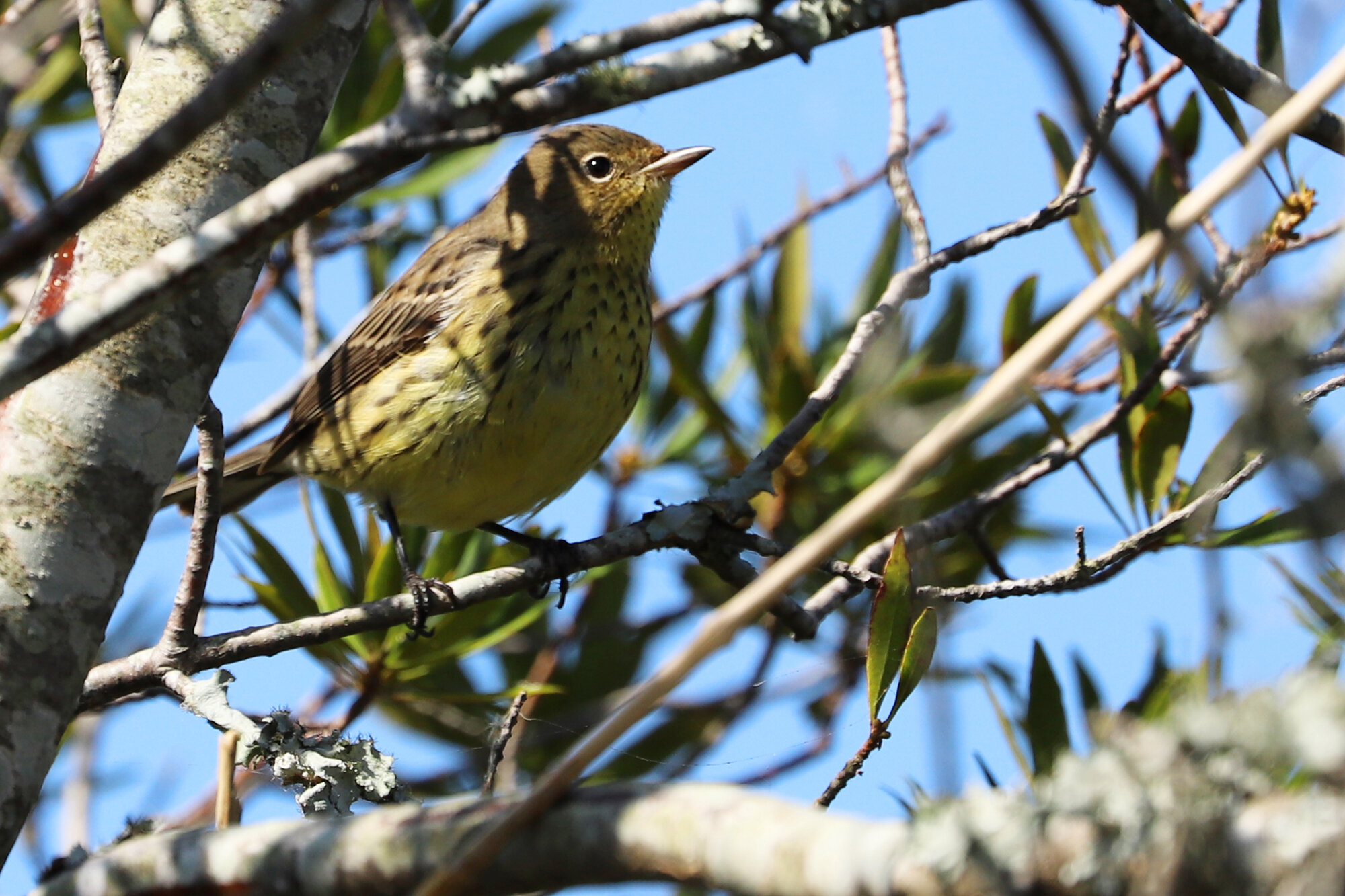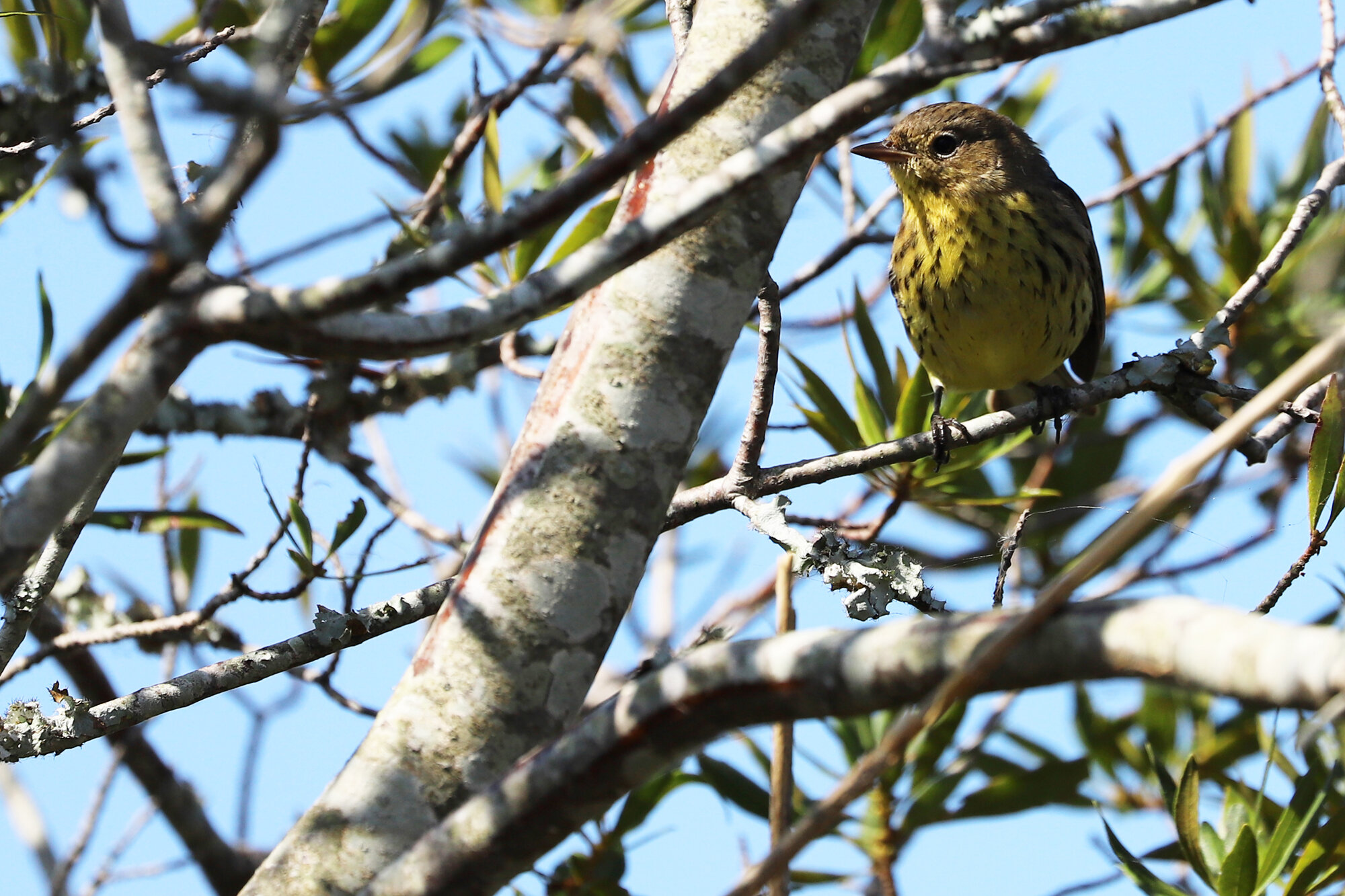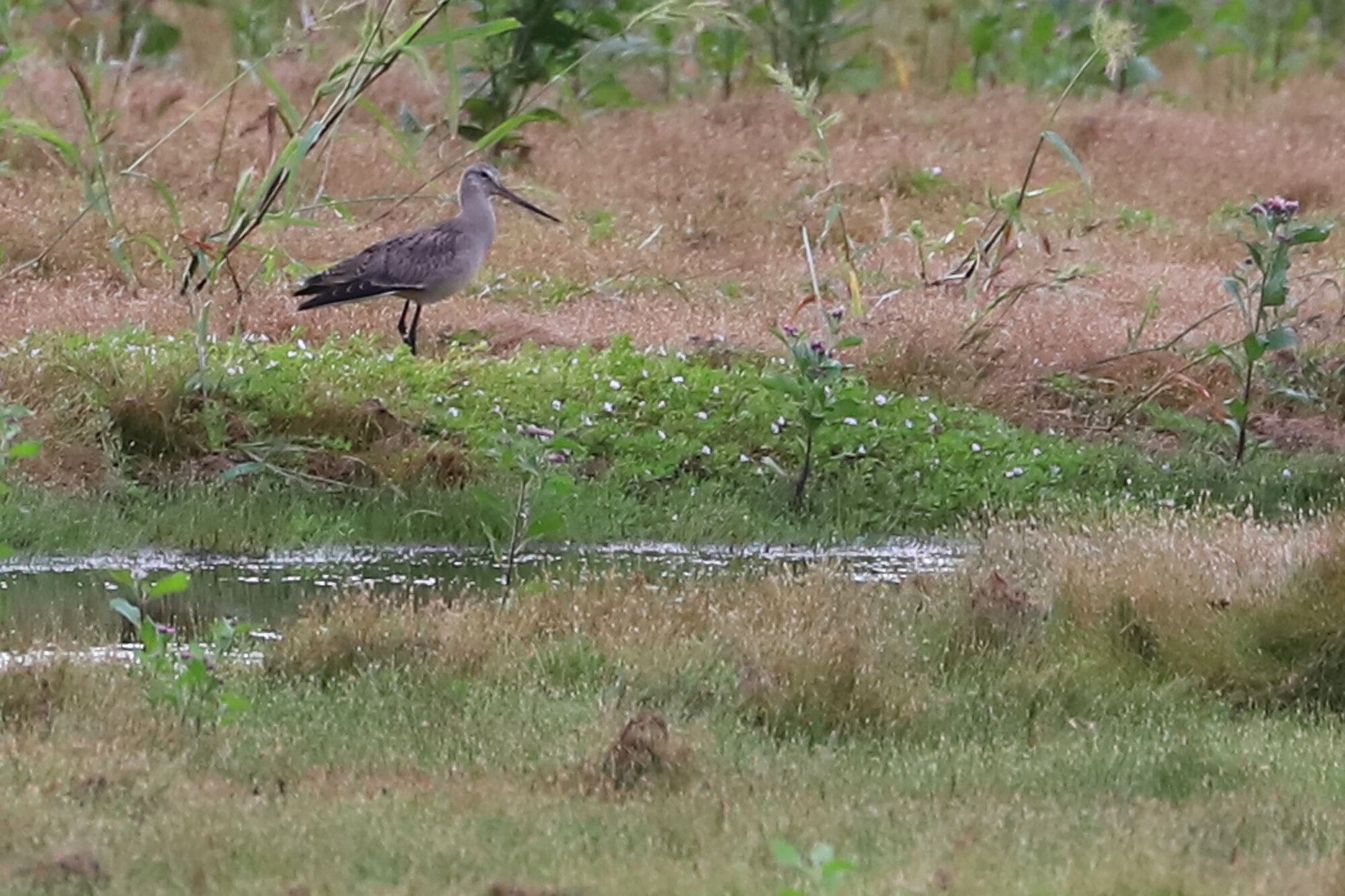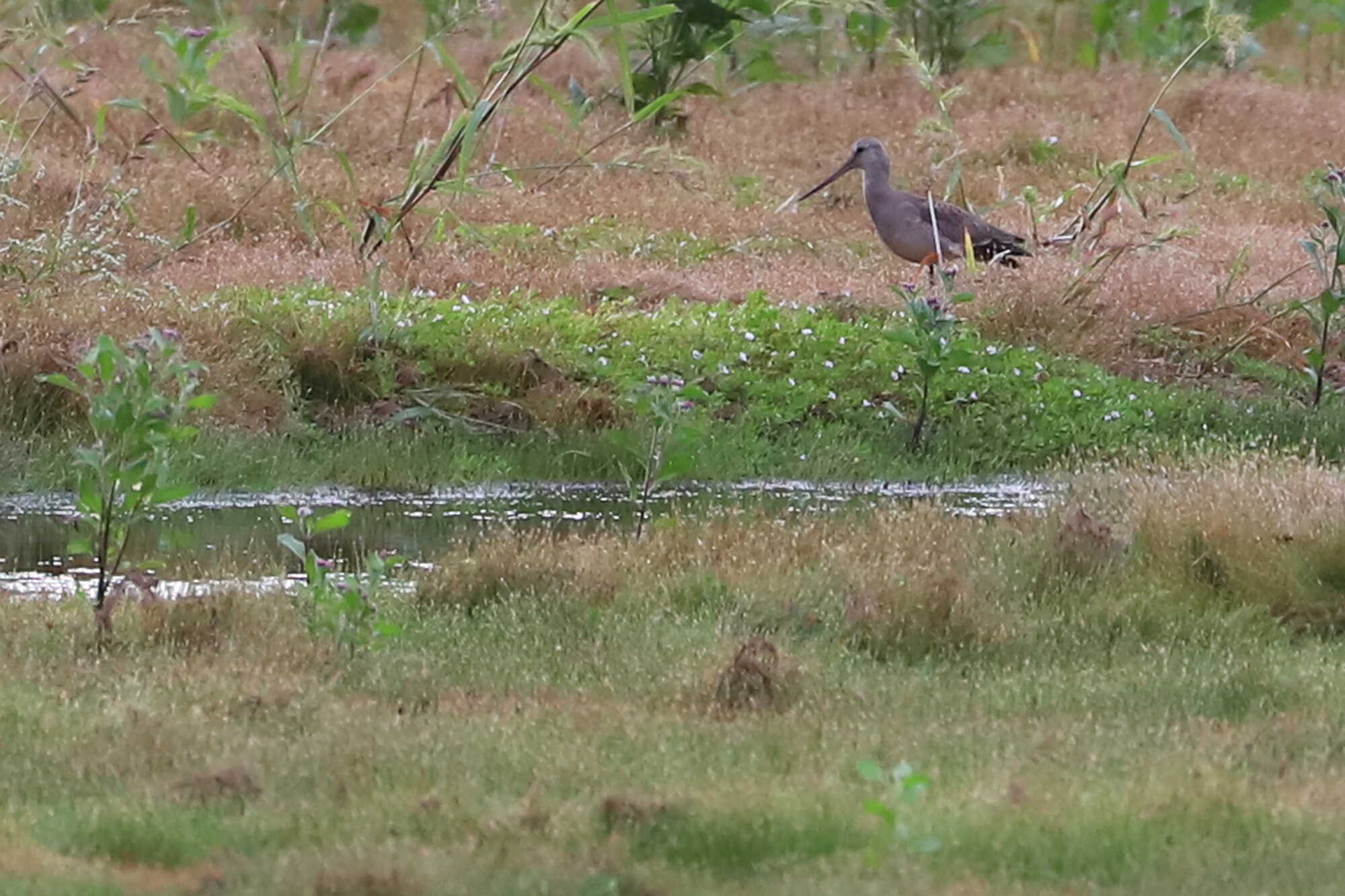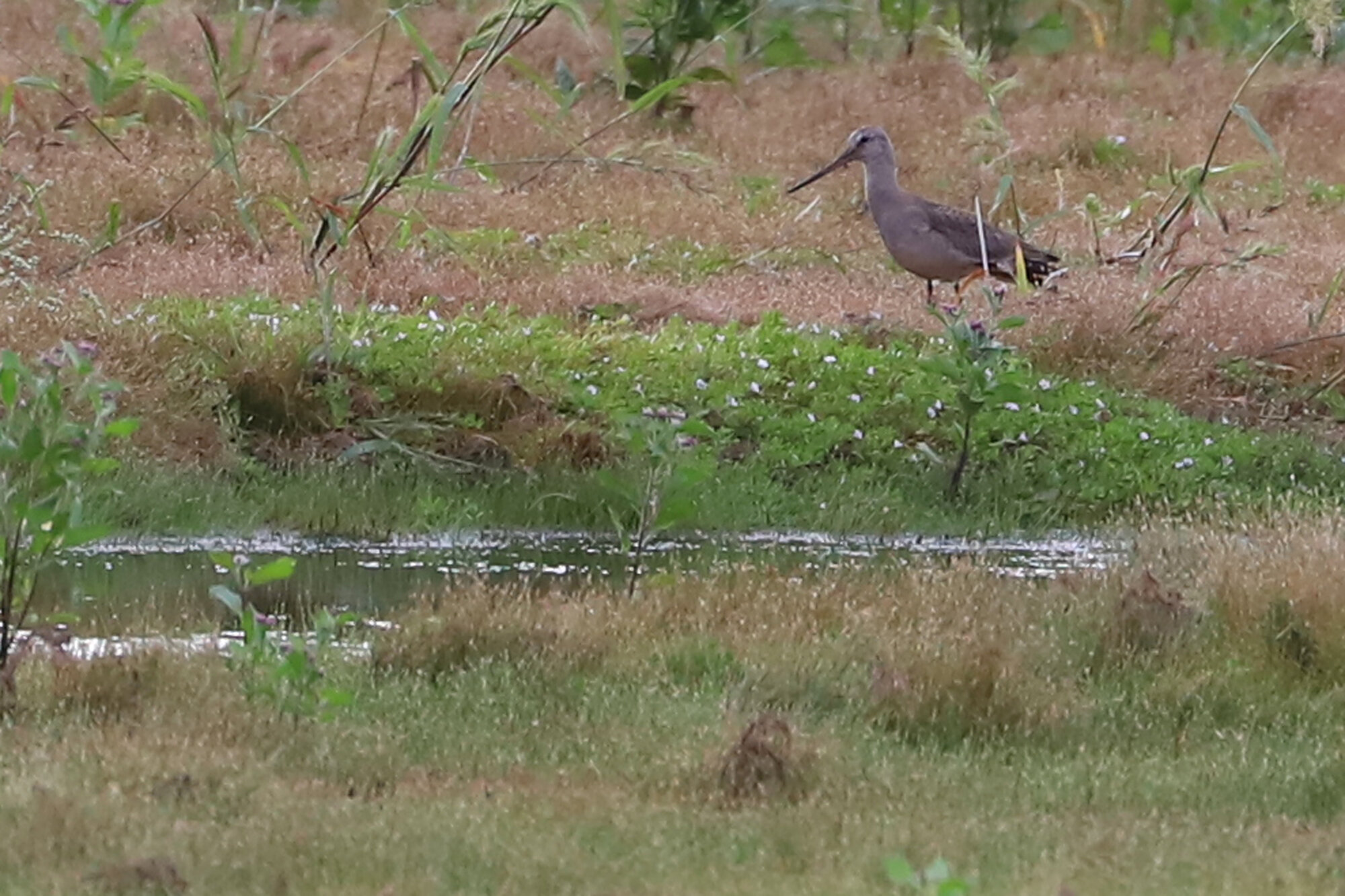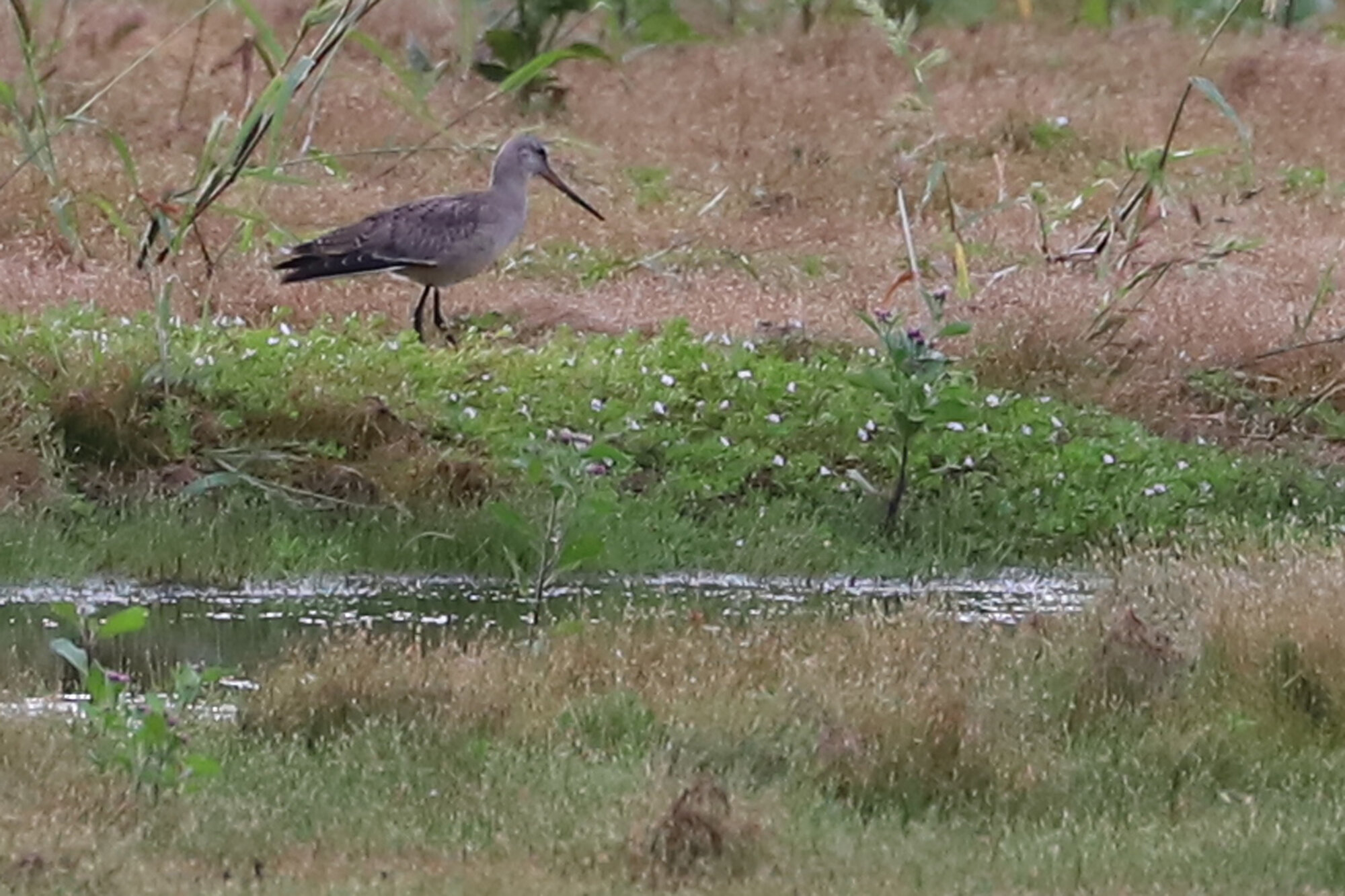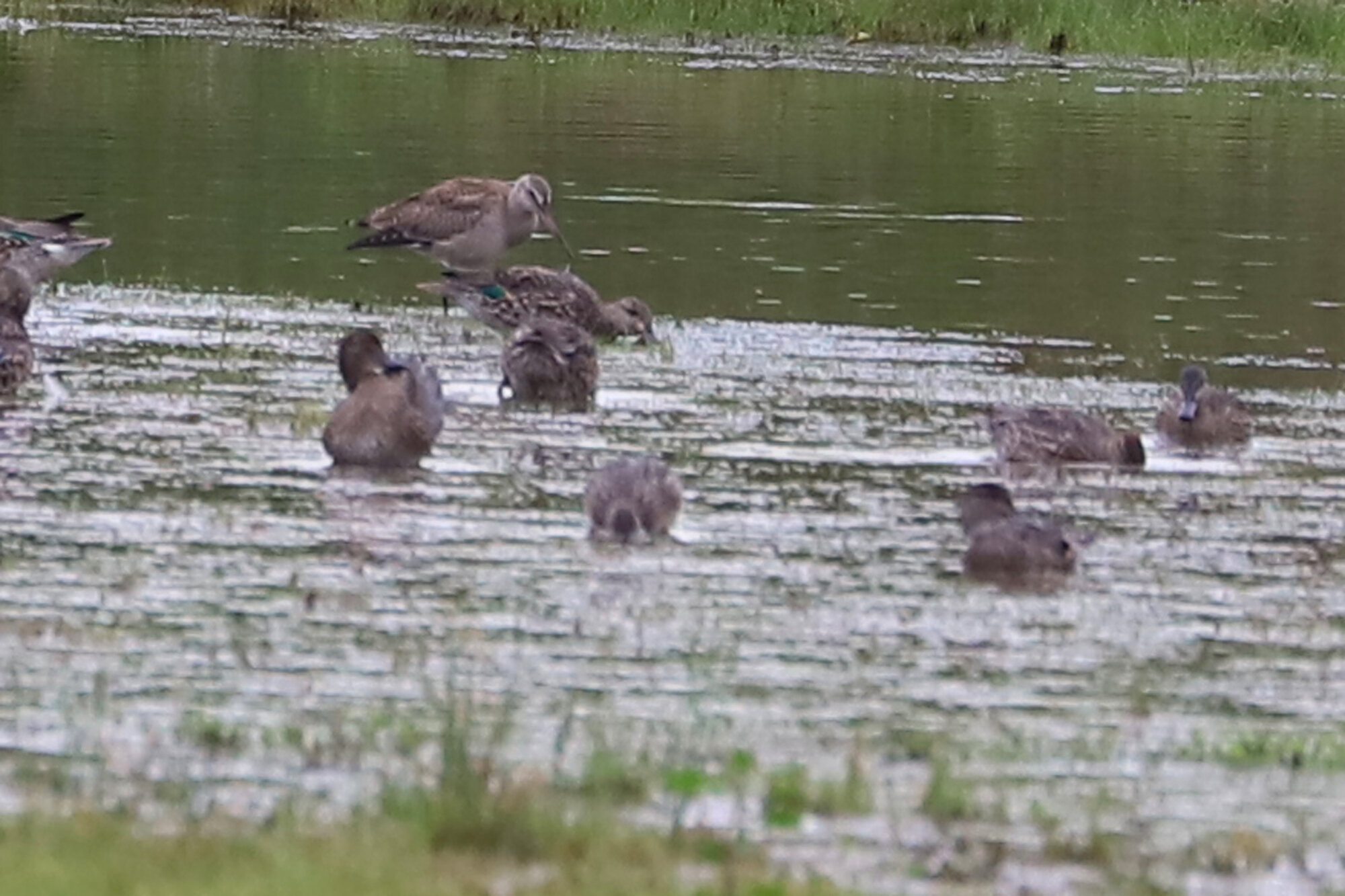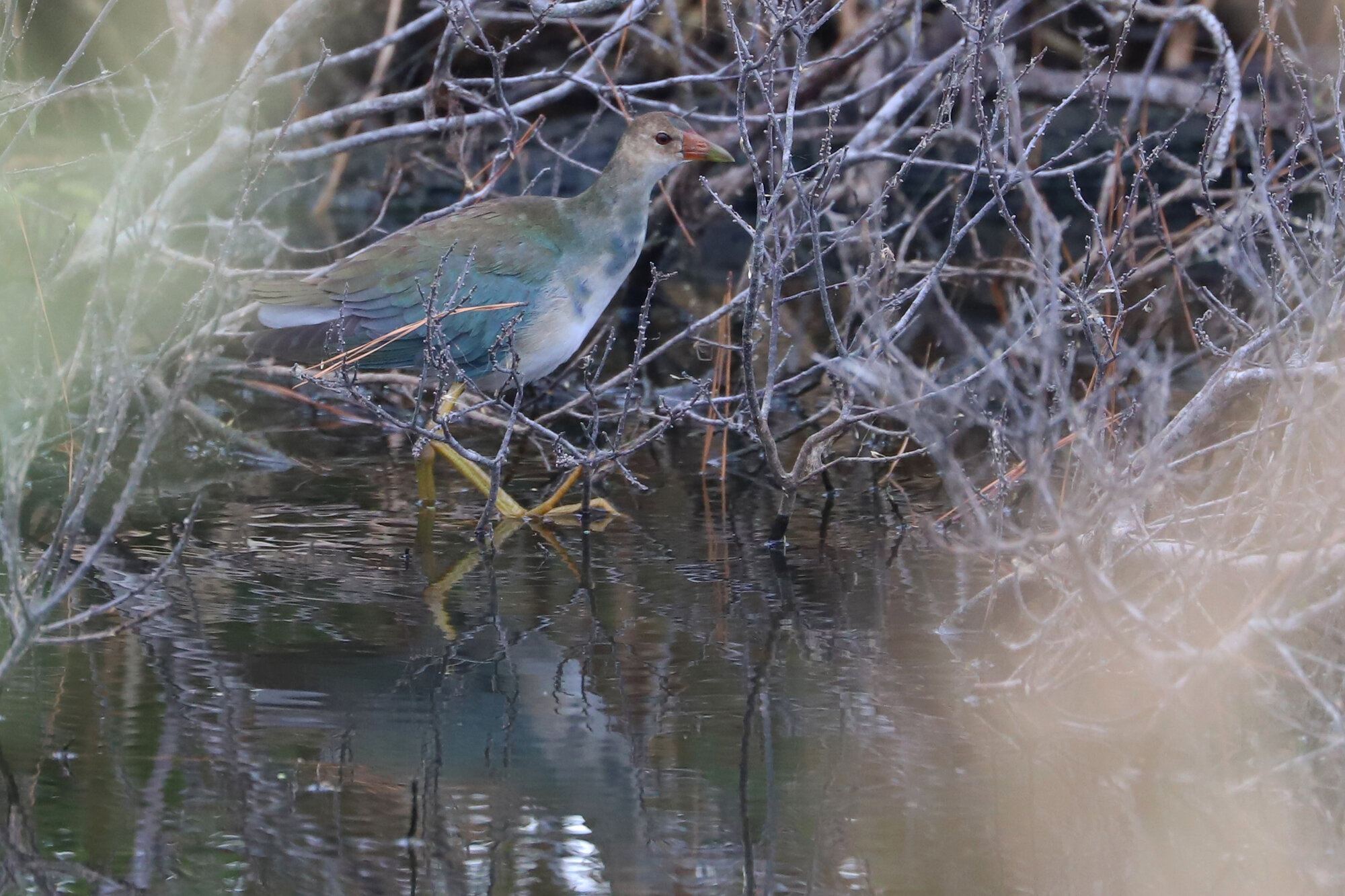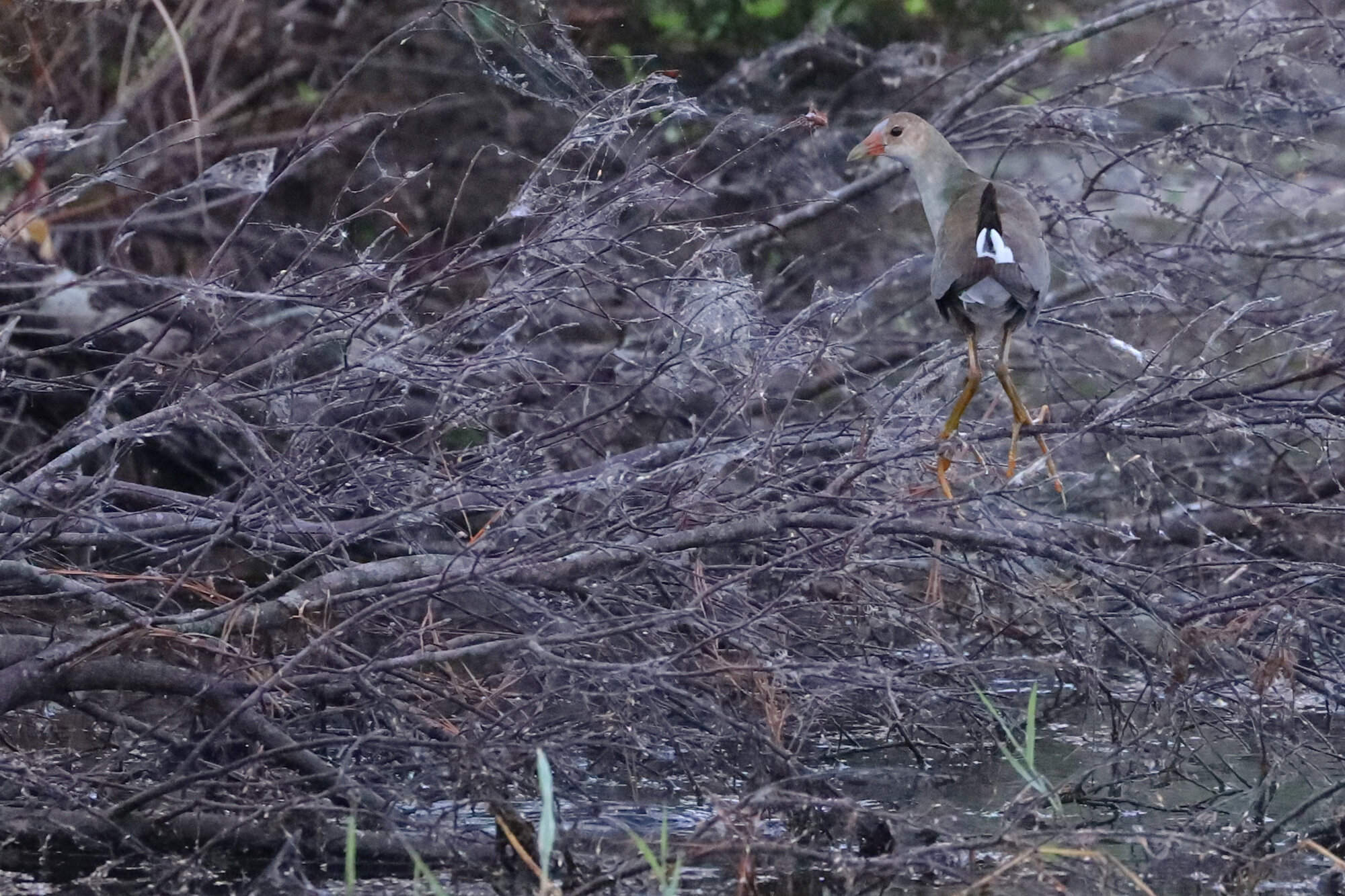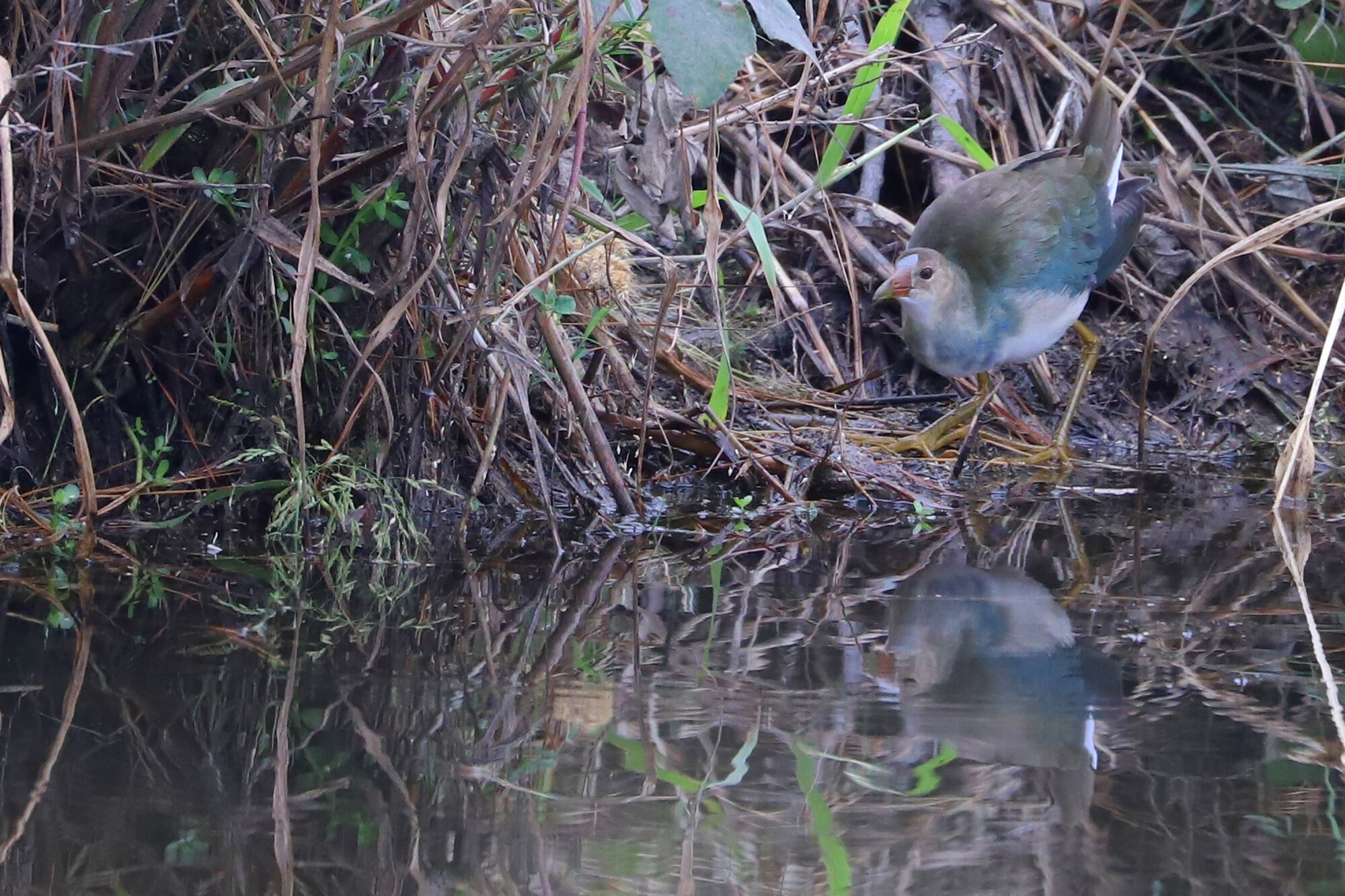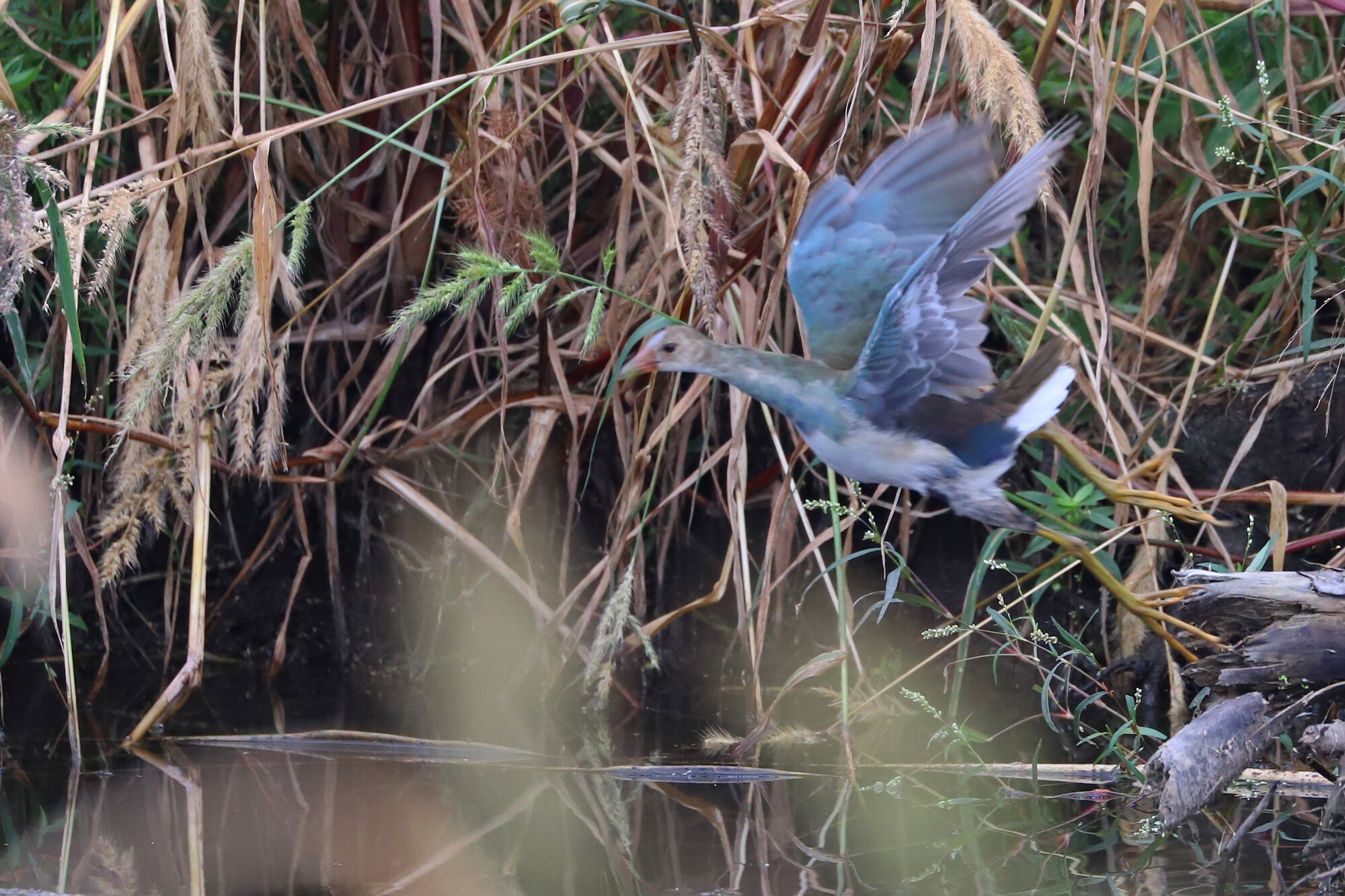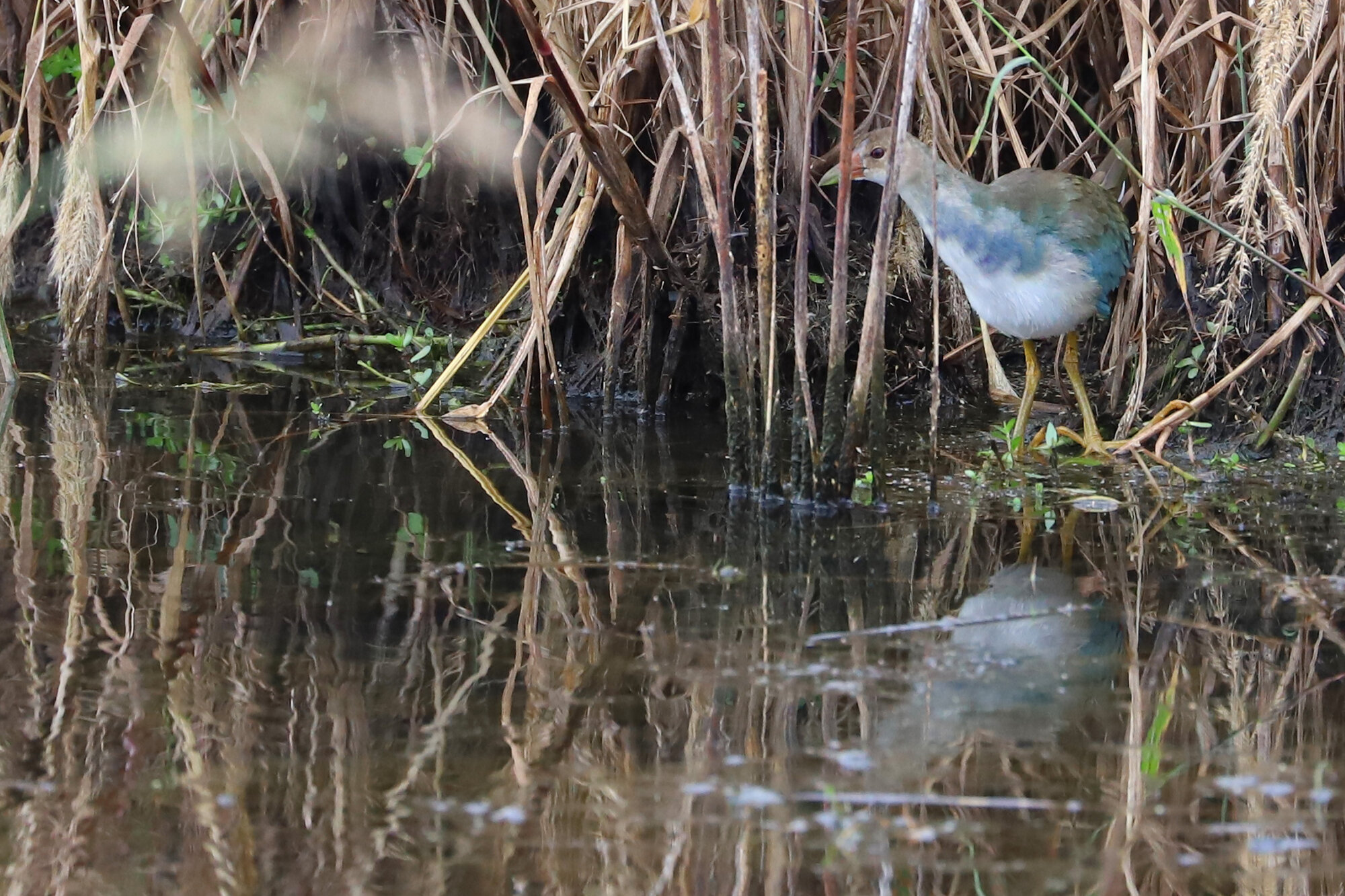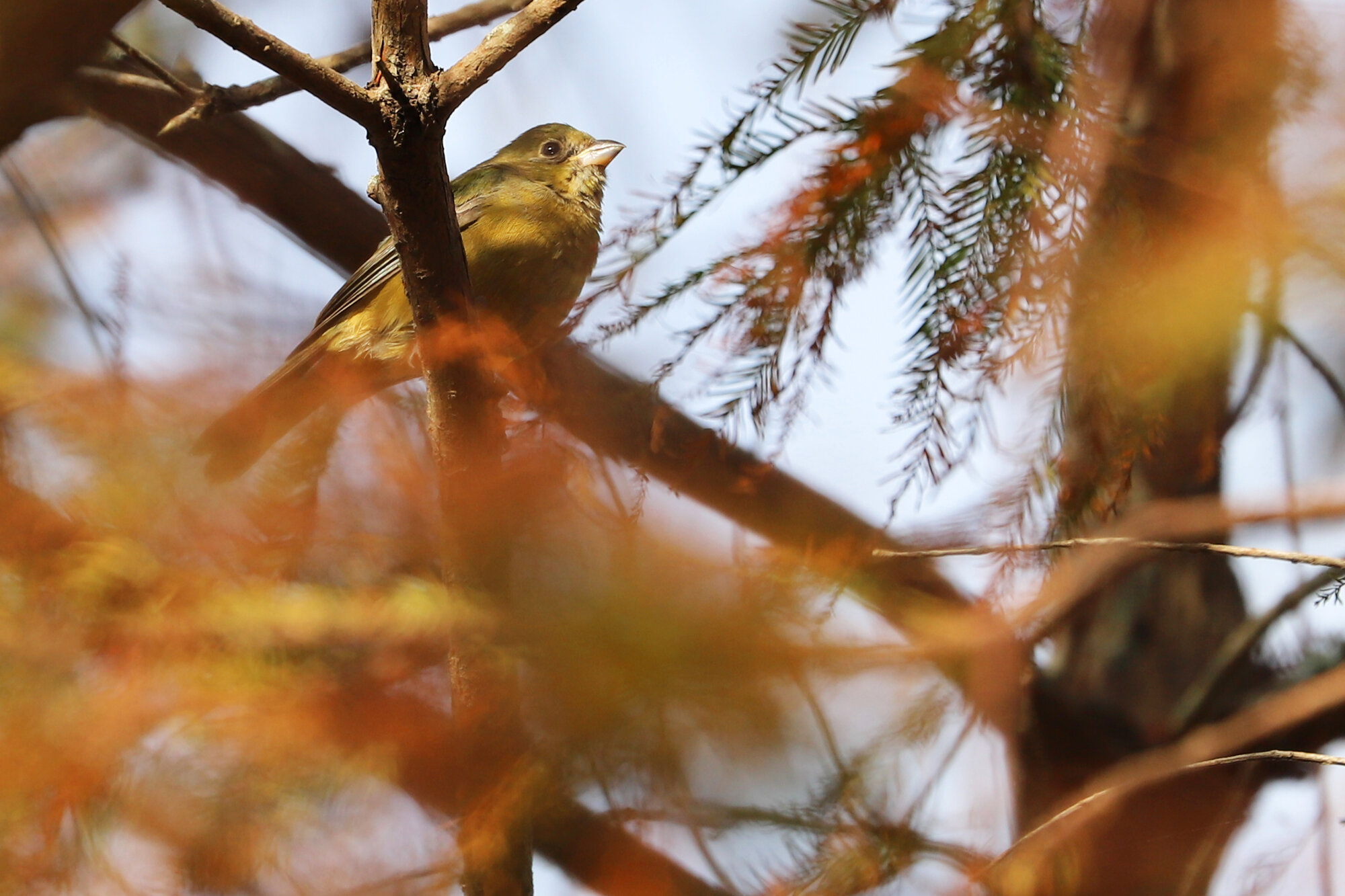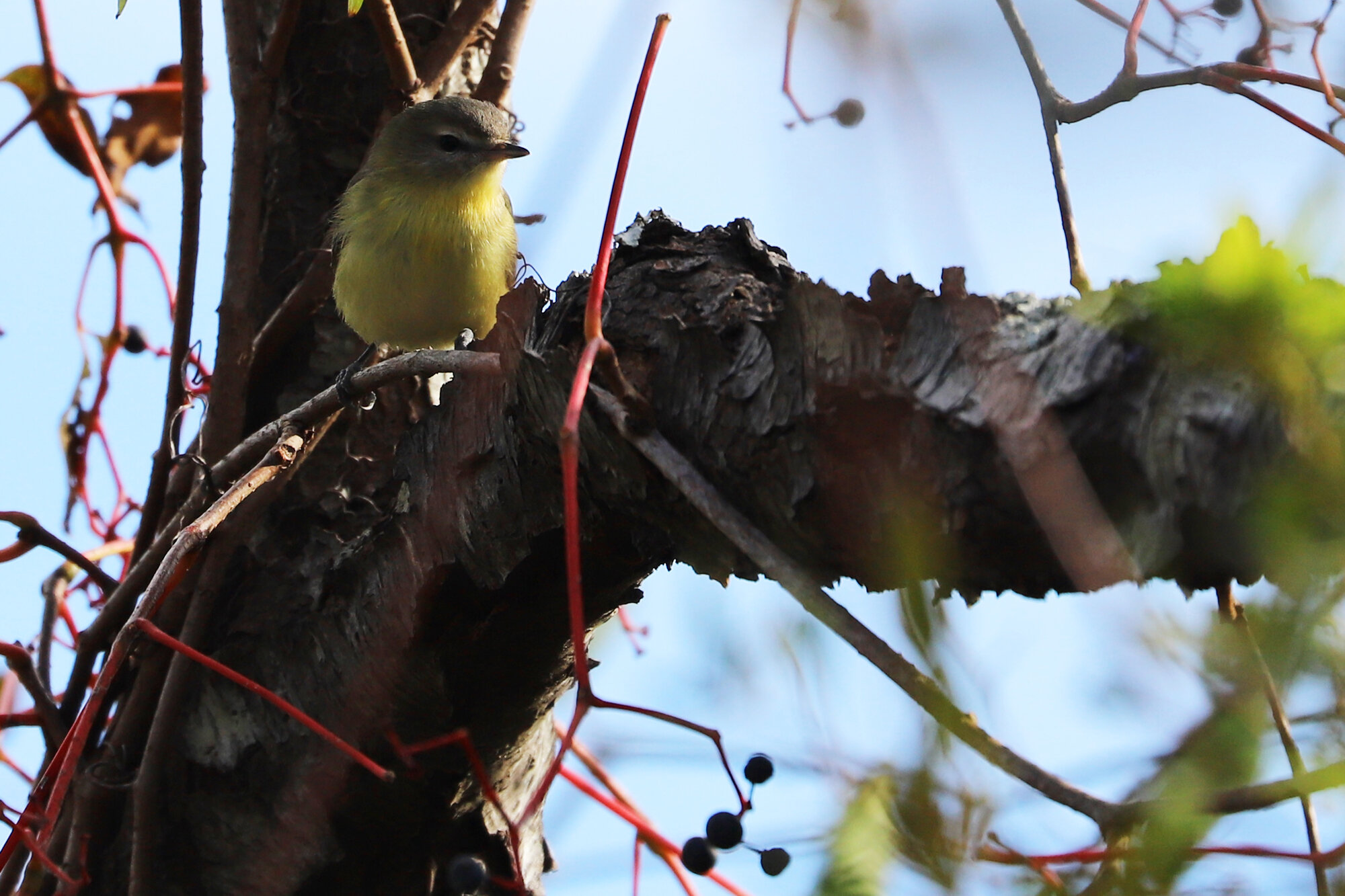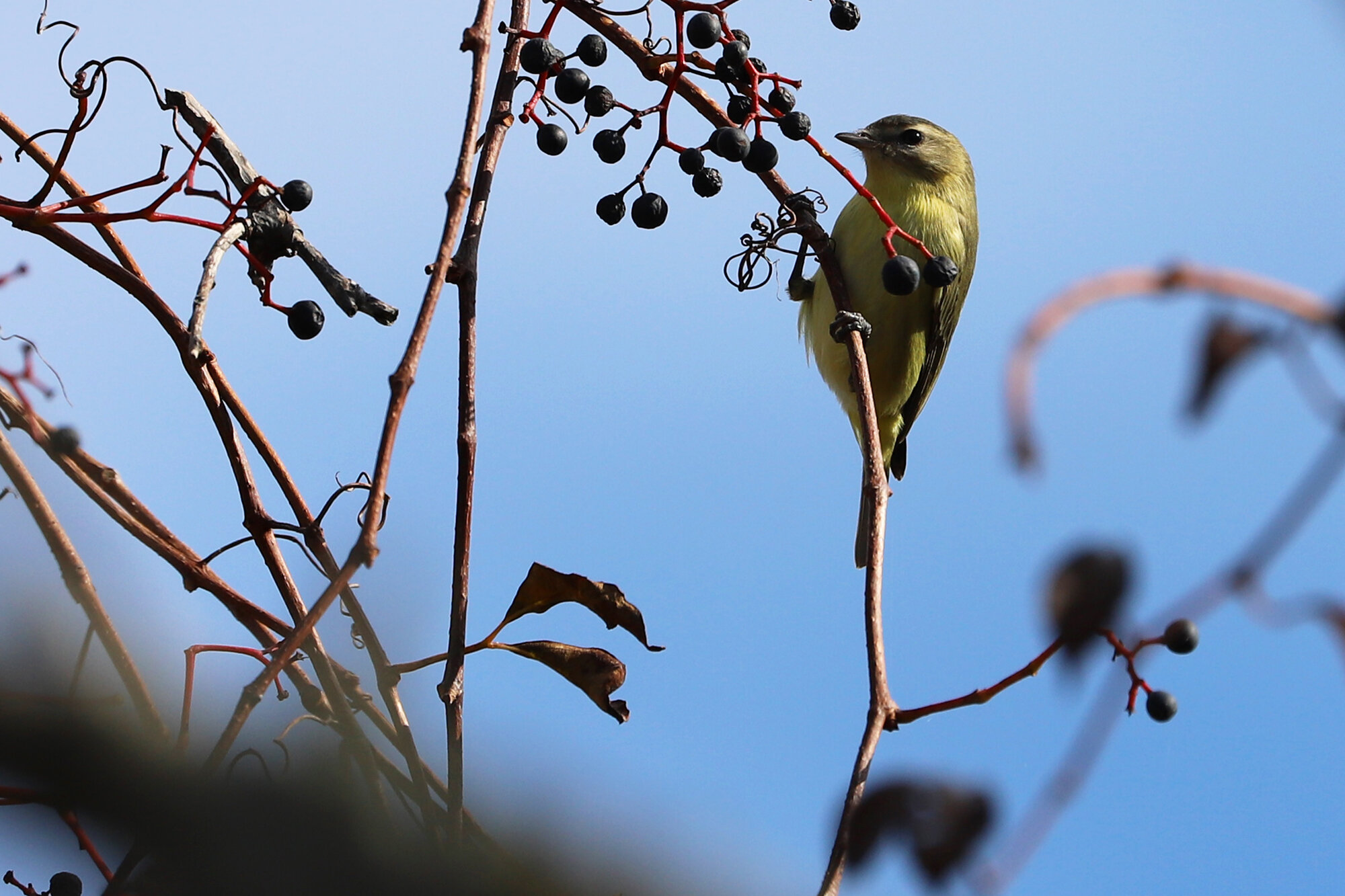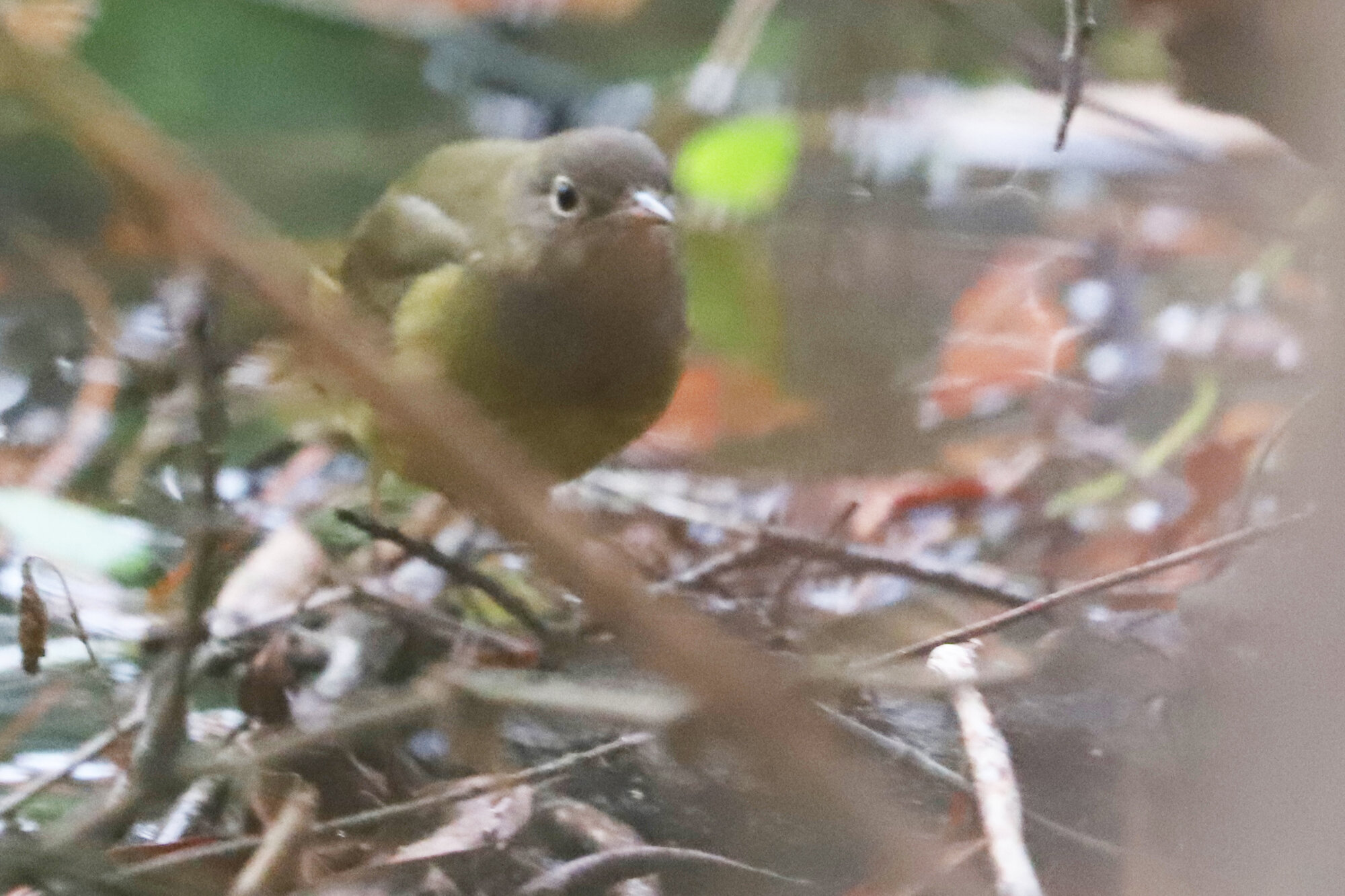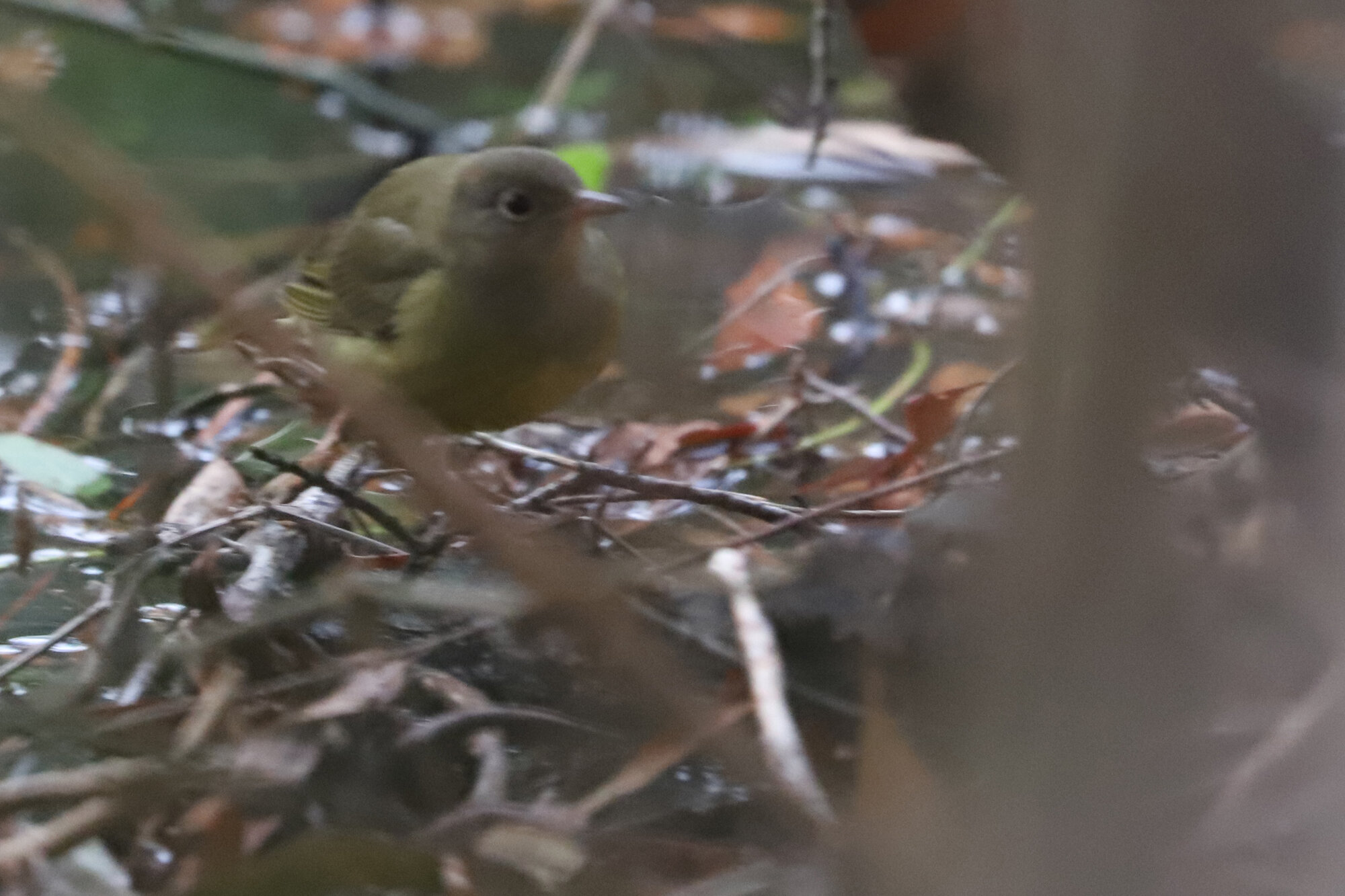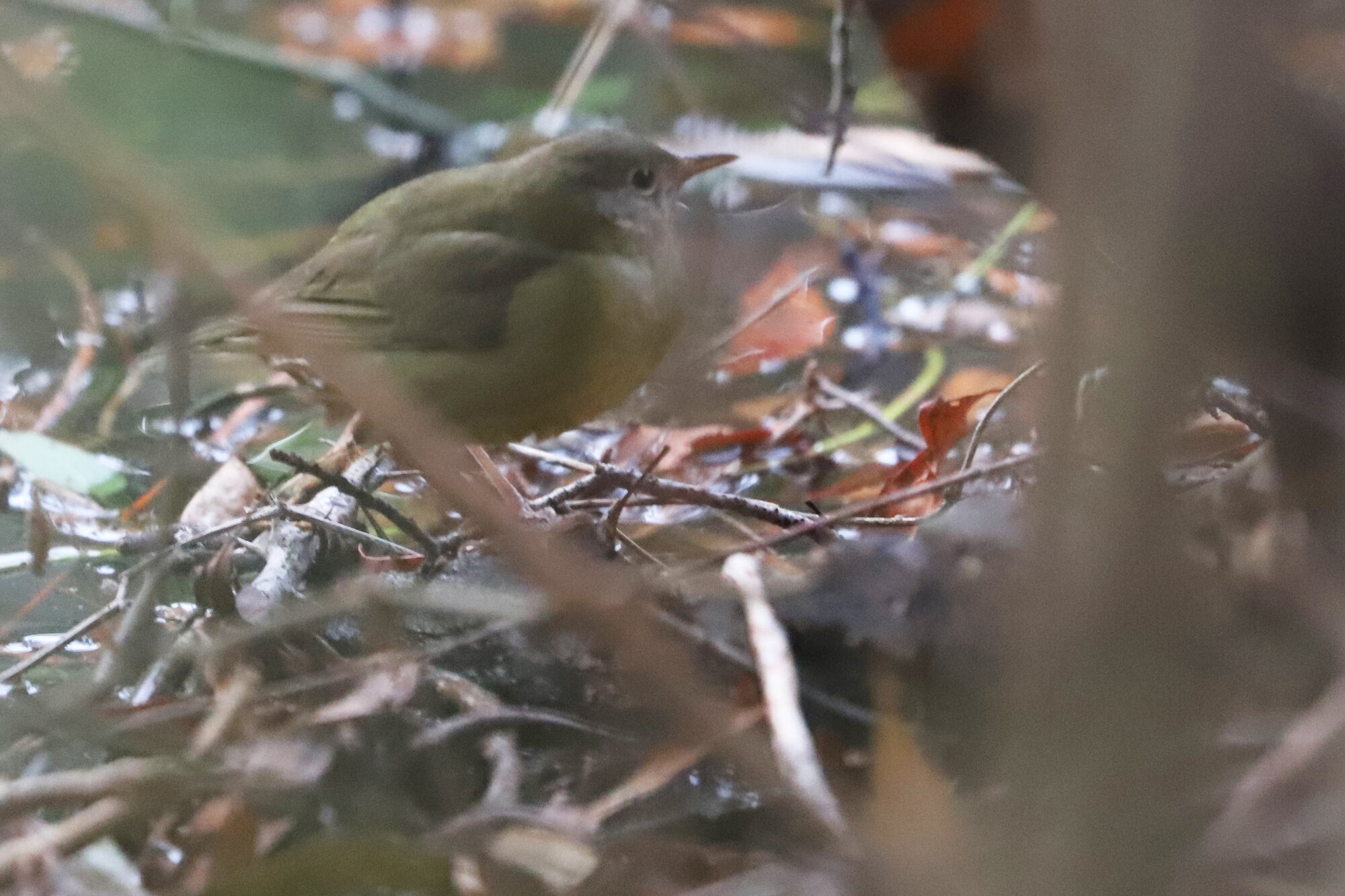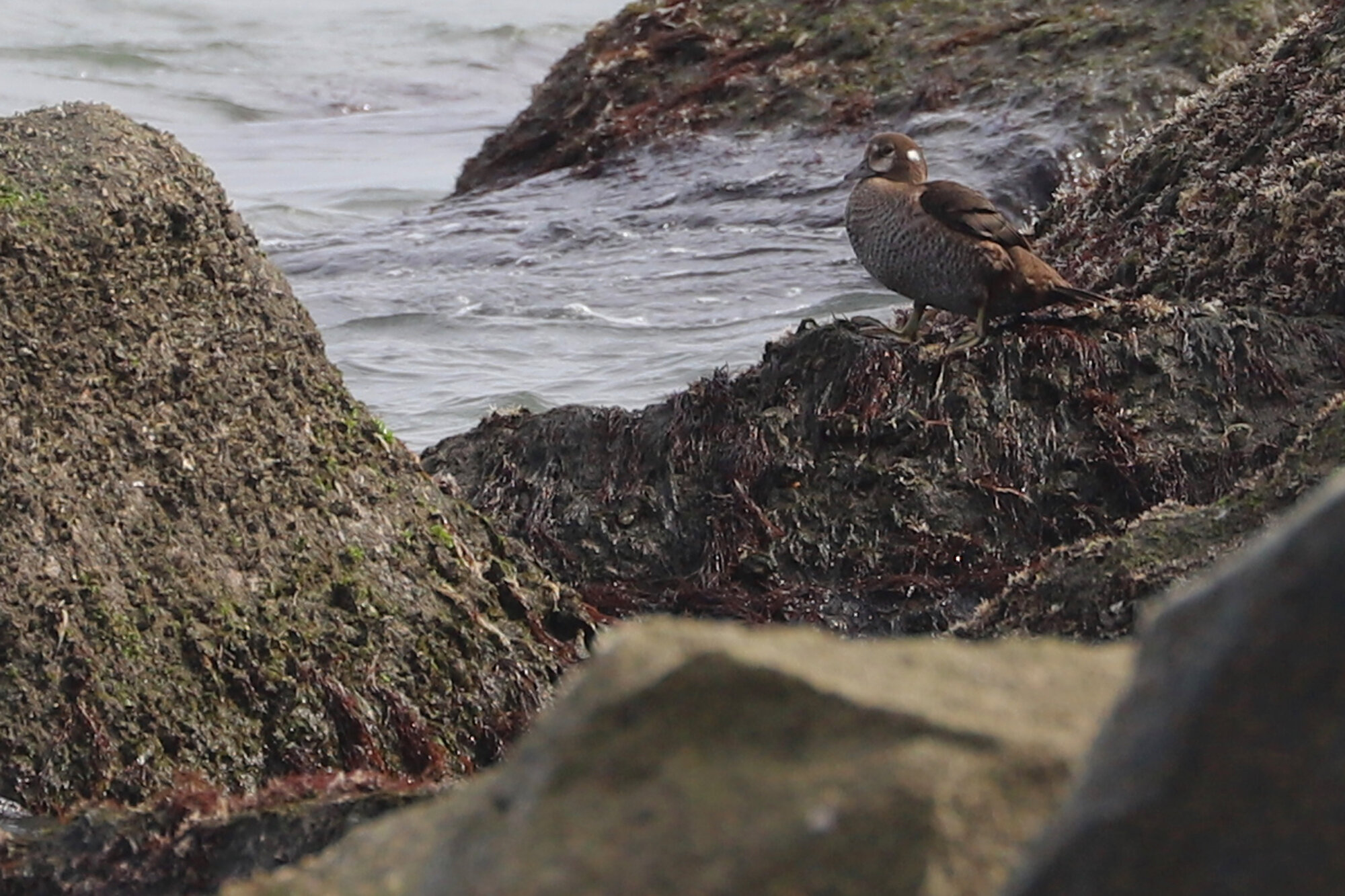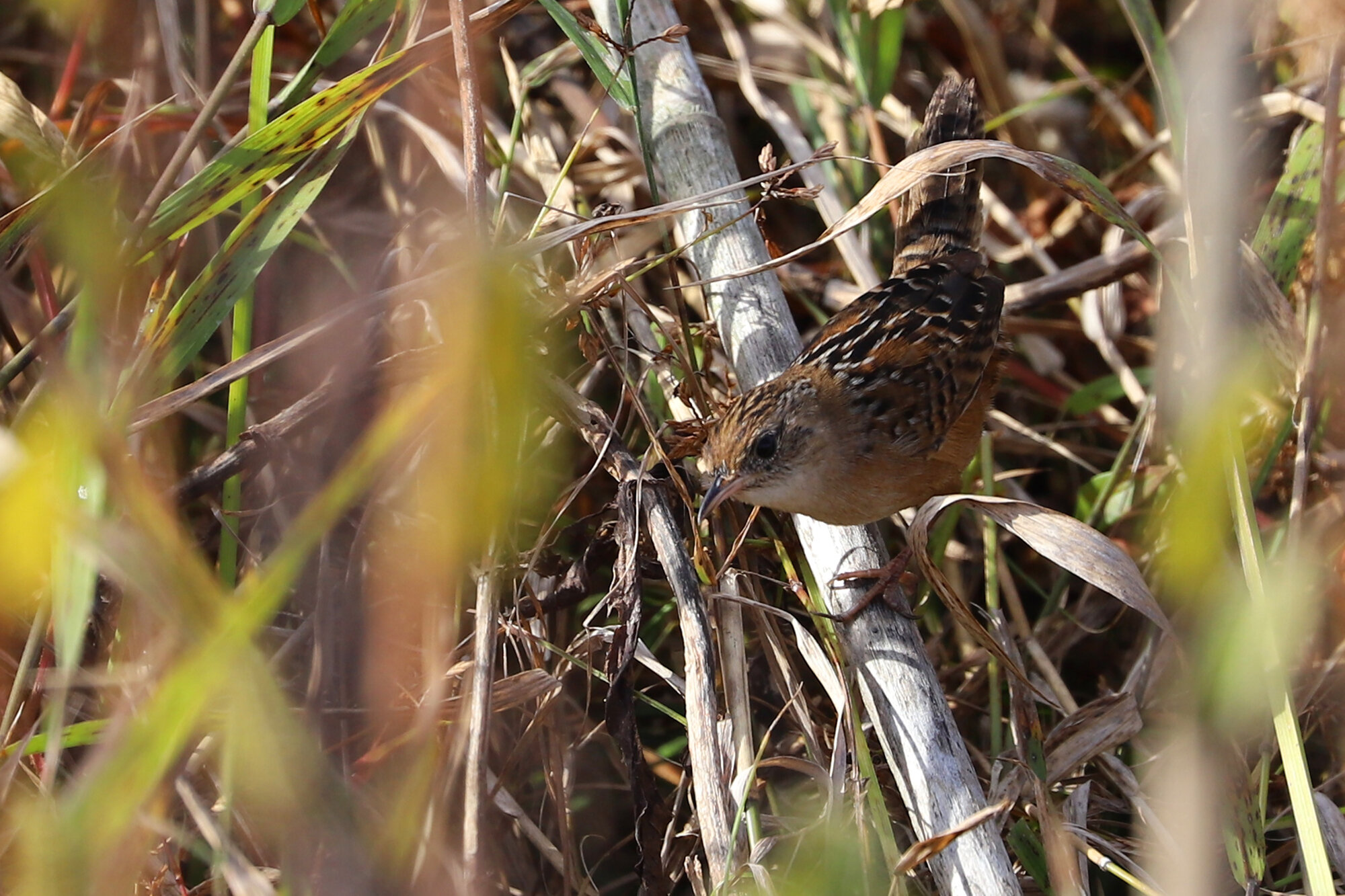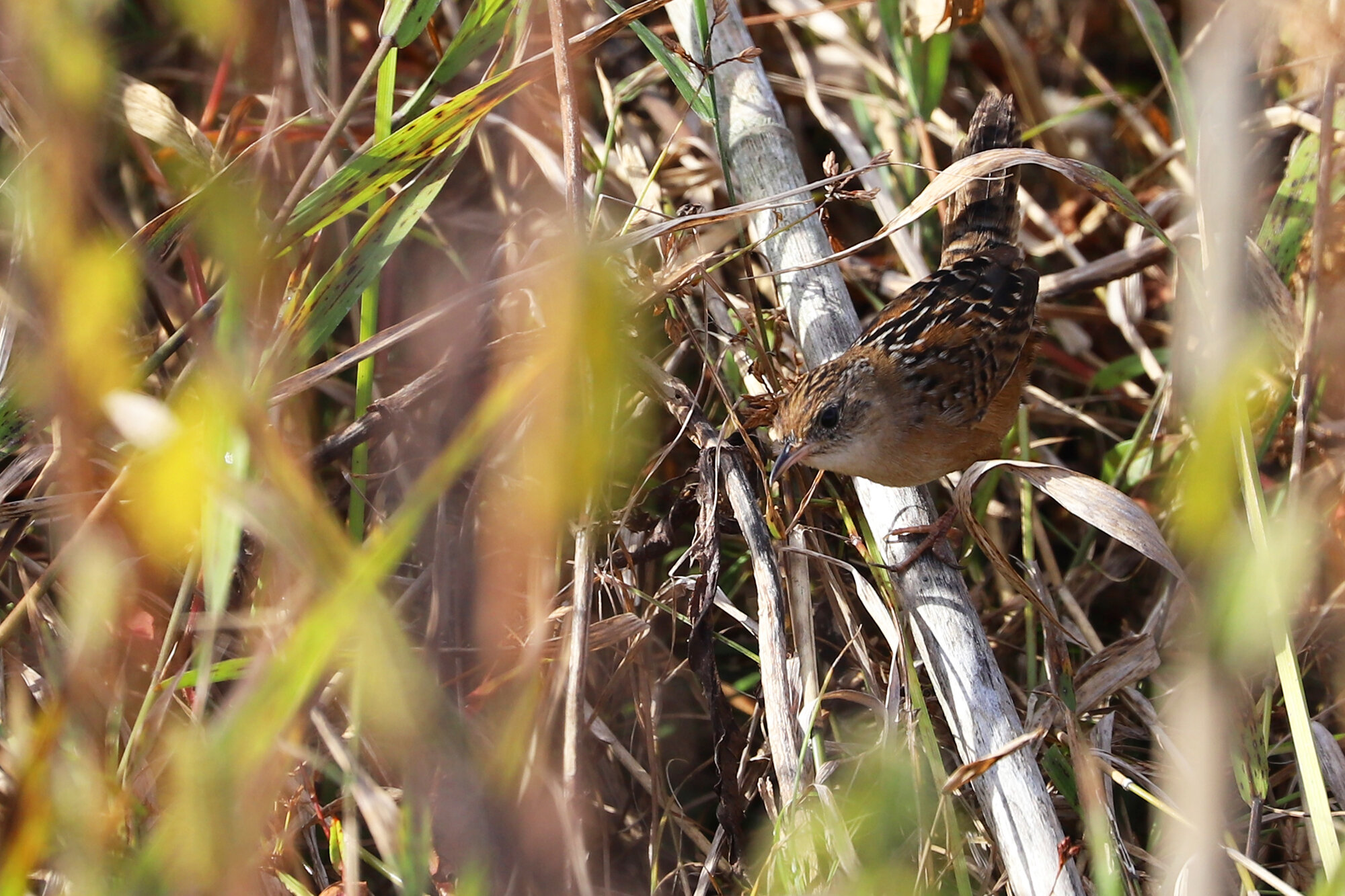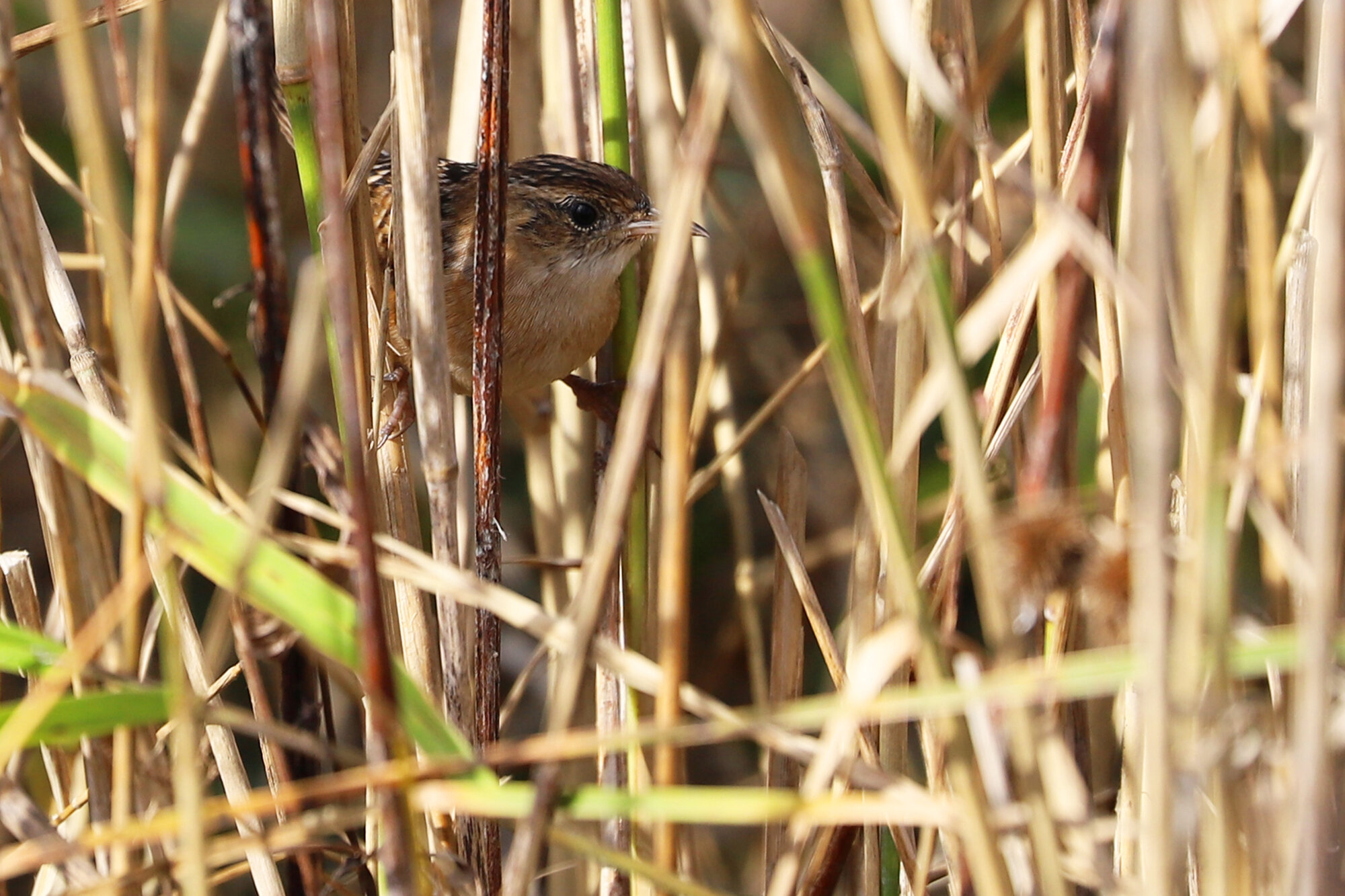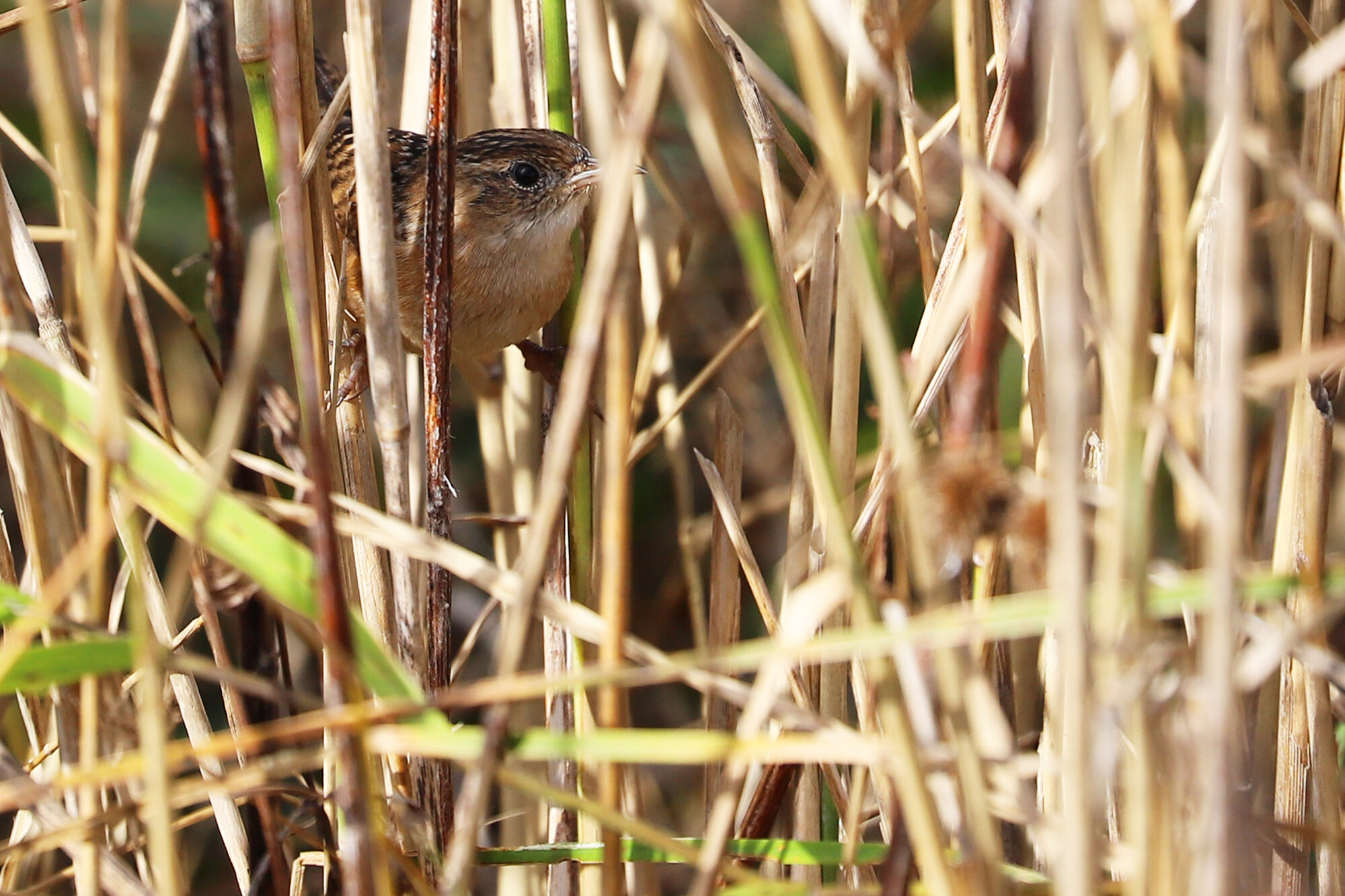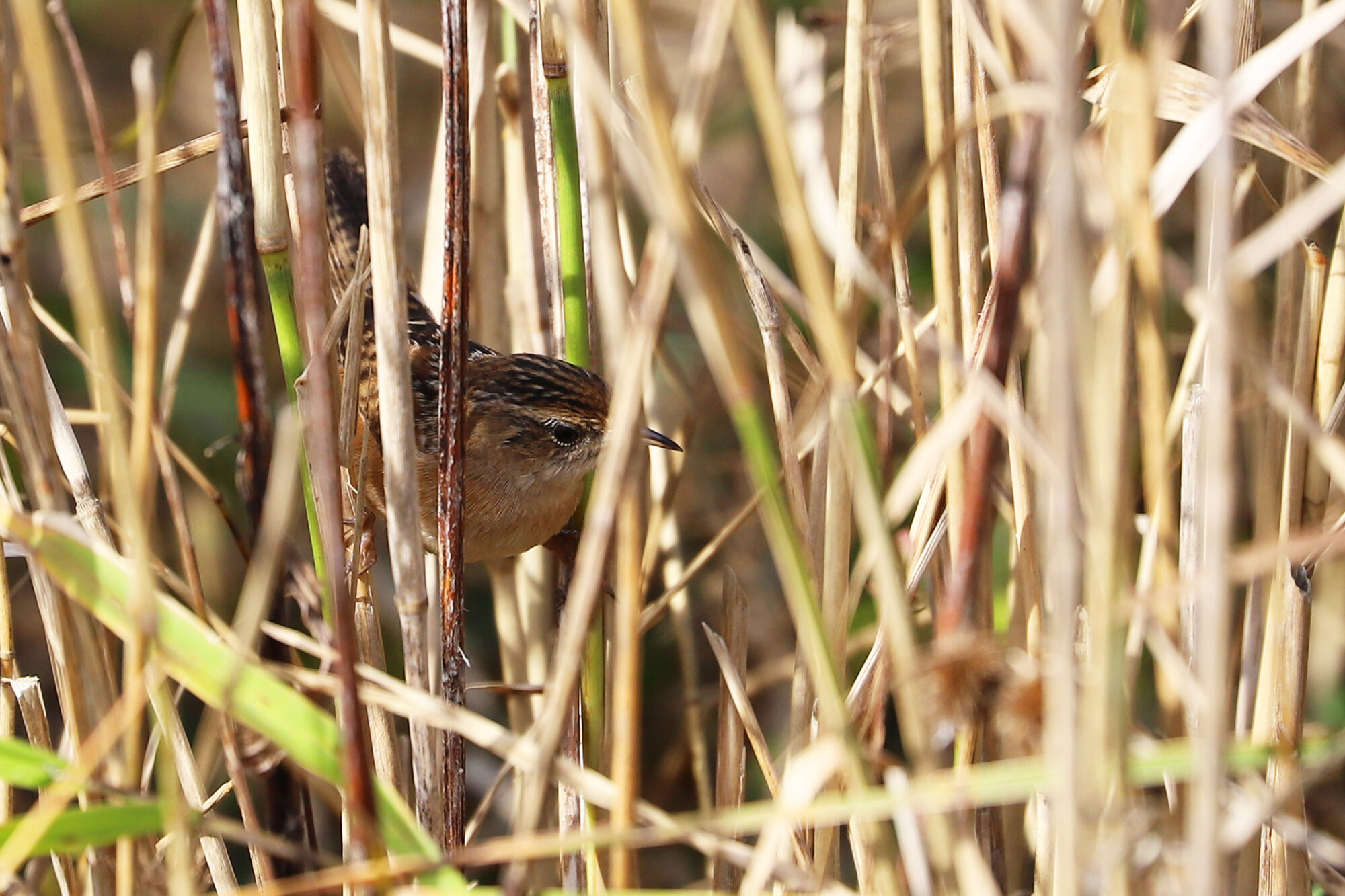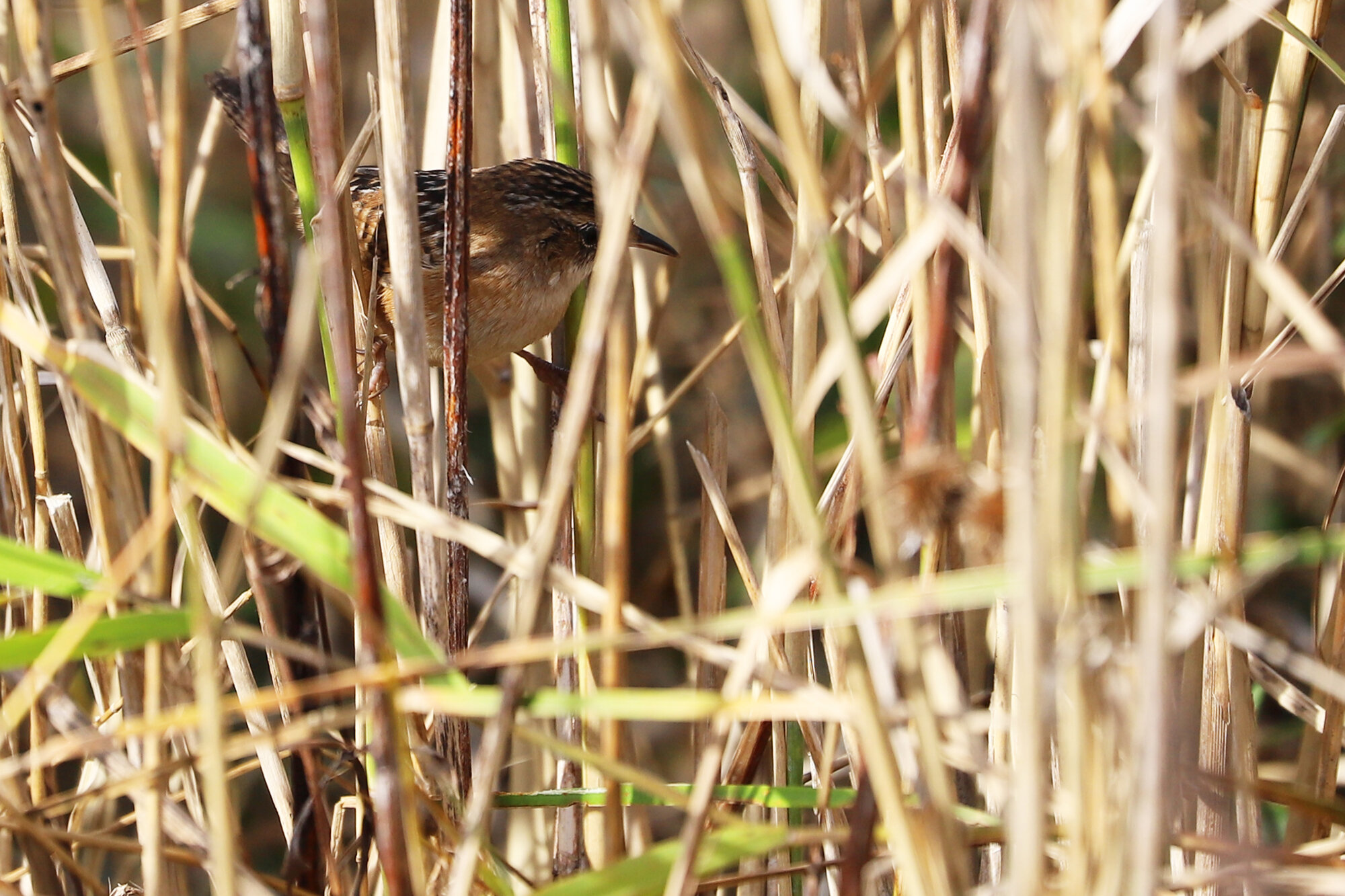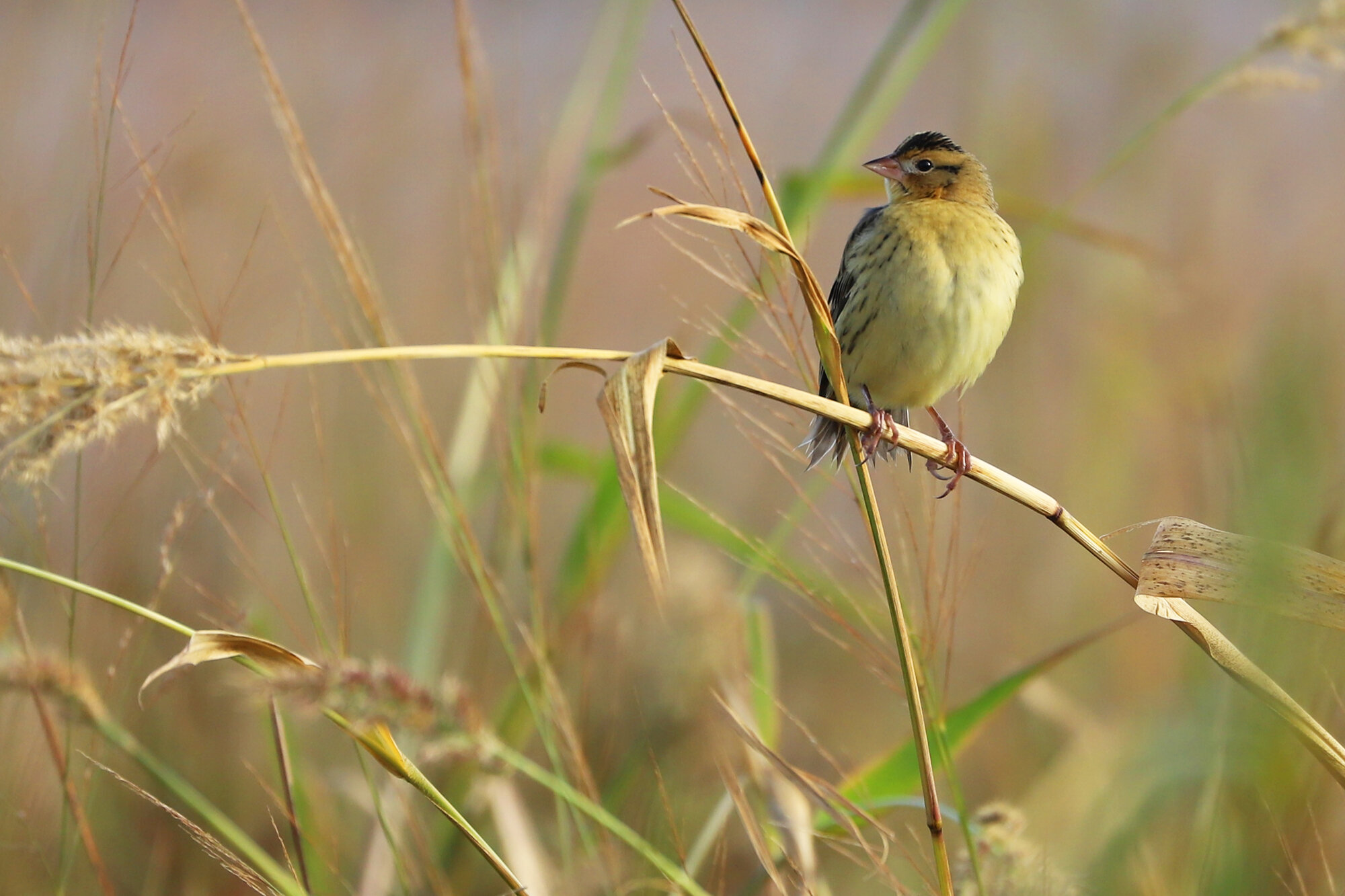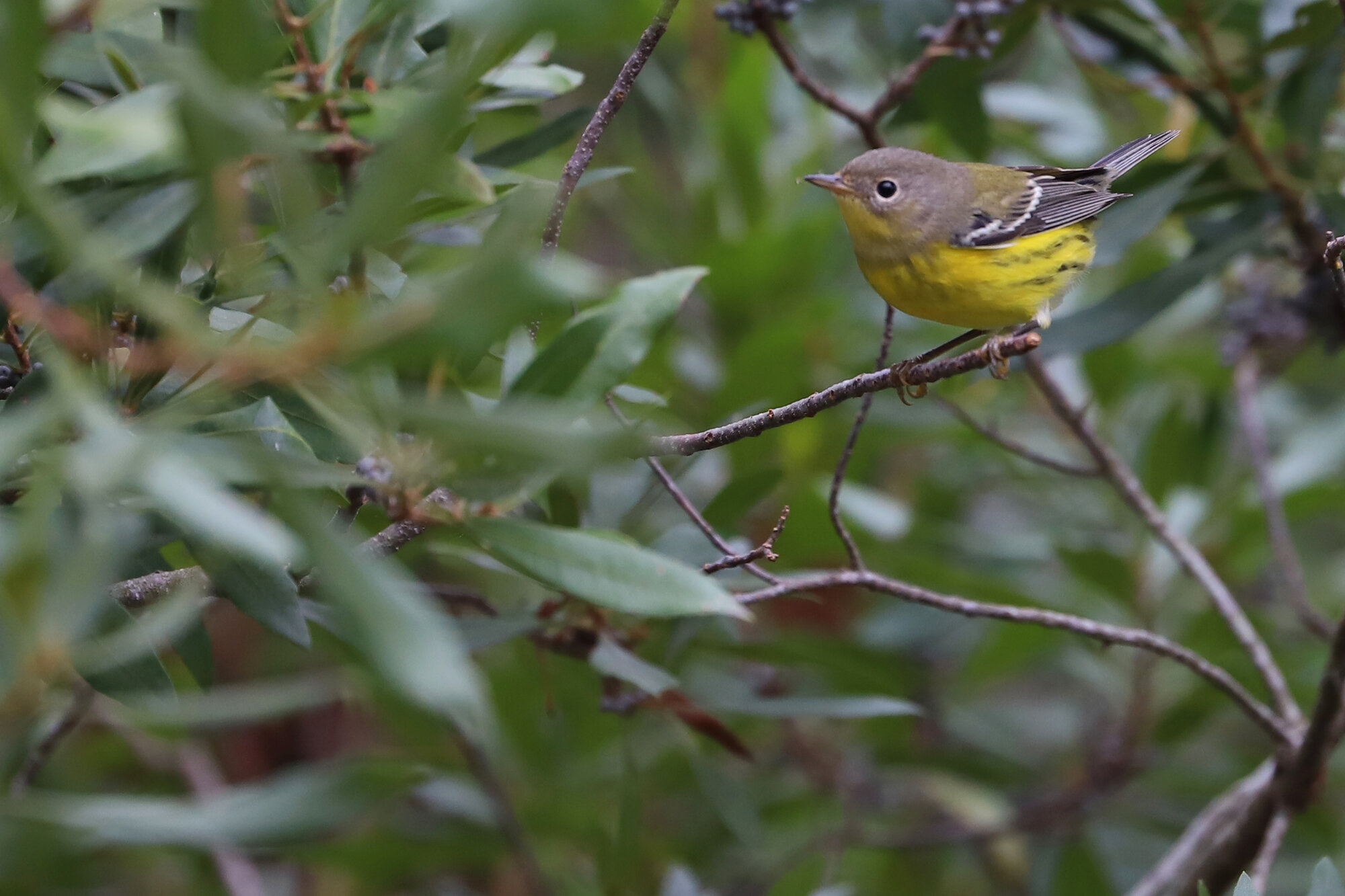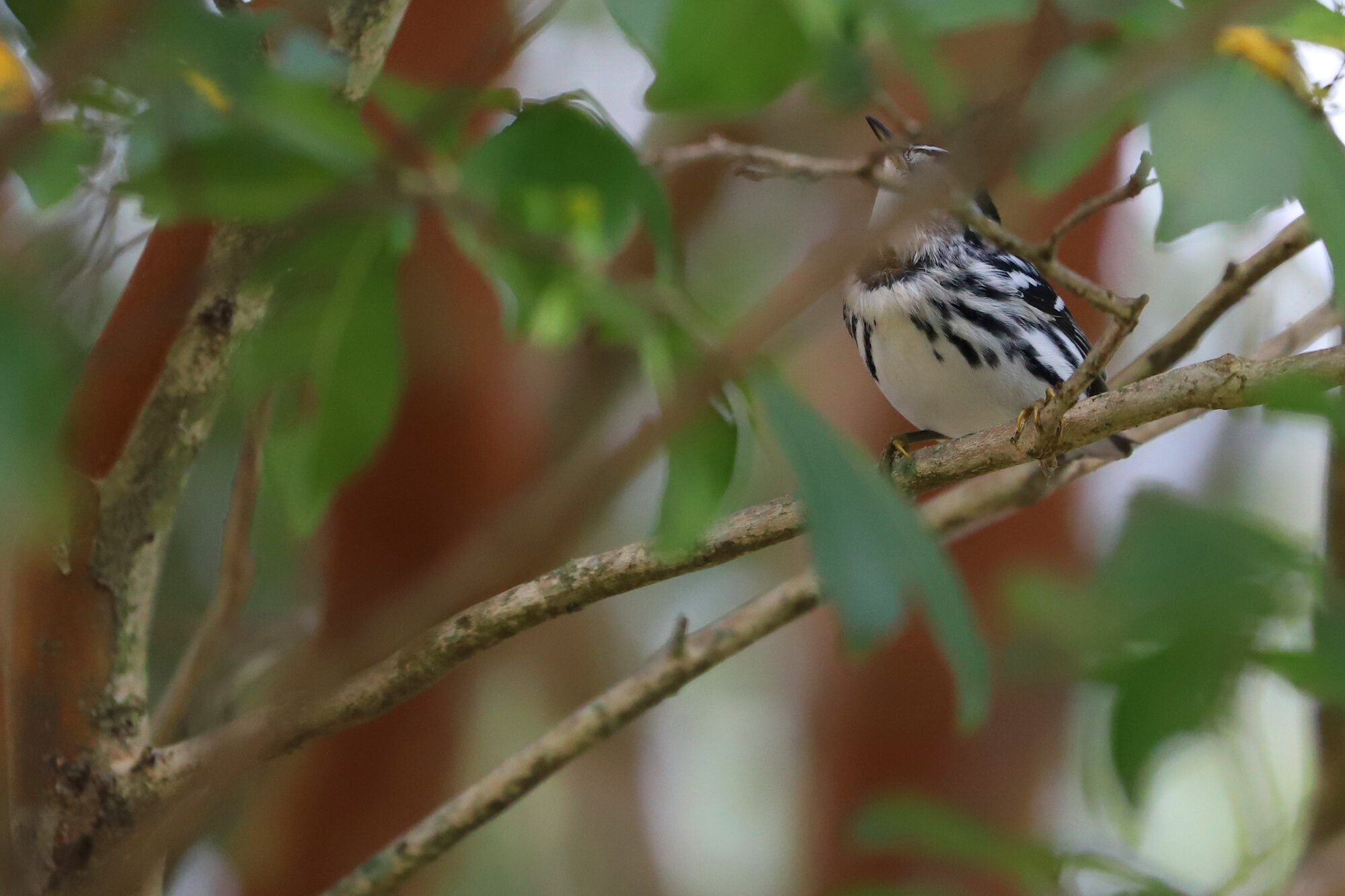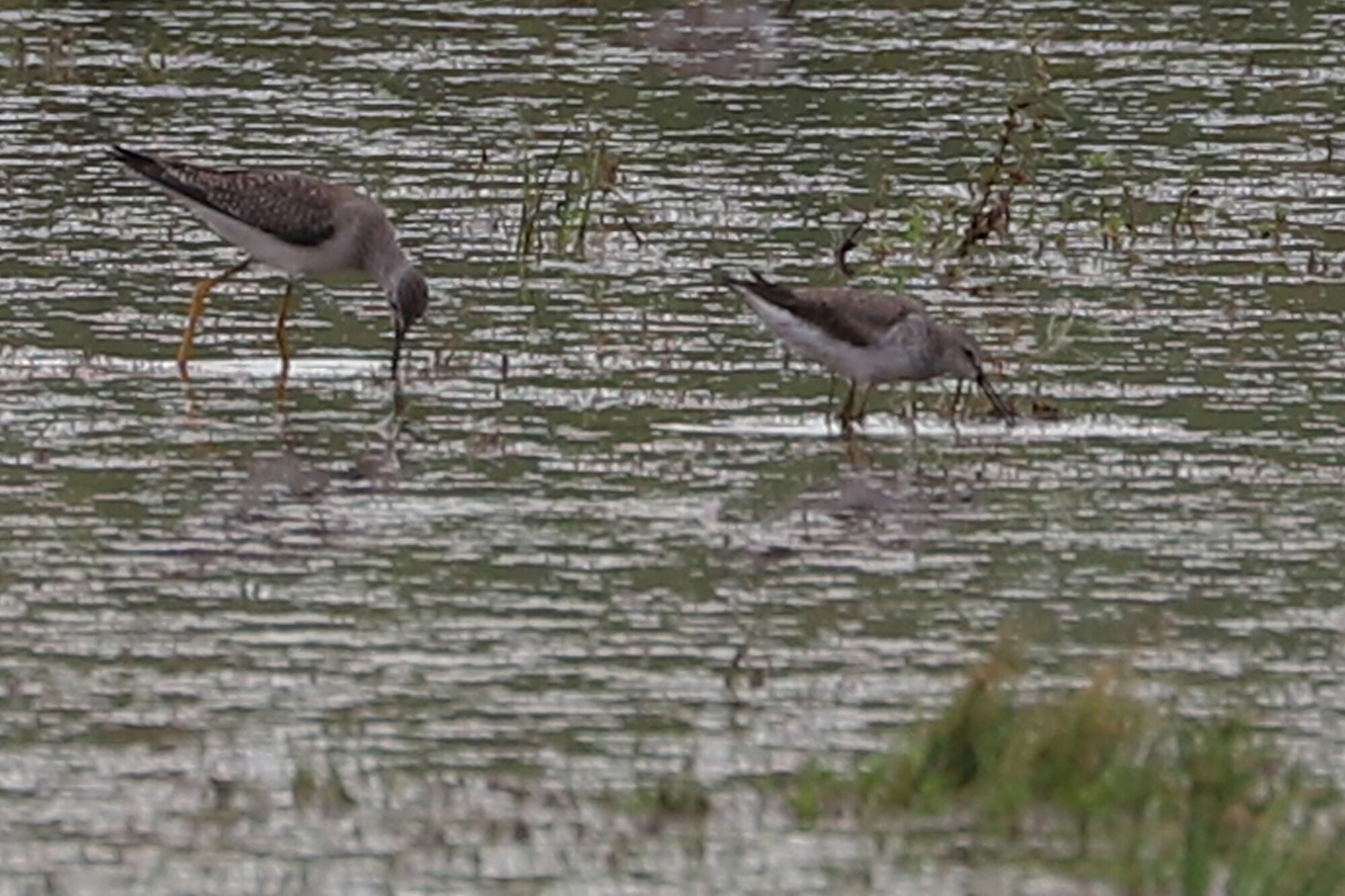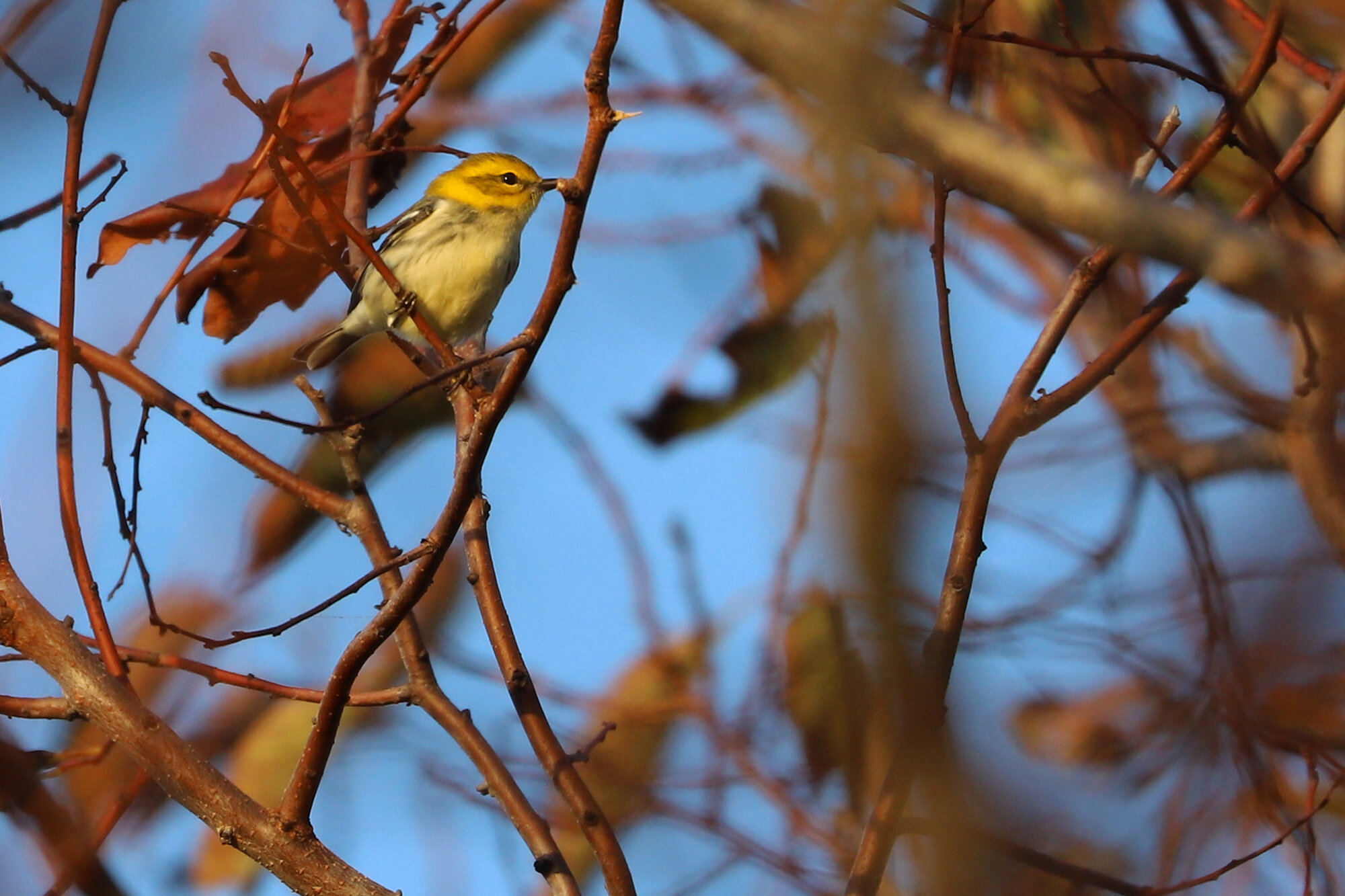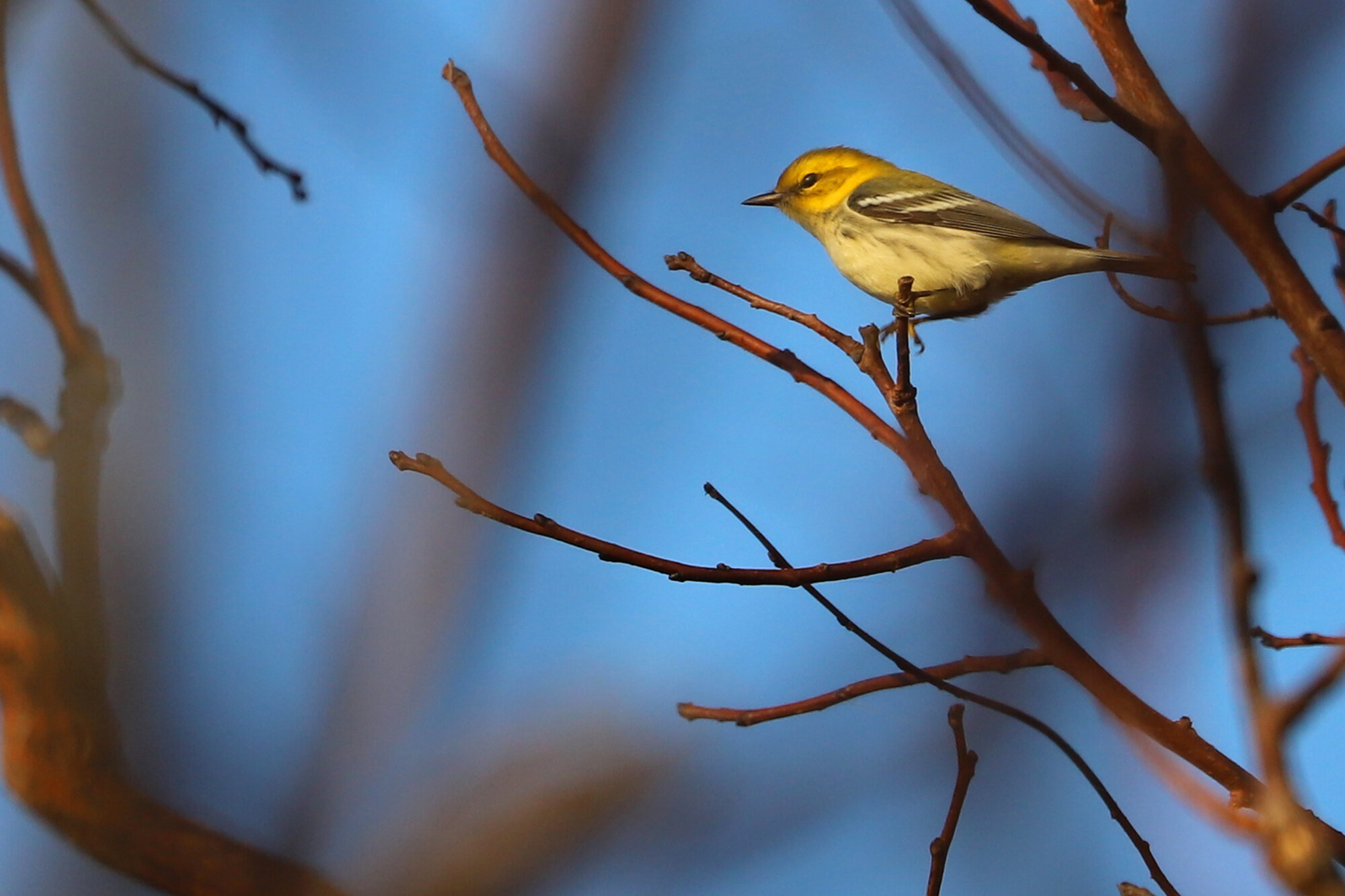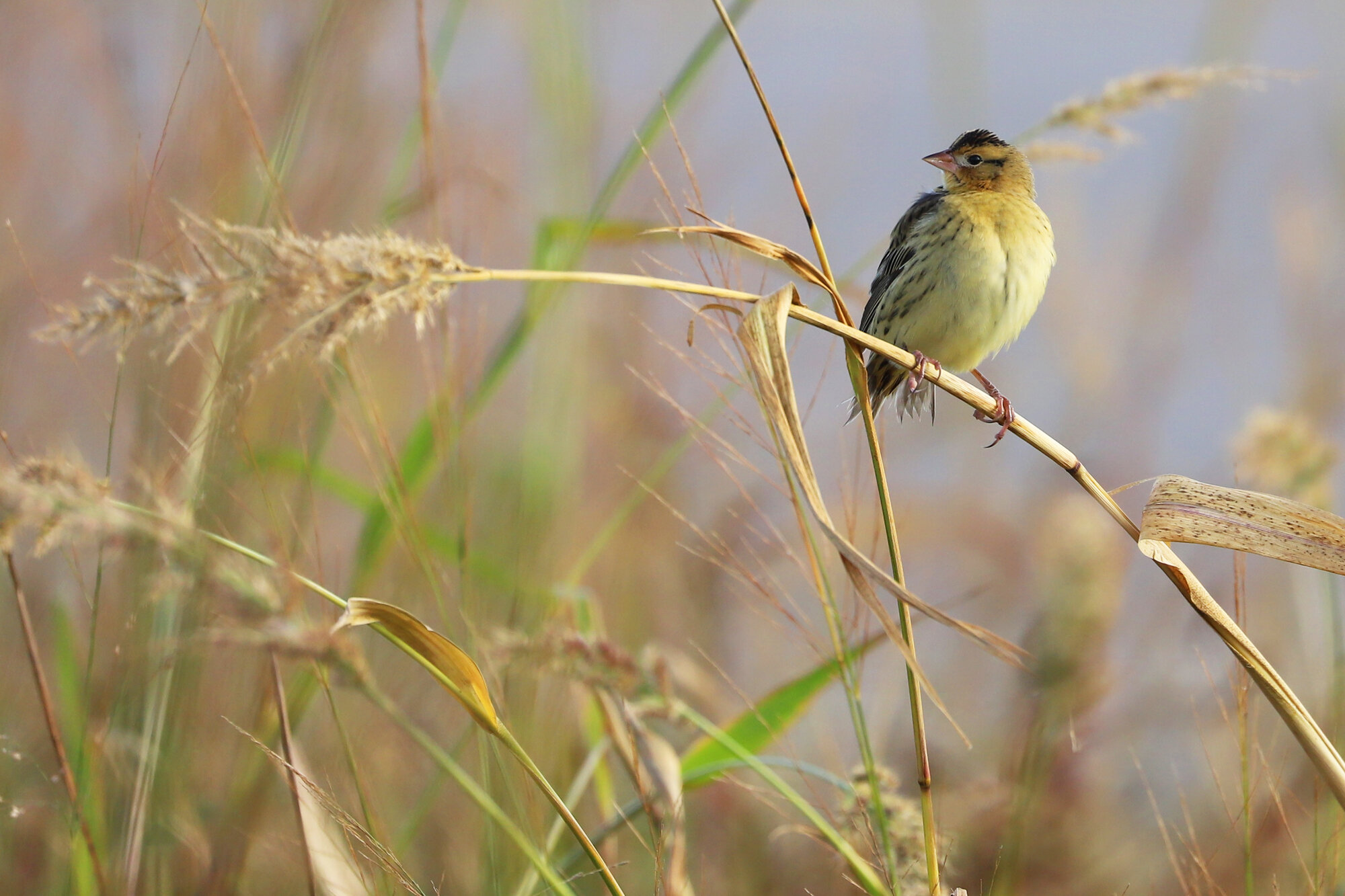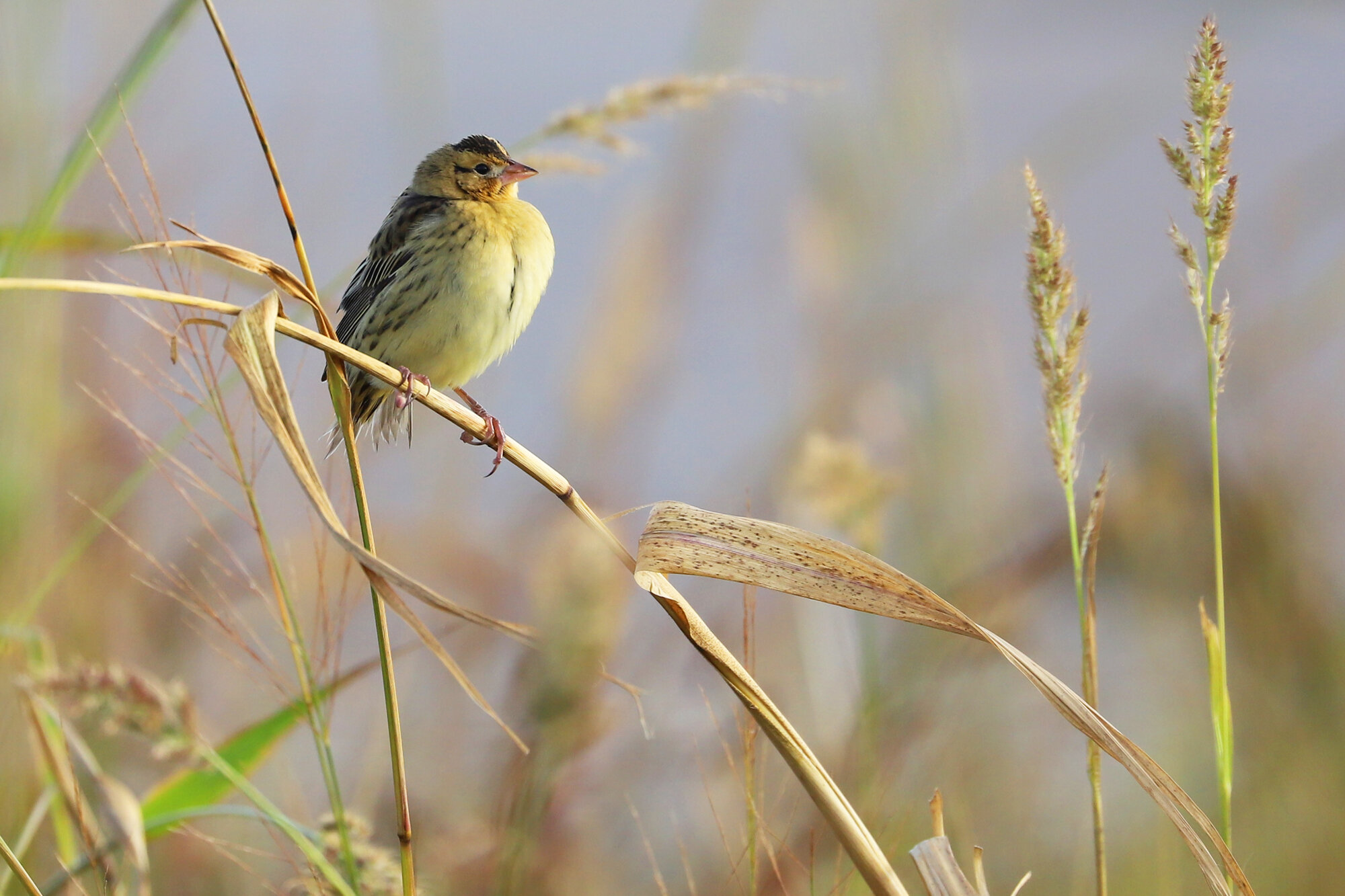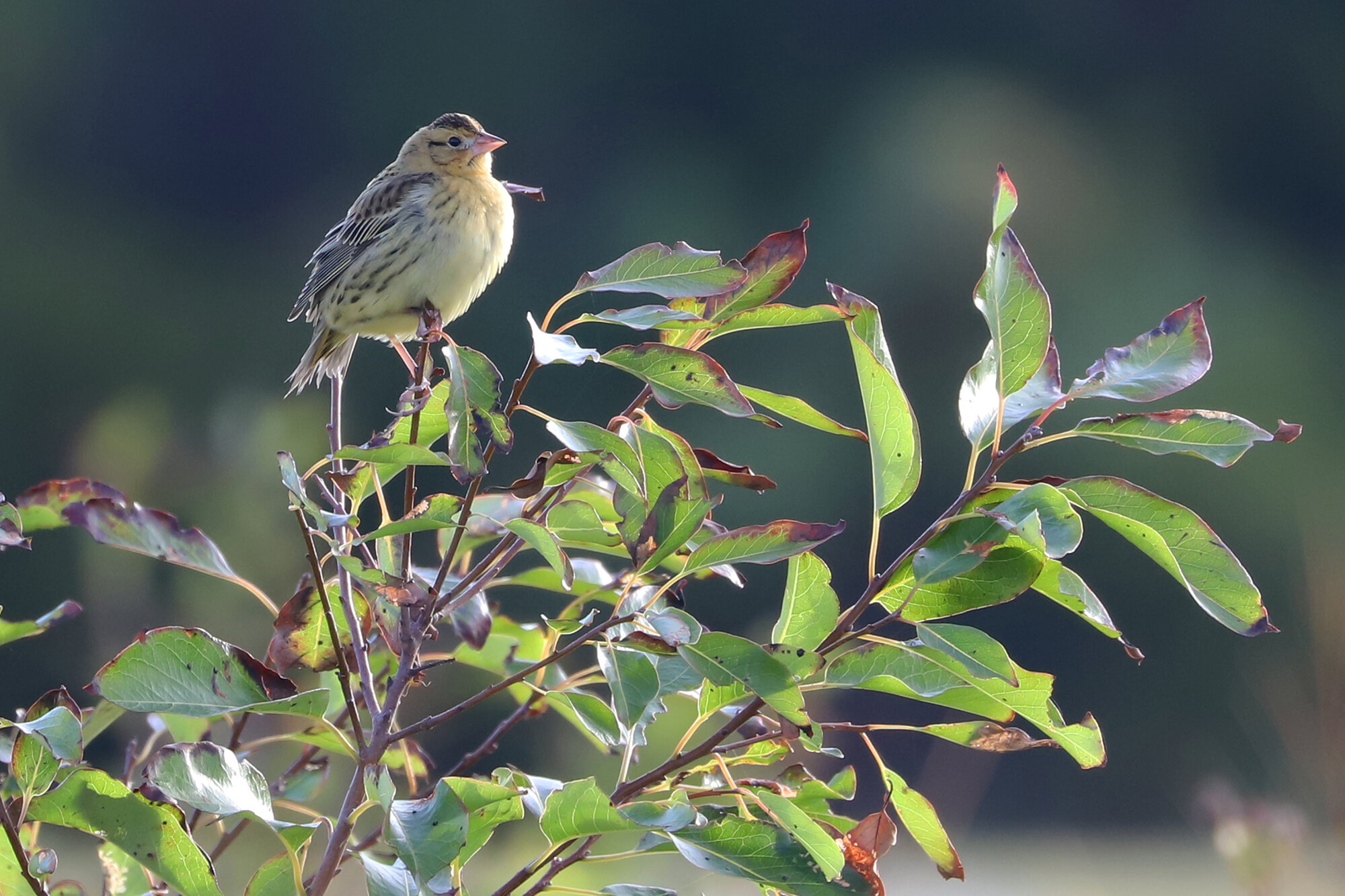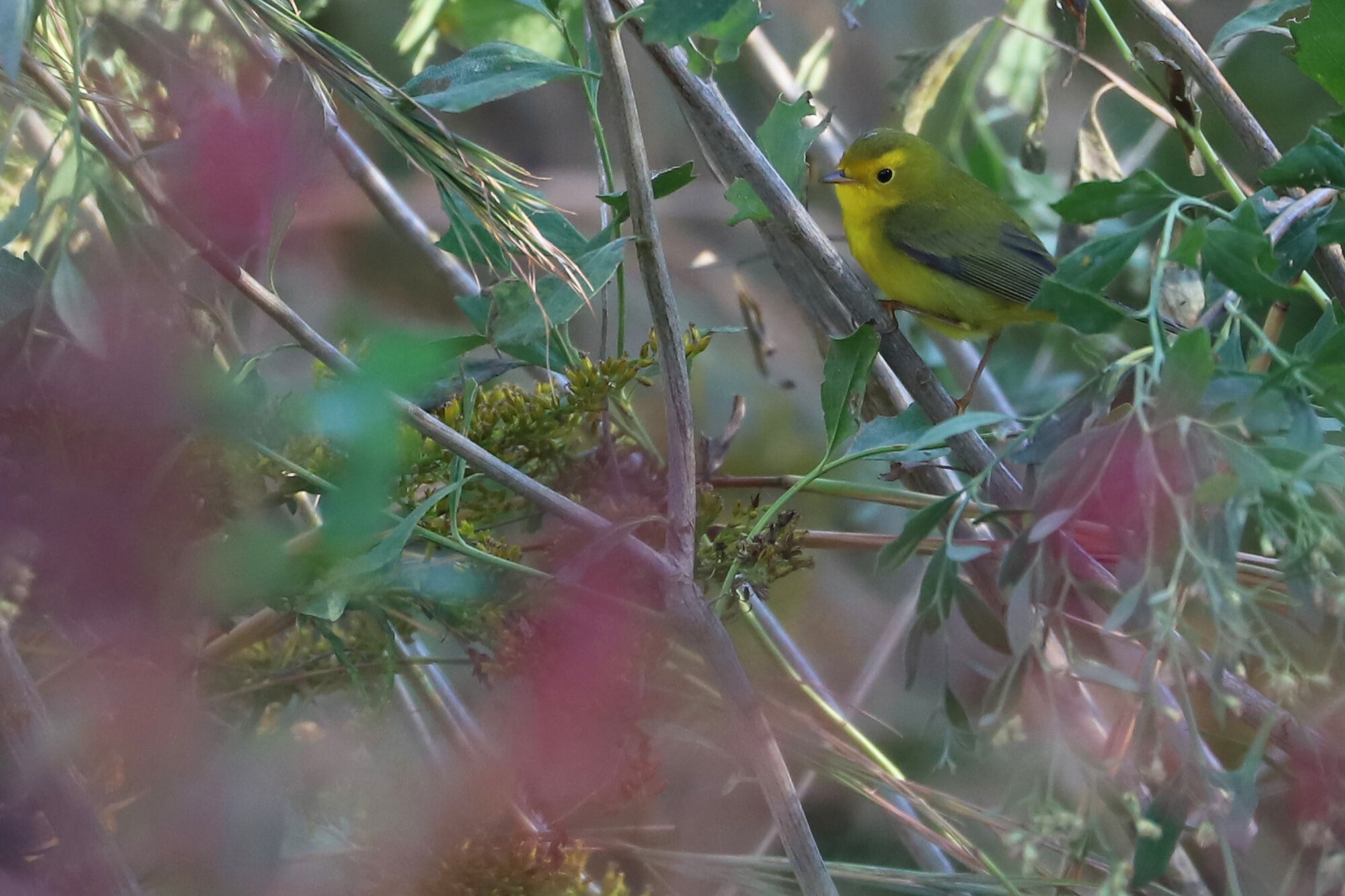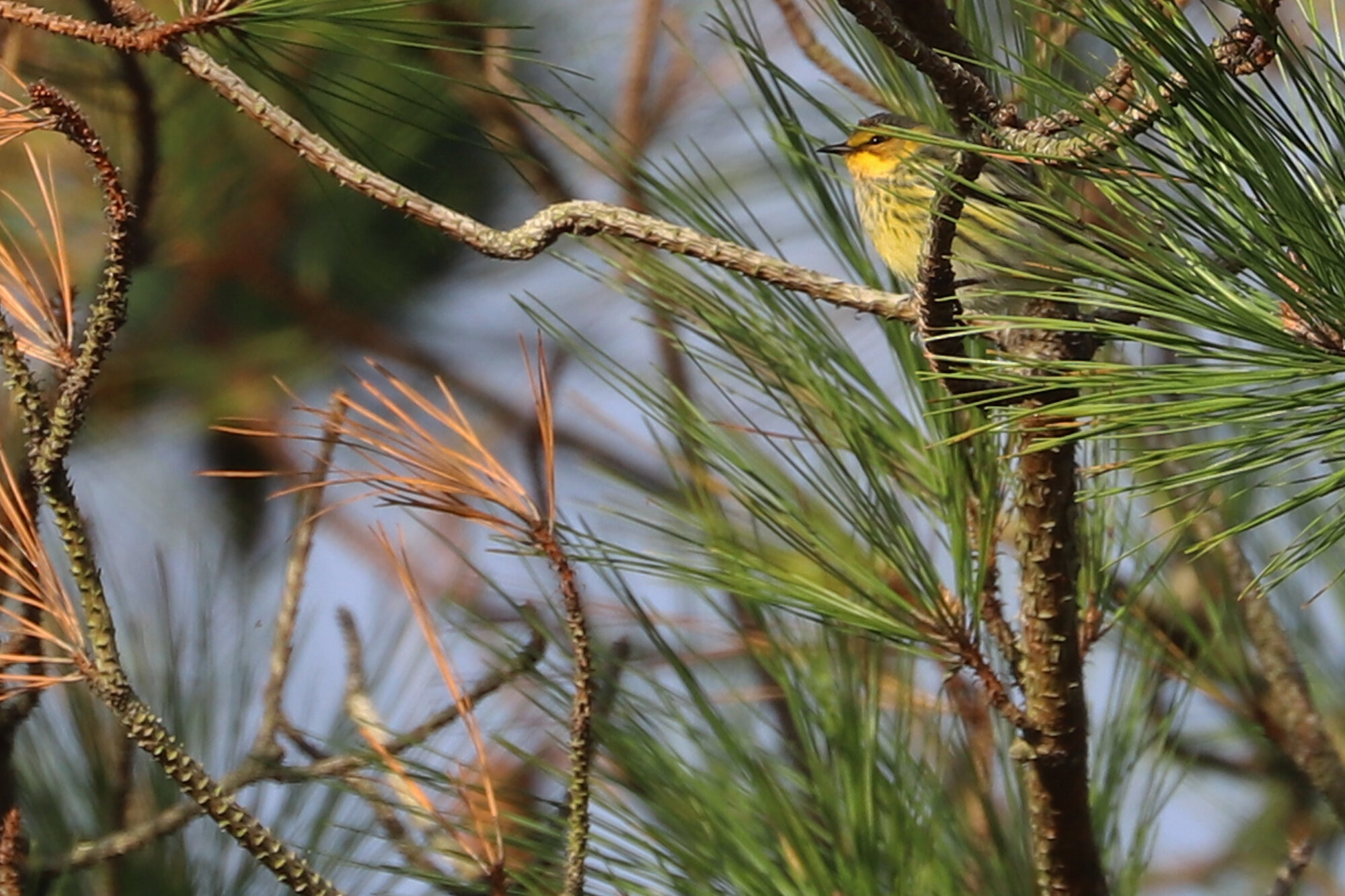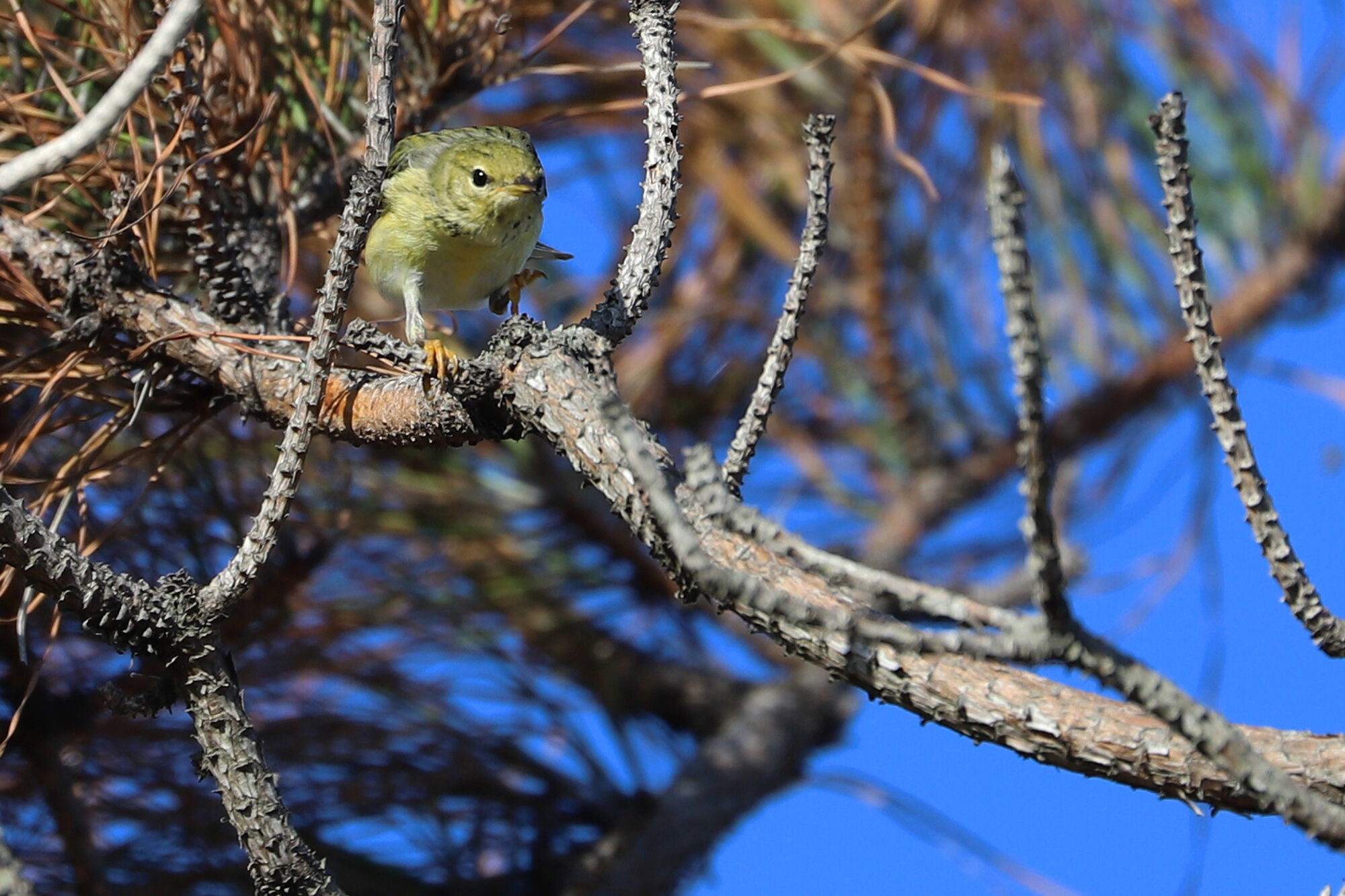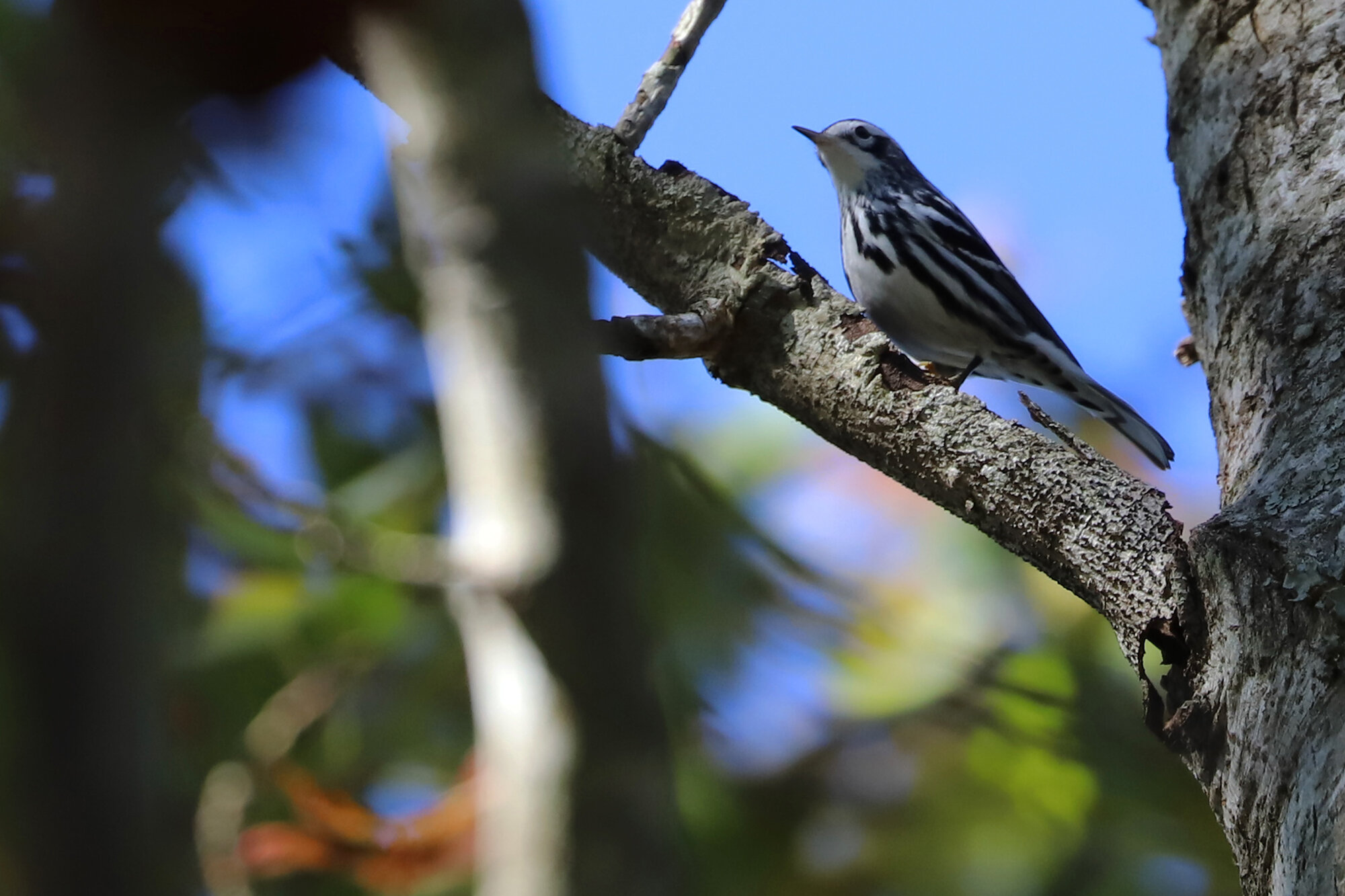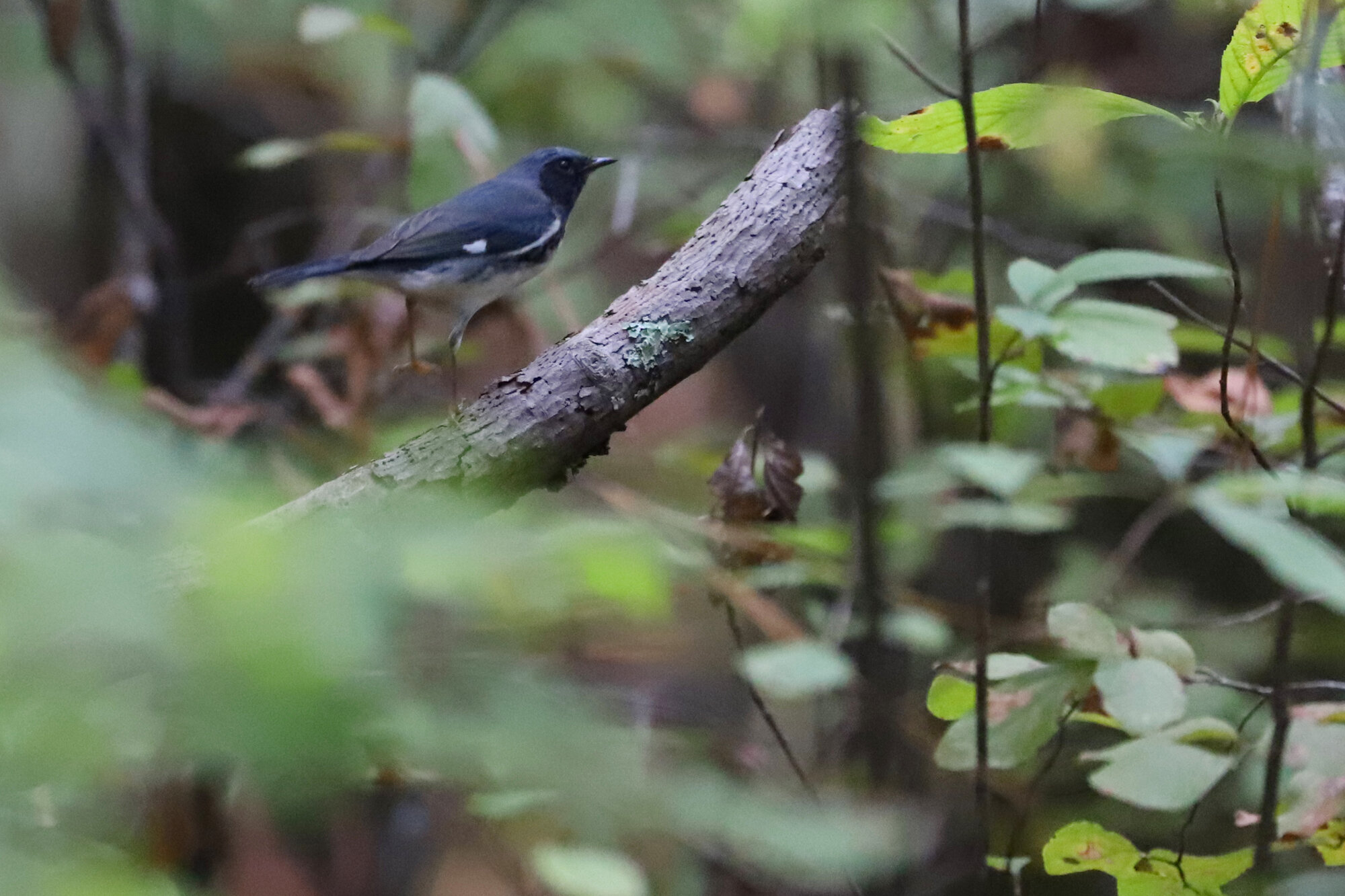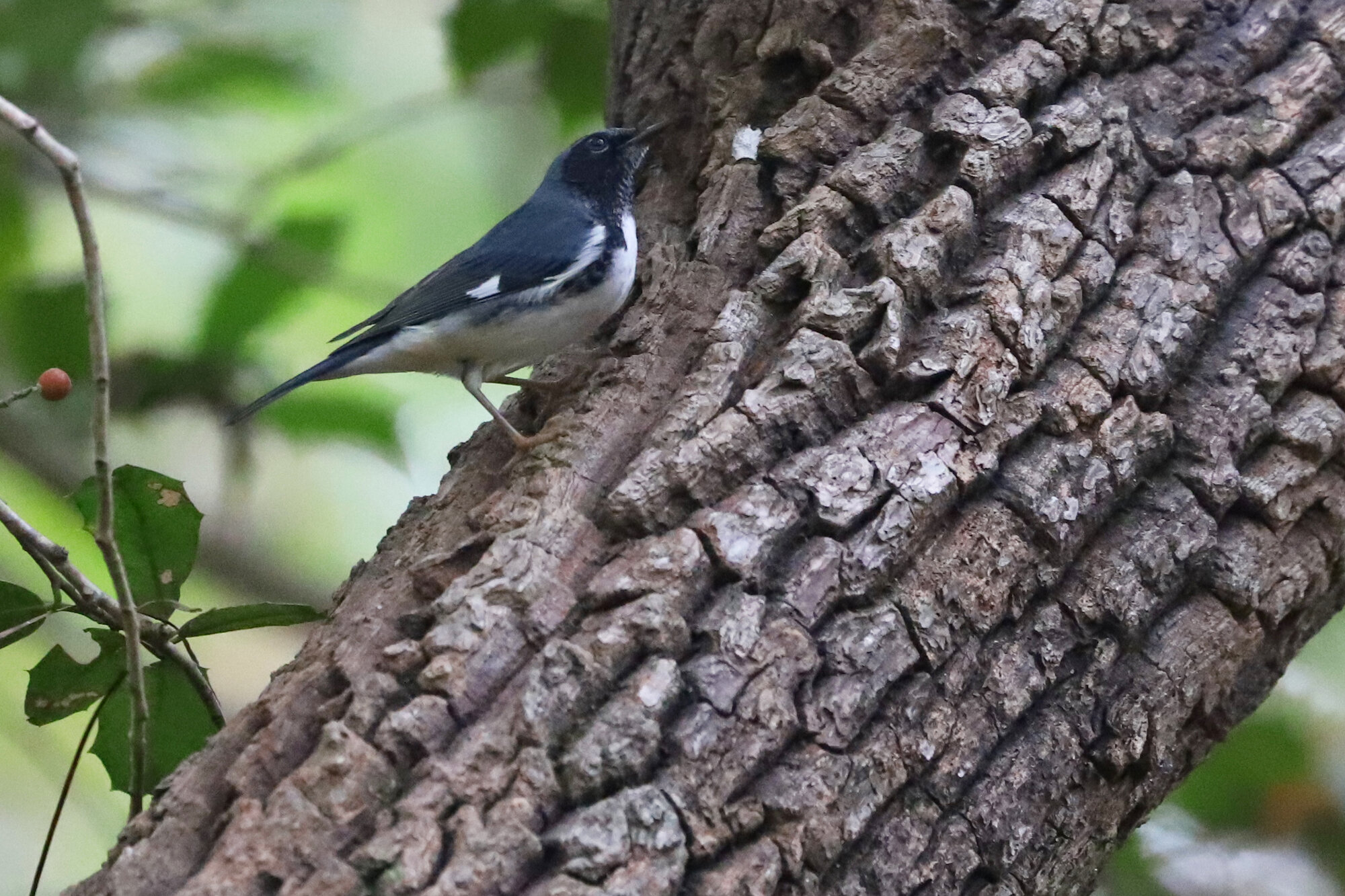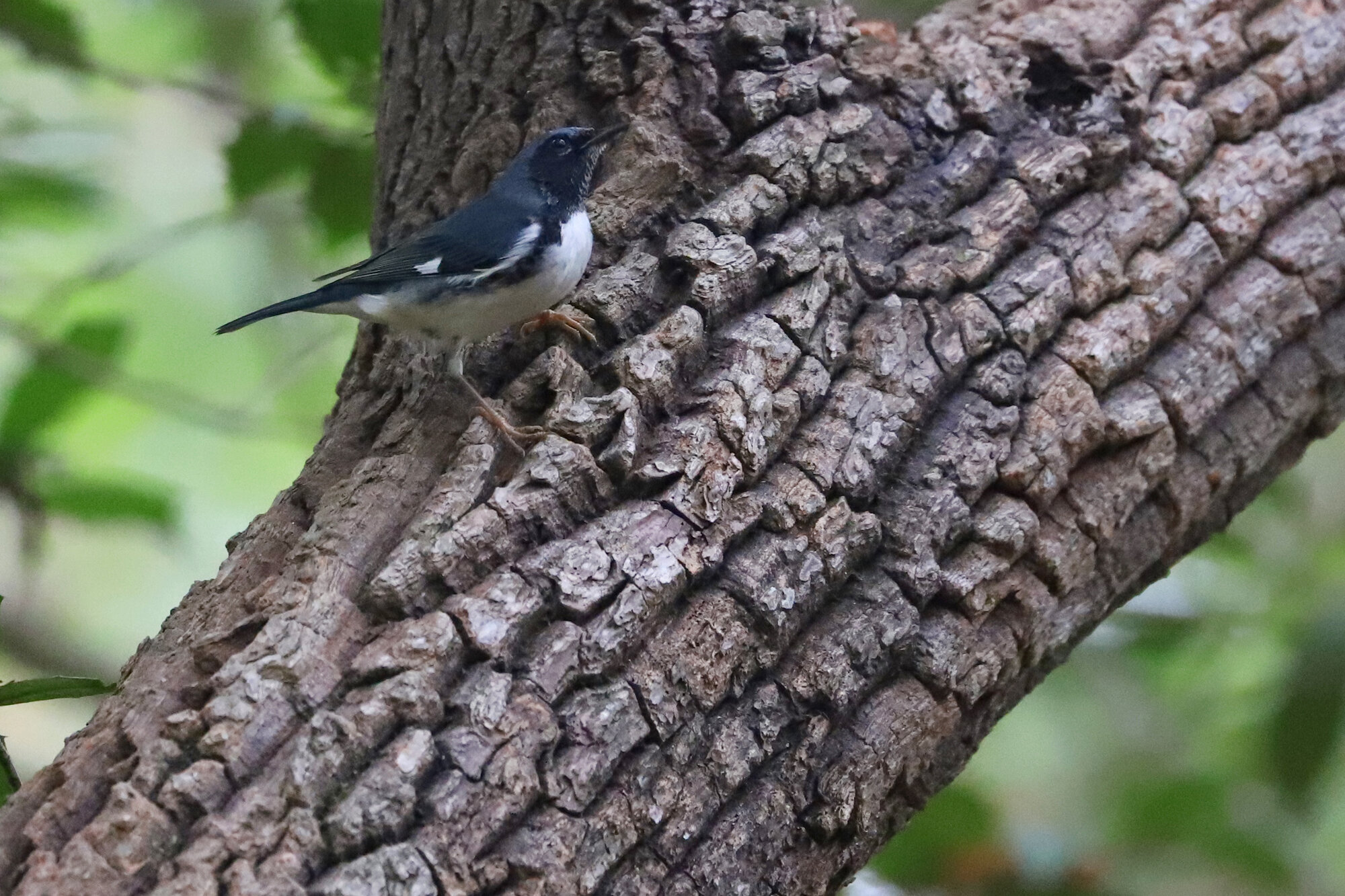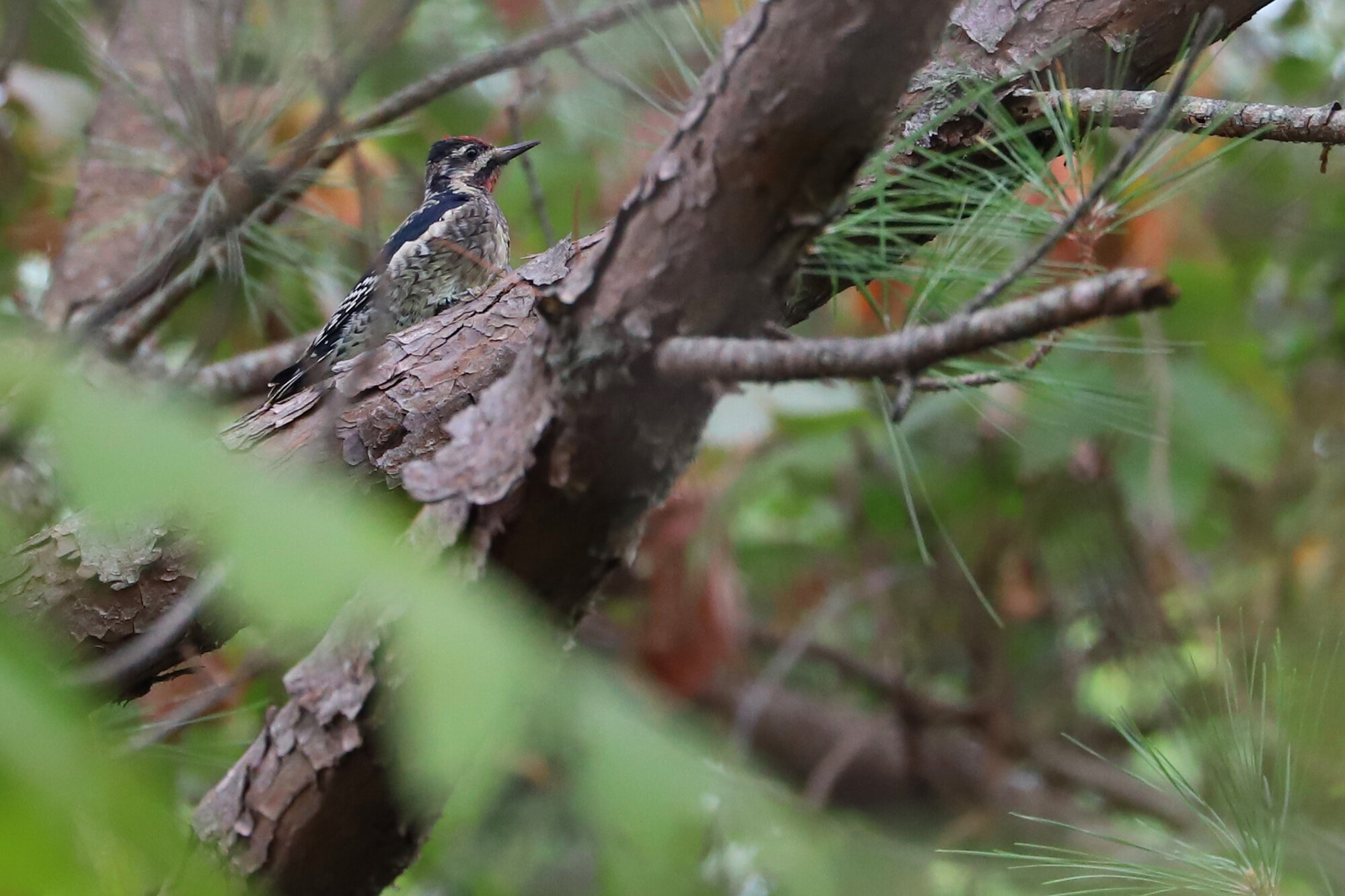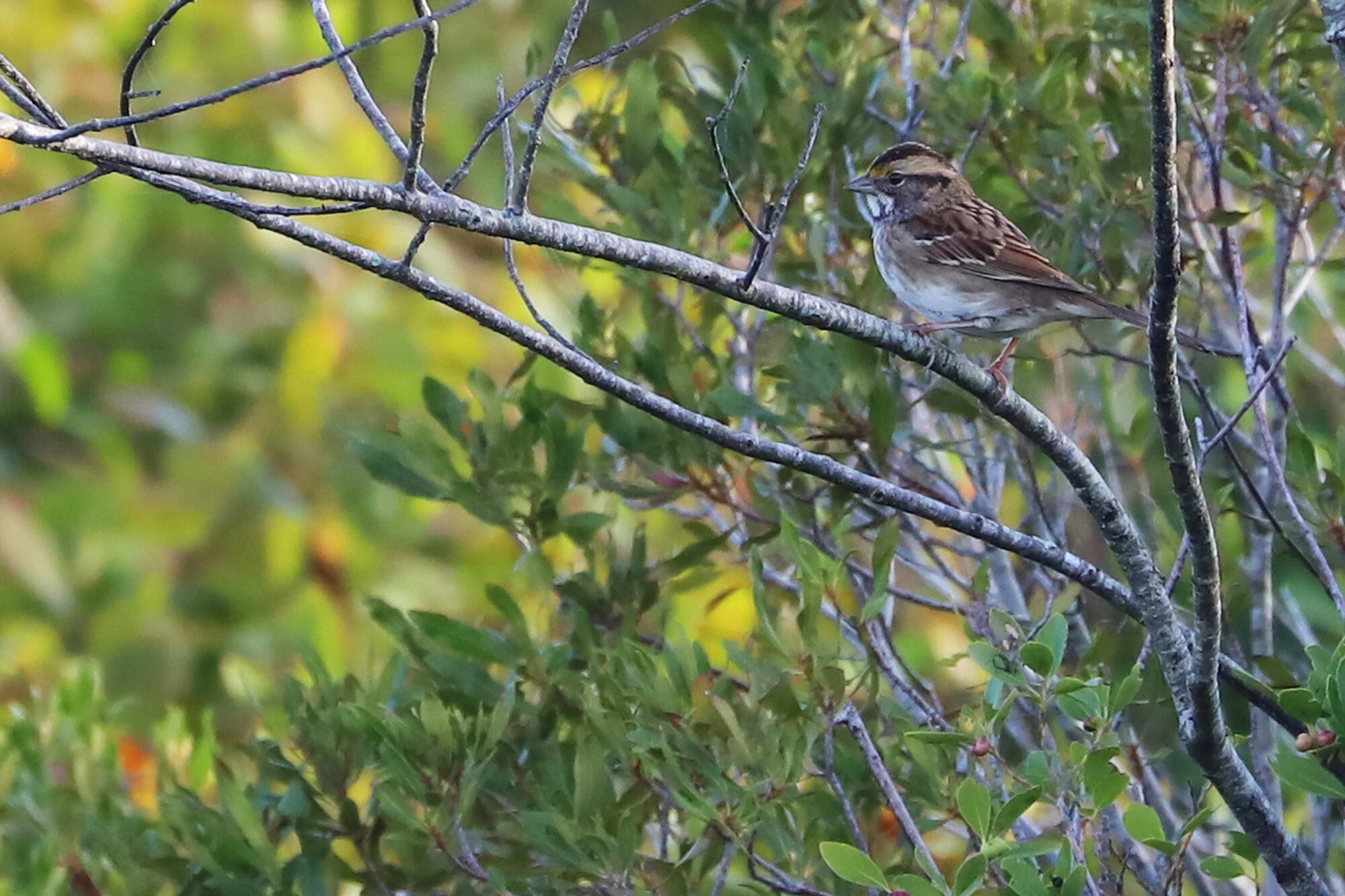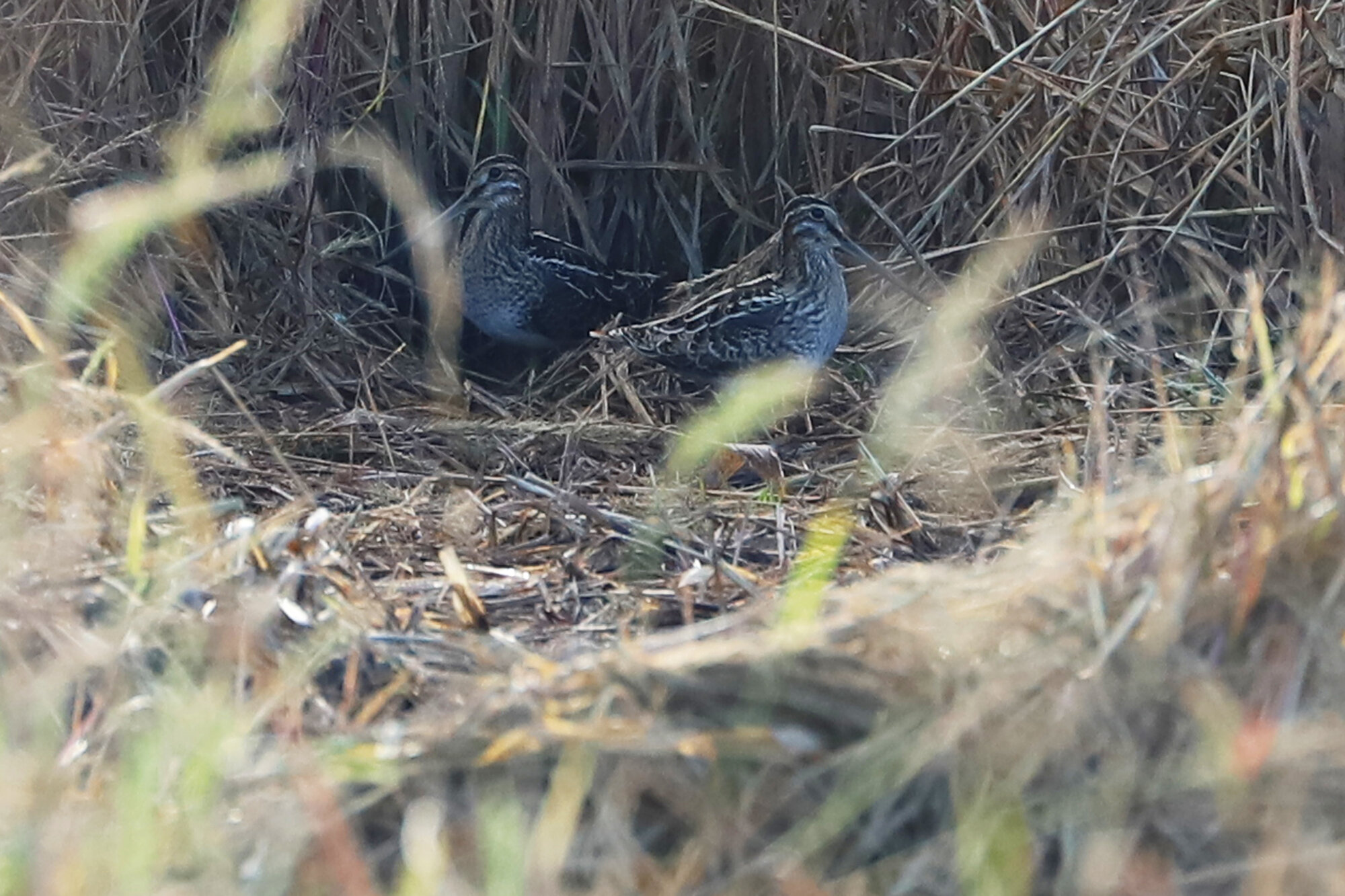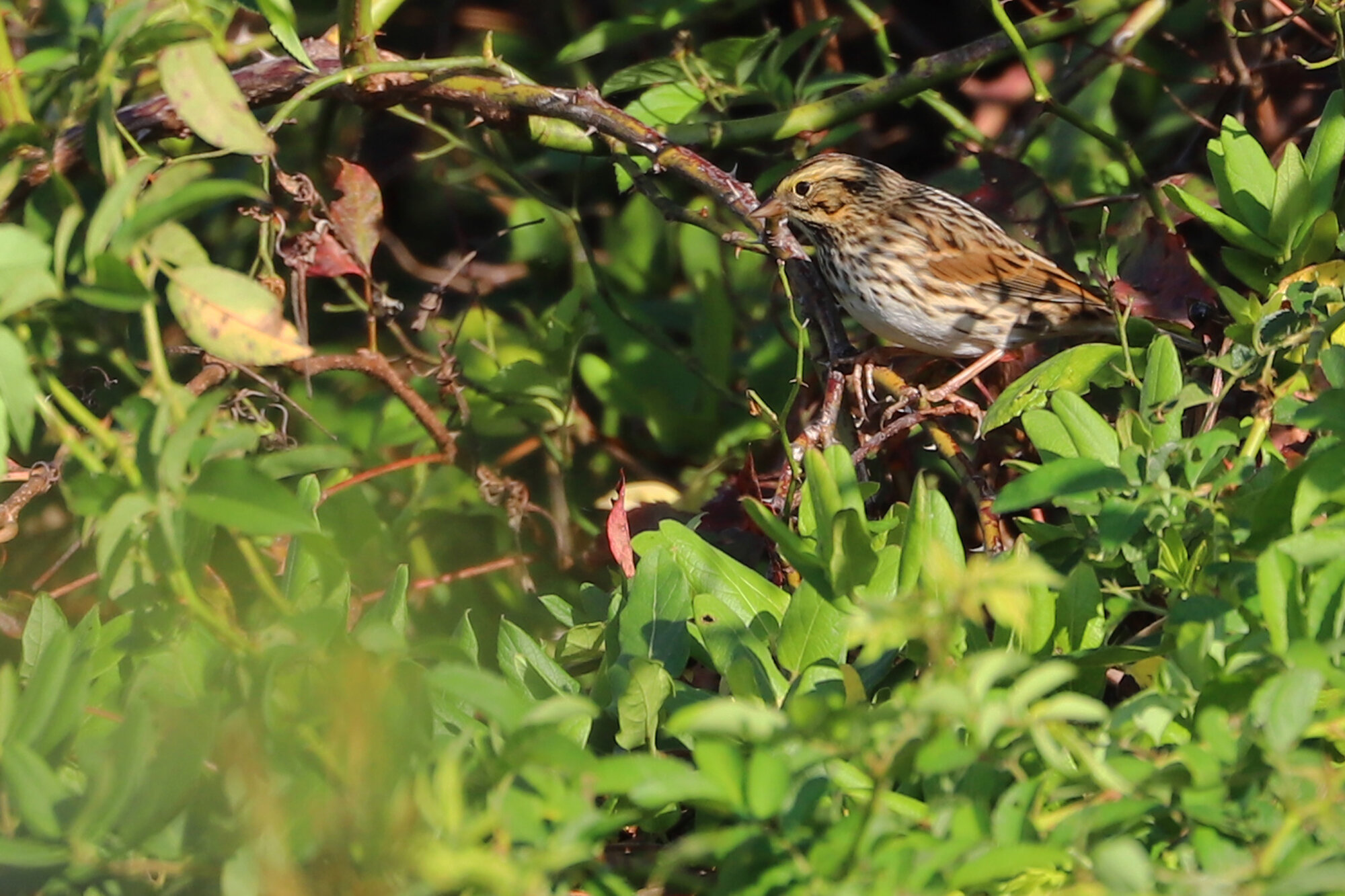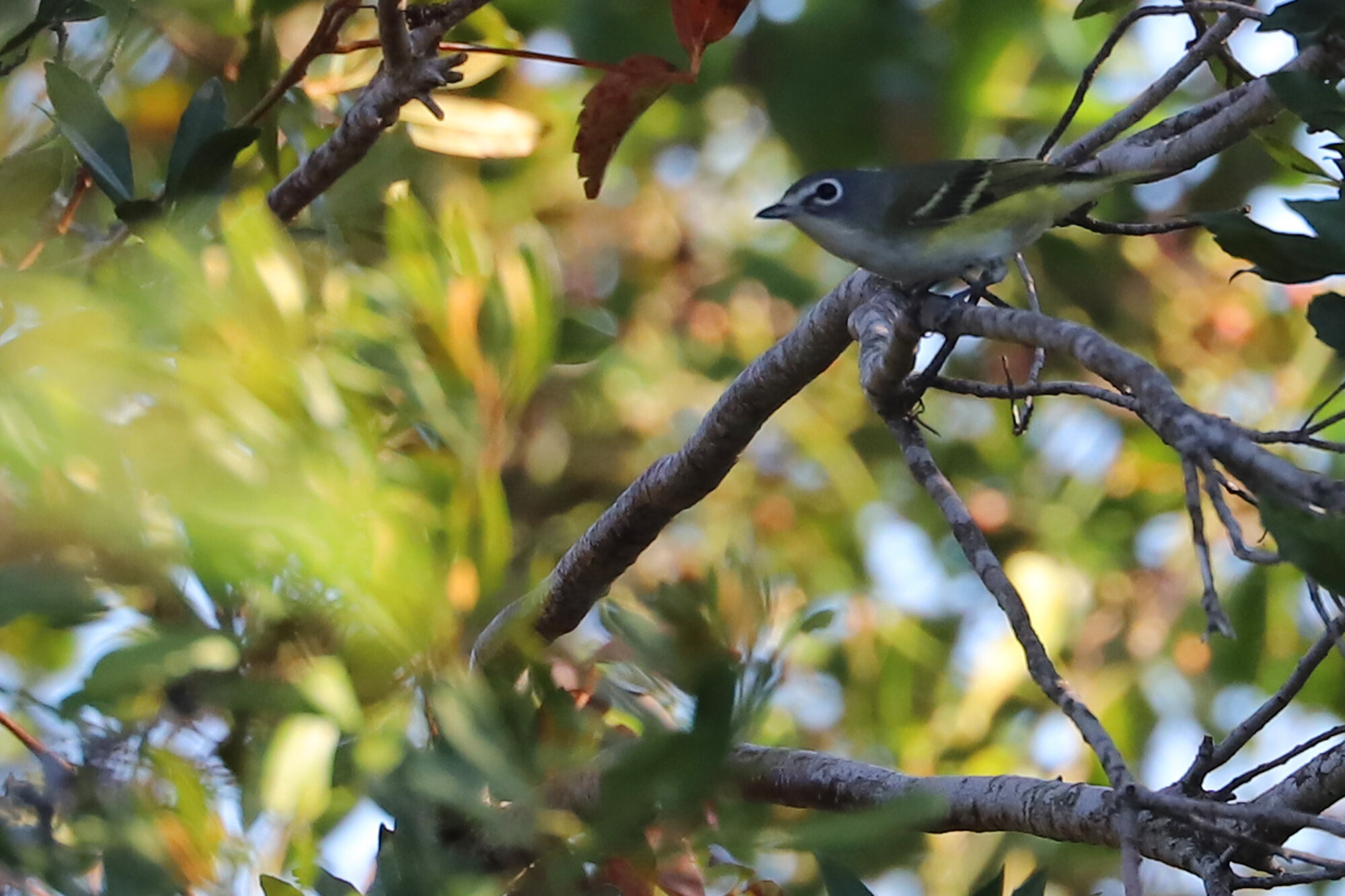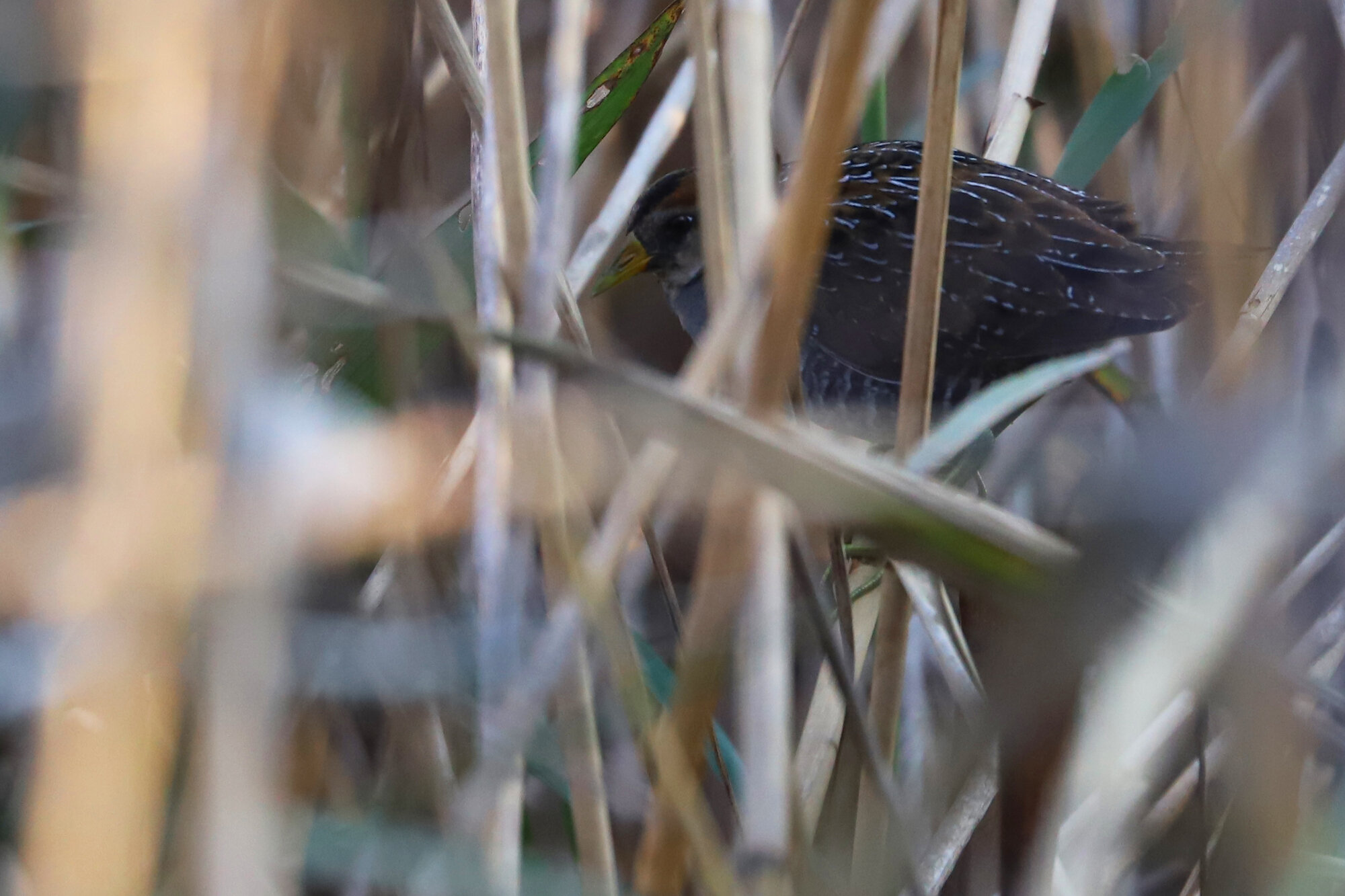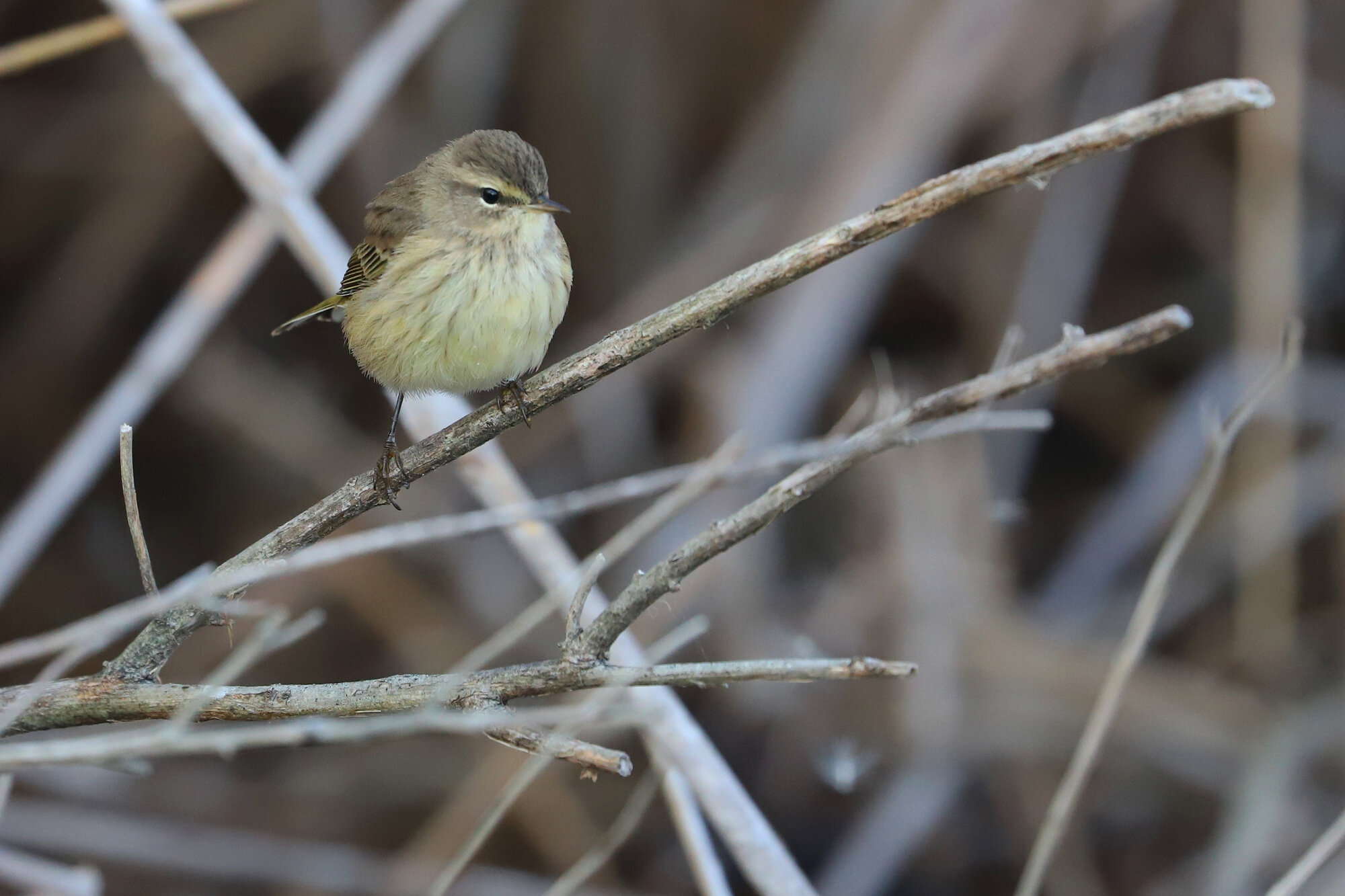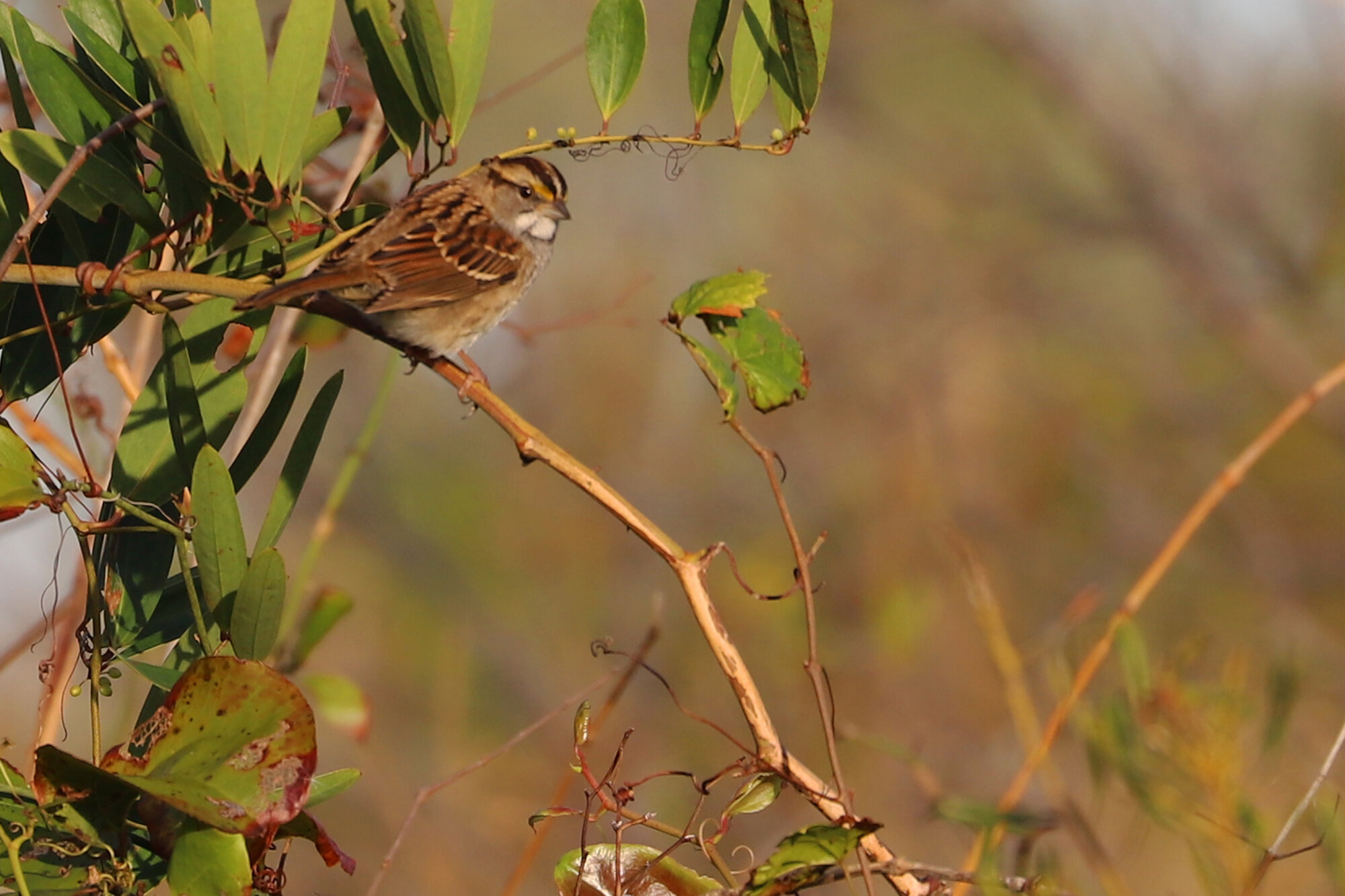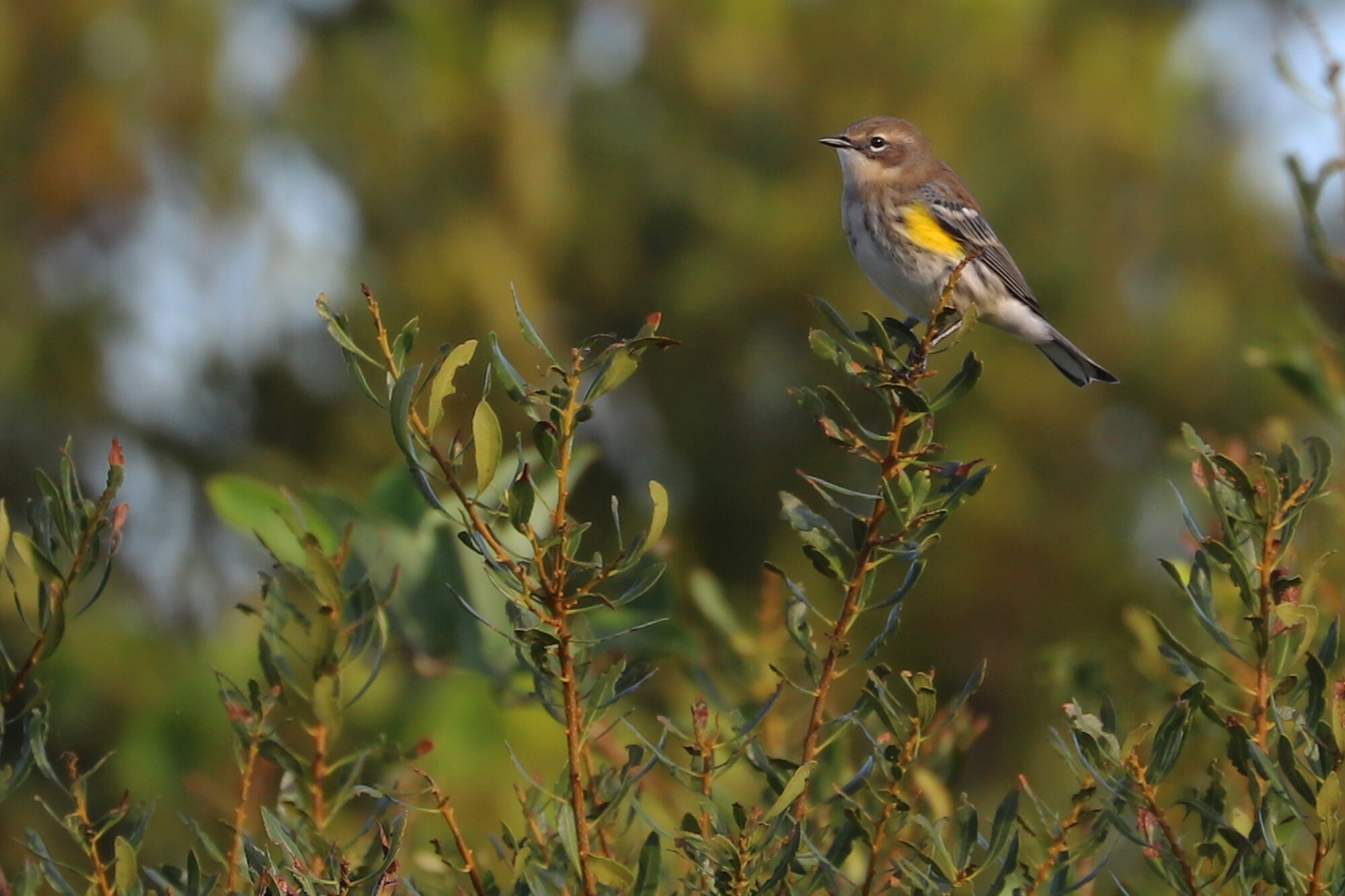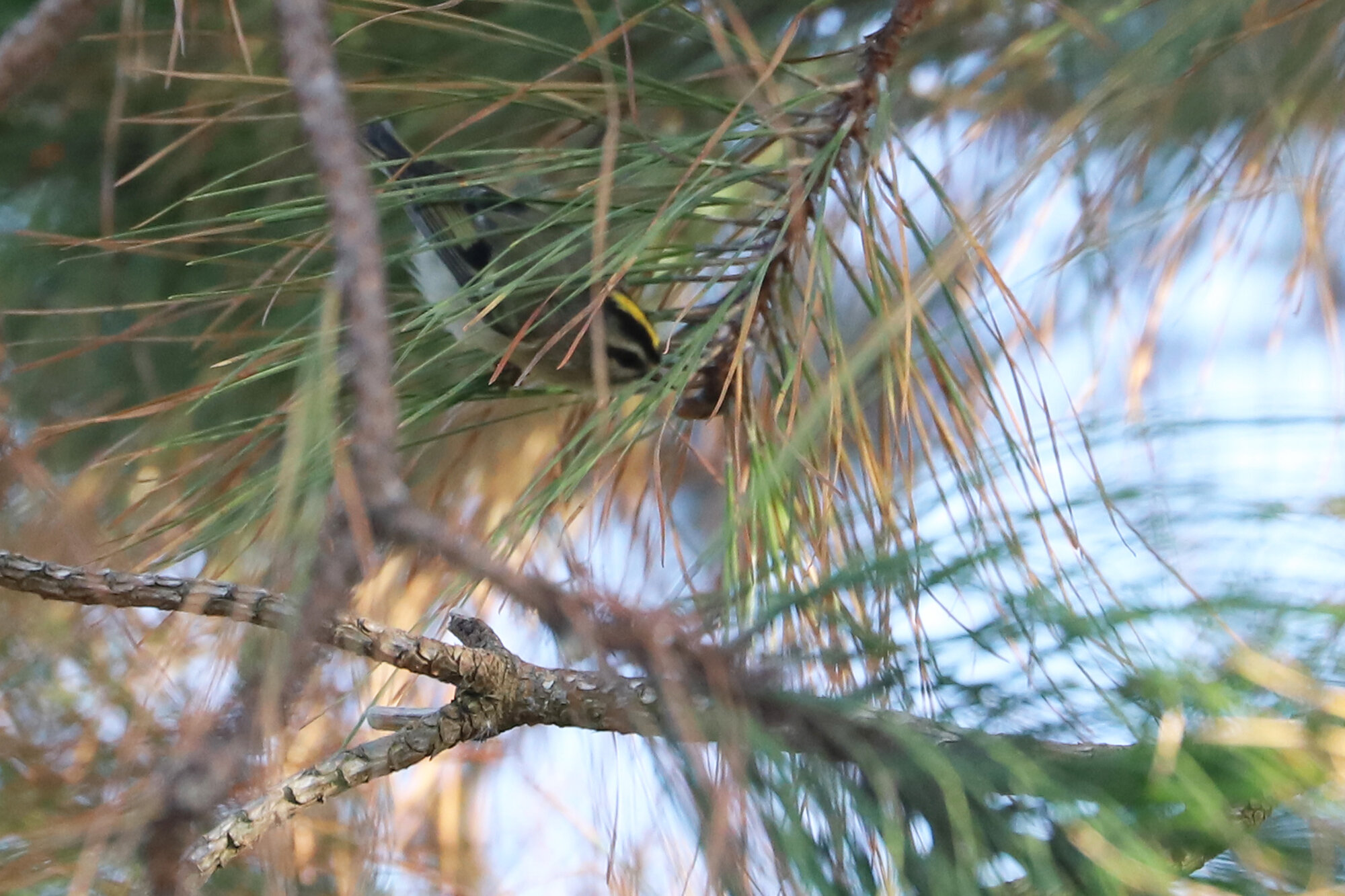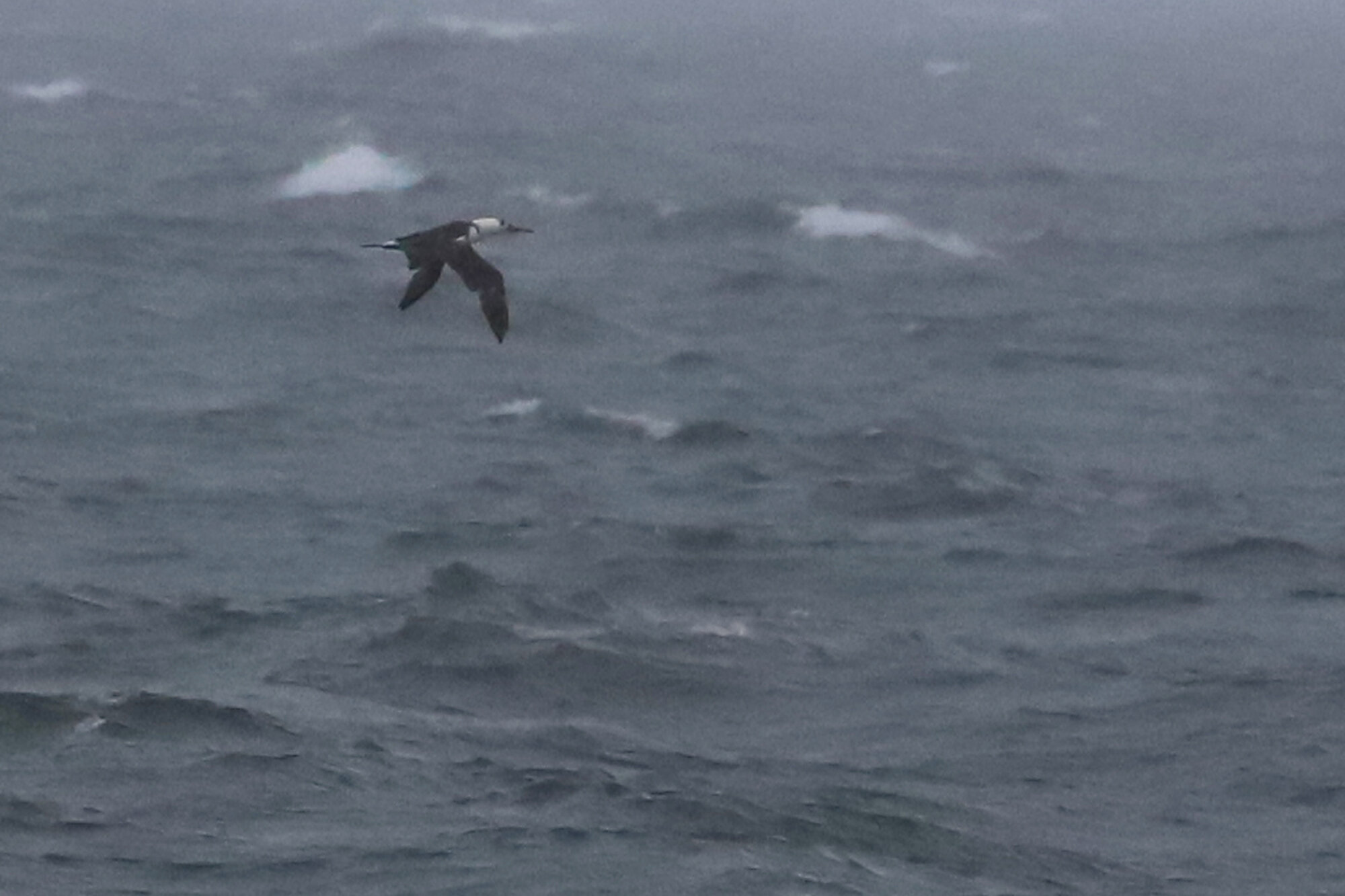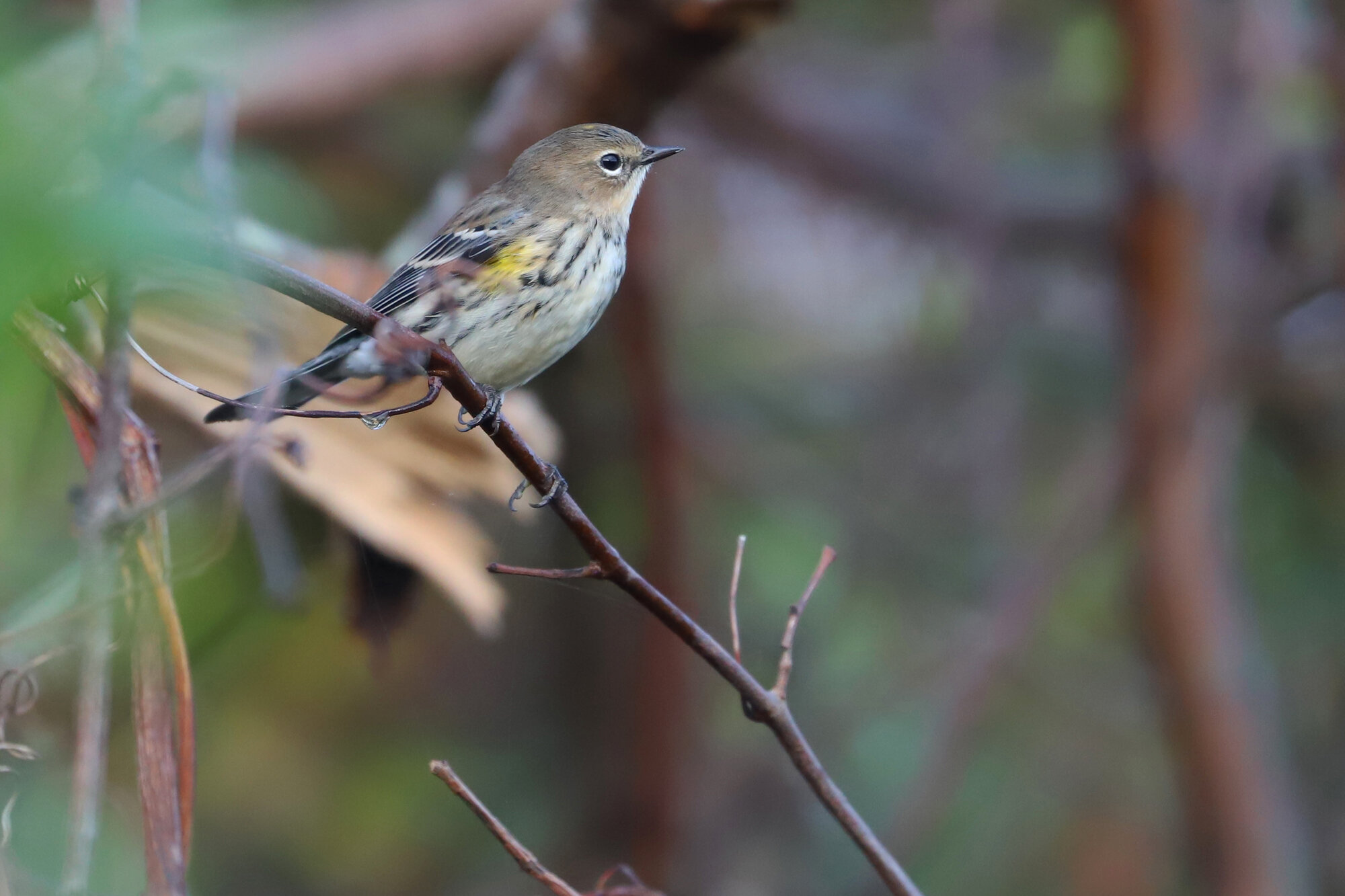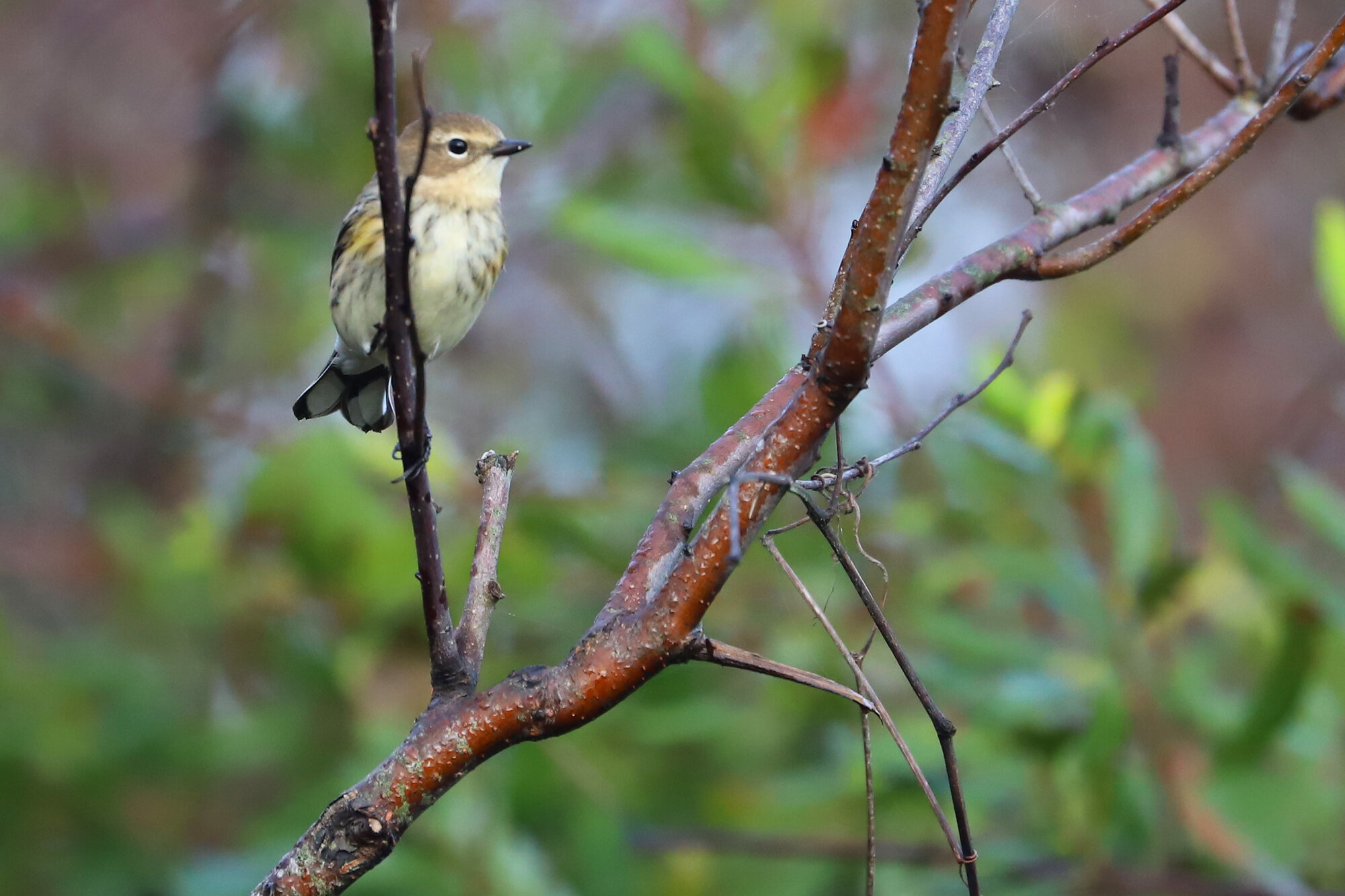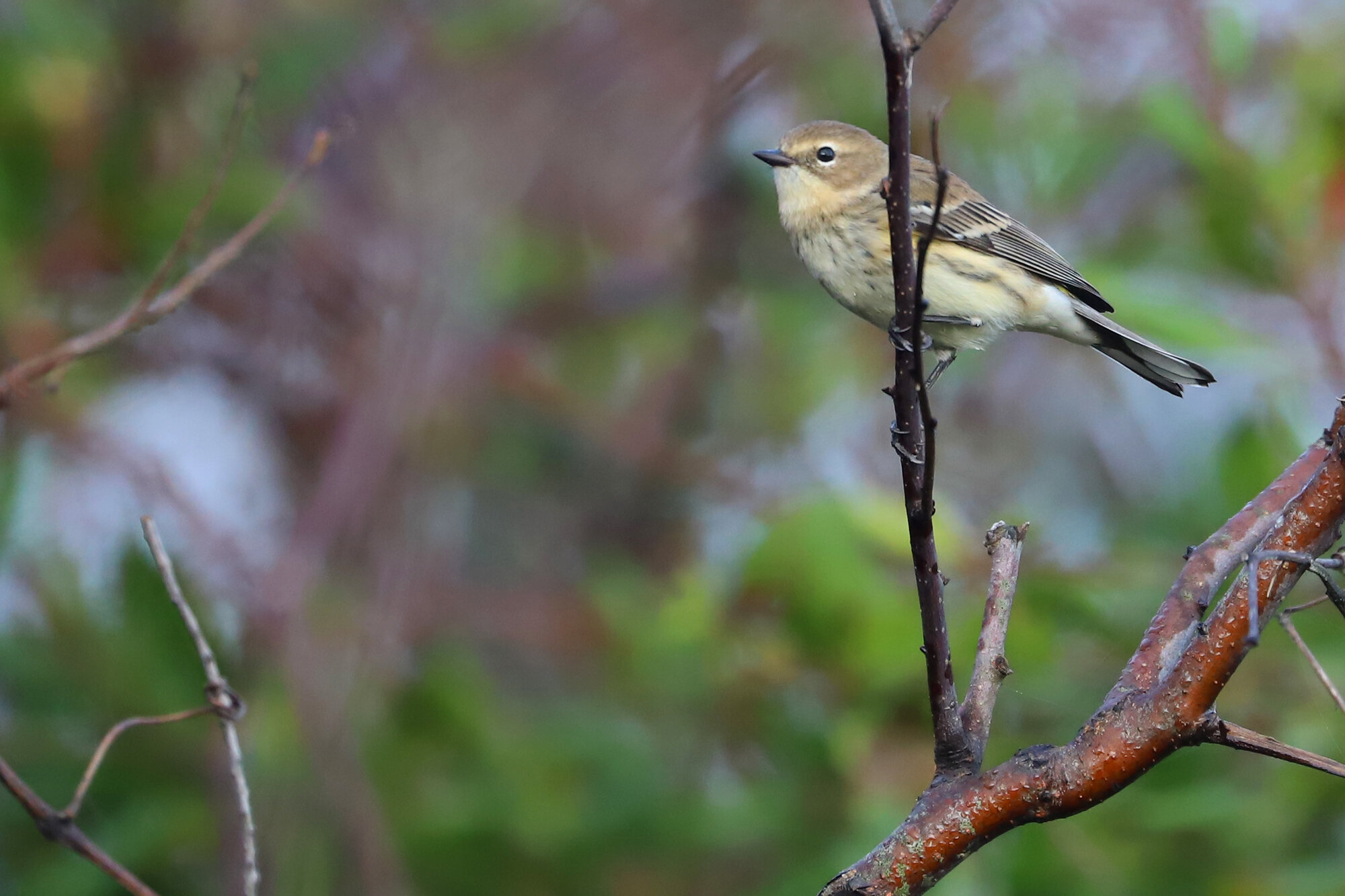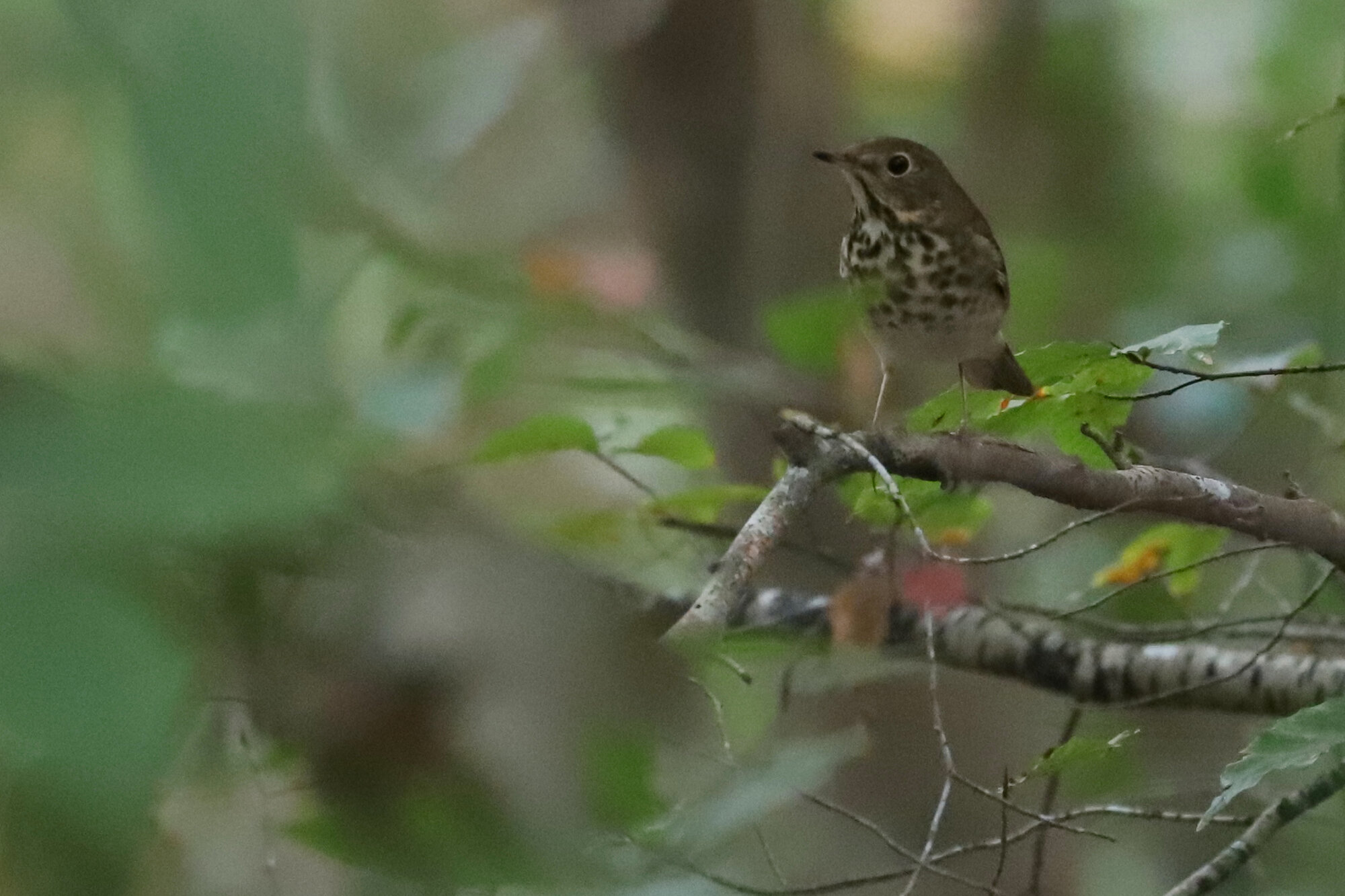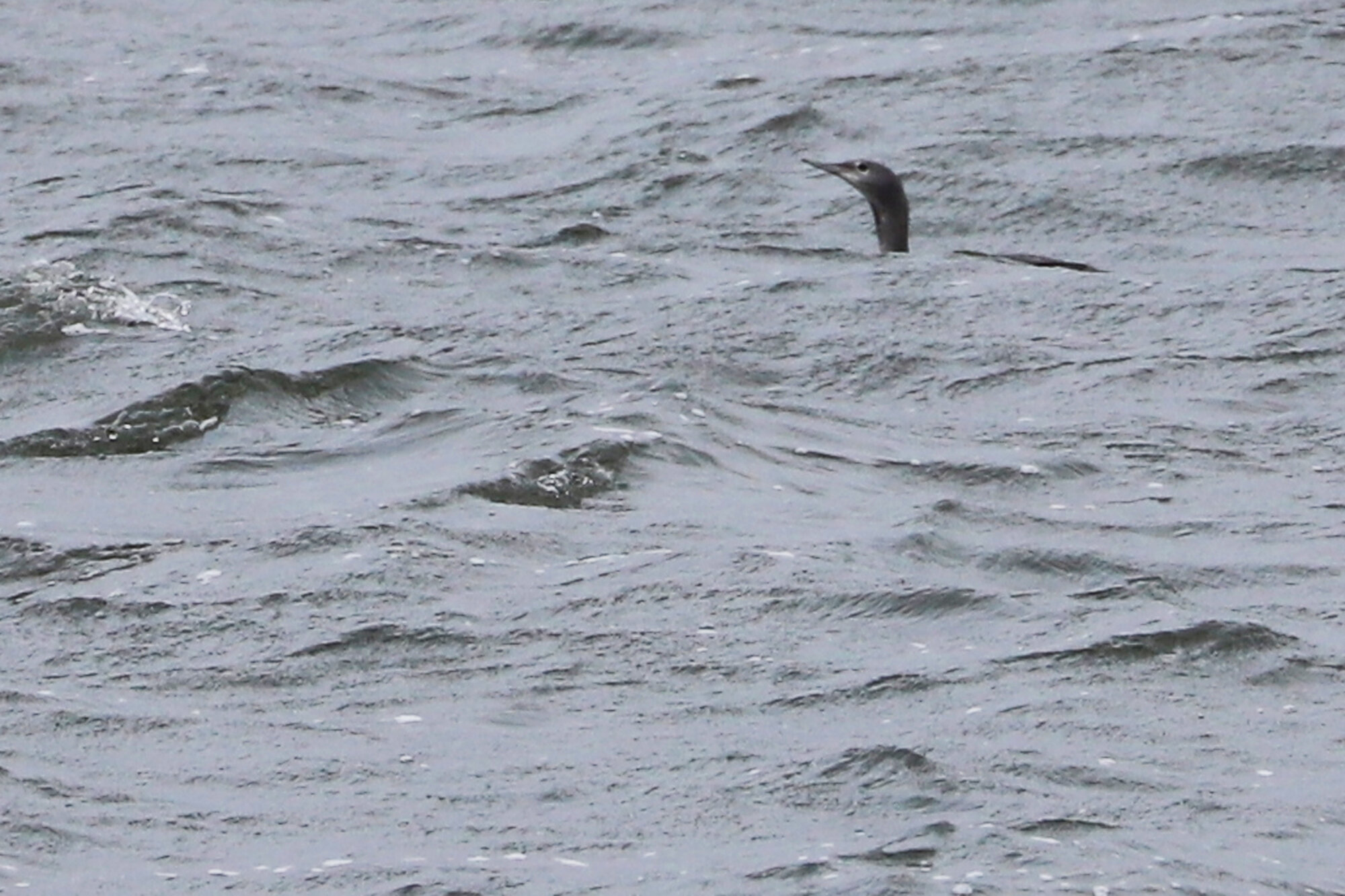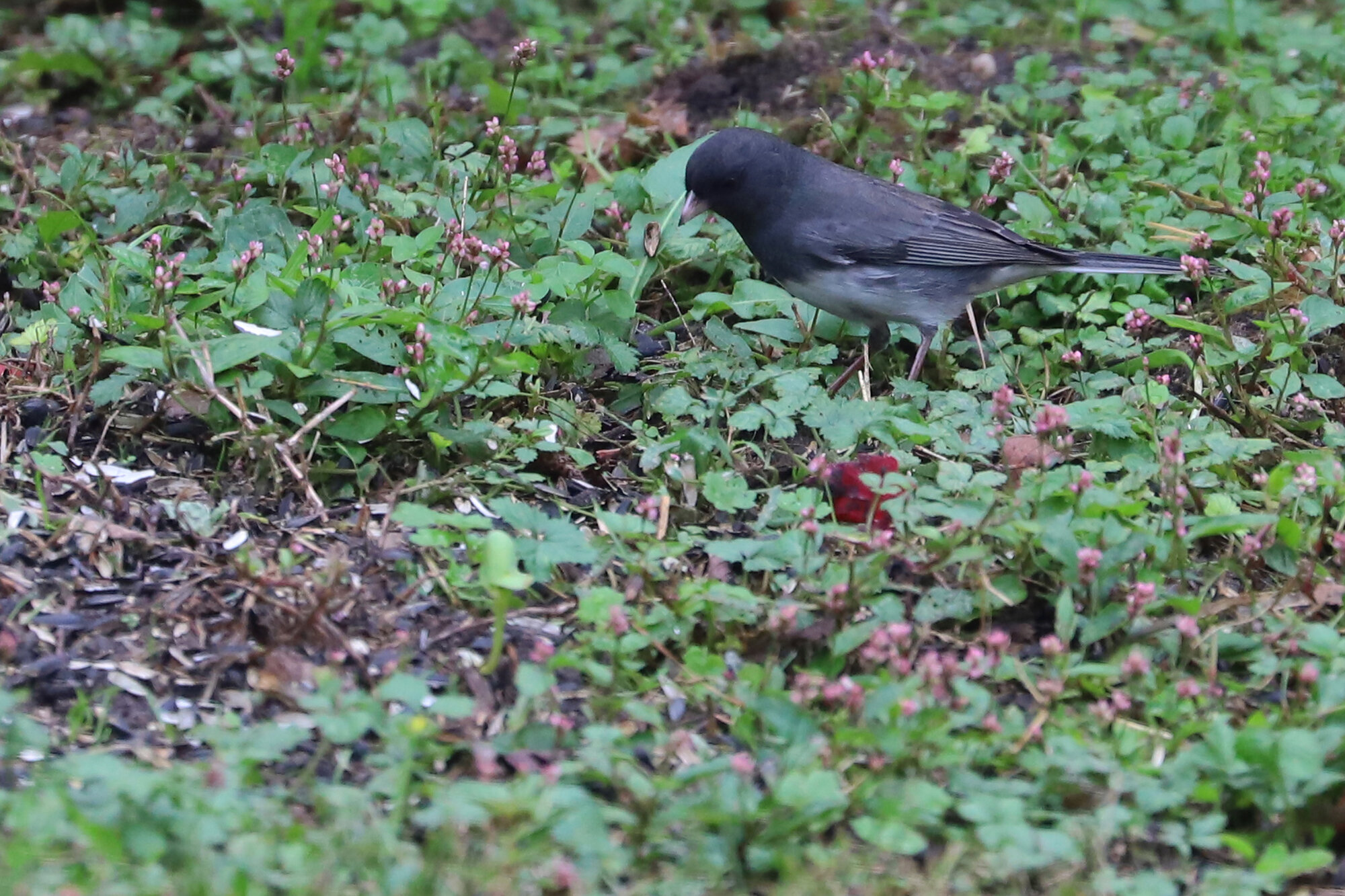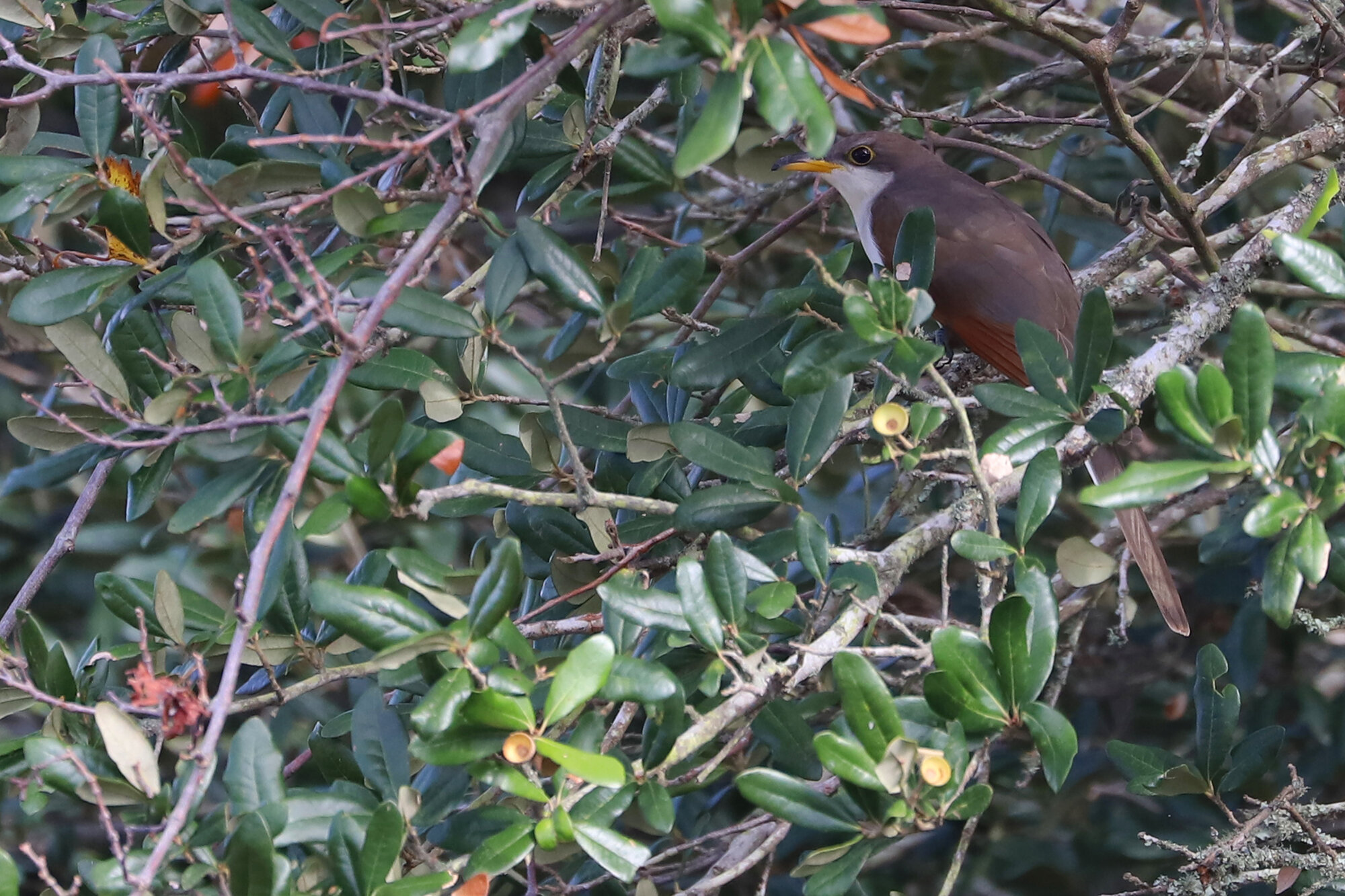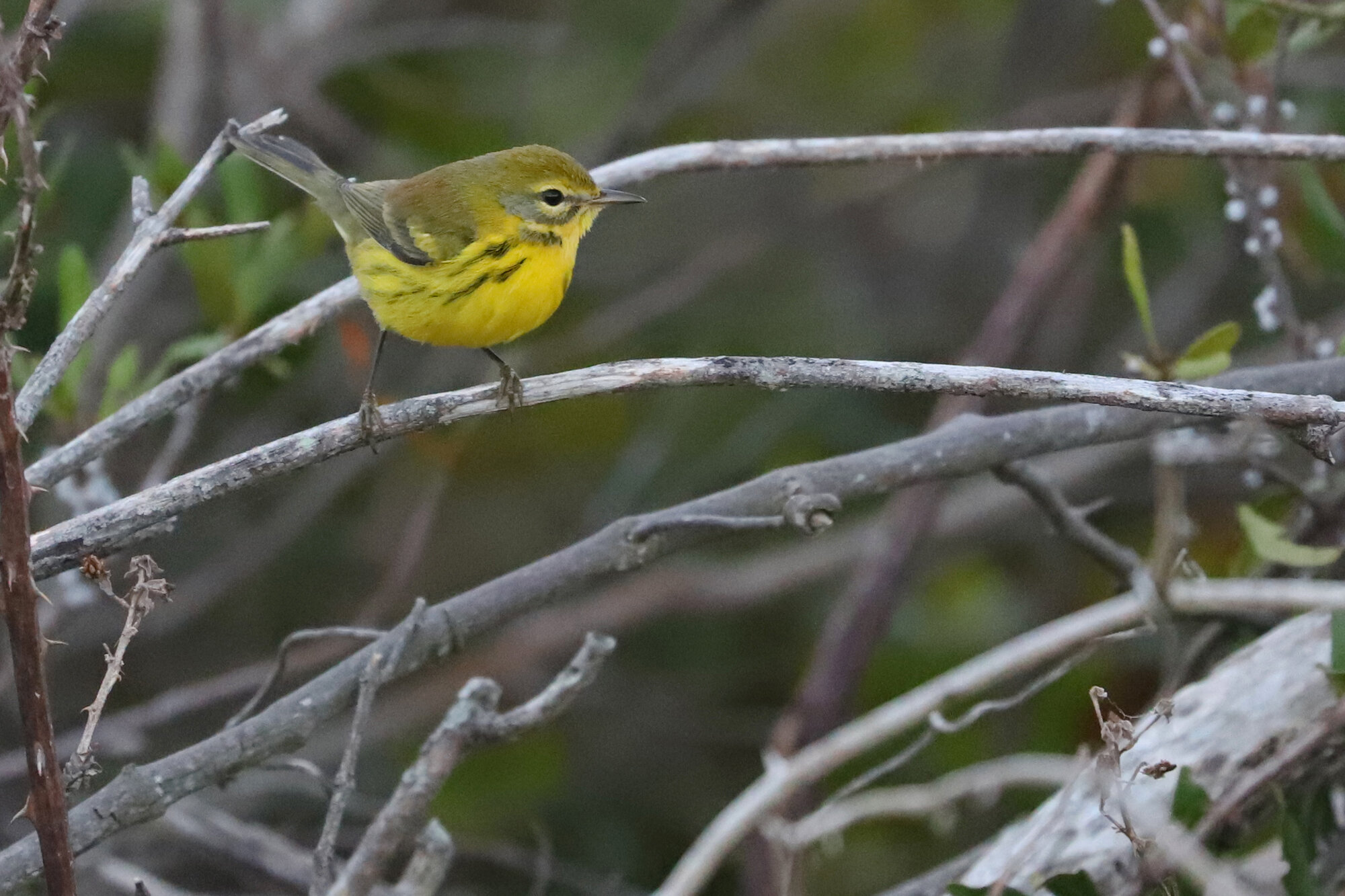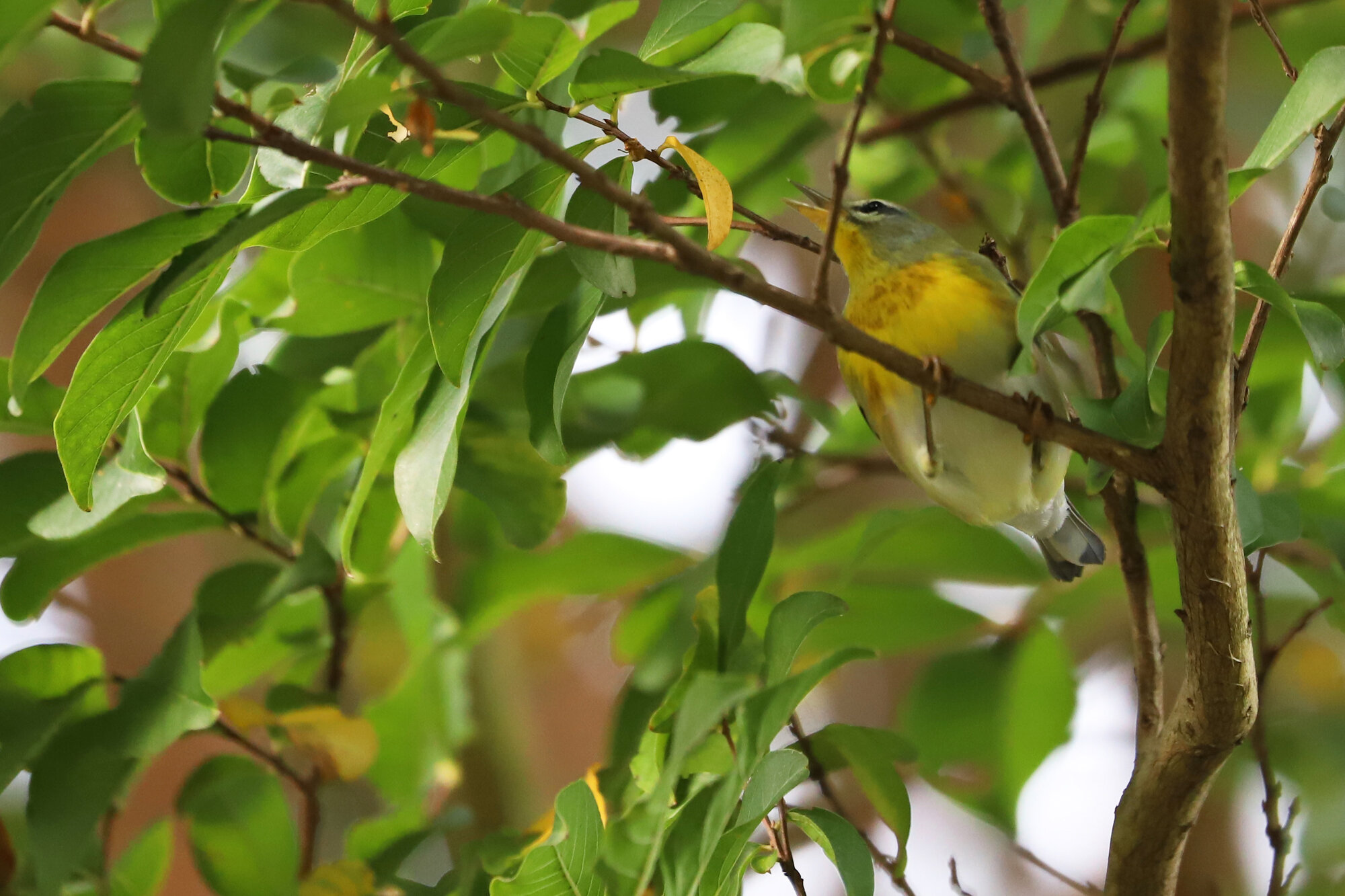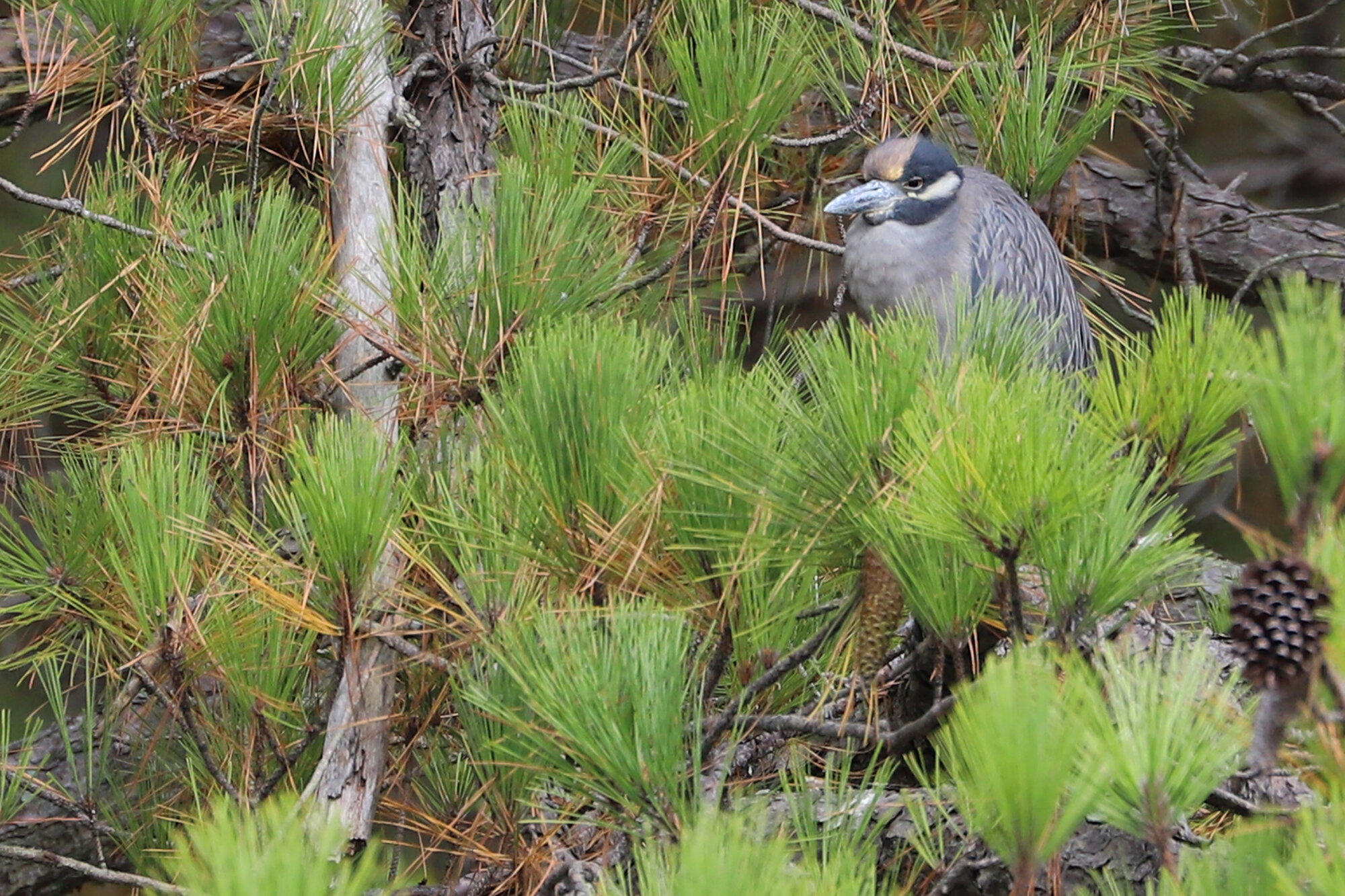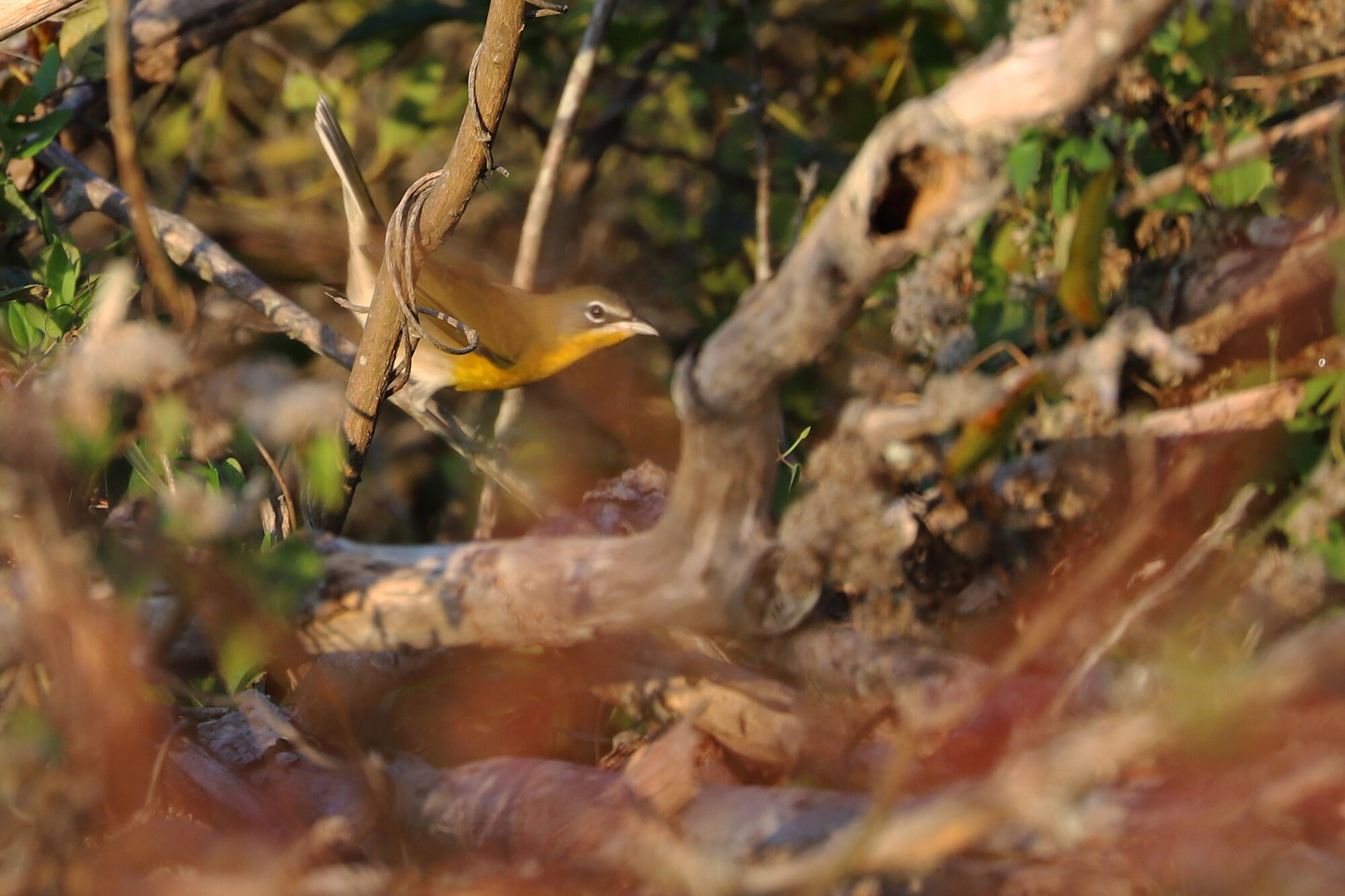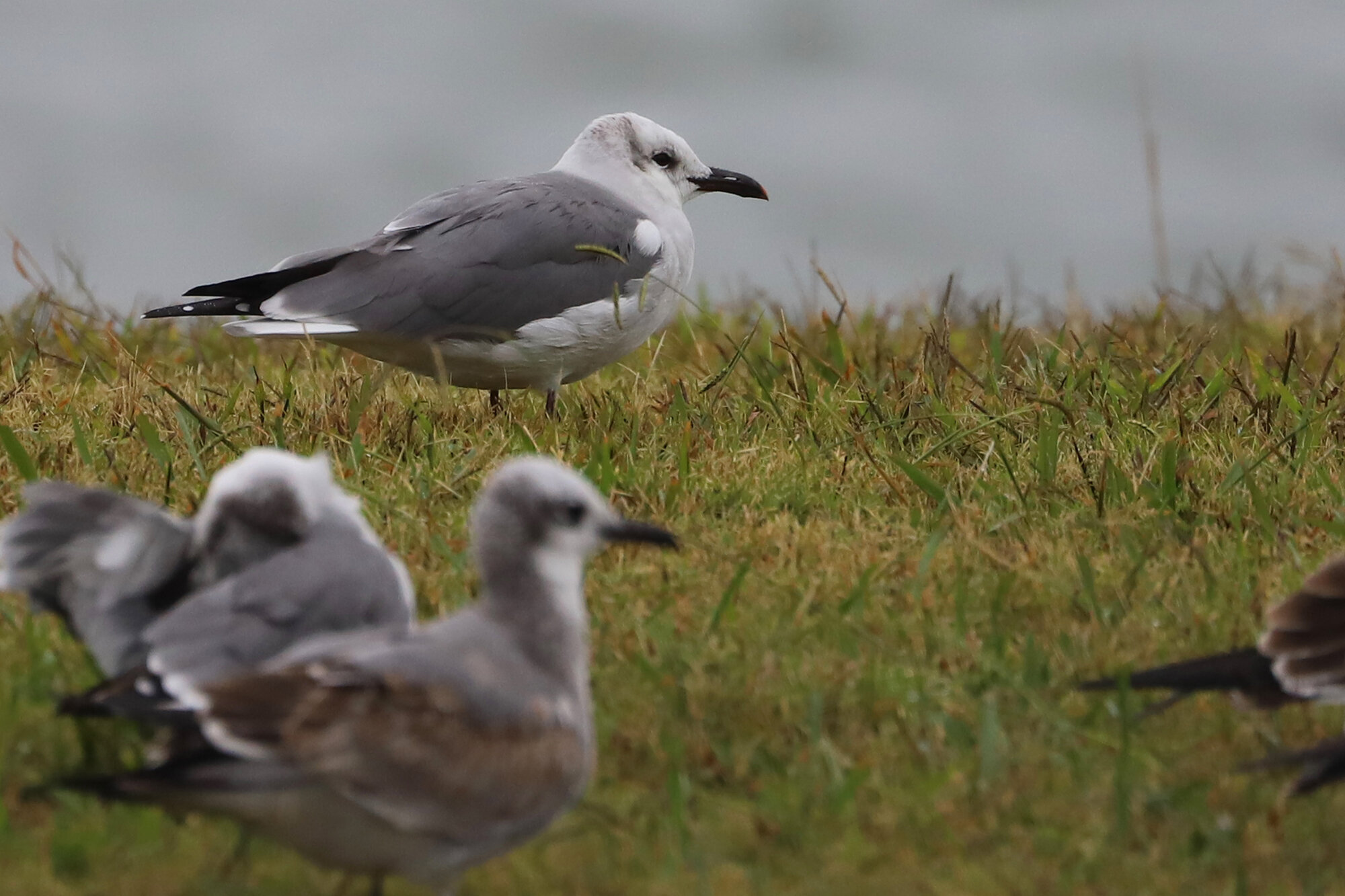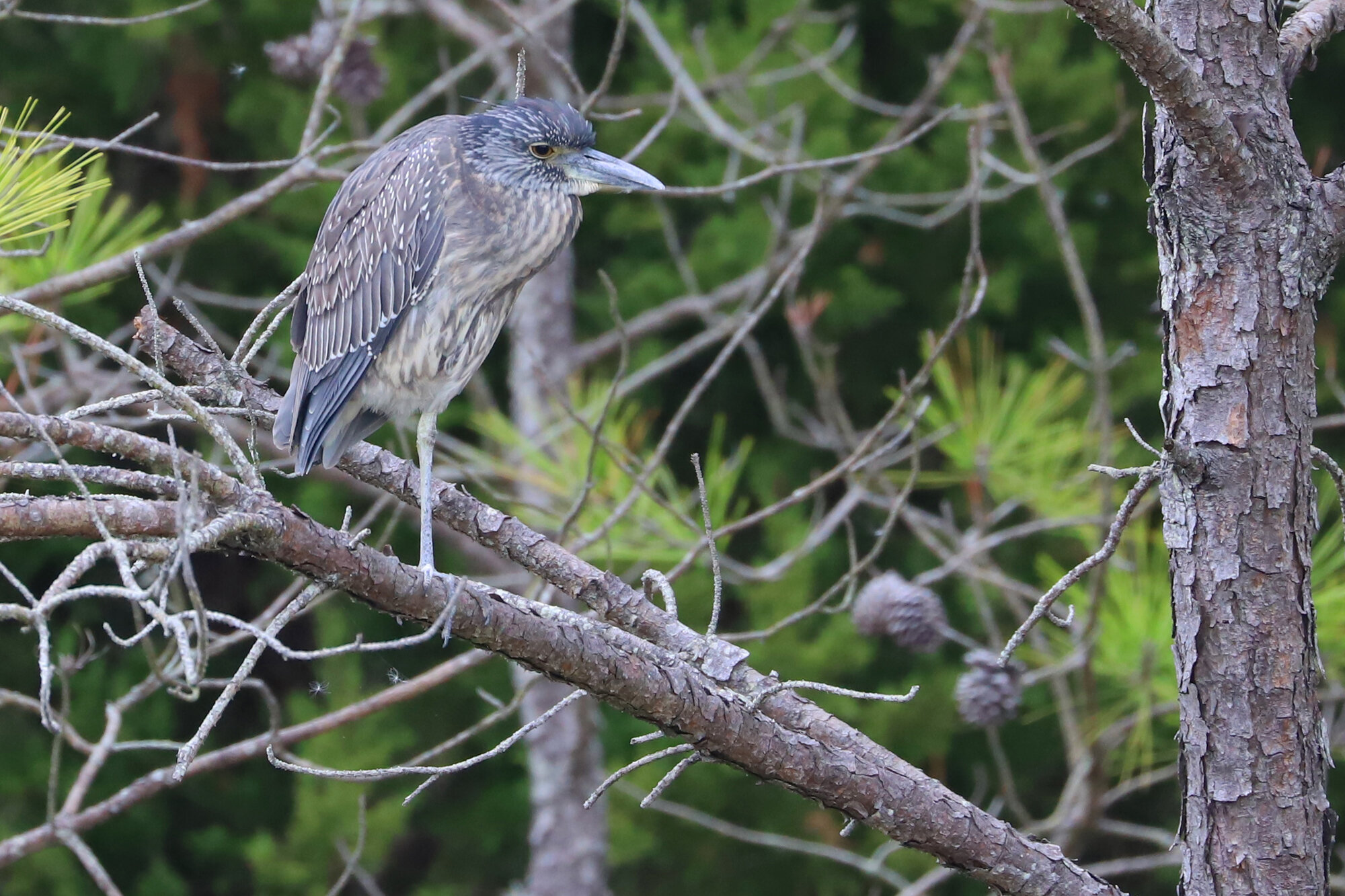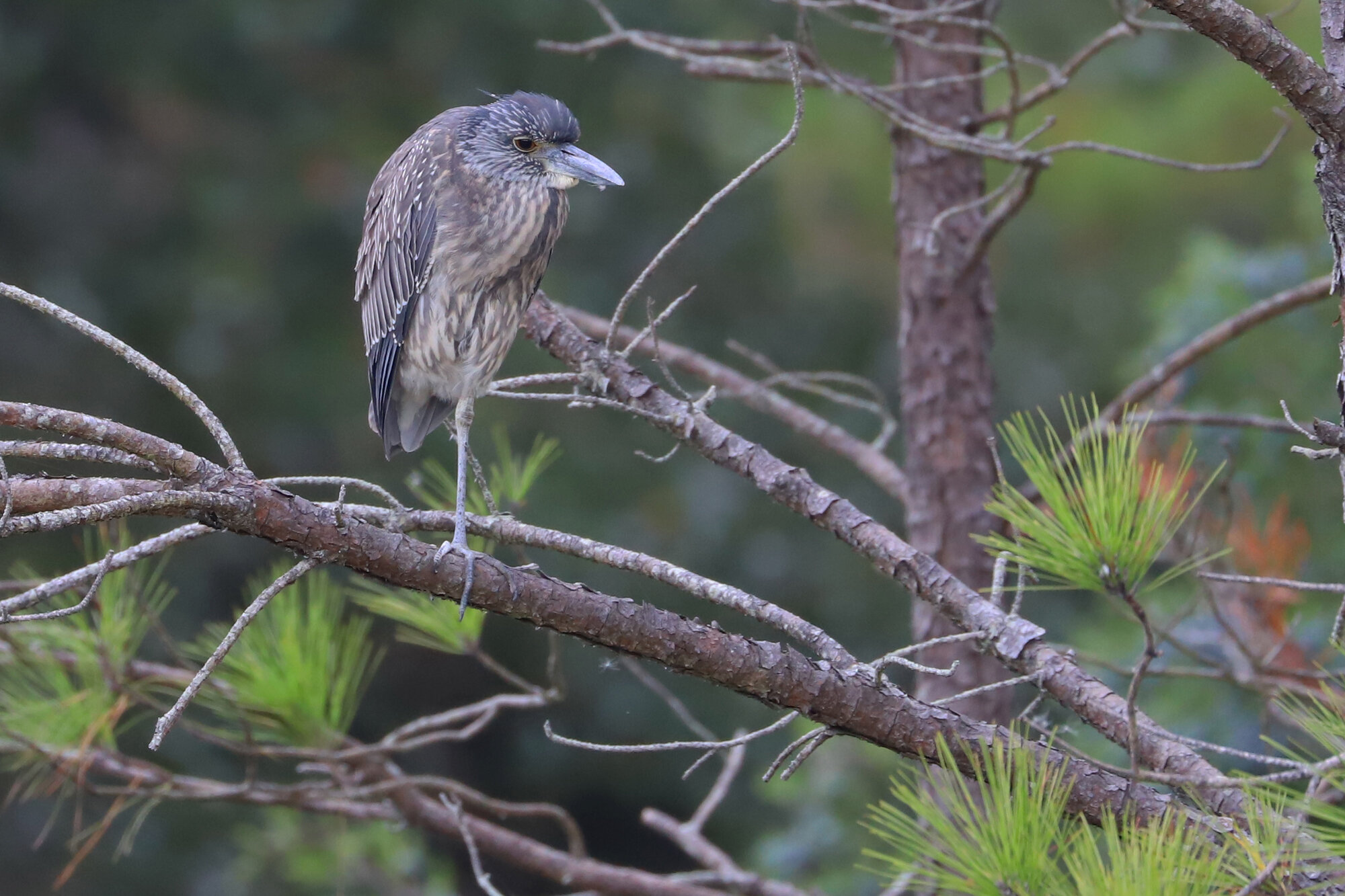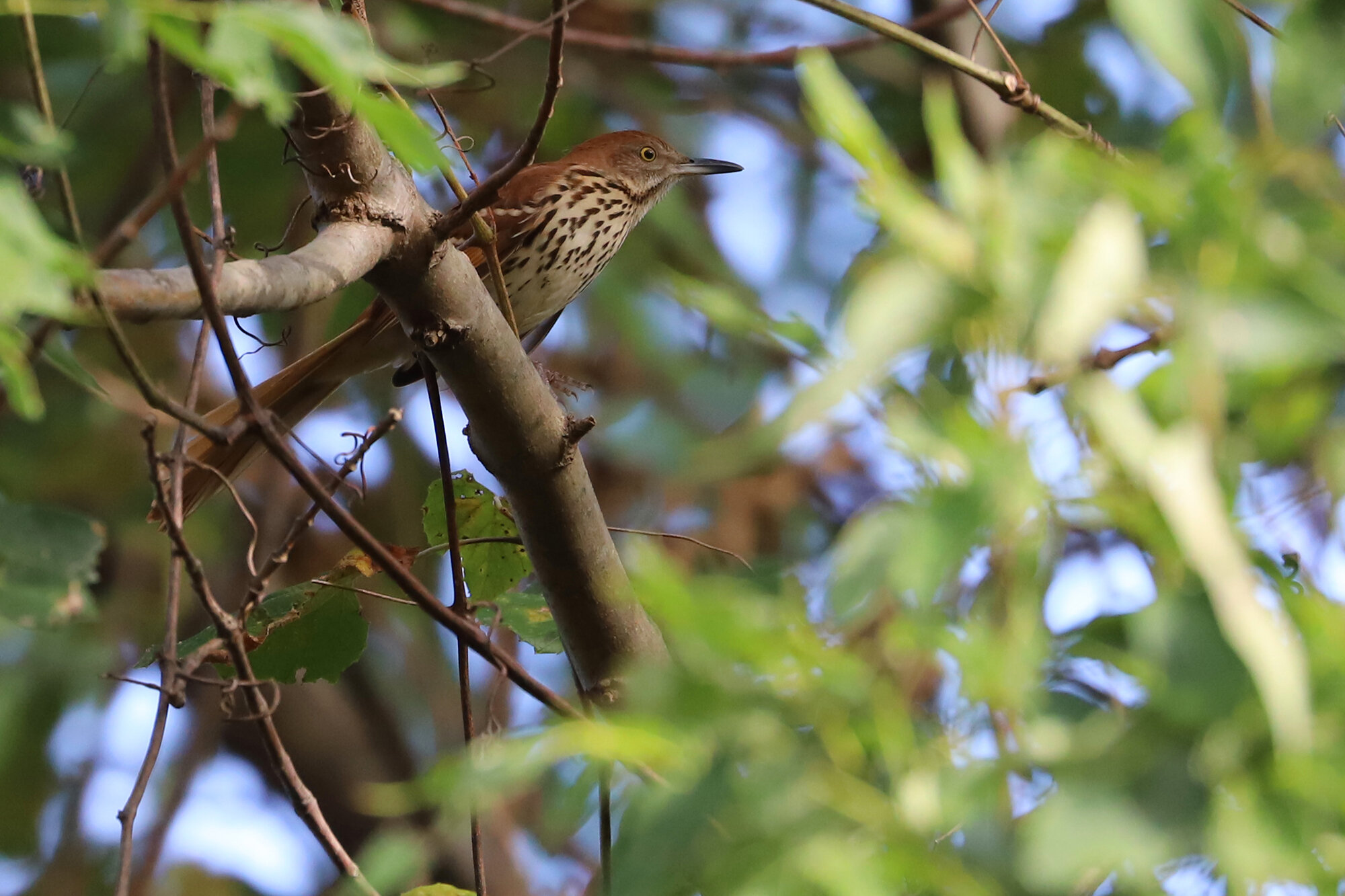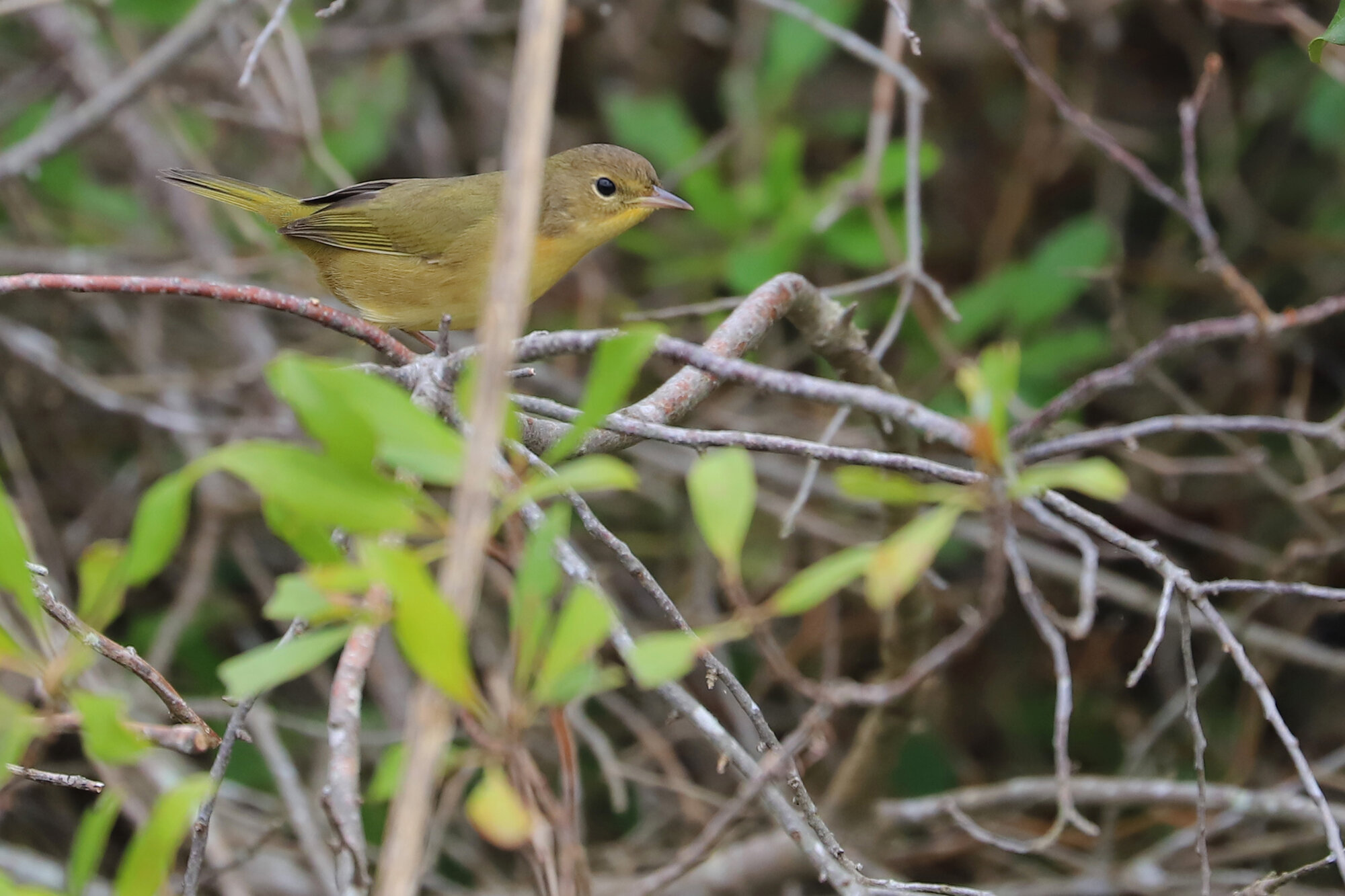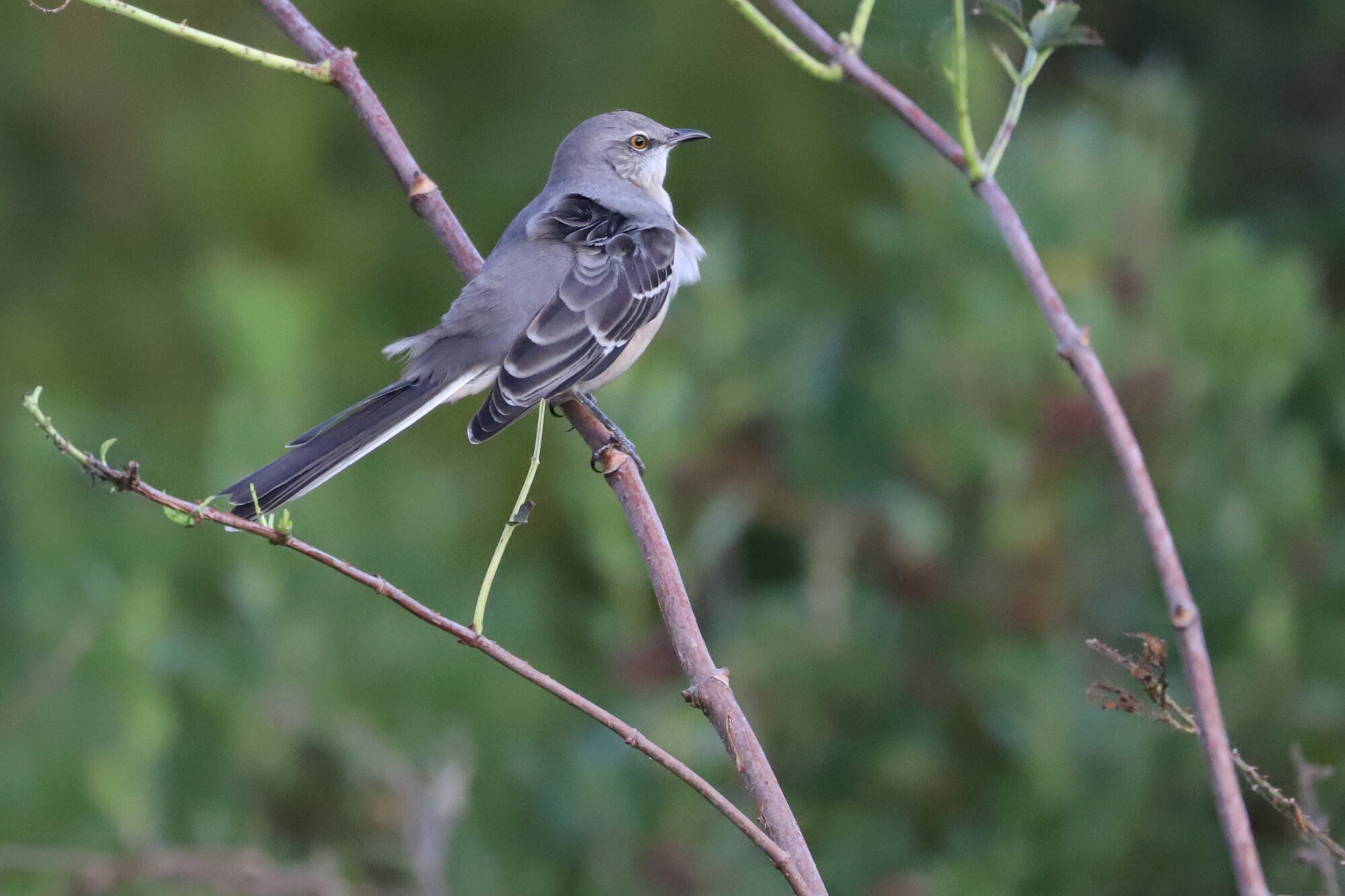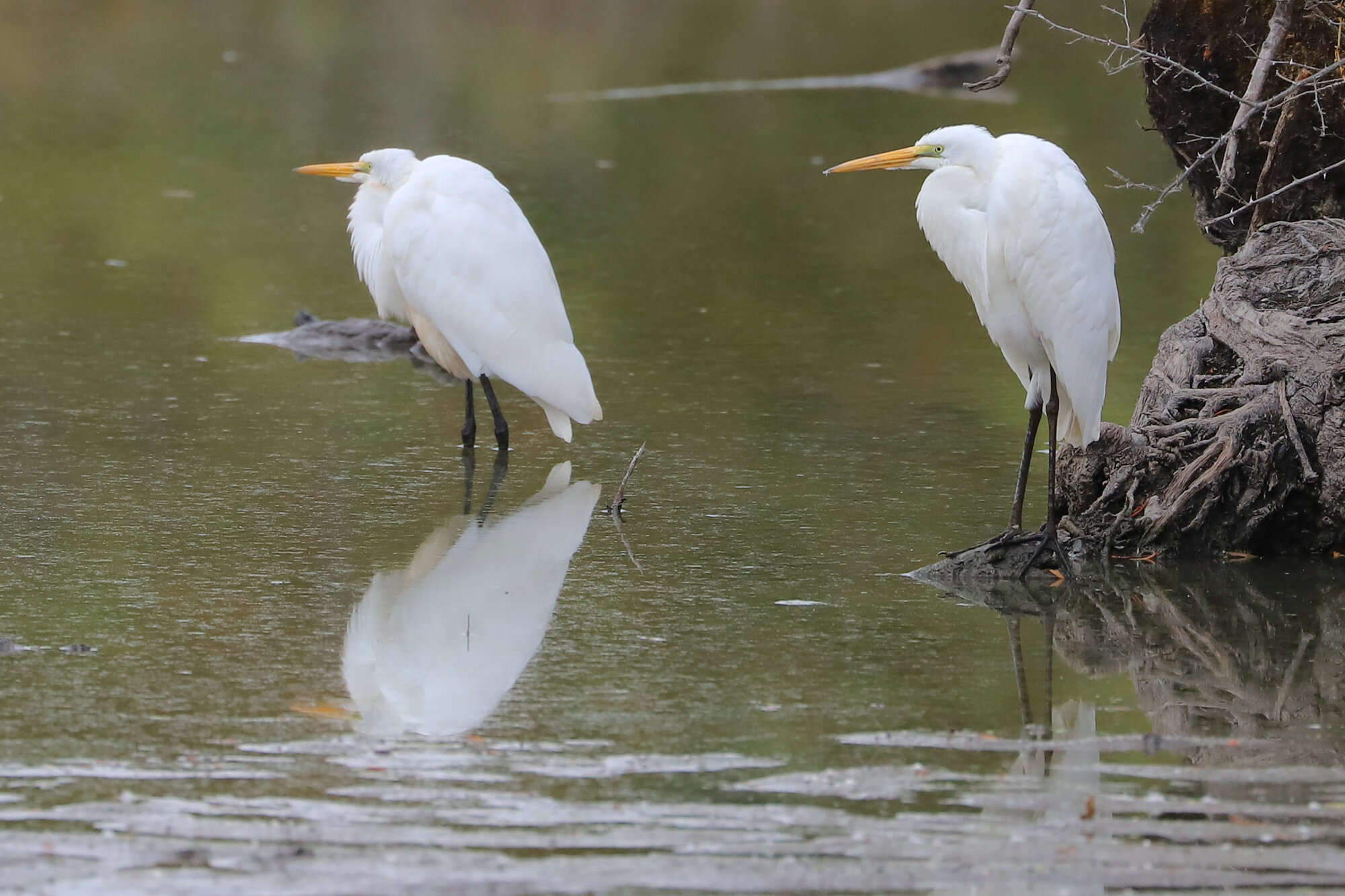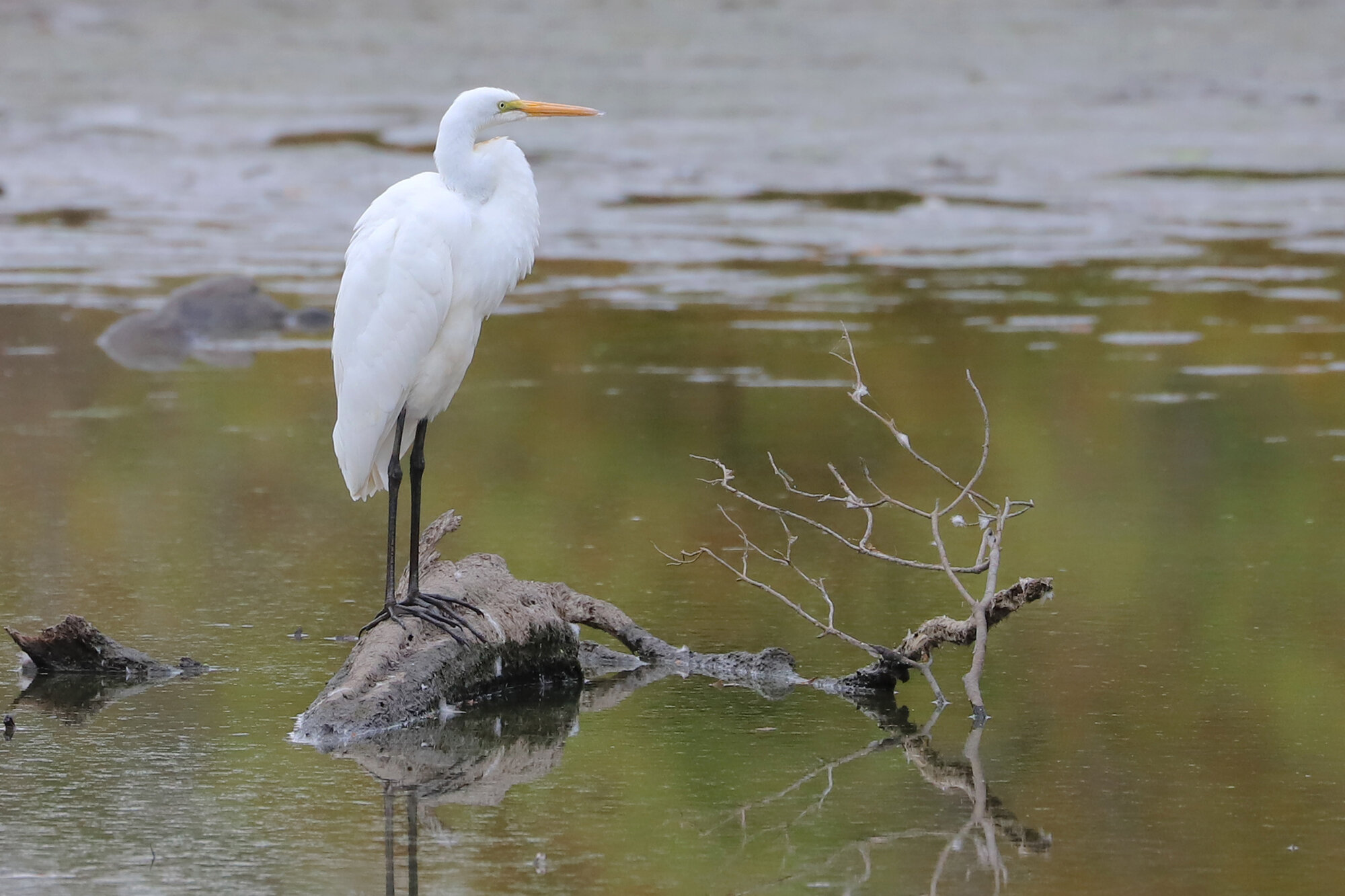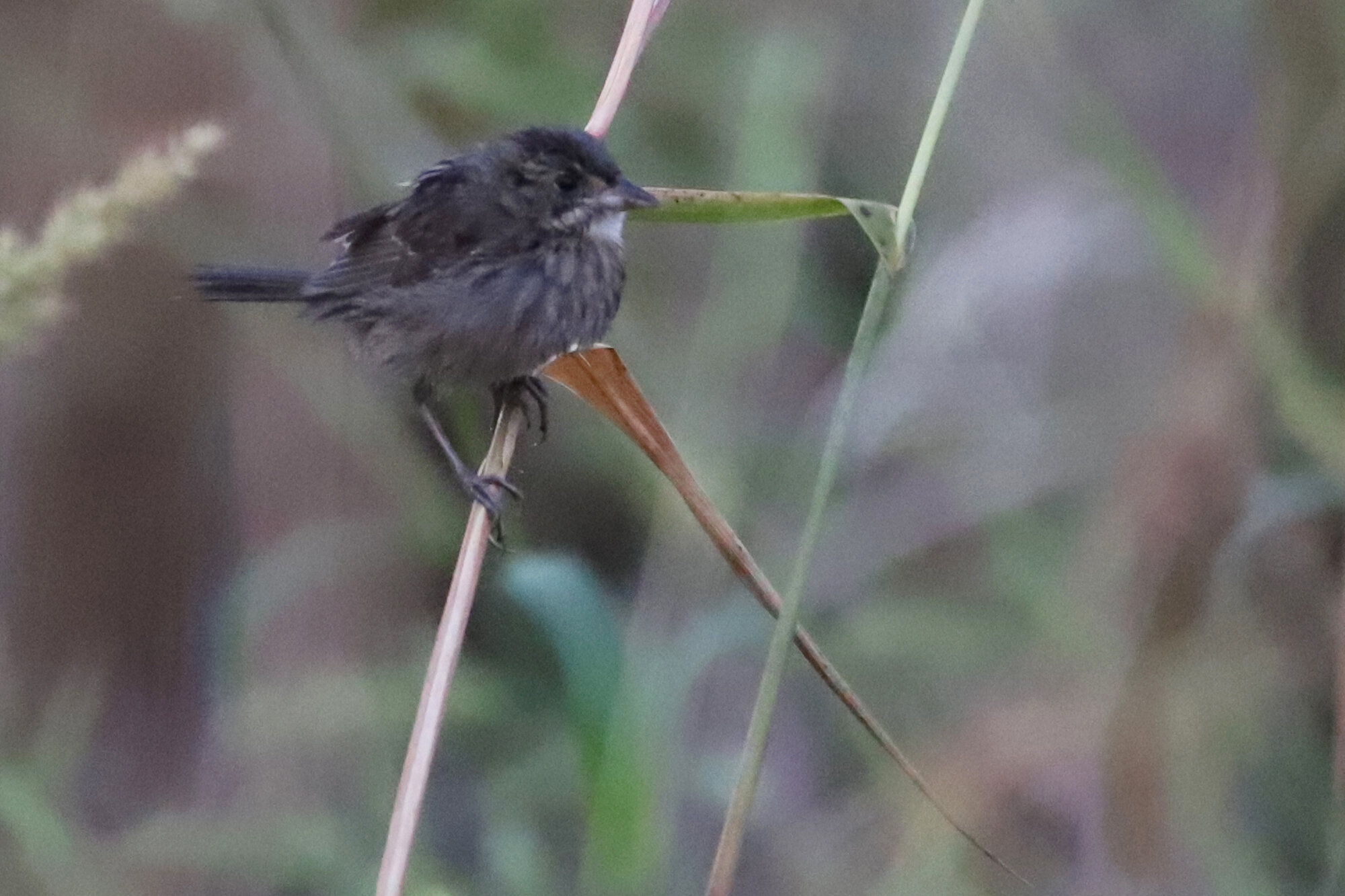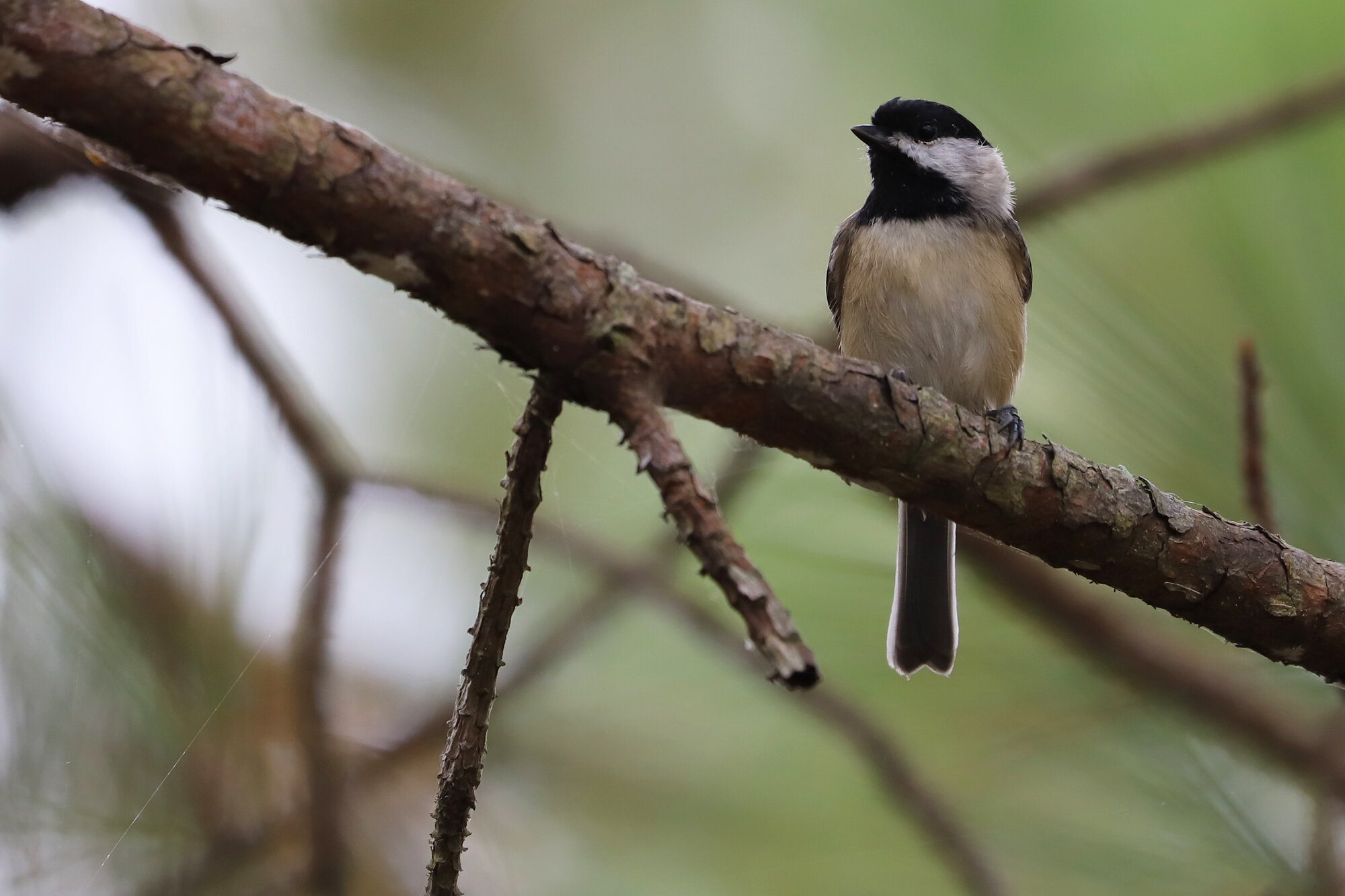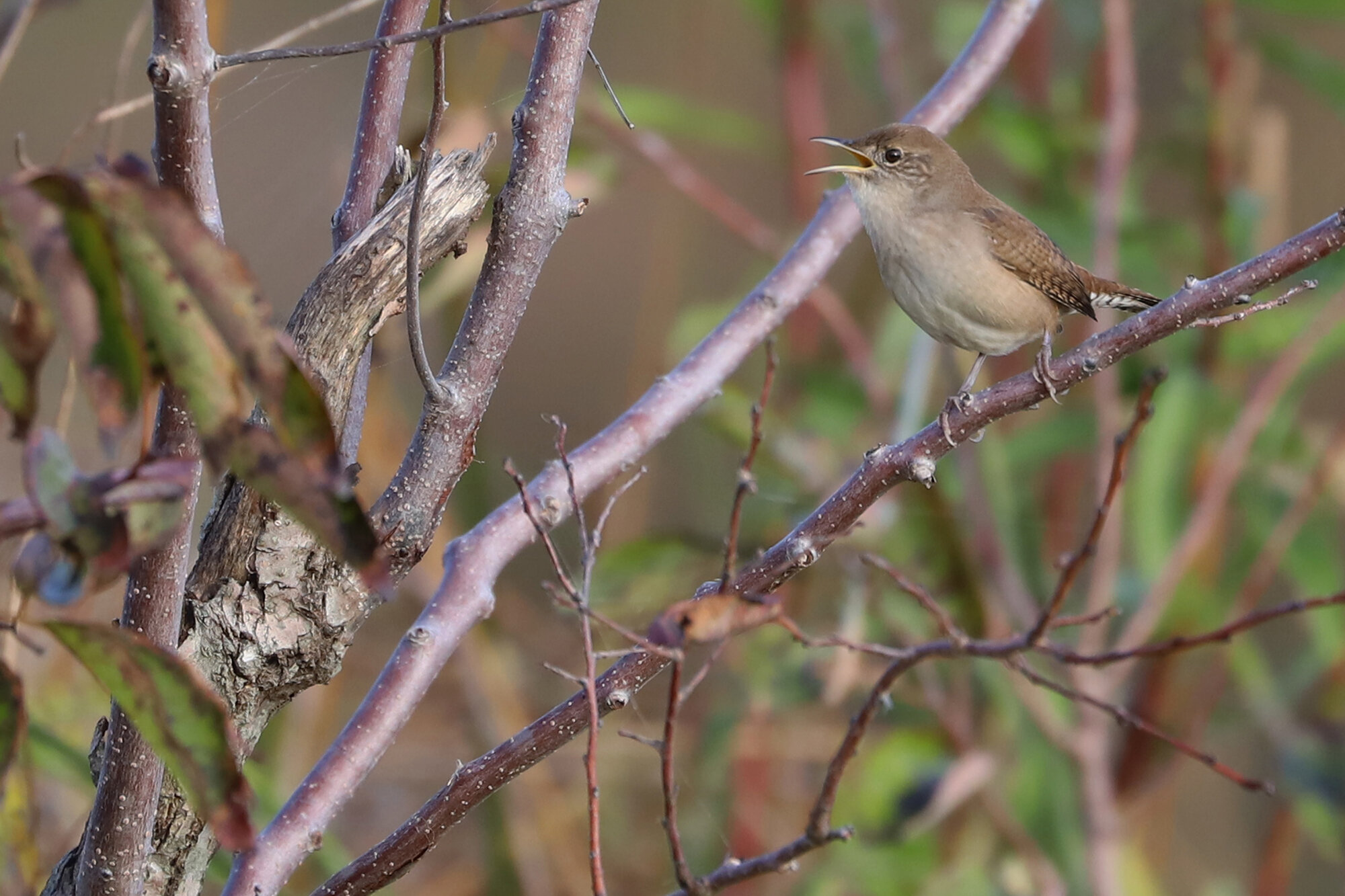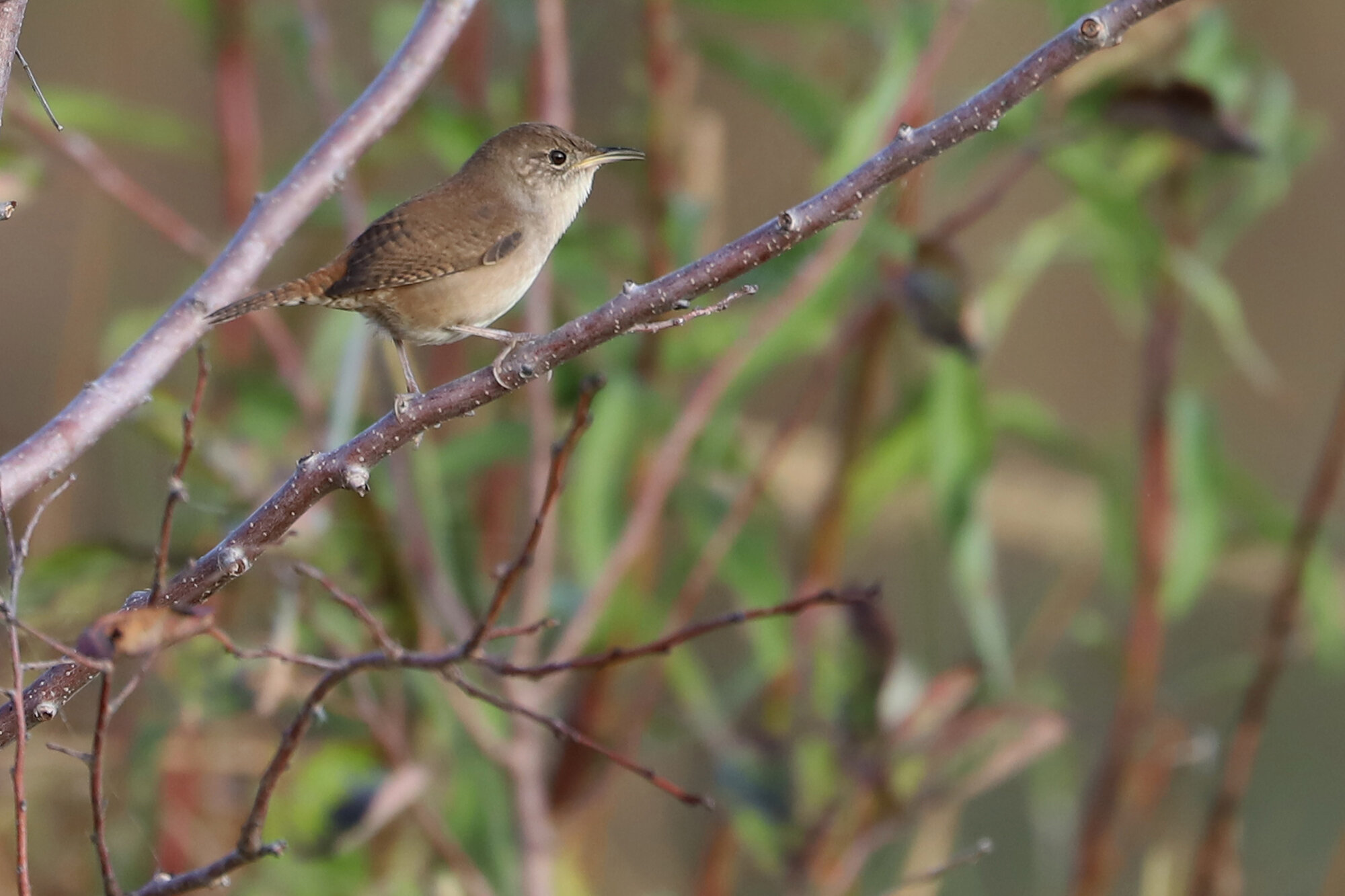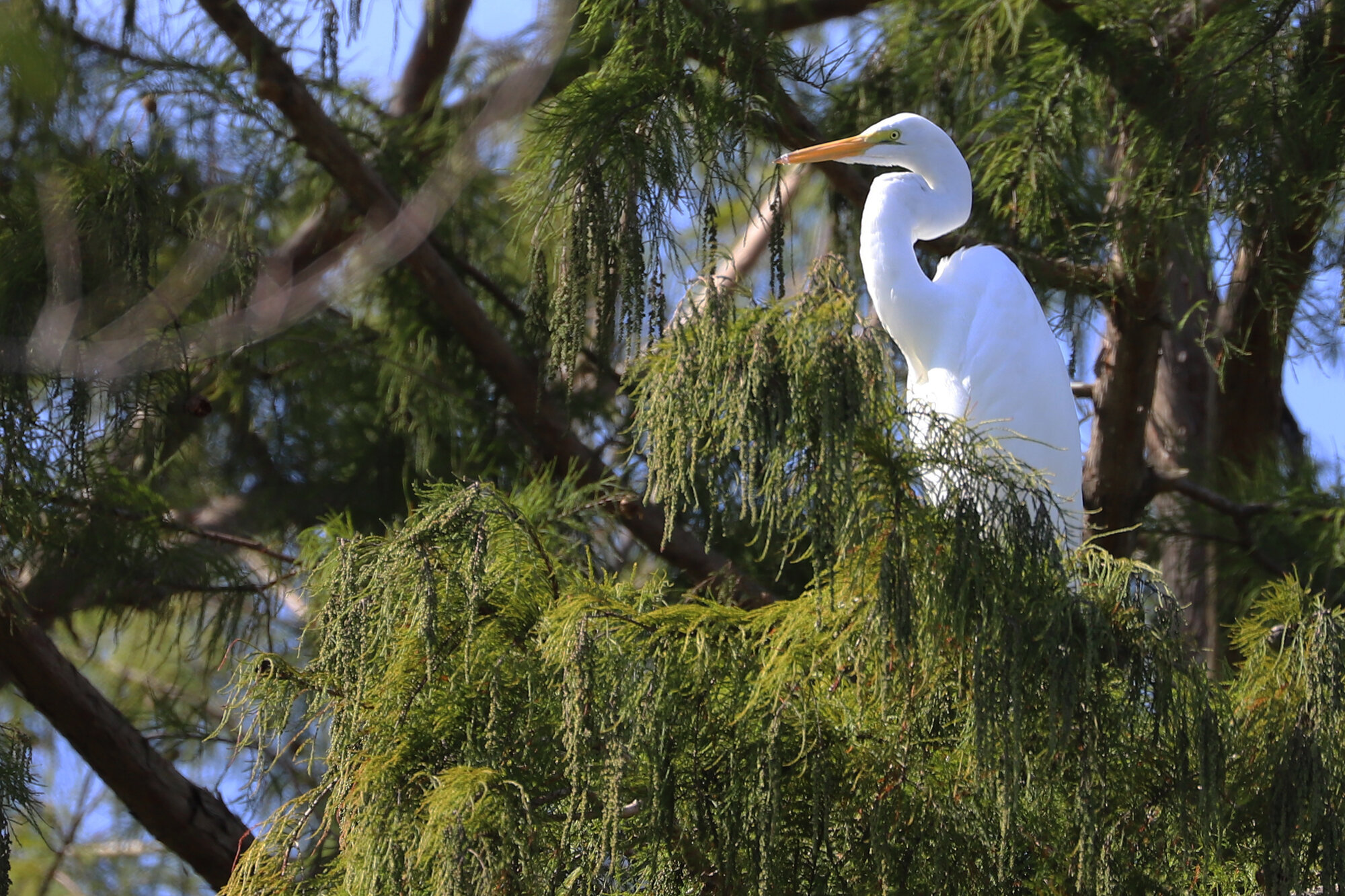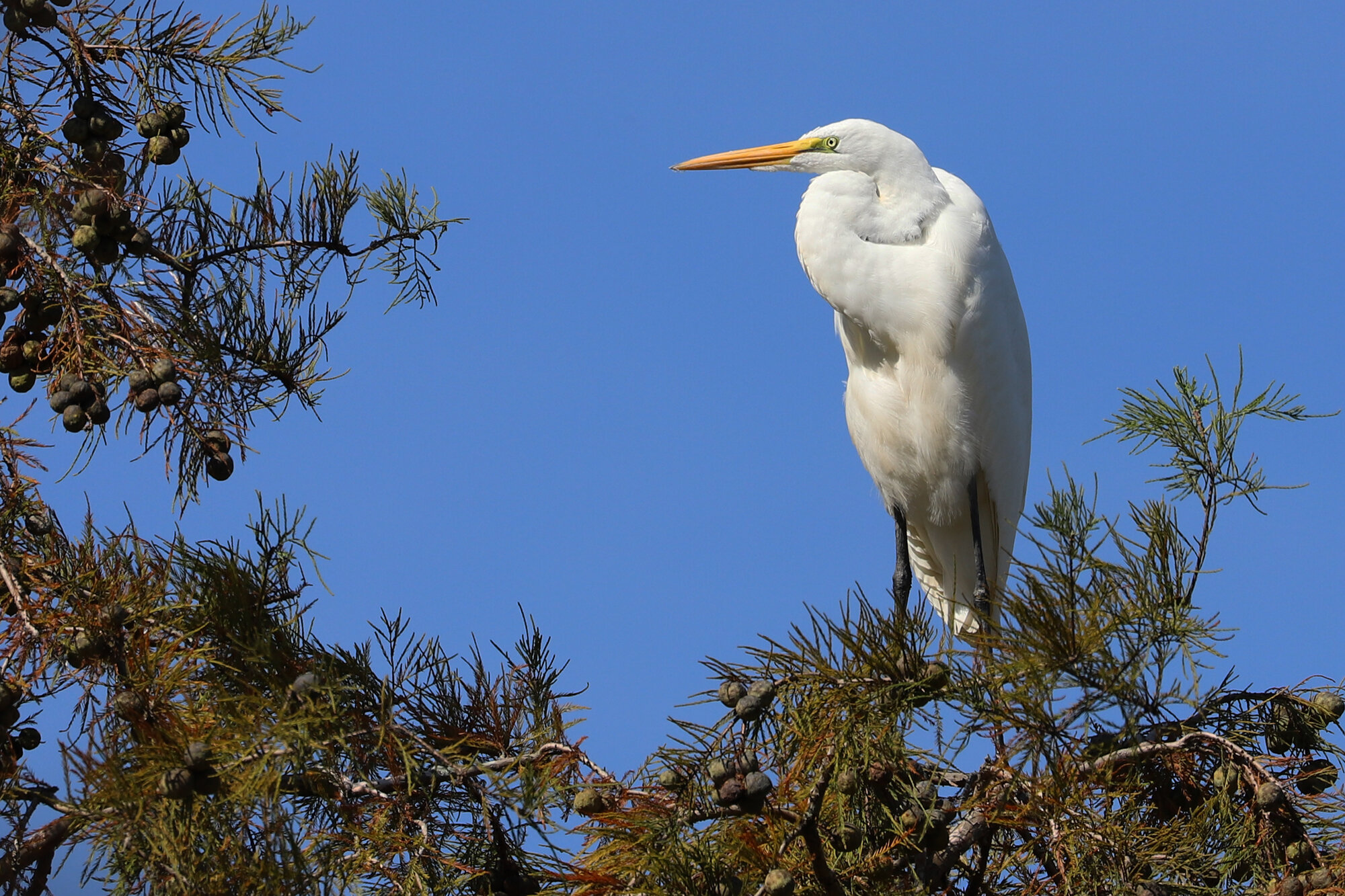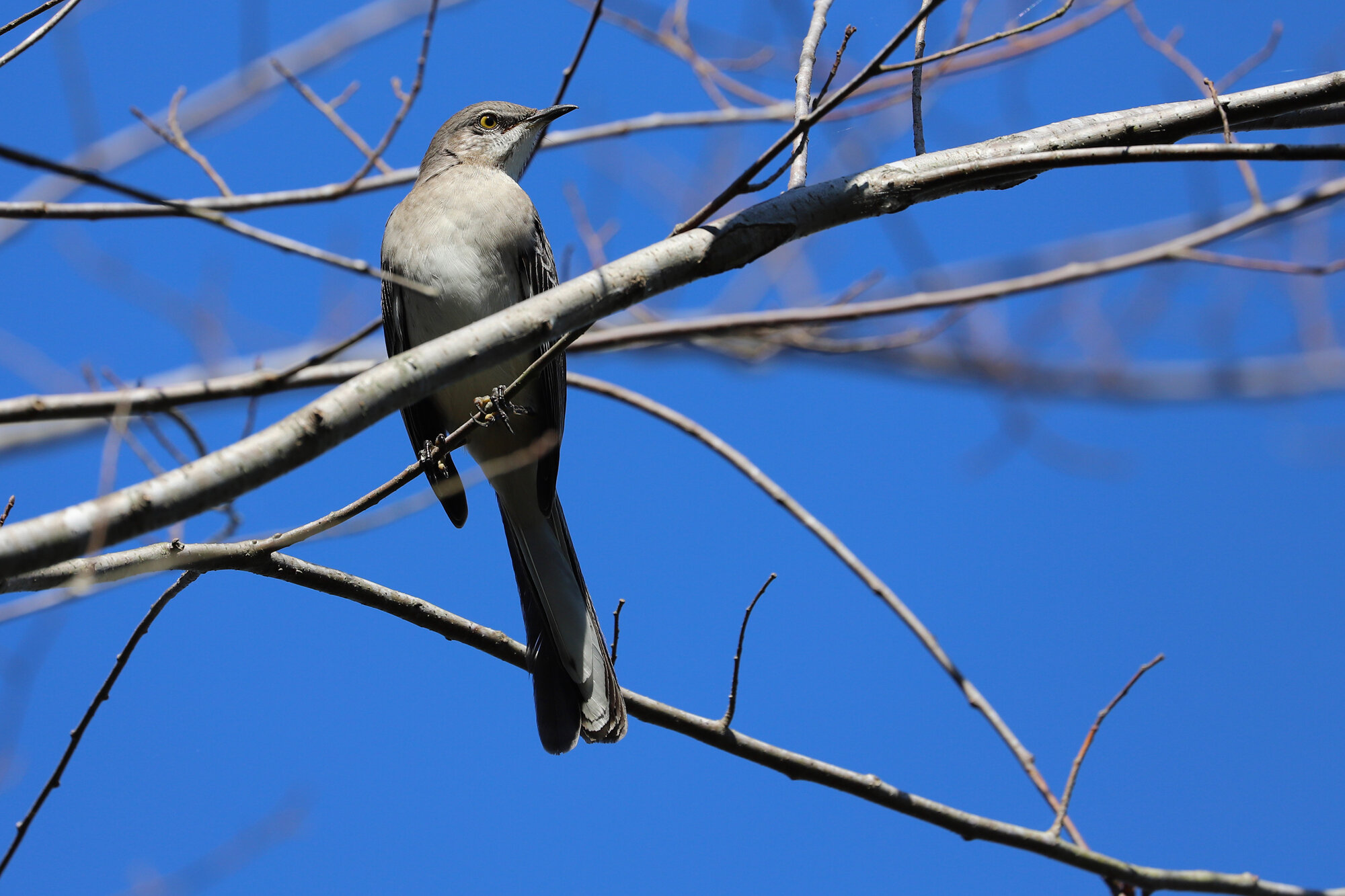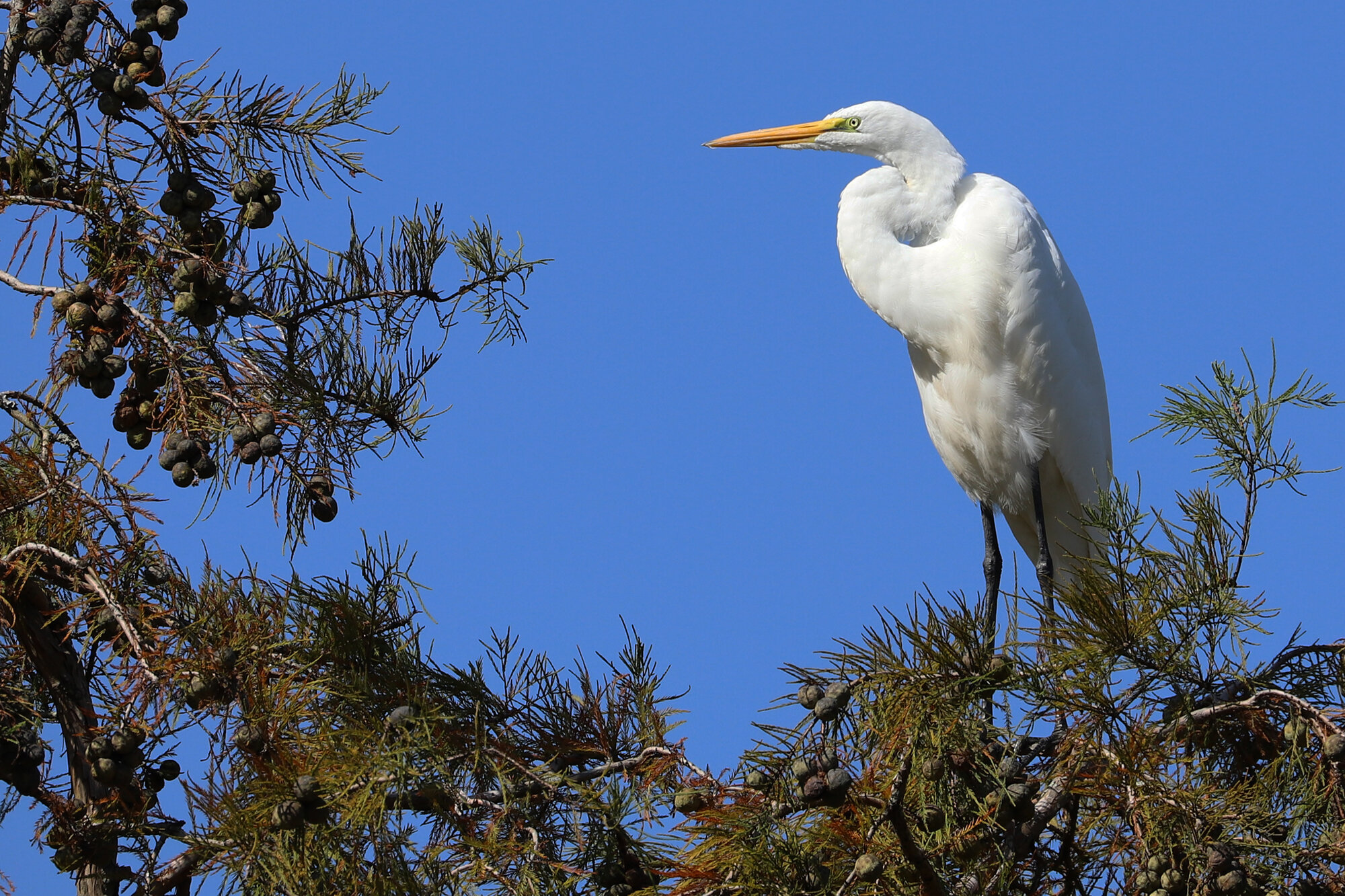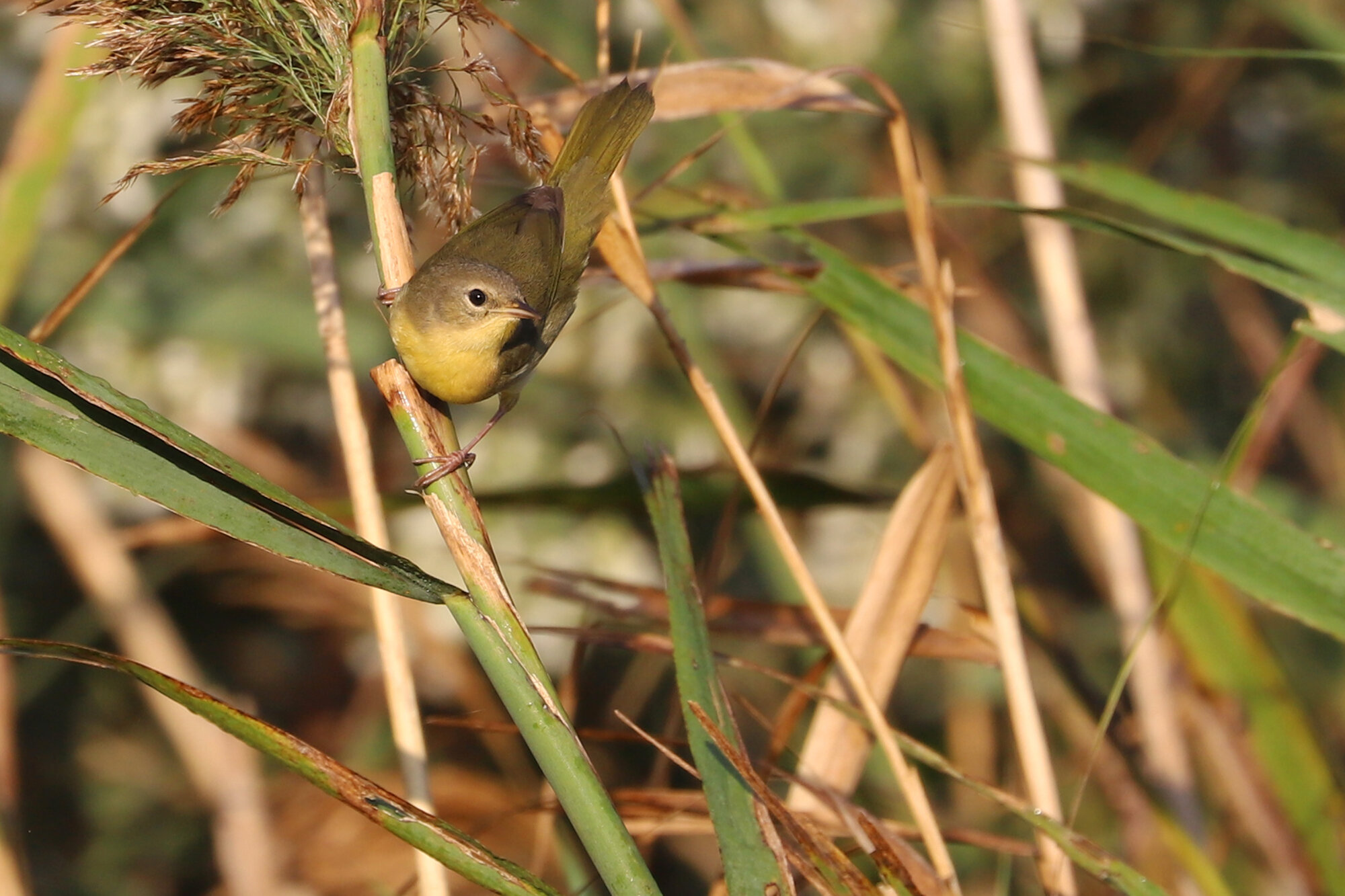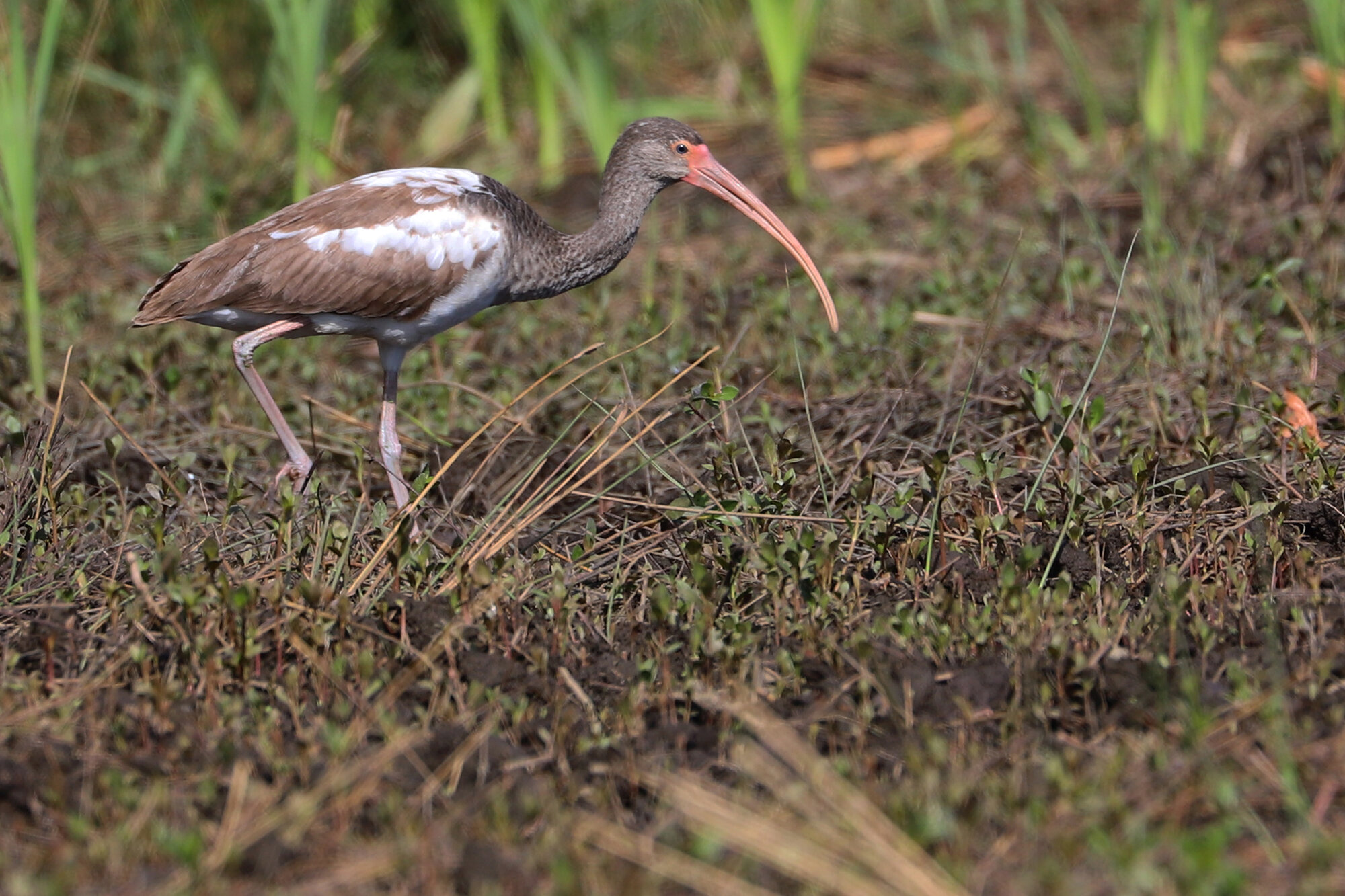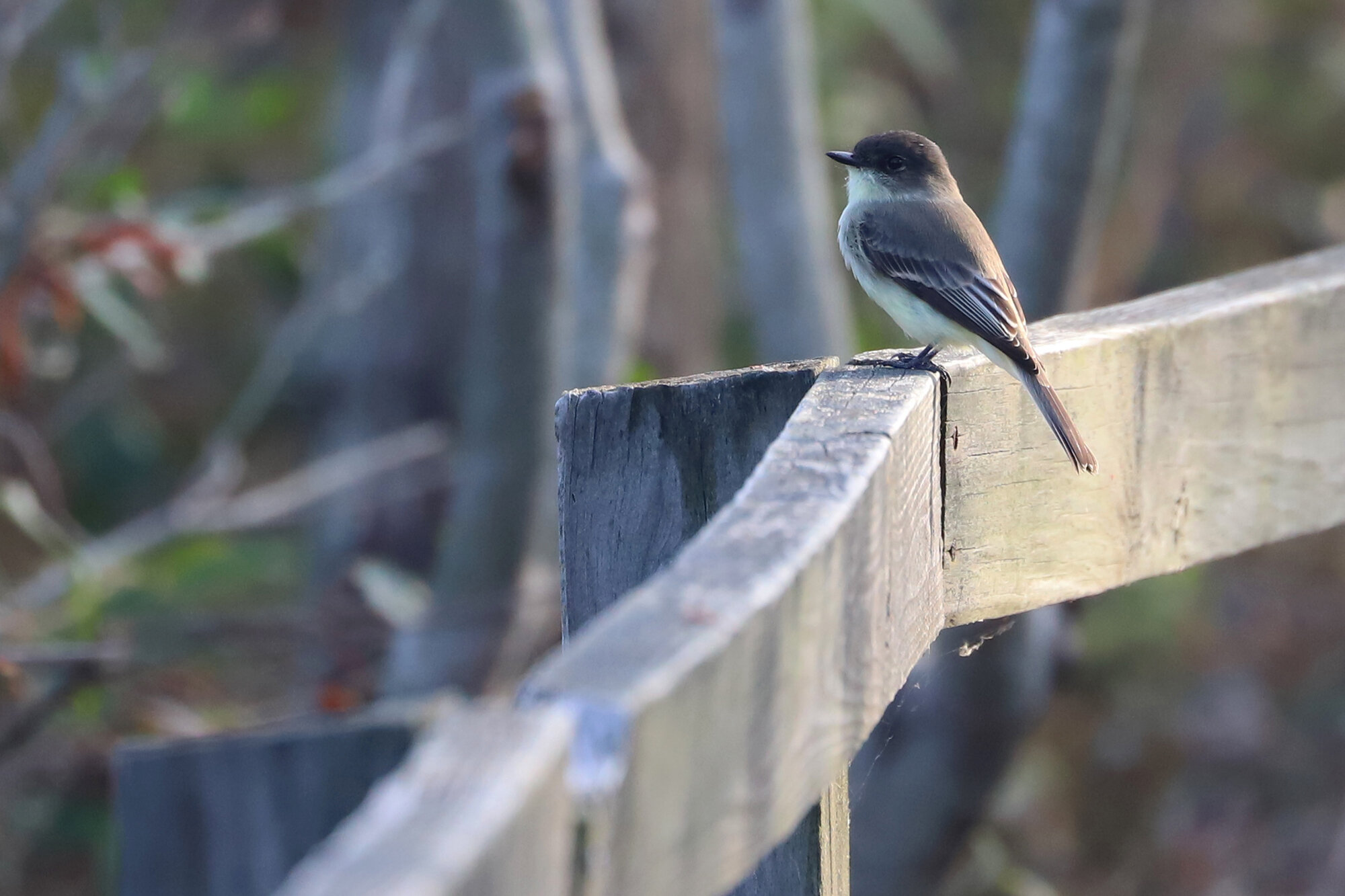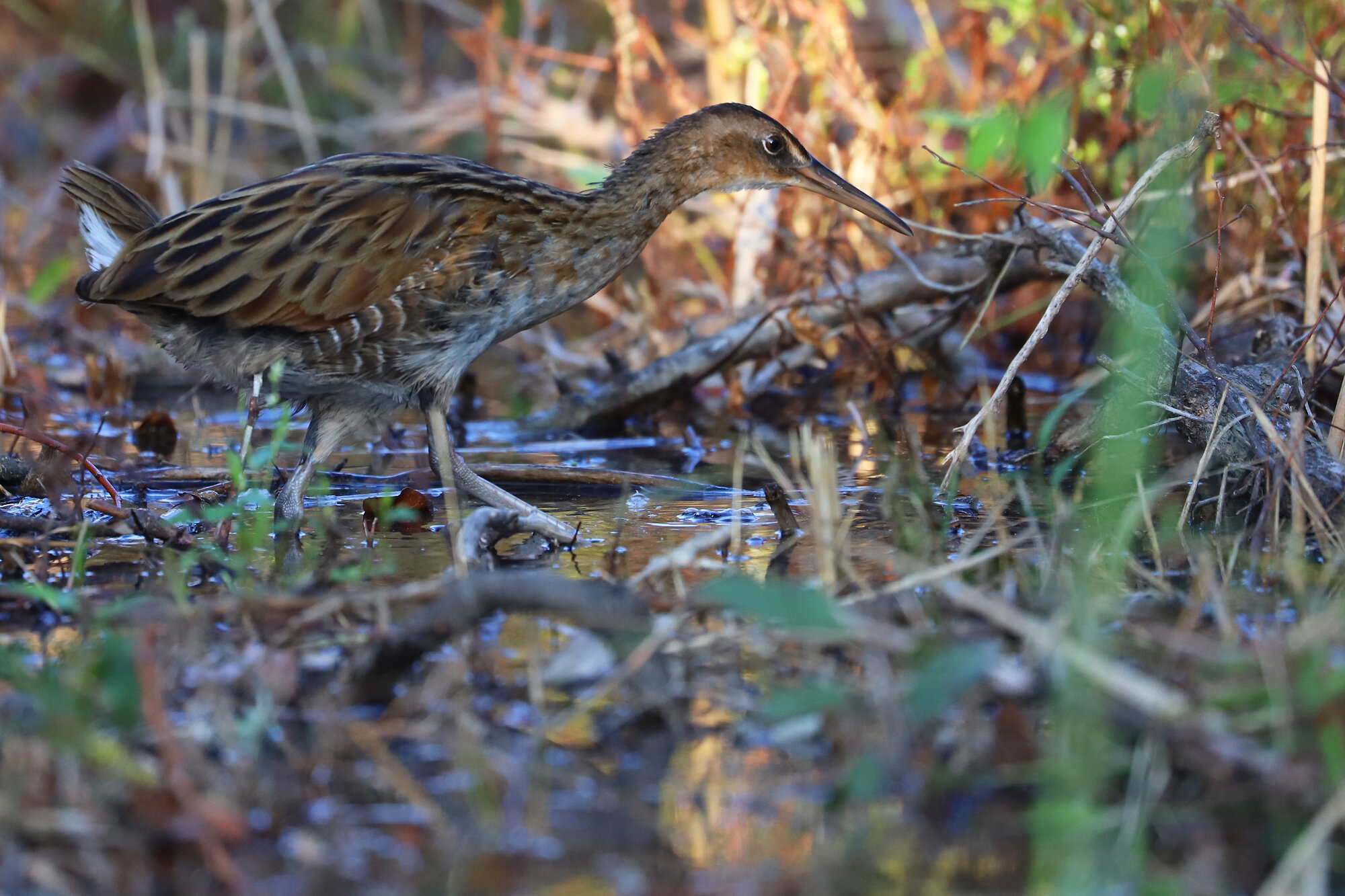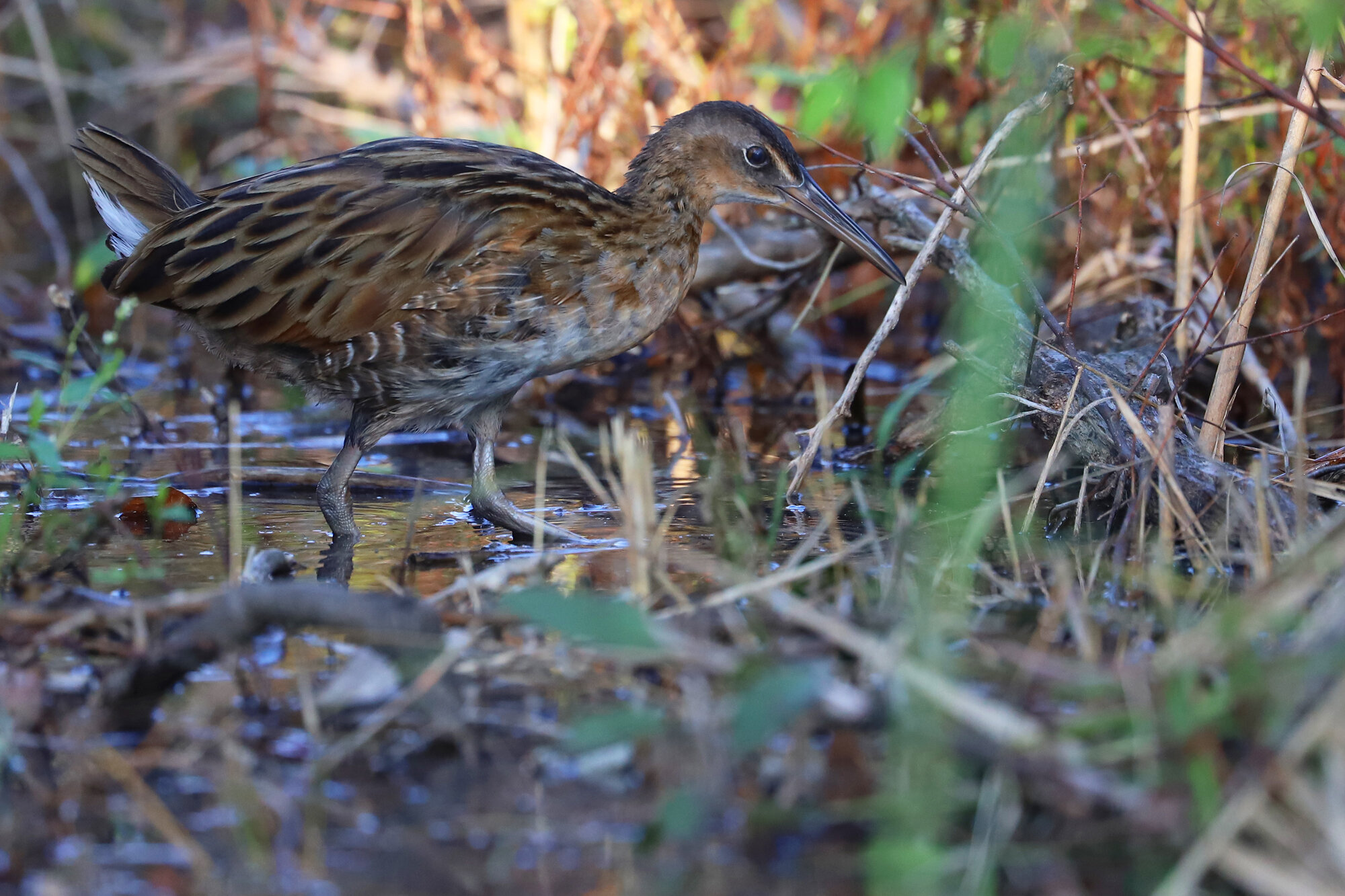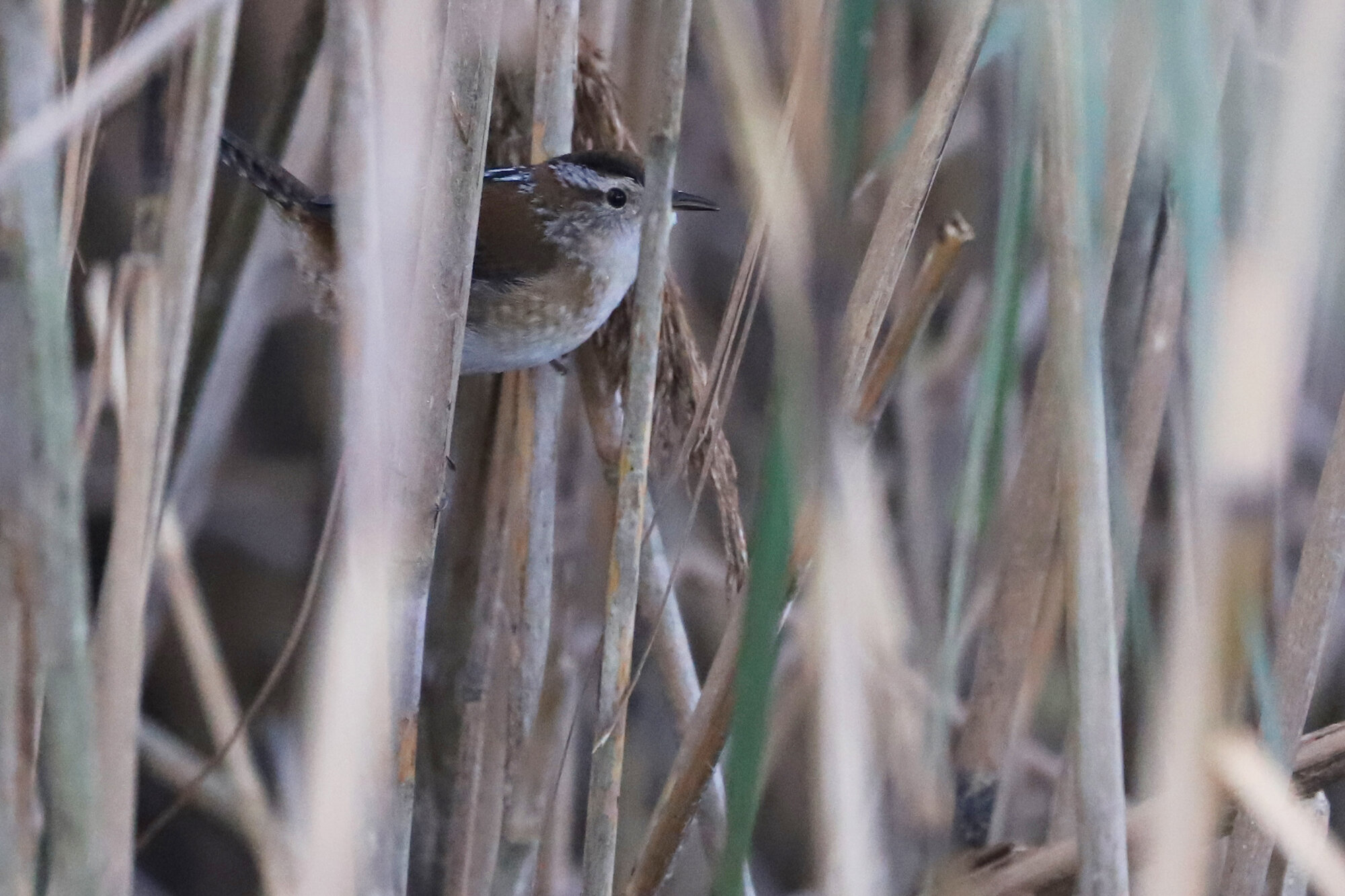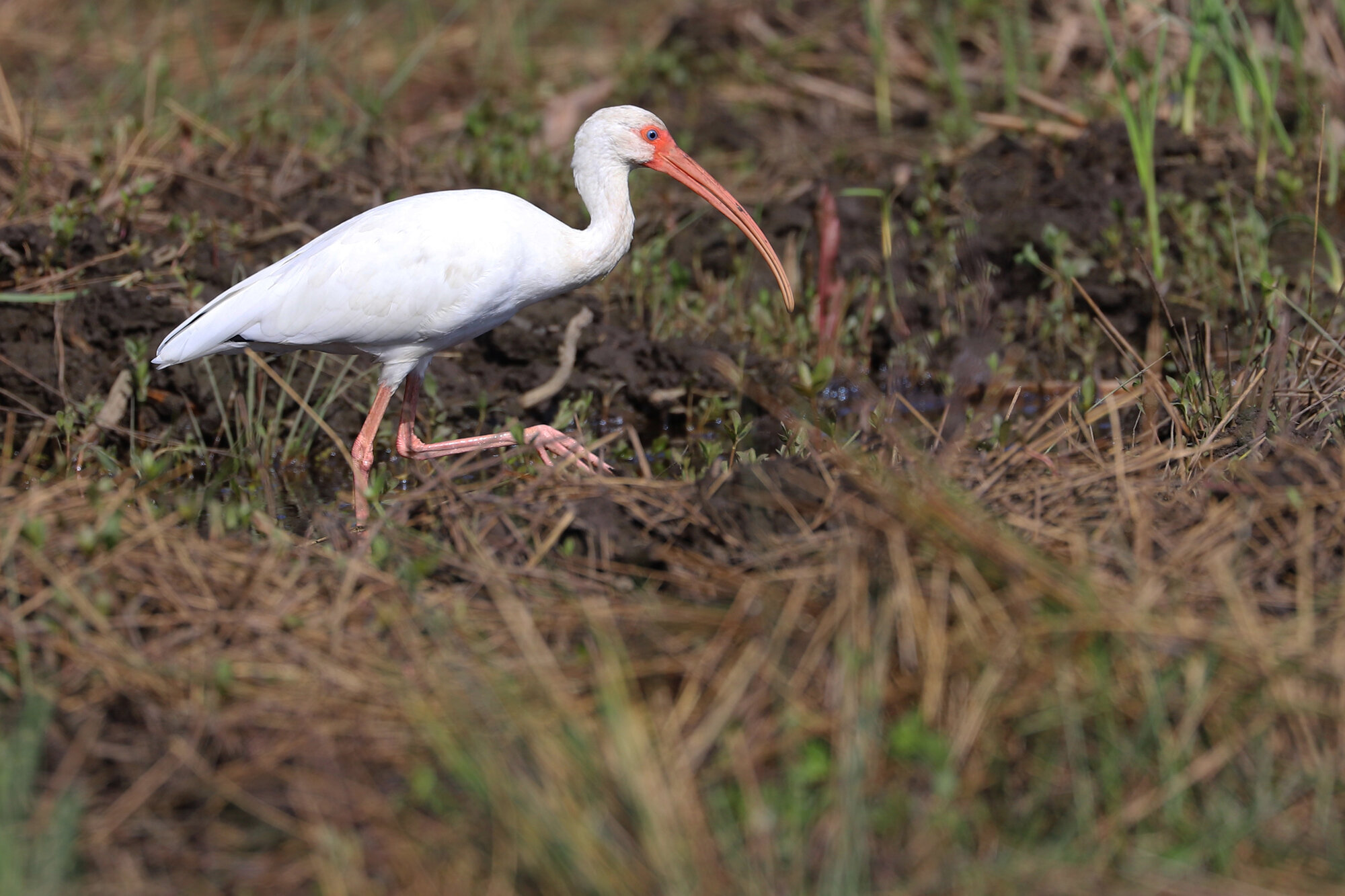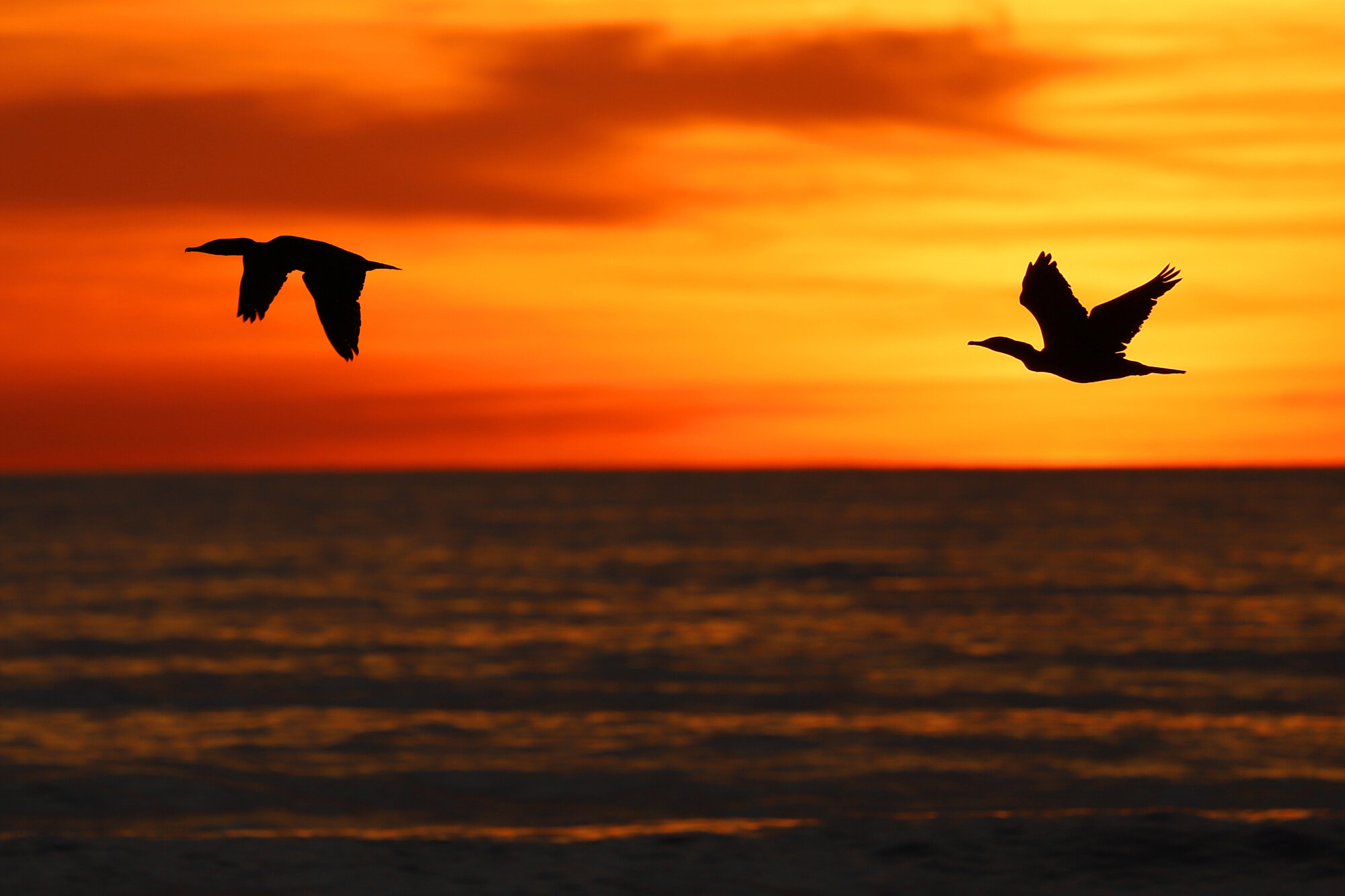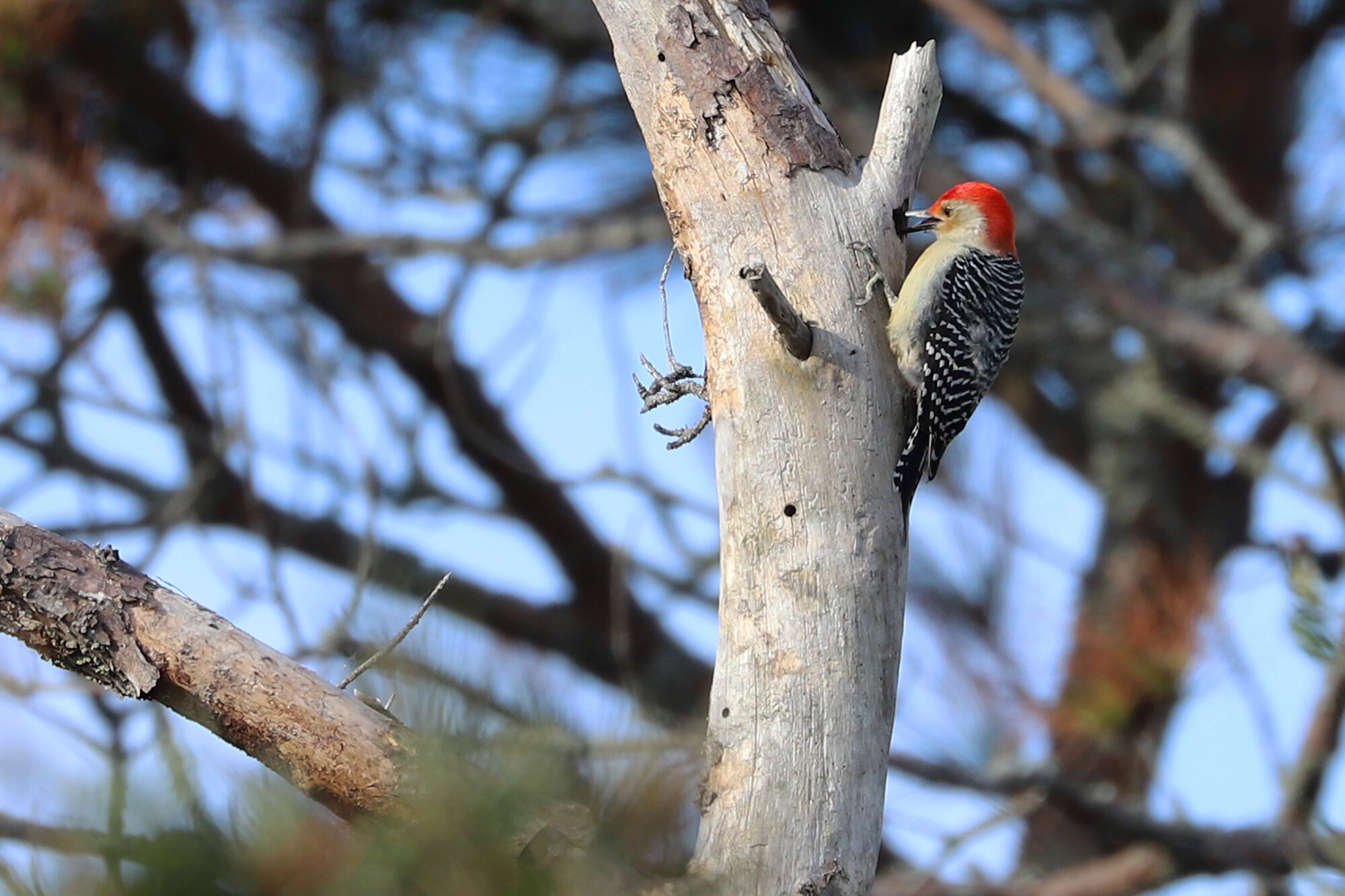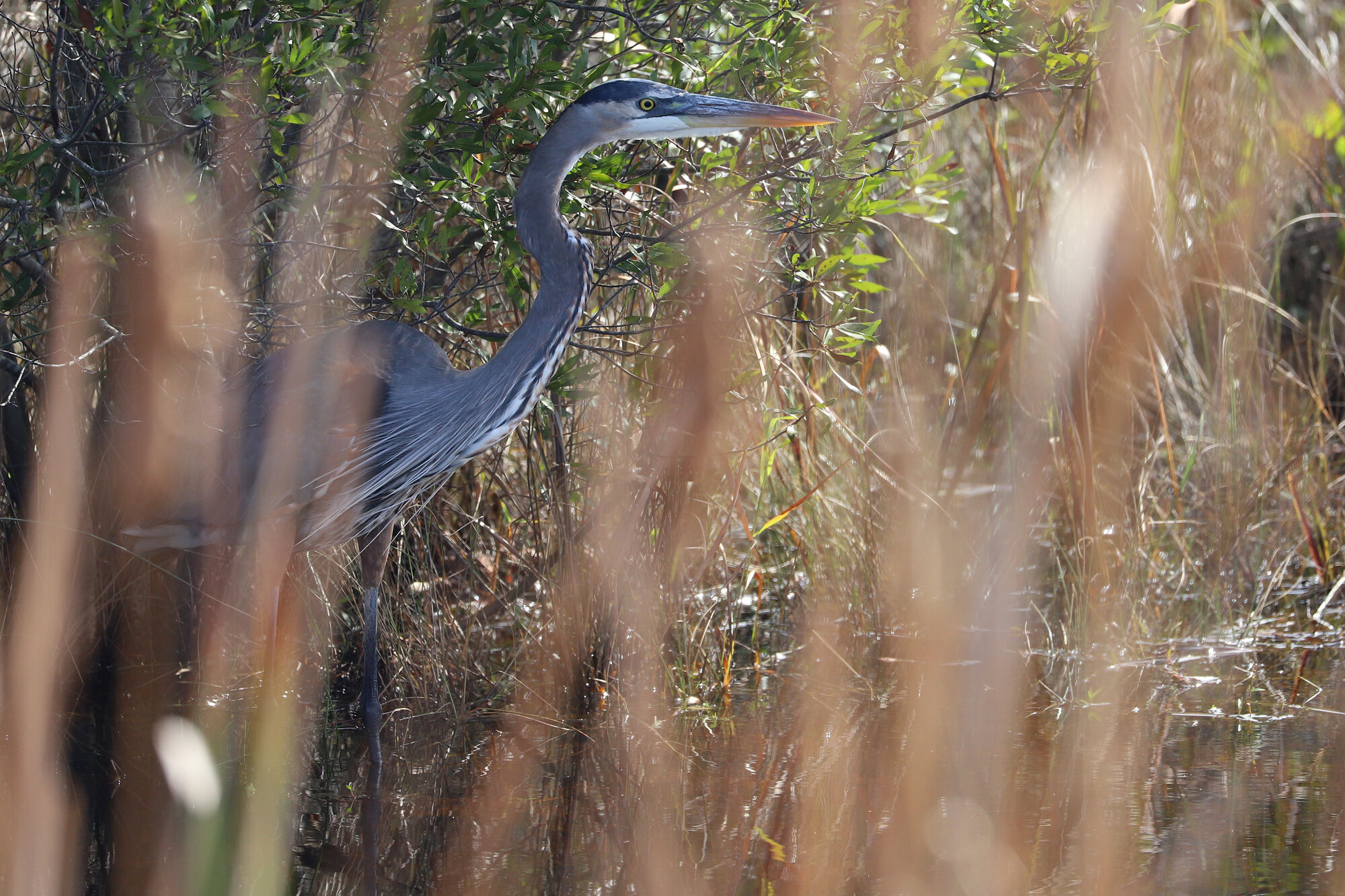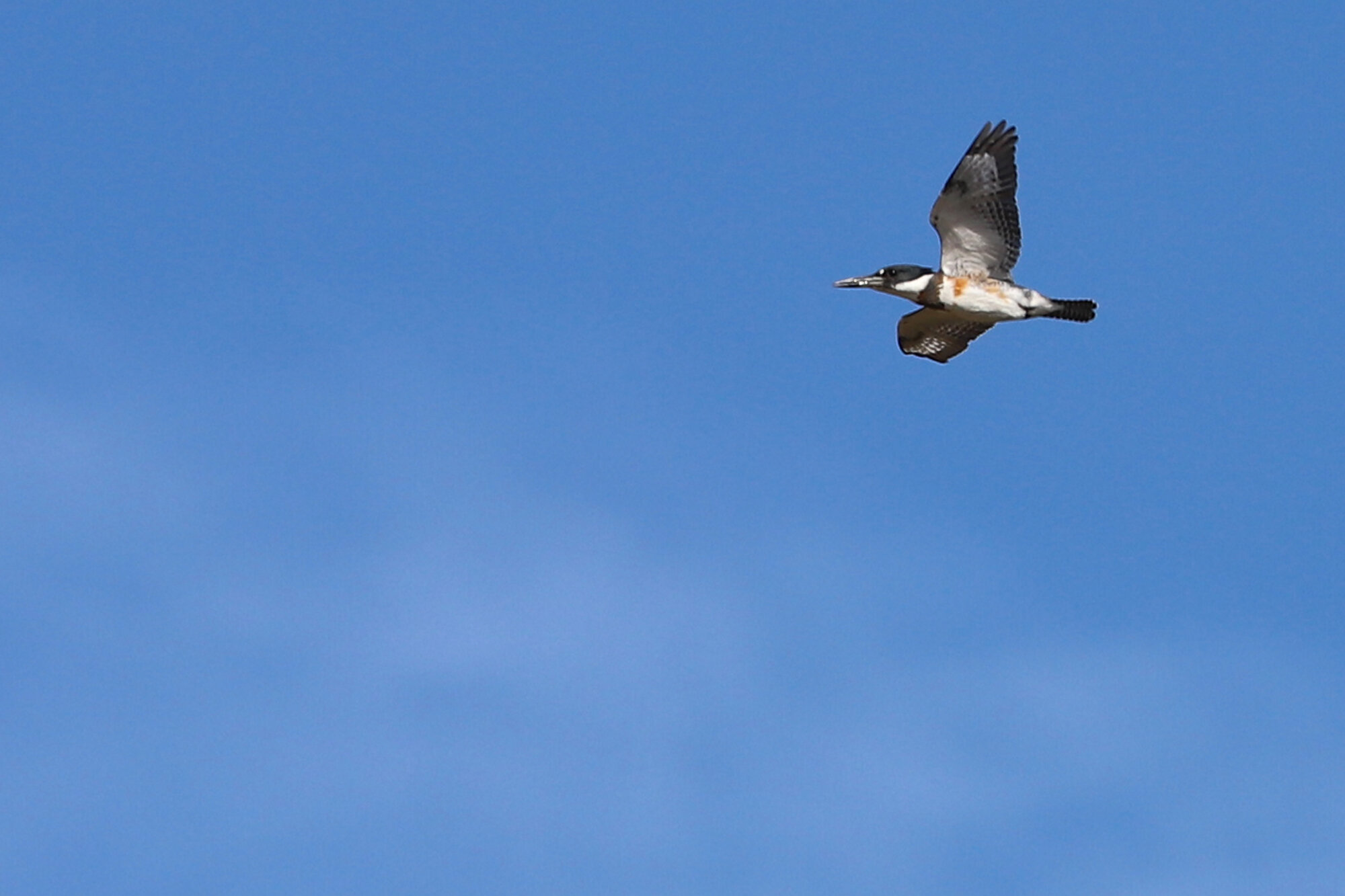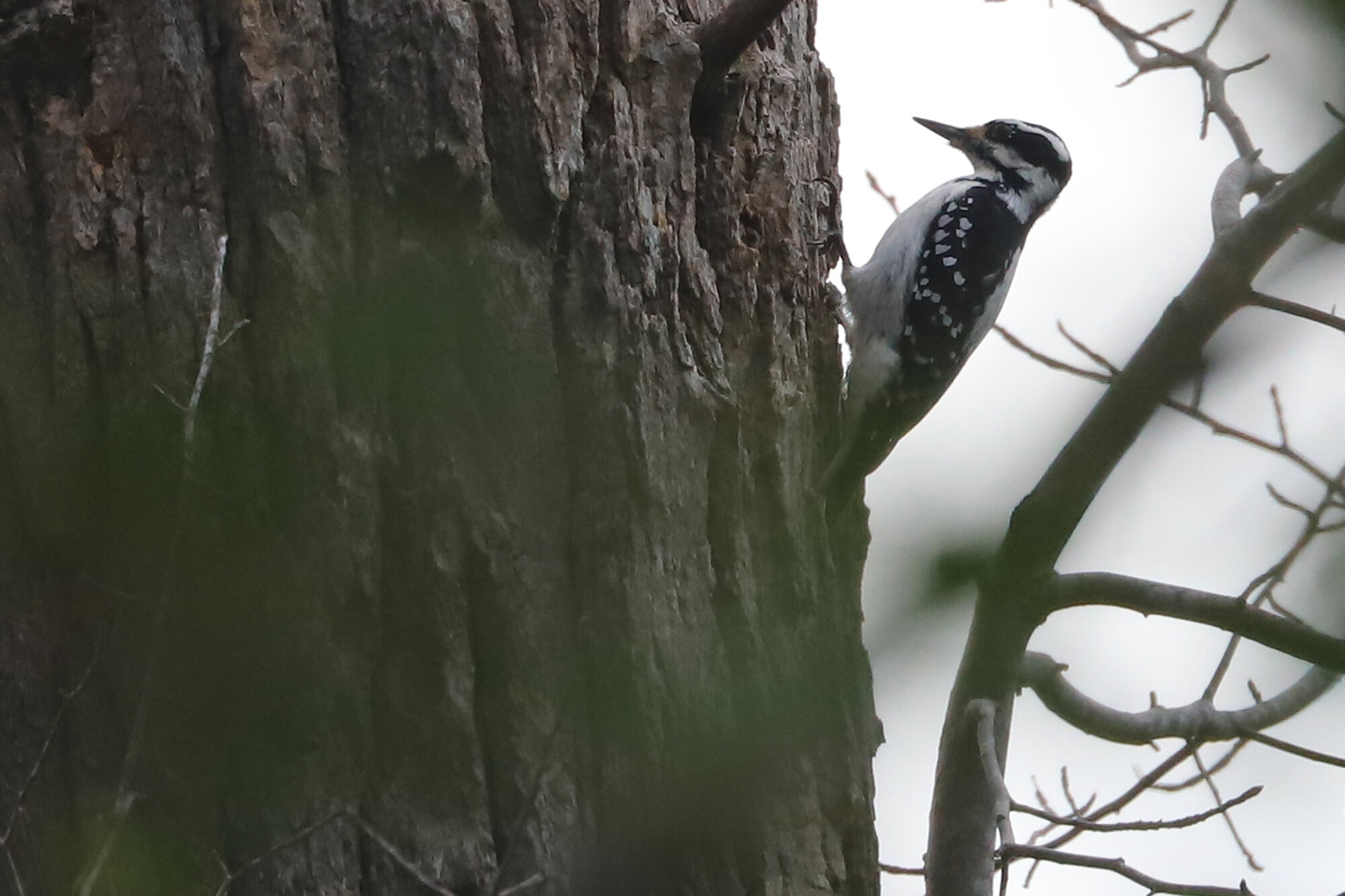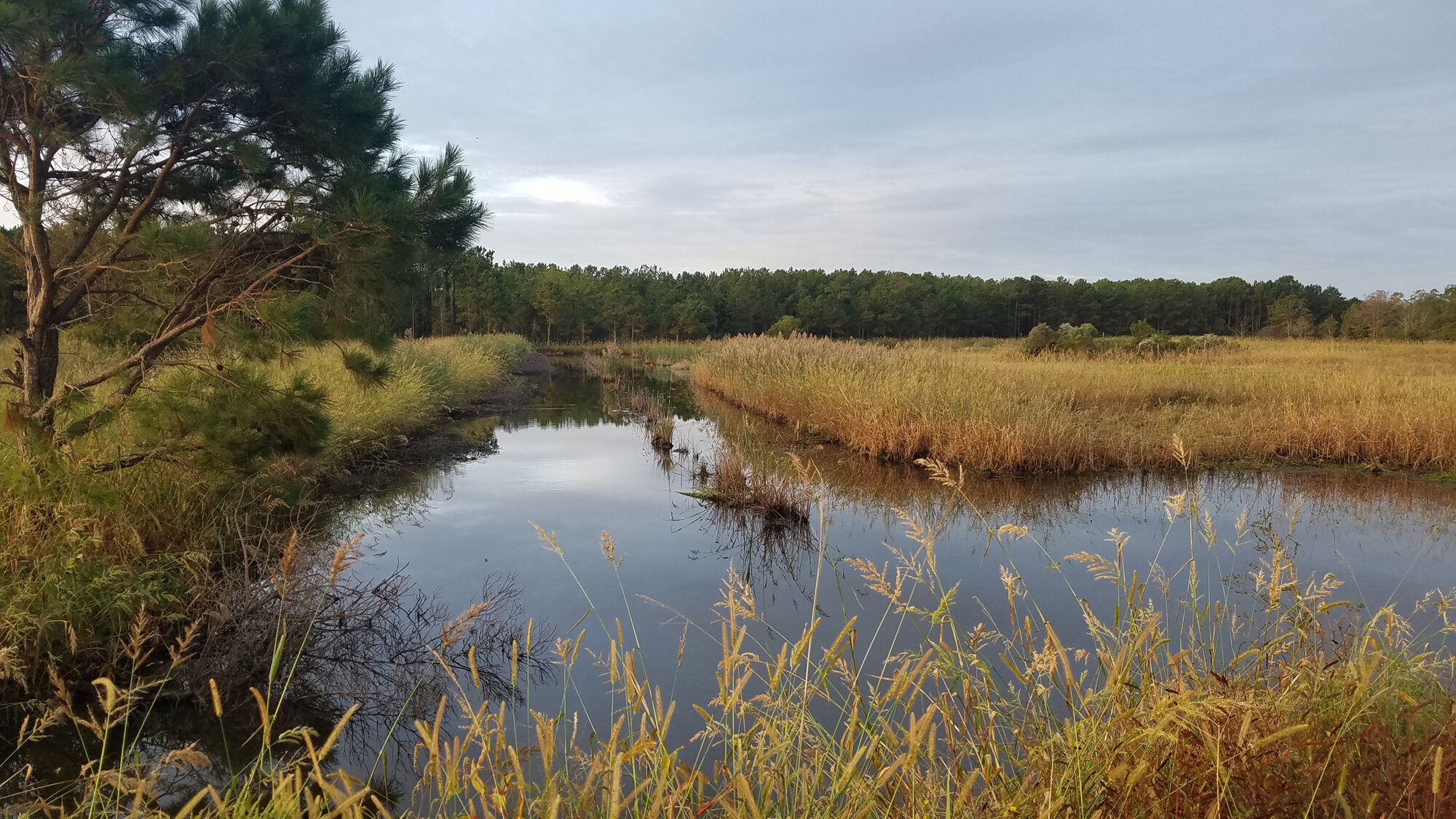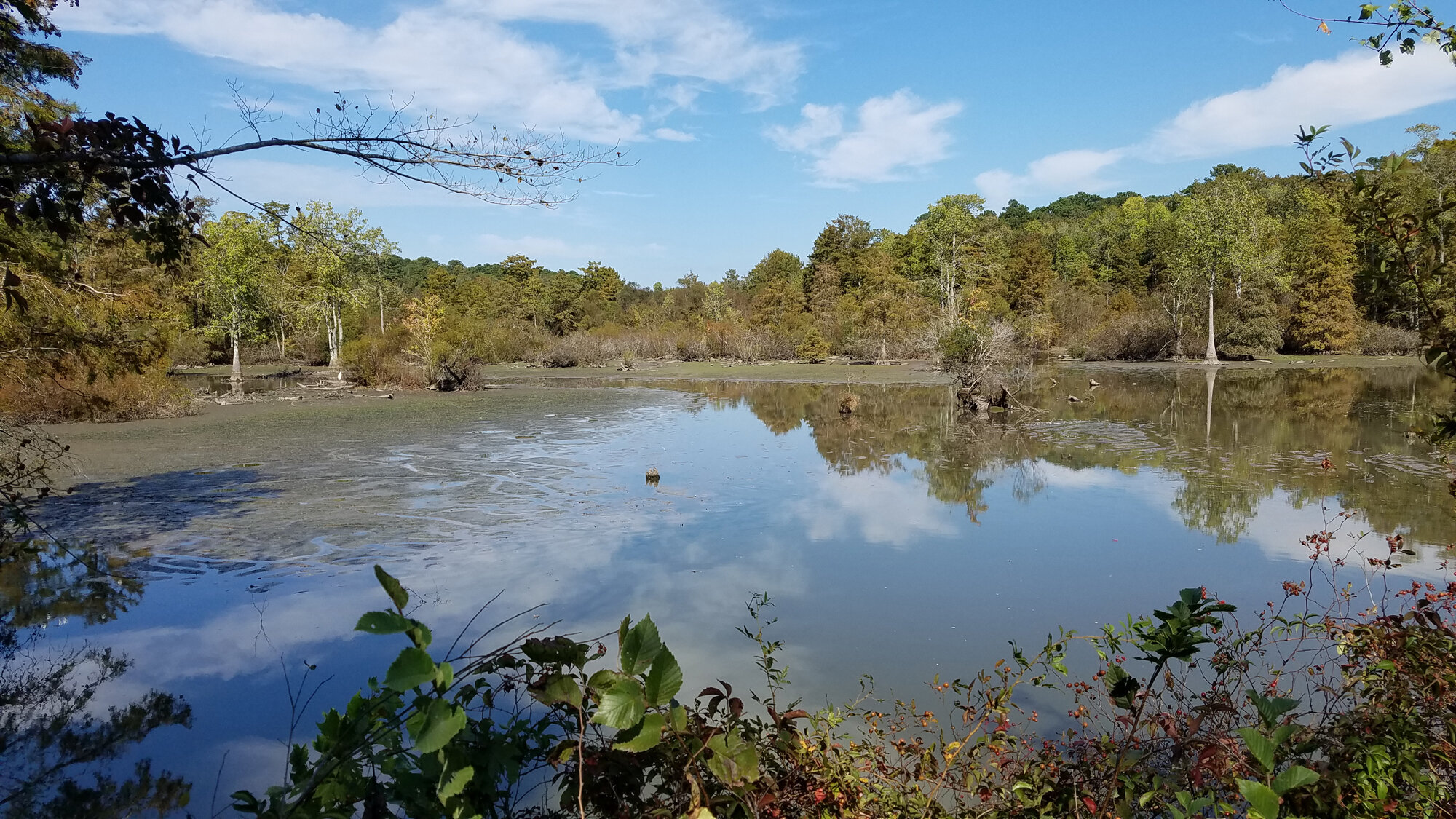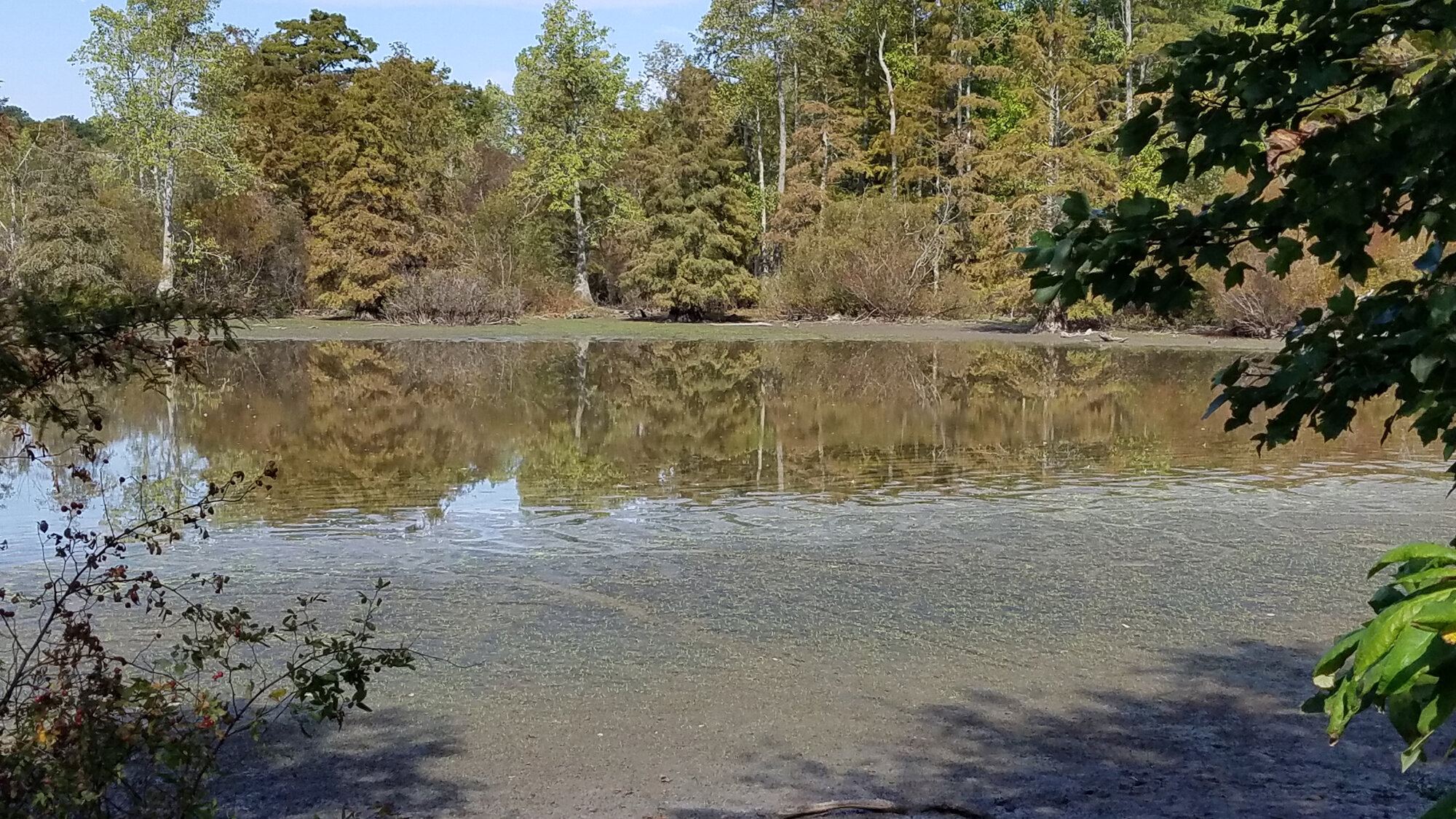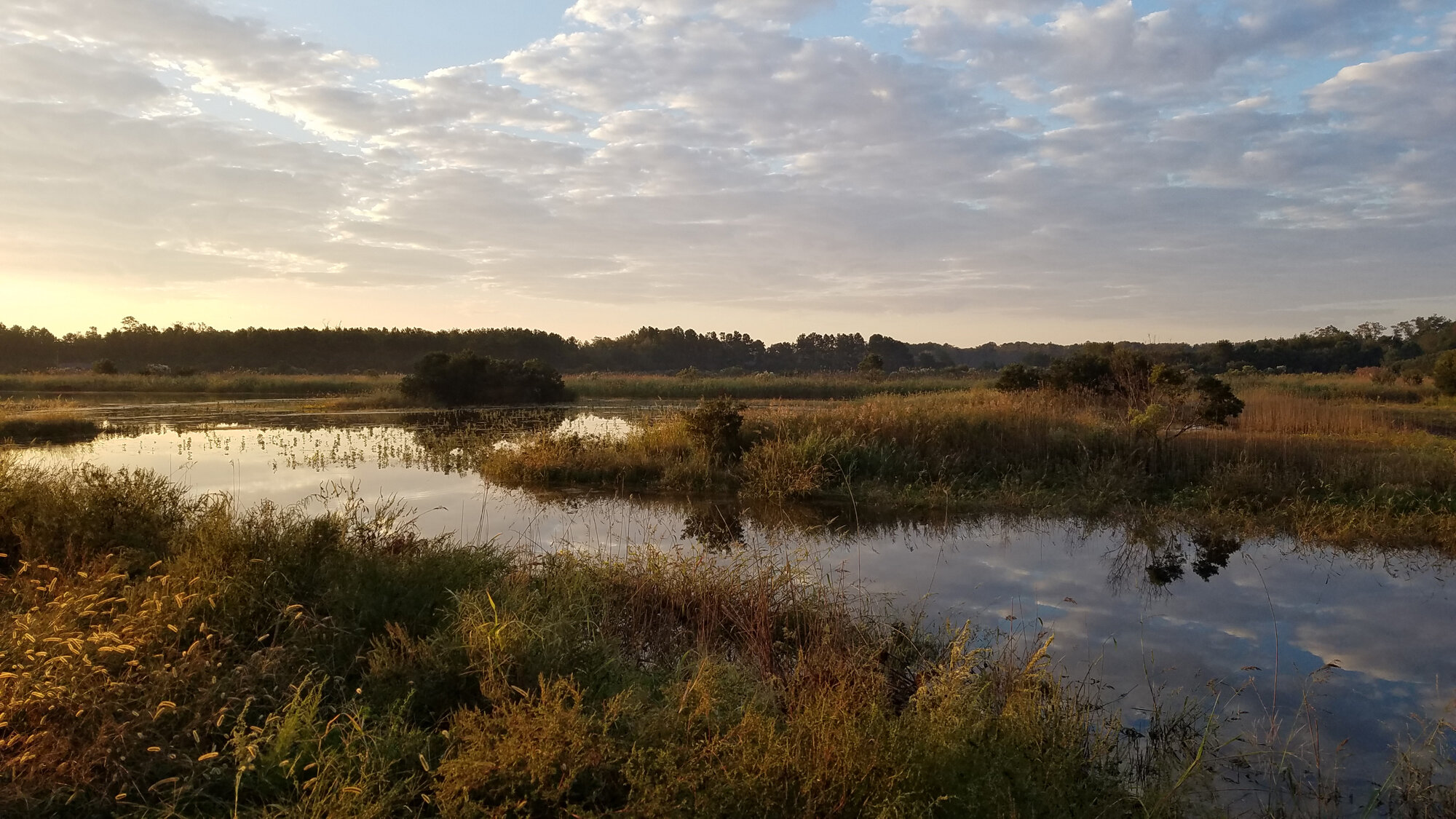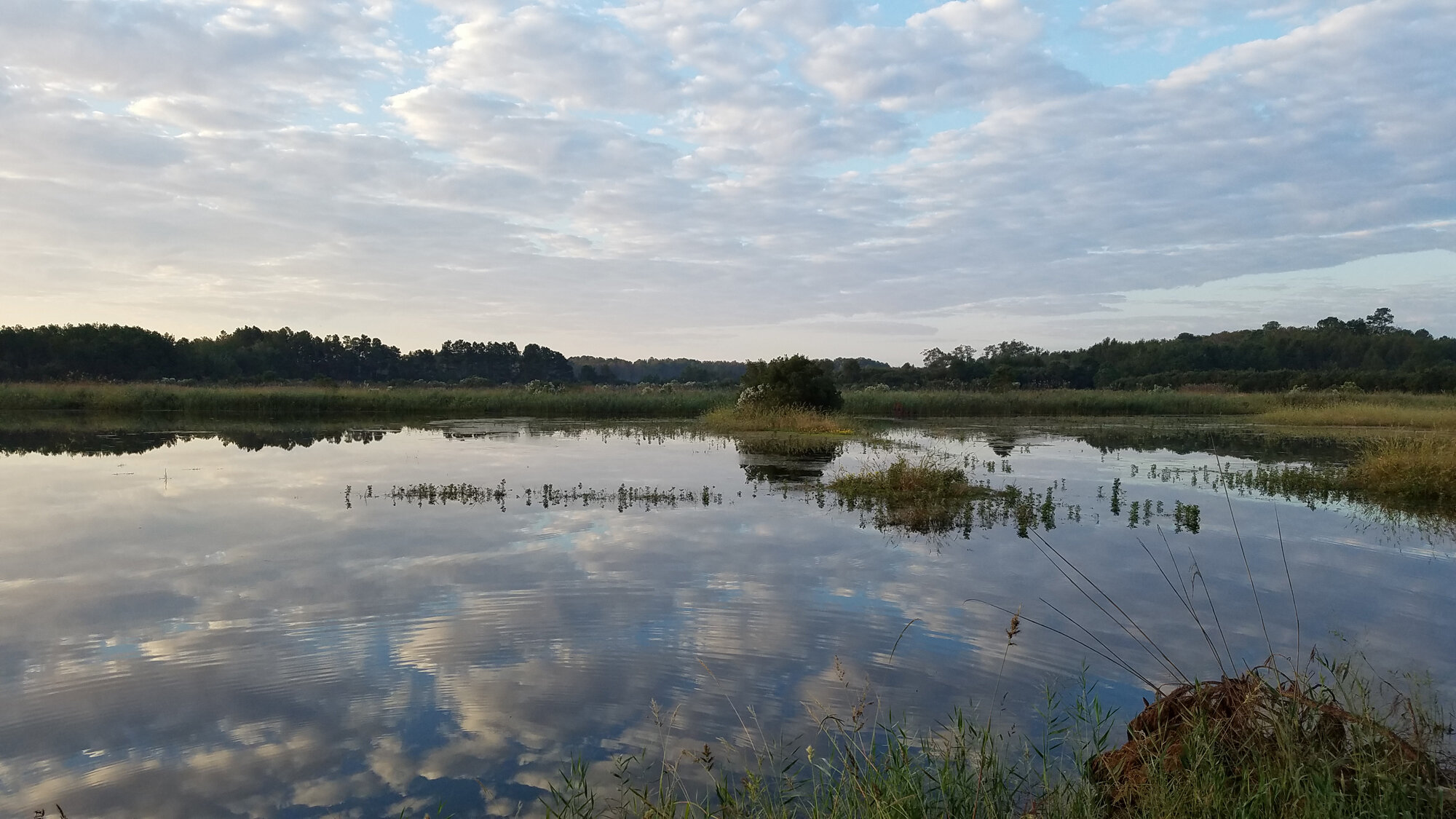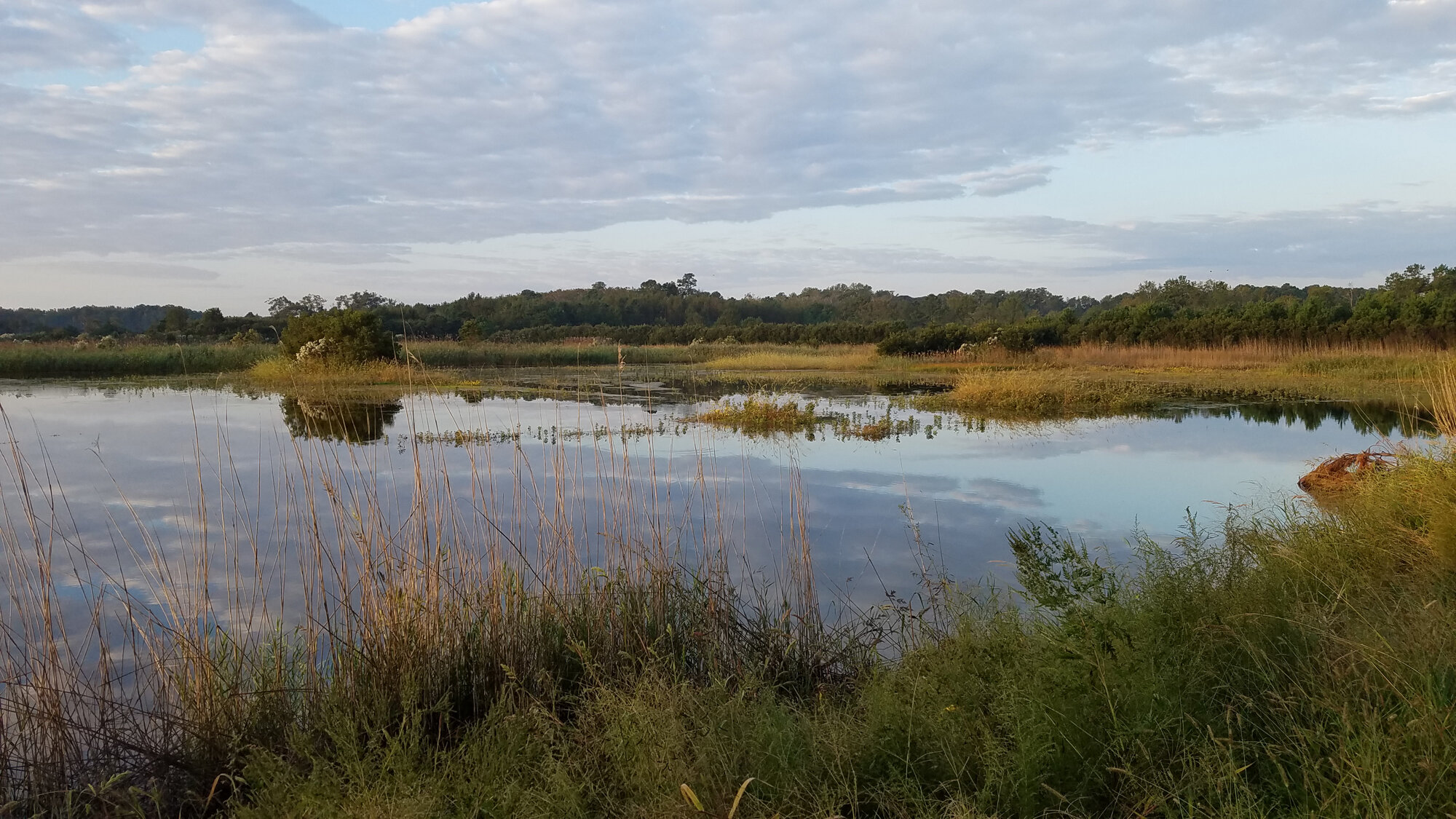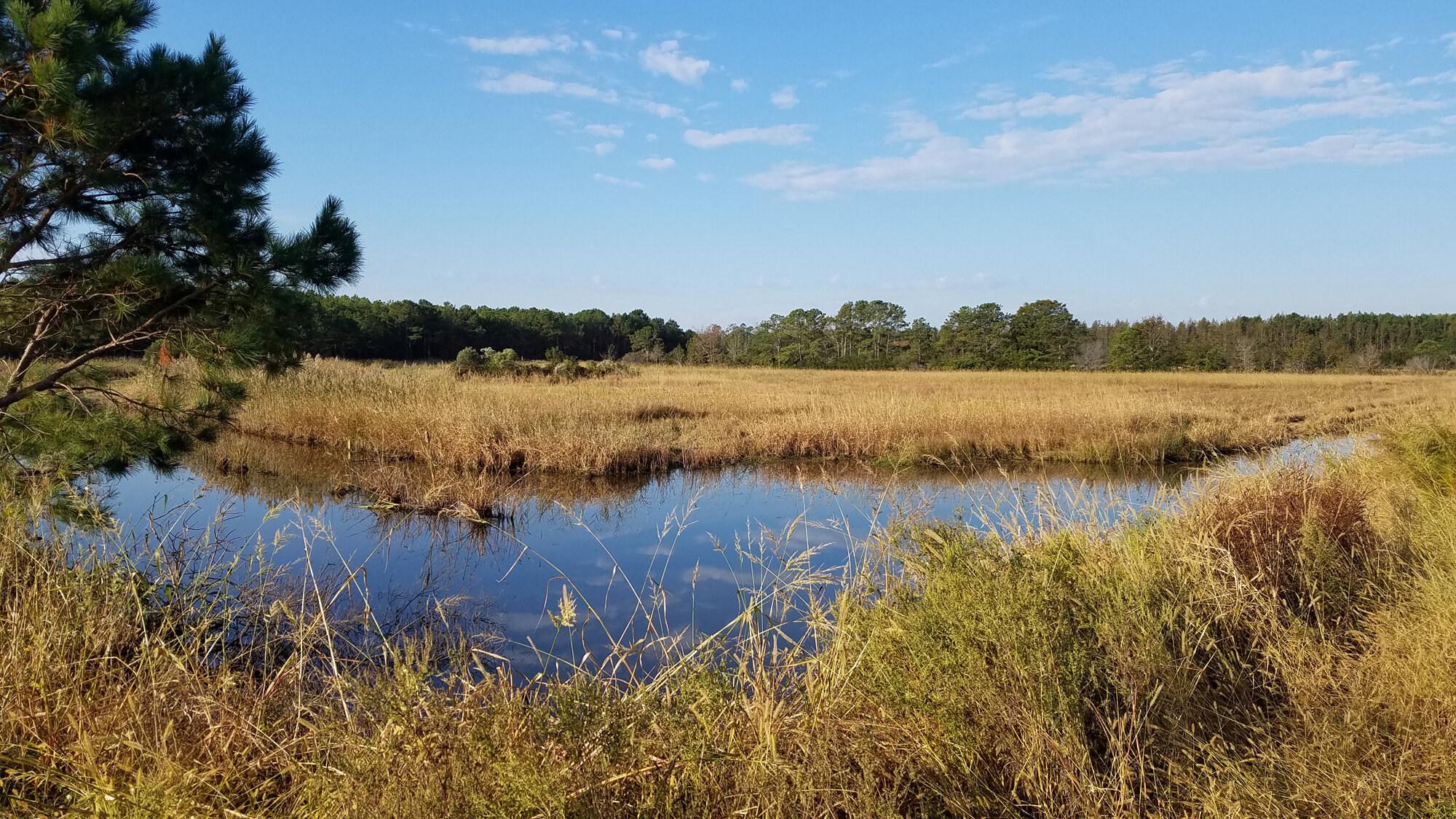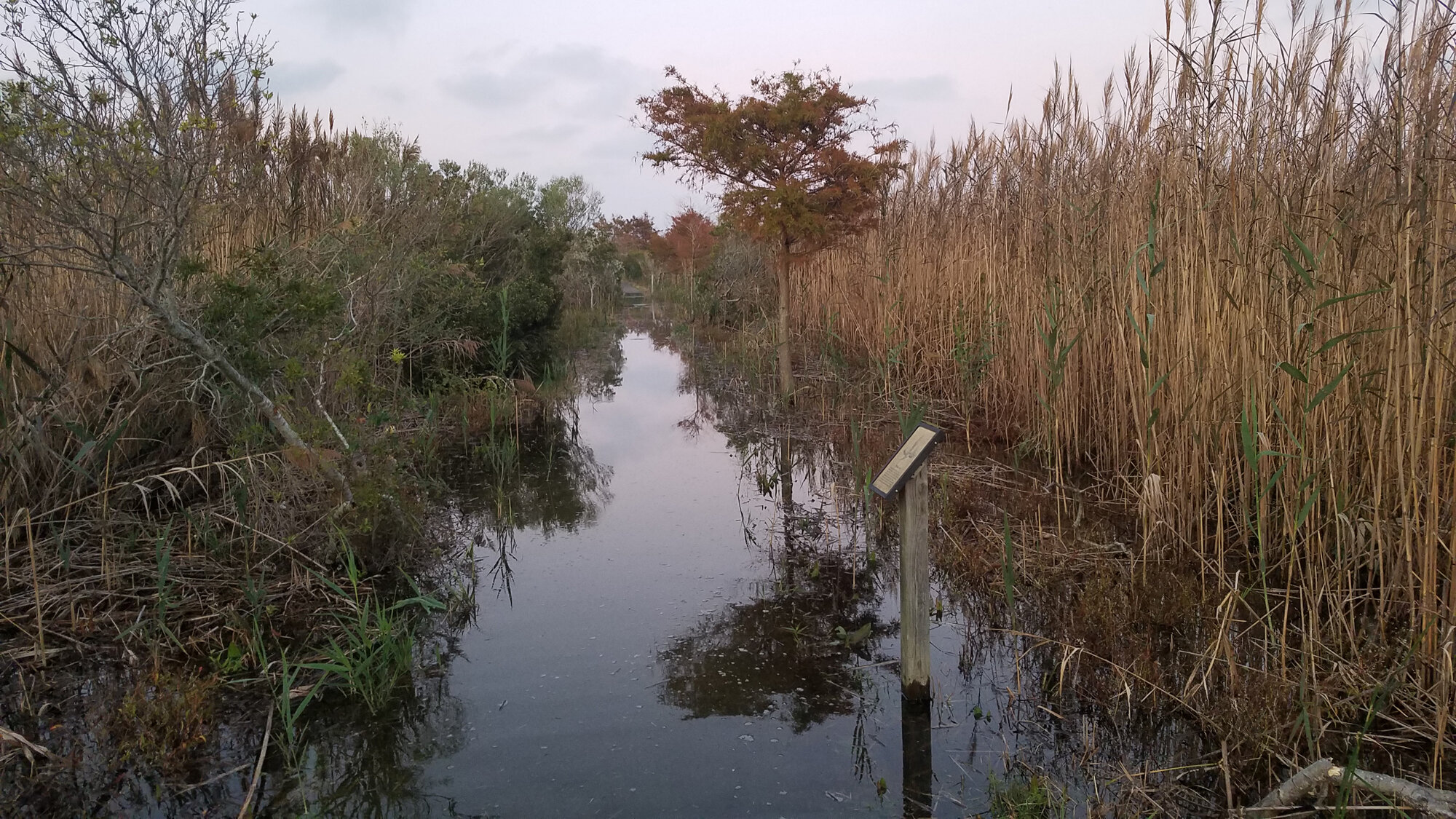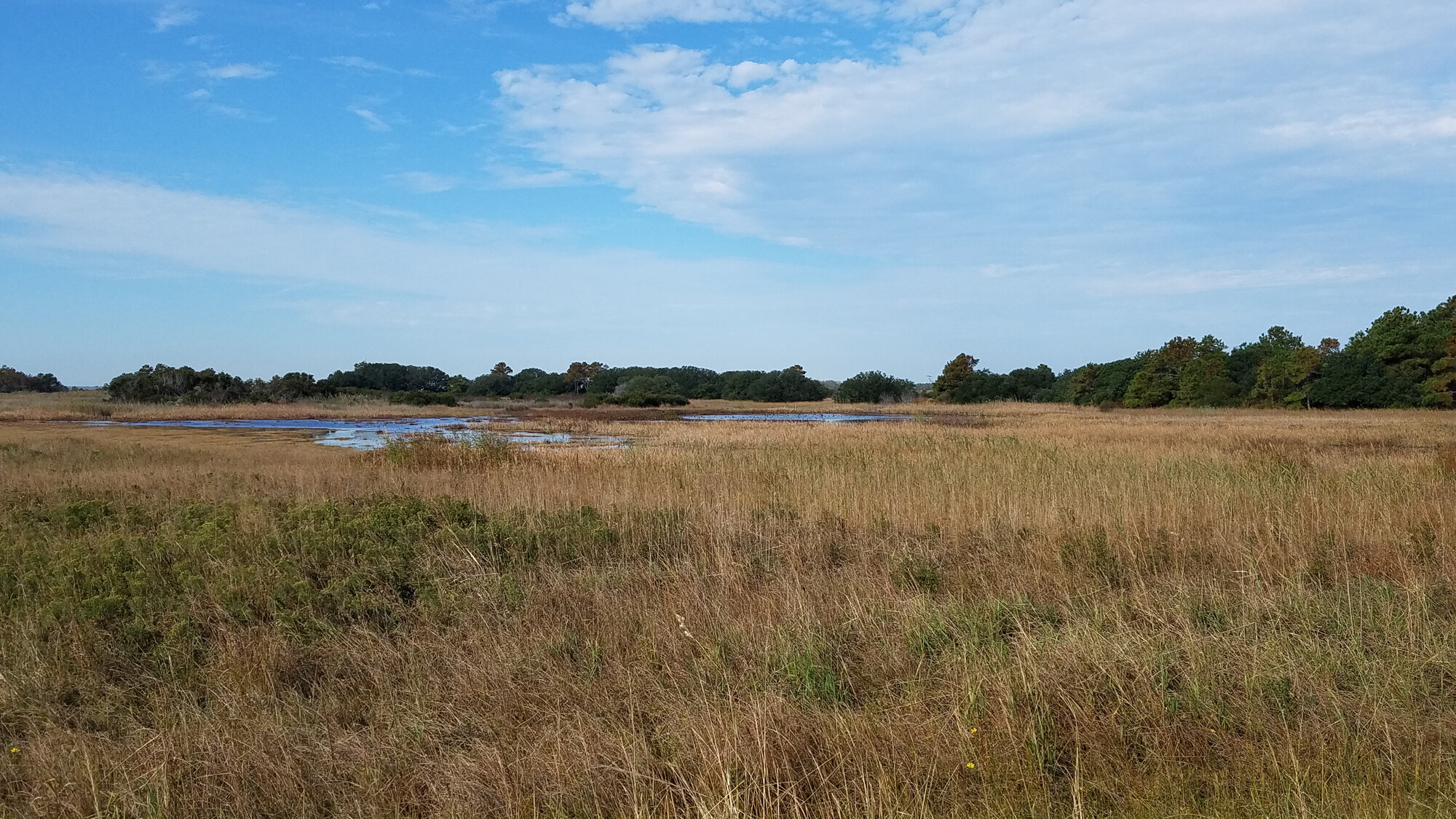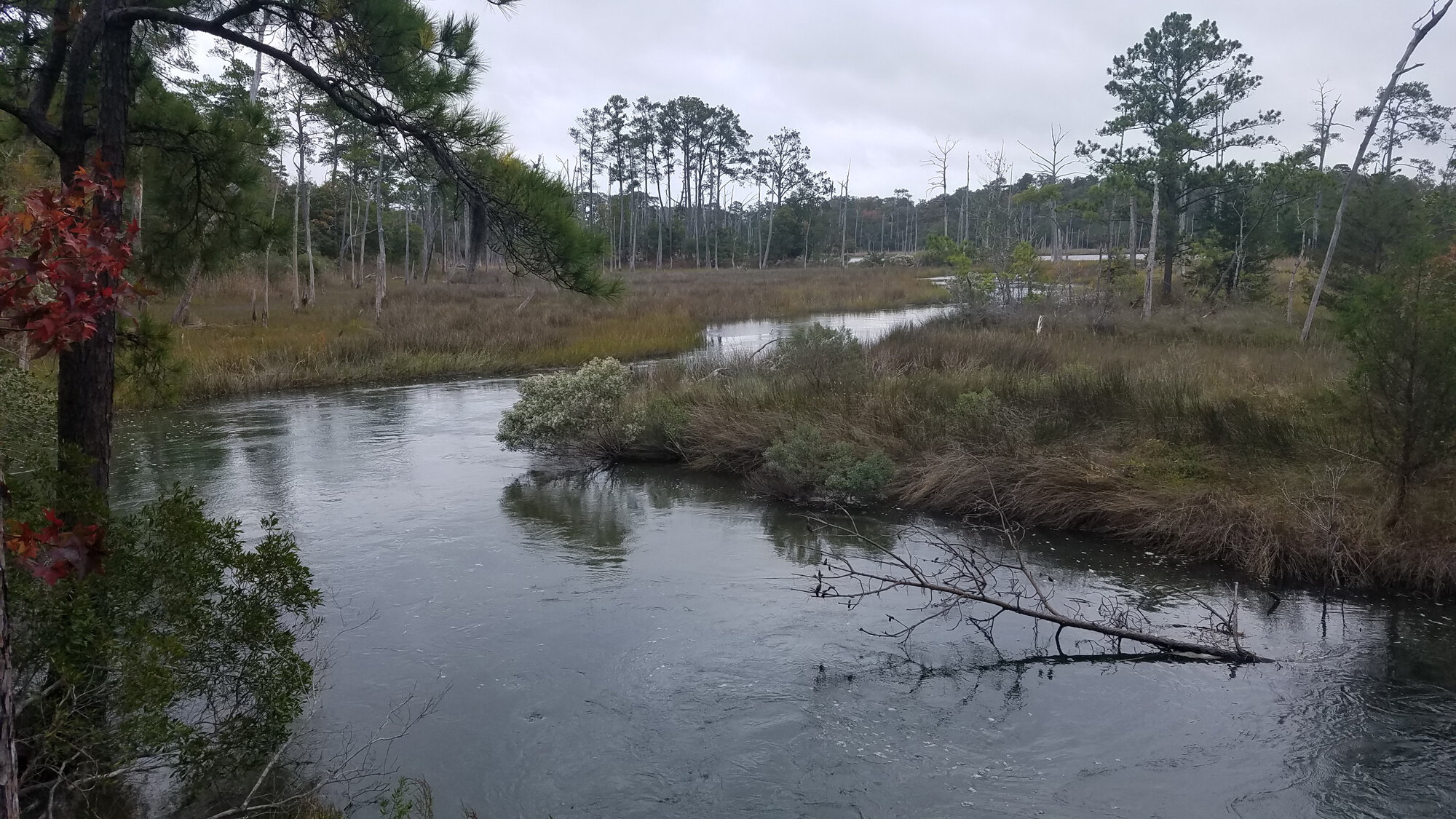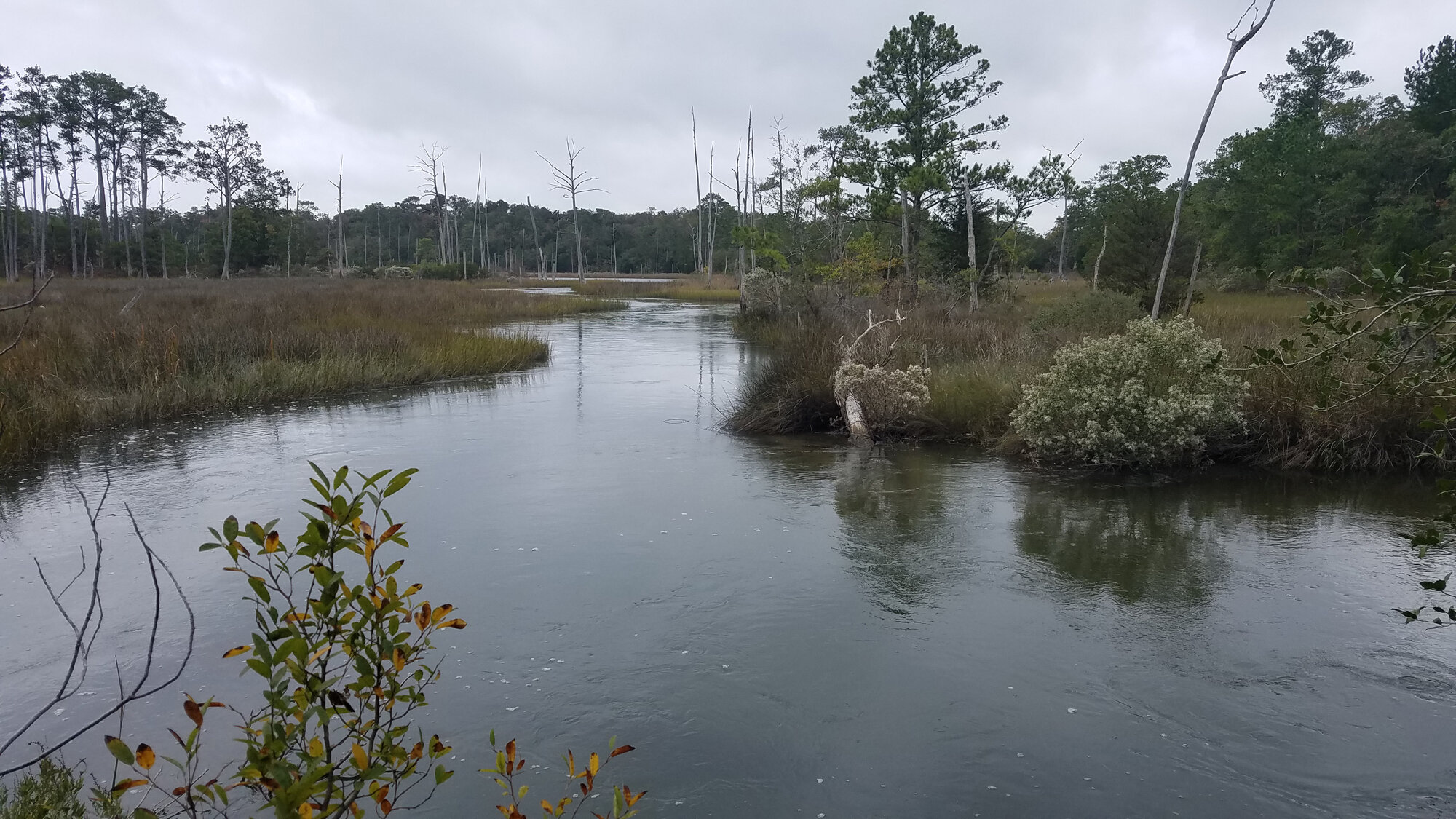October 2019
/Providing the most exciting month of birding in recent memory, October 2019 truly raised the bar for all future fall migration seasons in Virginia Beach! The weather was wild, with drought conditions carrying over from mid-September through about mid-October. The offshore passage of Post Tropical Cyclone Melissa finally brought the region some much needed rain, and its strong wind field buffeted our coastline with northeasterly winds and sizeable waves for several days. Later, Post Tropical Cyclone Nestor made landfall in northwest Florida, proceeded to move straight across the southeastern states, and later passed right over the region before blitzing its way across the North Atlantic. To say the birding was also wild, would be a marked understatement. Over the course of its thirty-one days, a total of 199 species were logged to eBird during October, which was a significant increase from the 183 species logged last month (September) but was a very slight drop-off from the 201 species logged during October last year. Virginia Beach has now logged records for 299 species to eBird during 2019 (a massive +17 compared with last year’s 282 species through the same timeframe, and already a hefty improvement on 2018’s total of 290 species). Additionally, on 22 Oct we collectively surpassed the number of complete eBird checklists submitted in 2018 (8,489) within Virginia Beach, and we went on to finish the month at 8,711 so far for 2019! This is now a new calendar-year high mark for the city, and we’re still on pace to top the 10,000 mark for the very first time, which would put us with Fairfax County as the only two municipalities to have accomplished this feat. With just 61 days left in the year, it’ll certainly take a community-wide effort to achieve this five-digit mark!
With the increase in species diversity came a corresponding rise in species highlights this month! Standout rarities for October included: Kirtland’s Warbler, Hudsonian Godwit, Connecticut Warbler, Purple Gallinule, Buff-breasted Sandpiper, Yellow-throated Vireo, Bay-breasted Warbler, Saltmarsh Sparrow, Black-billed Cuckoo, Harlequin Duck, American Avocet, Painted Bunting, Philadelphia Vireo, Chestnut-sided Warbler, Long-billed Dowitcher, White-crowned Sparrow, Sedge Wren, Yellow-throated Warbler, Parasitic Jaeger & Anhinga. Additionally, October provided the city with first-of-season records for expected fall arrivals which, in order of arrival date, included: Dunlin, Ruby-crowned Kinglet, Ruddy Duck, Hermit Thrush, Yellow-bellied Sapsucker, Common Loon, Dark-eyed Junco, White-rumped Sandpiper, Gadwall, Black Scoter, Orange-crowned Warbler, Swamp Sparrow, Nelson’s Sparrow, White-throated Sparrow, Blue-headed Vireo, Snow Goose, American Wigeon, Golden-crowned Kinglet, Northern Gannet, Bonaparte’s Gull, Ring-necked Duck, American Coot, Surf Scoter, Red-breasted Nuthatch, Winter Wren, Hooded Merganser, Red-throated Loon, Brown Creeper & Bufflehead! Lastly, we also had some other exciting records this month for Nashville Warbler, Semipalmated Sandpiper, Seaside Sparrow, Stilt Sandpiper, Scarlet Tanager, Cape May Warbler, Piping Plover, Red Knot, Northern Bobwhite, Black-crowned Night-Heron, Lesser Yellowlegs, Glossy Ibis, Blackpoll Warbler, Rose-breasted Grosbeak, American Redstart & Magnolia Warbler!
Topping an absolutely mind-boggling, star-studded list of rarities this month, the clear highlight of October was the young KIRTLAND’S WARBLER found at Back Bay NWR on 4 Oct (ph. Amy & Steve Myers)! There truly are no words to adequately describe the excitement that shot across the birding community when word of this miraculous find first went out across varying social media & messaging platforms. Marking the very first time this species has ever been photographically documented in the state of Virginia, it was astonishing that this was able to occur within Virginia Beach. While there are several sight reports for the species, and even an audio recording of an adult male singing (per The Gold Book) during spring migration out in the southwestern portion of the state, a coastal record surely caught everyone off guard. For those unfamiliar with Kirtland’s Warbler, seeing as this isn’t a species that gets brought up around here (ever), they breed primarily in jack pine forests of central Michigan with some breeding in adjacent states due to intensive conservation efforts over the last couple of decades. The species winters exclusively on the islands of the Bahamas, and therefore it’s spring and fall migration route likely has it passing through Virginia’s airspace. However, to have one on the ground as opposed to just passing over in the dark of night at high altitude, and then to also have an observer present to witness the bird’s existence is nothing short of a statistical anomaly. An anomaly that many of us had the fine pleasure of being a part of thanks to Amy & Steve. Since this is such an unusual find, it’s worth mentioning that all of the photographs (50+) taken by observers on 4 Oct of the bird can be viewed Here over at eBird! A timely sighting, within a week of the observation, Kirtland’s Warbler was officially de-listed from the federal Endangered Species List, after its numbers have risen considerably since first being listed. More information on the population statistics, conservations efforts, and the formal de-listing process can be found here on the U.S. Fish & Wildlife Service website dedicated to Kirtland’s Warbler.
Next up on the list of highlights, and a species that could easily be the headliner in any other monthly report, Virginia Beach finally logged its very first eBird record for HUDSONIAN GODWIT when an individual was found at Princess Anne WMA Whitehurst Tract on 6 Oct (ph. Andrew Baldelli)! Hudsonian Godwit is a rare fall migrant across Virginia, most often observed in Sep/Oct, and geographically at locations like Chincoteague NWR, Hog Island WMA, and Craney Island Disposal Area. On that very note, so far this fall statewide we’ve only seen two records for this species, with an individual at Craney Island 19 Aug (also first vis. Andrew Baldelli, then by many obs.) and one at Hog Island WMA from 22-23 Aug (vis. Terri Cuthriell, later ph. Nancy Barnhart). Surprisingly, Chincoteague has not yet provided a record but there’s still time for that to happen. For a long time, it was suspected among birders here that our first record would likely occur in the impoundments at Back Bay NWR. Surprisingly, but also excitedly, Princess Anne WMA stepped in and stole that glory. In terms of the specific location, first off, Whitehurst Tract is divided into two halves (a northern & a southern half), split by a freshwater canal to Back Bay (which provides water for pumping to the impoundments) and pine forests on both sides. Conditions this summer & fall have not been ideal for shorebirds in the northern half of the tract due to overgrown grass and lack of appropriate mudflats, but the northernmost impoundment/cell in the southern half has provided quite a few shorebirds so long as the water level has been proper. The levels here fluctuate depending on rainfall/evaporation, as well as due to managed pumping/flooding by VDGIF staff, typically for waterfowl management purposes. On the day of the find, this cell was covered in short grass, with most water only existing in the perimeter ditch that surrounds it. The Hudsonian Godwit was observed foraging in the grassed over portions, at times mixing in near a group of Blue & Green-winged Teal. Word of this find was immediately circulated via the VA Birds Listserve (email based) and the VA Notable Bird Sightings & Discussion group on Facebook, and as a result, a total of 19 eBirders were able to view the bird. Like the Kirtland’s Warbler above, all of the photographs of this godwit can be viewed Here over at eBird!
Only the second record in eBird for Virginia Beach, and the very first photographically documented, a CONNECTICUT WARBLER was found at Back Bay NWR late in the morning hours of 13 Oct (ph. Cindy Hamilton & June McDaniels)! An astonishing find, with Connecticut Warbler being one of the skulkiest passerines, typically sticking deep within dense vegetation during migration. This makes for yet another first eBird record at the Back Bay NWR hotspot as well, being the third such record with the past month (Gray Kingbird from September, and the Kirtland’s Warbler above being the other two). First observed around 10:40 AM, roughly midway down the Raptor Trail near the wooden bench, this very skulky warbler lingered throughout the day, being seen later in the afternoon around 2:45 PM (vis. Lisa Rose & Jason Strickland), and thanks to rain through the evening and overnight. Fortunately for many local birders, it was again photographed early on Monday morning, 14 Oct (ph. Mike Collins, Amy & Steve Myers). From that time forward, a good number of records came in throughout the morning, but then the bird seemed to disappear during the afternoon hours. Though, it could easily have just been ten feet further in the vegetation and no one would have known. Interestingly at this point in the day, the water levels of Back Bay had surged upward after sub-tropical storm Melissa’s onslaught of northeasterly winds had finally abated, and southerly winds had taken over the prior night, pushing all the bay’s waters back northward towards the refuge. Much of the vegetation alongside the Raptor Trail had been inundated with water, and the trail itself was even overtopped for a healthy length to the east. Fortunately, an hour or so prior to sunset, it was spotted for what would end up being its final show (vis. Karen Roberts), as it foraged on the ground deep with a tangle of roots and branches about 30 feet to the east of the wooden bench that rests at the mid-way point of the Raptor Trail. There it was observed until the sun had set and lack of light simply made further viewing impossible as it moved around on the ground deep in the thicket. While its introverted nature made it a much more difficult photo-target than the Kirtland’s Warbler above, there are certainly a few shots worth browsing, which can be found Here over at eBird! A truly remarkable find, and a bird that simply would not have been viewed by so many birders had the finders not immediately gotten word out!
Amazingly, the godwit above wasn’t the only highlight species observed at Princess Anne WMA Whitehurst Tract, and chronologically speaking, it was actually the second rarity observed at the park, that same day! Right at dawn of the same morning, an immature PURPLE GALLINULE was discovered in the northern half of the tract (ph. Rob Bielawski) as it foraged among the dense shoreline vegetation of another perimeter ditch similar to the one described above. It was first observed in very low light, as it flushed from one side of the ditch, flying with long legs dangling, and landed in the brush on the opposing side. Like the godwit, within minutes of the sightings, word of the find was travelling at the speed of cellular service, and though it took almost an hour for the next observer to arrive, this site continued to see birders all the way up until dusk. In some ways, it was this find, that helped lead to the other find (the godwit), which was found shortly afterwards. This was the first record for Purple Gallinule in Virginia Beach since an adult was present not far away, across Munden Road in the Beasley Tract of Princess Anne WMA from 16-29 May 2016 (also ph. Rob Bielawski). Recorded less than annually in Virginia as a whole, but with an individual (or more) likely present somewhere in the state in any given year, Purple Gallinule is a species that should always be looked for especially here in the southeast. Aside from its gorgeous plumage and almost playful foraging style, it is also a statewide review species for the Virginia Avian Records Committee (VARCOM). Missed in Virginia during 2017 & 2018, it’s all the more exceptional that this was the second state record for 2019, with one occurring on private property in Caroline County on 9 Jun (ph. Charles Verdery), and likely a few days either side of that as observed by the property owner. As with the Kirtland’s Warbler & the Hudsonian Godwit, photographs from all 16 observers who made it out in time to see the Virginia Beach bird can be viewed Here over at eBird!
In addition to the Hudsonian Godwit, another shorebird rarity was also found in Virginia Beach this month. Our first BUFF-BREASTED SANDPIPER in over two years was discovered on the beach at Back Bay NWR, roughly a half mile south of the Dune Trail beach access, on 14 Oct (ph. Cindy Hamilton)! While this rare fall transient is observed annually in Virginia as a whole, this is only the fourth fall season to boast an eBird record within Virginia Beach. To make matters even more exciting, this might be the first one ever observed on one of Virginia Beach’s beaches, rather than on a grassy impoundments like those at Back Bay NWR given this species prefers drier, vegetated habitat (most records in the state tend to occur at turf farms, at Craney, or at Chincoteague). The last of its kind to be observed in the city also occurred at Back Bay NWR but on the C Storage Pool, back on 4 Sep 2017 (ph. Andrew Baldelli). Prior to that, one to two individuals were observed primarily on the H Pool along the East Dike from 25 Aug-1 Sep 2016 (ph. Robert Ake during the refuge’s late August impoundment survey). The only other city record thus far input to eBird was a pair, also at Back Bay NWR, on 21 Sep 2005 (ph. Adam D’Onofrio). With several records occurring on the C Storage Pool the following day on 15 Oct (vis. Robert Ake / Karen & Tom Beatty) during and after the refuge’s mid-Oct impoundment survey, it seems likely that this individual moved inland from the beach and found some better habitat to forage. In fact, it continued to be observed on 18 Oct, presumably on the H Pool (ph. Derek & Laurie Yoder), where it was again viewed on 19 Oct (ph. Steve Myers, ph. Cindy Hamilton & June McDaniels, ph. Tommy Maloney). The following day, impacts from post-Tropical Storm Nestor were felt across the region, and with considerable rainfall occurring, it is possible this sandpiper finally moved on from the refuge.
An exciting first record for 2019 in Virginia Beach, a YELLOW-THROATED VIREO was observed at Stumpy Lake NA on 7 Oct (vis. Dianne Hinch, ph. Reuben Rohn), making for yet another great addition to the city’s calendar year list! A rare, but likely annually occurring, spring & fall transient here on the coast, this marks the first record for the species in the city since one was observed at Back Bay NWR on 11 May 2018 during a massive morning fallout of migrant passerines (vis. Andrew Baldelli, later ph. Rob Bielawski). The bulk of our records here have occurred during the spring season, likely bolstered by the opportunity to find this species singing, which makes an October record quite interesting given their silent nature at this time of year. In fact, the last accepted fall record in eBird in Virginia Beach occurred at Camp Pendleton SMR (Restricted Access) back on 3 Oct 2016 (vis. Andrew Baldelli / Karen & Tom Beatty / Mary Catherine Miguez). The 2019 individual was observed right when entering the forest from the parking lot, just over the small foot bridge at the junction of the loop trail. However, it didn’t stay in place long, and no one else was able to pick it up later that day or afterwards at the natural area. This find marked the fourth year in a row where Virginia Beach had records for all six expected vireo species (Blue-headed, Philadelphia, Red-eyed, Warbling & White-eyed making up the other five).
Another calendar year first, a BAY-BREASTED WARBLER was photographed in a small stand of dense tree cover on the northwest corner of Lake Windsor on 22 Oct (ph. June McDaniels). A rare spring transient in Virginia Beach (records in only two of the prior five springs), fall records occur a bit more frequently (records each fall after 2014), but we still average just one or two annually. Most records do tend to occur during October, and this record was quite timely, falling almost a full year since the last city record back on 24 Oct 2018 (vis. Andrew Baldelli & Tracy Tate) at Little Island Park. Additionally, it fell just over a year after the last photographed record here of one at a Bellamy Manor private residence on 17 Oct 2018 (ph. Una Davenhill). With no other records for the year it seemed like this was going to be a missed species in 2019, so it came as a great surprise addition this late into the fall migration season. Fortunately, this individual remained through the evening hours nearby, though a bit farther west and south on the Mt. Trashmore Park property, but still adjacent to where Lake Windsor empties into the canal system. It gave excellent views (ph. Steve Myers, ph. Tommy Maloney, vis. Lisa Rose) while it foraged in the dense junipers that line that canal, moving back and forth over the water at will.
Another exciting first record for 2019 came in the form of a SALTMARSH SPARROW observed at Pleasure House Point NA on 11 Oct (ph. Karl Suttmann). Extreme high tides in the Lynnhaven River were induced by the counterclockwise spin generated from Sub-tropical Storm Melissa which was positioned off the New England coast for the previous several days. These tides tend to provide good views of sparrows at the natural area due to the reduction in available places for them to sneak away among the reeds. Saltmarsh and Nelson’s Sparrows tend to arrive here around the same time each fall, but Nelson’s seem to significantly outnumber Saltmarsh at this particular location for whatever reason. At least one other record was input at the site this month, with an individual photographed on 21 Oct (ph. June McDaniels). Due to the extreme similarities in physical field marks (they were once considered the same species, “Sharp-tailed Sparrow”), this species does flag as ‘rare’ here in eBird, but it is certainly a species to be expected in this proper saltmarsh habitat. Almost all our records hail from the Lynnhaven River estuary, but infrequently there are records that pop up of migrants on man-made, hardened shorelines, like at South Thimble Island (CBBT), Fort Story JEB, and at Rudee Inlet. However, the best place to look is certainly Pleasure House Point NA, near the southern tip of the shoreline trail where the marshy islands are closest.
A first for the fall season since 2017, a single BLACK-BILLED CUCKOO was observed at a private residence in the Indian River section of Virginia Beach on 19 Oct (vis. George Harris). Also marking the very first time we’ve had an eBird record for the species during the month of October across all years, this record is a fascinating one. Black-billed Cuckoo is a scarce migrant on the coast, though likely an annual transient during spring & fall in very low numbers (most coastal Virginia records are in lower Northampton County during the fall at Sunset Beach and Kiptopeke SP). Any given year could produce records here in Virginia Beach though. While it is highly sought-after, records are still quite scant in the city though. In fall, hatch-year Yellow-billed Cuckoos can also show a black-bill, so other field marks are necessary to help secure the identity during this season, such as the red (rather than yellow) orbital ring around the eye, a lack of rufous coloration in the wings (obvious in flight and at rest), and a darker overall coloration to the undertail, lacking the heavy white sections of Yellow-billed. With only one other record for 2019, with an individual photographed this spring at Back Bay NWR on 18 May (found & ph. Tommy Maloney, later ph. Rob Bielawski), it’s great to see a second-for-the-year occurrence of this species in the city. In fact, the species was missed altogether in 2018 here, with the last record prior to this year being another Back Bay NWR individual, seen on 6 Aug 2017 (vis. David Clark), with the same observer also nabbing the only other 2017 record with one in the Virginia Beach portion of Knott’s Island on 13 May 2017 (ph. David Clark).
A female HARLEQUIN DUCK, the first of the fall season to be recorded in the state, popped up on the oceanside of the north jetty at Rudee Inlet early in the morning of 25 Oct (ph. Andrew Baldelli)! Marking a second record for the species here in 2019, the only other record in the city this year was an immature male that was first spotted during the Little Creek CBC on 31 Dec 2018 (vis. Andrew Baldelli, Linda Chittum & Lisa Rose; later ph. Adam D’Onofrio & Loretta Silvia). That young male lingered all the way through 6 Apr in the strongest currents where Long Creek hits the Lynnhaven Estuary on the east side of the inlet. The current Harlequin stayed at the inlet throughout the day (ph. Steve Myers, ph. Rob Bielawski, ph. Steve Keith), then seemed to vanish. However, it was picked up once again on 31 Oct from the Virginia Aquarium’s boat inside the inlet (ph. Taryn Paul). Outside of the Chesapeake Bay Bridge-Tunnel (CBBT) islands, which are sadly no longer accessible except by boat for the foreseeable future, Lynnhaven Inlet & Rudee Inlet seem to be the best locations for finding this species. With a very specific preference for fast moving water and rocky shorelines, these inlets benefit from higher water velocities not found elsewhere on the coast due to the rising and falling tides. These tidal transitions are severely amplified by the constriction in cross-sectional area between the two larger, connecting, bodies of water. Additionally, man-made bulkheads and oyster beds around Lynnhaven Inlet, as well as the armored north, south & offshore jetties at Rudee Inlet provide perfectly suitable perches for resting individuals, and foraging habitat for those feeding beneath the waves. Despite these two areas of prime habitat, the species is still quite difficult to come by in Virginia Beach, with only 1-2 records each year away from the CBBT. This female marked the very first record of any October for Virginia Beach input to eBird!
Only a second record for the year in Virginia Beach, a single AMERICAN AVOCET was photographed on the beach at Back Bay NWR on 2 Oct (ph. Eric Alton)! Previously in 2019, the only other record for the species also occurred at Back Bay NWR when one was observed in northbound flight over the refuge’s namesake freshwater bay, just west of the visitor contact station on 25 Jul (ph. Charlie Bruggemann). With records every year since 2013 input to eBird within the city, American Avocet is certainly an annual transient here, but it is a species for which we rarely see more than 1-2 individuals in a given year. The vast majority of records tend to occur in fall (mainly Aug/Sep, but with some in Jul & Oct), with few spring records to speak of (all are Mar records with one in Apr). This species shows some similarities with Marbled Godwit here, given both species are common at Pea Island NWR to our south in Dare County, NC. While the godwits are also common on the Eastern Shore lagoon system, especially at winter roosts sites such as Willis Wharf and Oyster, avocets tend to occur with highest frequency in Virginia at Craney Island Disposal Area in Portsmouth. Away from there, Chincoteague NWR in Accomack County, and Hog Island WMA in Surry County are the other prime spots to see the species during the fall season in Virginia. The vast majority of Virginia Beach records hail from Back Bay NWR, though Pleasure House Point NA held one in 2016 & the nearby Lynnhaven River marshes posted a record in 2018. Princess Anne WMA doesn’t yet have any records submitted to eBird, though the impoundments in either Whitehurst or Beasley are capable of a record if the conditions that particular season happen to be proper. Just something for local birders to keep in mind while out in those areas!
An unexpected PAINTED BUNTING also popped up this month, at Back Bay NWR on the morning of 12 Oct (ph. Rob Bielawski & Peggy DeRolf), marking the second earliest date one has ever been submitted to eBird for Virginia Beach! The record holder still stands at an individual photographed, also at Back Bay NWR, on 23 Sep 2017 (ph. Michael Mayer). Last Oct (2018), there wasn’t a single record for this species north of North Carolina, and similarly this record was the northernmost for the current Oct (2019) as well! Though this species is an annual winter resident in the city, its true distribution is obscured considerably since many homeowners prefer not to publicly report sightings of this highly sought-after species. While are several neighborhoods within Virginia Beach that host small groups of males & females each winter, it is always exciting when one shows up in a public location where other birds can attempt to view them as well. The last such record, of one in a public location also occurred at Back Bay NWR, back on 2 May 2018 (ph. Steve Myers), so the coastal scrub habitat that the refuge provides sure seems to be an excellent bet if seeking this species out in spring &/or fall migration! This most recent individual was showing the immature/female plumage as well, and while not quite as striking as that held by the adult males, its greenish coloration makes it unique among the species one will see in Virginia Beach. Though it was only observed, off-and-on, for about a half hour after the initial find around 9:30 AM, it gave good views near the large Bald Cypress trees roughly a hundred feet west of the base of the Raptor Trail.
The second record for the fall season of PHILADELPHIA VIREO occurred this month when an individual was spotted at the base of the Raptor Trail at Back Bay NWR on 11 Oct (vis. Mike Collins). Extensively photographed near the same location on 12 Oct (ph. Rob Bielawski / Peggy DeRolf / Tommy Maloney), and lingering there through at least 13 Oct (ph. Steve Myers, ph. David Clark, vis. James Marcum), views of this individual were thoroughly enjoyed by many as it foraged an berries in good light. Falling right in line with recent fall season’s here in the city, we tend to average 1-2 records. The only other record this season was highlighted in the September journal, being an individual found at First Landing SP on 25 Sep (ph. June McDaniels). It would be a genuine surprise if any additions records pop up moving forward, as Sep/Oct tend to be the typical timeframe of their southbound passage through coastal Virginia. But, with three records now for the calendar year after an almost unheard of record occurred back in June at the same park (fittingly ph. June McDaniels), this has certainly been an exceptional year in Virginia Beach for the species!
With a similar distributional patter to Philadelphia Vireo here in Virginia, we had our second CHESTNUT-SIDED WARBLER record for the fall season as well! Like the September record before it, this one was also an immature, and it was observed foraging among a mixed warbler flock on the north side of Kings Grant Road, roughly a quarter mile north of Witt Park, on 1 Oct (vis. Rob Bielawski). As highlighted in the September journal, there are quite a few species of warblers that tend to breed only at high elevations at the latitude of Virginia, and these tend to be the ones we have difficulty finding here on the coast during migration. Golden-winged, Blue-winged, Mourning, Cerulean, Blackburnian, Chestnut-sided and Canada Warblers all fit this mold nicely, so any records for these species tend to get the adrenaline churning amongst members of the birding community here.
Following suit with September, we also had one report for LONG-BILLED DOWITCHER in October, with three sighted at Back Bay NWR on 28 Oct (vis. Al Hooks & Audrey Whitlock). This marks only the second report for the calendar year, after a single individual was located during the refuge’s mid-September improundment survey (vis. Andrew Baldelli). As mentioned last month, due to difficulty in separating Long & Short-billed Dowitcher in the field without excellent views, this species almost certainly goes unnoticed and is likely to be an annual transient in fall along our patch of coastline. This time of year, Long-billeds could even outnumber Short-billeds in terms of likelihood of presence. However, records are still few and far between in Virginia Beach since there just isn’t a great deal of accessible habitat, especially since the East Dike at Back Bay NWR closes after 31 Oct, and views of the C Storage Pool and H Pool are no longer available. From now through the winter season, this is a species that should be carefully looked for anytime a dowitcher is observed. Typically, the best way to separate the two in the field is by observing the shape of the bird while feeding. Long-billeds tend to be much chunkier, and when feeding will show an arch to the back reaching its top-most point in the middle. Short-billeds usually show this point over the shoulder, with a slimmer appearance and more linear slope to the back behind the shoulder. Bill length isn’t particularly useful since there is considerable overlap between females & males of the two species; just some notes to keep in mind.
At least three different WHITE-CROWNED SPARROWS were observed in the city this month, with two records at Back Bay NWR and another at Little Island Park! The first to be found, an immature, was found near the base of the Raptor Trail not more than 100 feet from the southern parking lot, on 12 Oct (ph. June McDaniels), lingering through at least 14 Oct in the same location. The second, a surprising adult bird, was photographed in the “sparrow field” north of the visitor contact station on the morning of 13 Oct (ph. Andrew Baldelli, ph. Mike Collins, vis. David Clark), but unfortunately was not seen later in the day or thereafter. After the weather calmed down in the wake of post-Tropical Storm Nestor’s passage over the region on 20 Oct, another immature individual as observed at Little Island Park (vis. Tracy Tate). A third, fourth and fifth record for the calendar year, these are the first to be observed since the springtime when an adult was found at the Tidewater Arboretum on 26 Apr (ph. Andrew Baldelli), and prior to that an immature was viewed along Stuart Road in southern Virginia Beach on 14 Jan (vis. Karen & Tom Beatty). Most records in the city tend to be first-year individuals showing the immature plumage, and adults seem to be rarer for whatever reason. It’s interesting that in 2019 we’re currently split even with two of each. Along with Lincoln’s, Clay-colored & Lark Sparrows, this is a species to be looked for as we head into November since it is likely that one or more of each of these species attempt to spend the winter somewhere in the city in any year.
Several reports for SEDGE WREN surfaced during October, with the first being a well-described sight report at Back Bay NWR on 1 Oct (vis. Mike Carlo) and the next being a quick view of perhaps the same individual nearby in the “sparrow field” north of the visitor contact station on 5 Oct (vis. Mike Collins). Likely a separate individual, this time viewed across the East Dike from H Pool, one was photographed on 19 Oct (ph. Cindy Hamilton & June McDaniels) and remained at the location through at least 26 Oct (ph. Kim & Rob Bielawski). In similar fashion, the only other records for the year, at the time of these sightings, in Virginia Beach also hailed from Back Bay NWR, and were also close in terms of timing, with one photographed 13 Mar (ph. Reuben Rohn) and one viewed 15 Mar (vis. Edward Brinkley). Additionally, a sight report for two individuals in a weedy field at Green Run Neighborhood Park came in on 12 Oct (aud. & vis. Gary Witmer), marking the first record for the species at the park and one of few away from southern Virginia Beach in the city. A very cryptic species, and therefore a difficult one to pin down, Sedge Wren is probably more of an uncommon wintering species than a rarity, however with its preferred habitat occupying such a small percentage of the land area of Virginia Beach, all records reported to eBird do get flagged as rare and require review. Aside from Back Bay NWR, Princess Anne WMA typically has appropriate habitat, but still very few records are generated there with perhaps one or two on an annual basis. Catching this species during migration is the best chance for birders to observe it, especially given the closing of the East Dike at Back Bay NWR after Oct 31 severely limits access to its preferred habitat.
In what has been nothing short of an incredible fall season for YELLOW-THROATED WARBLER, yet another was observed, this time at First Landing SP on 5 Oct (ph. June McDaniels). This is now the sixth record for the season in Virginia Beach, after the fall migration season of 2018 yielded zero records, and the 2017 season had only a single report! Quite miraculous, as up until now there have been more reports of this species here in winter over the last several years than in fall. This fall (quoting the September journal entry), records for this species also occurred with one at a private residence in Bellamy Manor on 24 Aug (ph. Una Davenhill), one at Back Bay NWR (the first ever photographed in eBird at the refuge!) from 21-23 Sep (ph. Rob Bielawski & Lisa Rose), one at Lake Lawson & Lake Smith NA on 24 Sep (vis. Gigi DelPizzo), one at a private residence in Lake Smith Terrace on 25 Sep (vis. Tracy Tate), and finally one at a private residence in Oak Springs on 26 Sep (vis. Carolyn Page). If these trends continue, this species is a good candidate to be set as a spring & fall transient in eBird, and will no longer flag in fall.
Just like in September, there was also one record for PARASITIC JAEGER during October, with a light morph individual photographed from the beach at Back Bay NWR on 27 Oct (ph. Mike Collins). Though the September reports hailed from Little Island Park just to the north, this was the first record for the refuge this fall. As mentioned in the prior journal entry, this species has been reasonably well recorded in 2019, with a few records during the height of winter in Jan/Feb, and on 20 Apr, a new state spring high count was achieved when 12 passed by Little Island Park (ph. Andrew Baldelli & Rob Bielawski) on the backside of a strong coastal low pressure system. It’s possible that this is a good sign for the coming Oct/Nov migration season of these species. Parasitic Jaegers breed in the arctic tundra and make their way to the coast, mostly during Sep-Nov, with many passing overland. Seawatching from locations like Rudee Inlet, Little Island Park and Back Bay NWR could yield some great observations of these birds, especially in November as Laughing Gulls are bailing out southbound for the winter and provide the jaegers with a perfect target to harass. An annual transient along the coast, but one that still requires time & effort to be input, any jaeger sighting is one to be excited about!
Just like in September, we had one continuing rarity this month, that being the ANHINGAS at Stumpy Lake NA! First observed at this location way back on 21 Apr (2, ph. Stephen Keith) as of the writing of the September journal it had appeared we’d seen the last of them, with records screeching to a halt after 19 Sep (ph. Jonathan Snyder). However, an individual was observed soaring over the entrance causeway late in the morning of 12 Oct (ph. Rob Bielawski & Peggy DeRolf), giving extended views as it rode thermals above the lake, at times alongside a Turkey Vulture for a really interesting comparison. After this sighting, there was mention that two individuals had been observed the day prior, 11 Oct (vis. Betty Sue Cohen & Clifton Seney), and though that record has not been input to eBird, it is worth mentioning here since both observers have extensively documented the species here throughout the summer. The next record for the species hailed from elsewhere in the city, with a surprise report for an individual soaring over Lake Smith on 23 Oct (vis. Debbie Schroeder)! To further the excitement, after another long lapse, a pair was again recorded at Stumpy Lake NA on 30 Oct (ph. Steve Myers) and remained present throughout the following day, 31 Oct. So, perhaps November could surprise us all with a record here, marking the 8th straight month this year? Thus far, no one has ever submitted a photographic record to eBird for this species in Virginia Beach, just something to keep in mind as the month rolls over!
In addition to all the great rarities observed during October, we also saw first-of-season records for twenty-nine of our annually expected species! Arrival records occurred this month for the following expected/regular species (sorted chronologically by first record):
Dunlin – First Observed & Photographed: 1, Back Bay NWR, 1 Oct (ph. Steve Myers).
Ruby-crowned Kinglet – First Observed: 1, First Landing SP, 2 Oct (obs. June McDaniels). First Photographed: 1, First Landing SP, 21 Oct (ph. June McDaniels).
Ruddy Duck – First Observed & Photographed: 1, Mt. Trashmore Park, 2 Oct (vis. Steve Myers, ph. Reuben Rohn, vis. Lisa Rose).
Hermit Thrush – First Observed: 1, Great Neck Estates (Private Residence), 4 Oct (vis. J.A.); First Photographed: 1, Stumpy Lake NA, 22 Oct (ph. Betty Sue Cohen).
Yellow-bellied Sapsucker – First Observed: 2, First Landing SP, 5 Oct (vis. June McDaniels); First Photographed: 1, Pleasure House Point NA, 5 Oct (ph. Rob Bielawski).
Common Loon – First Observed: 1, Back Bay NWR, 5 Oct (vis. Lewis Barnett & John Ditto); First Photographed: 1, First Landing SP, 31 Oct (ph. Karen & Tom Beatty).
Dark-eyed Junco – First Observed: 2, Back Bay NWR, 6 Oct (vis. Eric Alton & Tammy Conklin) with no other records occurring until 24 Oct! First Photographed: 1, 27 Oct (ph. Kim & Rob Bielawski).
White-rumped Sandpiper – First Observed & Photographed: 1, Back Bay NWR, 6 Oct (ph. Jonathan Snyder).
Gadwall – First Observed: 6, Princess Anne WMA Whitehurst Tract, 6 Oct (vis. Robert Wood).
Black Scoter – First Observed: 6, Chesapeake Bay Mouth, 6 Oct (vis. Scott Schuette).
Orange-crowned Warbler – First Observed: 1, First Landing SP, 9 Oct (vis. J.A., vis. Jojo Morelli); First Photographed: 1, Pleasure House Point NA, 23 Oct (ph. Steve Myers).
Swamp Sparrow – First Observed: 1, Horn Point Rd., 10 Oct (vis. Karen & Tom Beatty); First Photographed: 1, Back Bay NWR, 12 Oct (ph. Rob Bielawski & Peggy DeRolf).
Nelson’s Sparrow – First Observed & Photographed: 1, Pleasure House Point NA, 11 Oct (ph. Karl Suttmann).
White-throated Sparrow – First Observed: 1, Back Bay NWR, 11 Oct (vis. Mike Collins); First Photographed: 1, Back Bay NWR, 12 Oct (ph. Rob Bielawski & Peggy DeRolf).
Blue-headed Vireo – First Observed & Photographed: 1, Princess Anne WMA Whitehurst Tract, 13 Oct (ph. Rob Bielawski).
Snow Goose – First Observed: 6, Back Bay NWR, 13 Oct (vis. Allison Barber); First Photographed: 5, Back Bay Landing Rd., 20 Oct (ph. Lisa Rose).
American Wigeon – First Observed: 10, Back Bay NWR, 14 Oct (obs. David Clark).
Golden-crowned Kinglet – First Observed: 1, Back Bay NWR, 15 Oct (obs. Robert Ake / Karen & Tom Beatty); First Photographed: 1, Back Bay NWR, 19 Oct (ph. Andrew Baldelli / Rob Bielawski / Lisa Rose).
Northern Gannet – First Observed: 1, Back Bay NWR, 15 Oct (obs. Drew Avery); Photographed: 1, White Cap Ln. Beach Access, 20 Oct (ph. Andrew Baldelli & Rob Bielawski).
Bonaparte’s Gull – First Observed: 1, Back Bay NWR, 17 Oct (obs. Derek & Laurie Yoder).
Ring-necked Duck – First Observed & Photographed: 5, Sherwood Lakes (North Pond), 19 Oct (ph. Rob Bielawski).
American Coot – First Observed & Photographed: 1, Mt. Trashmore Park, 19 Oct (ph. Steve Myers).
Surf Scoter – First Observed: 2 (drake & hen), White Cap Ln. Beach Access, 20 Oct (vis. Andrew Baldelli & Rob Bielawski).
Red-breasted Nuthatch – First Observed: 1, Indian River (Private Residence), 22 Oct (vis. George Harris).
Winter Wren – First Observed: 1, Lake Lawson and Lake Smith NA, 22 Oct (aud. Tracy Tate).
Hooded Merganser – First Observed: 1 adult male, Great Neck Park, 24 Oct (vis. Kelly Creger & J.A.).
Red-throated Loon – First Observed & Photographed: 1, Broad Bay (First Landing SP), 27 Oct (ph. Kim & Rob Bielawski).
Brown Creeper – First Observed: 1, Stumpy Lake NA, 28 Oct (obs. Jonathan Snyder); First Photographed: 1, Stumpy Lake NA, 30 Oct (ph. Charlie Bruggemann).
Bufflehead – First Observed: 2, First Landing SP (Broad Bay), 31 Oct (vis. Karen & Tom Beatty).
Also, with so many birders out and about during October, plenty of other exciting finds occurred! These records include early arriving & late lingering individuals observed ten or more days outside their expected dates, species found in locations of the city where they aren’t typically observed, and any other observations that seem worth calling attention to in a city-level journal such as this! Records of this nature for October were as follows:
The very first Nashville Warbler to be reported at Stumpy Lake NA occurred this month when an individual was observed on 3 Oct (obs. Kathy Spencer). At the time this record was input, this was the 198th species to be submitted to eBird at this hotspot!
With drought conditions impacting the city for several weeks from mid-Sep to early Oct, Stumpy Lake’s surface levels reached the lowest elevations seen in recent memory. As a result of this, the portion of the lake north of the entrance causeway to the natural area & golf course showed extensive mudflats. Finding perfect habitat for migration, three Semipalmated Sandpipers were discovered foraging here on 5 Oct (vis. Lewis Barnett / John Ditto / Jacob Flynn, later ph. Rob Bielawski). In an interesting twist of fate, perhaps, the last time this species was recorded in eBird at the natural area was way back on 8 Sep 1995 by the father (vis. James Flynn) of one of the initial 2019 observers. Pretty neat! That particular checklist also had American Avocets on it, but so far we haven’t been fortunate enough to see this species at the park since then.
Highly unusual away from salt marshes on the immediate coast, a Seaside Sparrow photographed at Princess Anne WMA Whitehurst Tract around dawn on 6 Oct (ph. Rob Bielawski) made for a very first eBird record at the WMA. This is now the third Ammospiza (formerly Ammodramus) sparrow to be observed at the WMA, with several prior records for LeConte’s Sparrow, and a single Nelson’s Sparrow photographed in the Beasley Tract back on 11 Dec 2016 (ph. Adam Bollinger & Jason Strickland).
Our second Stilt Sandpiper of the calendar year appeared to have stayed put at Princess Anne WMA Whitehurst Tract after first being observed on 29 Sep (ph. Cindy Hamilton & June McDaniels). Likely the same individual was picked up again on the morning of 6 Oct and observed throughout the day by many birders who ventured to this area of the park in search of the Hudsonian Godwit discussed above.
The 224th species to be submitted at the Little Island Park hotspot in eBird, a single Scarlet Tanager, was observed on 11 Oct (vis. Andrew Baldelli)!
A first for Princess Anne WMA Whitehurst Tract’s hotspot in eBird, two Cape May Warblers were observed (one immature, one adult male) on the morning of 13 Oct (ph. Rob Bielawski). At the time of the record, this made for the 191st species logged at the hotspot thus far!
Though there is a past record for Blue-headed Vireo displayed at the Princess Anne WMA Whitehurst Tract hotspot in eBird, the first record to occur inside the Whitehurst Tract finally occurred on 13 Oct (ph. Rob Bielawski). The prior records actually occurred across Munden Road in the Beasley Tract, near the 90° bend on the entrance trail just north of the parking lot. Since the two hotspots are so close to one another, birders often check both tracts while on the same checklist, which isn’t necessarily incorrect. A Brown Creeper that same day also fits the bill of this issue, but maybe Whitehurst will get one of those soon as well.
A pair of records for Snow Goose occurred ten-or-more days prior to the average expected arrival date this year, with six observed over the East Dike at Back Bay NWR on 13 Oct (vis. Allison Barber), and a group of five (two blue-phase adults and three immatures) in a field off Back Bay Landing Road on 20 Oct during post-Tropical Storm Nestor’s passage (ph. Lisa Rose). Interestingly, another group of five consisting of the exact same composition was observed south of us at Cape Hatteras NS on 7 Oct (ph. A Downing), and it’d be interesting to know if this same group may have dispersed northward to Back Bay Landing Road during the strong southeasterly winds brought on by Nestor. Though it’s probably just five different Snow Geese, it’s fun to speculate!
Still within its expected timeframe, but a rather temporally-isolated record, two Piping Plovers were reported on the beach at Back Bay NWR on 14 Oct (obs. James Marcum). With most records in Jul/Aug, this is the first record since an immature was observed at dawn during Hurricane Dorian’s passage at Rudee Inlet on 6 Sep (ph. Andrew Baldelli & Rob Bielawski).
Only a second record for the city this fall, and the first photographed, a single Red Knot was observed on the beach at Back Bay NWR on 15 Oct (ph. Steve Myers). Quite late of this species typical 25 Sep departure date, this was the first record here since 21 Aug (vis. Karen & Tom Beatty). With most shorebirds being found in much higher numbers here during fall rather than spring, Red Knot is always a curious species since we see far more reports in the springtime though they certainly pass by us in fall as well.
With a remarkable scarcity of eBird records this year for Northern Bobwhite, it was exciting to finally see our first photographic record submitted when a male & female were spotted at a private residence off West Landing Road on 15 Oct (ph. Ashley Theroux). At the time of the record, this became the 279th photographed species to show up on Virginia Beach’s Illustrated Checklist for the calendar year! Miraculously, this is only the third record for the species in the city during 2019, with one sight record in Thalia, of all places, on 6 Jun (vis. Brandon Holland) and a singing male recorded at Ashville Park on 9 May (a.r. Karen & Tom Beatty). While this was once a common species throughout Virginia Beach, their present status is rather uncertain, so any sighting is worth getting input to eBird.
An immature Black-crowned Night-Heron was photographed at Stumpy Lake NA on 16 Oct (ph. Jonathan Snyder), making for the first record at the natural area going all the way back to 8 Nov 2013 when one was present (obs. David Clark).
Also caused by the low water levels at Stumpy Lake, despite the heavy rains that occurred the previous day, a single Lesser Yellowlegs was photographed on 17 Oct (vis. Catherine Johnson, ph. Jonathan Snyder). Just like the Semipalmated Sandpiper report that tops this section of the journal, this is only the second record for Lesser Yellowlegs and the first at the natural area going all the way back to 8 Sep 1995, (vis. James Flynn)!
Late of its typical 5 Oct departure date by over ten days, a Glossy Ibis was observed in flight over Back Bay NWR on 17 Oct (ph. Derek & Laurie Yoder). Seen again the following day, and again on 19 Oct, this individual provided views for quite a few folks prior to the passage of post-Tropical Storm Nestor. Occasionally we do see lingering records for this species here, but typically there is only 1 or 2 records after mid-Oct. Last year, we had an individual recorded over Princess Anne WMA Whitehurst Tract on 28 Oct (ph. Steve Myers), and a miraculous group of 14 reported at Back Bay NWR on 6 Dec (vis. Robert Ake), so we should all be on the lookout for this species. Any sighting is worth documenting moving forward, and beware juvenile White Ibis viewed at a distance in flight, which in poor light can appear quite similar.
Another first hotspot record, a Blackpoll Warbler was logged to eBird at False Cape SP on 19 Oct (obs. Steve Myers)! With an expected species departure date currently set at 20 Oct in eBird, only one other record came later than this one, an individual observed along Burton Station Rd. on 24 Oct (vis. Andrew Baldelli).
At least two lingering Ruby-throated Hummingbirds were picked up ten-or-more days past the species’ average fall departure date of 20 Oct. An immature/female type hummingbird visited the feeders at a private residence in Hunt Club Forest on 30 Oct (vis. Karen & Tom Beatty), and it’s quite possible that it’ll linger into November. Another was observed the same morning quite far away at another private residence in Laurel Cove (vis. Loretta Silvia). It’s also likely that others will pop up throughout the city next month, but hopefully birders will keep a watchful eye for rarer species like Rufous, Allen’s, and Black-chinned Hummingbirds, which all have late fall/early winter records in Virginia!
A brief visit from a Rose-breasted Grosbeak at a South Shores Estates private residence on 30 Oct (vis. James Marcum) provided for both a very late record of the species and also the first since 7 Oct in the city. In fact, this marks the latest fall record we have currently in eBird for the city, though last year one made a surprise winter appearance at a Bellamy Manor private residence on 5 Dec (ph. Una Davenhill).
Ten days past its typical departure date of 20 Oct, a female/immature-type American Redstart was photographed at the very same residence (mentioned above) in Bellamy Manor on 30 Oct (ph. Una Davenhill). This marked the latest photographically documented record we have for the species currently in eBird for Virginia Beach! Only one sight report has occurred later, with two being reported at a private residence in Lake Smith Terrace on 9 Nov 2018 (vis. Tracy Tate).
A third remarkable sighting for the same date of 30 Oct, a Magnolia Warbler was photographed at First Landing SP’s campground area in the evening hours (ph. June McDaniels). Fifteen days beyond the typical departure date for this species in Virginia Beach, 15 Oct, this record marked a new late date here in eBird! Last year, an individual was photographed at Back Bay NWR on 28 Oct 2018 (ph. Eric Alton & Tammy Conklin), but prior to that our latest record had been 19 Oct 2017 (vis. Tracy Tate), making this late October records all the more miraculous!
While the overall species count in October 2019 (‘this Oct’) was very close to that observed in October 2018 (‘last Oct’), there’s quite a few differences. The following species were recorded last Oct but were not found this Oct (species in all capital letters are those that flag as ‘rare’ in eBird here throughout Oct): Brant, Tundra Swan, EURASIAN WIGEON, Greater Scaup, Lesser Scaup, Common Eider, White-winged Scoter, Red-breasted Merganser, Horned Grebe, VIRGINIA RAIL, COMMON GALLINULE, Whimbrel, Western Sandpiper, RED PHALAROPE, PACIFIC LOON, AMERICAN WHITE PELICAN, Tricolored Heron, Veery, Swainson’s Thrush, Wood Thrush, American Pipit, PURPLE FINCH, Pine Siskin, CLAY-COLORED SPARROW & RUSTY BLACKBIRD.
Conversely, we found the following species this Oct, but didn’t observe them last Oct: HARLEQUIN DUCK, Northern Bobwhite, BLACK-BILLED CUCKOO, PURPLE GALLINULE, AMERICAN AVOCET, HUDSONIAN GODWIT, Red Knot, Stilt Sandpiper, White-rumped Sandpiper, BUFF-BREASTED SANDPIPER, Pectoral Sandpiper, LONG-BILLED DOWITCHER, ANHINGA, Great Crested Flycatcher, YELLOW-THROATED VIREO, Ovenbird, CONNECTICUT WARBLER, KIRTLAND’S WARBLER, CHESTNUT-SIDED WARBLER, YELLOW-THROATED WARBLER, Scarlet Tanager, Rose-breasted Grosbeak & PAINTED BUNTING.
Something that quickly stands out is that last Oct produced 14 rarities that this Oct did not, while last Oct only produced 9 rarities that this Oct didn’t. Last Oct also proved to be a much more lucrative month for waterfowl, 8 species listed above, to only 1 species this Oct. We just didn’t see big movements of waterfowl for some reason this Oct, but hopefully when Nov rolls around we’ll see that straight. Warblers were found much more freely this Oct, with 5 species listed above to last Oct’s zero! Irruptives like Pine Siskin & Purple Finch were logged last Oct, but this Oct did not see movements of the two species in coastal Virginia (though we did have one Red-breasted Nuthatch record). Sparrows were also lacking this Oct, and like the waterfowl, we hope to make up for that in Nov. Of course, we’d all love to have logged another Red Phalarope or Pacific Loon like last Oct, but seeing county firsts for Kirtland’s Warbler and Hudsonian Godwit was more than a fair trade off! No matter how you sort the species, or how you analyze birding in general, Oct 2019 was just an all around incredible month here in Virginia Beach!
As always, a wide array of media (photos/audio/video) were submitted during the month in Virginia Beach, and eBird makes it incredibly easy to organize and browse all of these. For those hoping to view every photo/audio/video submitted for Virginia Beach during this period, please see the complete listing for the month of October located on eBird’s Media explorer by clicking here! Please remember, anyone with an eBird user account has the ability to rate these photographs/audio/video on a scale of 1-5 stars (based on these guidelines). Making use of the average rating for each media item is how eBird populates anything media-driven on the website, particularly the Illustrated Checklists. So, if you're one of the many folks who enjoy looking at photographs or watching/listening to video/audio recordings of birds, please take some time to rate their quality, it helps to make eBird more useful with each passing day!
NOVEMBER LOOKAHEAD: While the timeframe for peak fall passerine migration (late September and early-mid October) has come and gone once again for Virginia Beach, November forces birders to switch gears a bit. Unfortunately for many birders, Daylight Saving Time ends at 2 AM on Sunday, 3 Nov which means that birding after typical weekday work hours is no longer in the cards. While Saturday, 2 Nov features a sunrise/sunset of 7:28 AM/6:05 PM, the sunrise and sunset for Sunday, 3 Nov will be 6:29 AM & 5:04 PM (be sure to update your cameras and other electronic gear appropriately)! With the sun now rising an hour earlier, those among us who hope to be out right at dawn will need to tweak our sleep habits a bit! This is what makes November (and December) two of the most exciting months of the year though, as the time table for many birders to be out in the field gets constricted, and we have to dig deep to find birds in the time available. Now, along the East Coast, November is known as the best month for finding western vagrants that have inadvertently reverse-migrated & ended up here. Quite a diverse list of rare species have records over the years during November in coastal Virginia. In recent years, the coast has seen records for the following species during November, and while these species are incredibly rare and unexpected, they are nonetheless worth being aware of: White-winged Dove, Sandhill Crane, Franklin’s Gull, American White Pelican, Crested Caracara, Say’s Phoebe, Ash-throated Flycatcher, Western Kingbird, Gray Kingbird, Scissor-tailed Flycatcher, Cave Swallow, Lesser Goldfinch, Lapland Longspur & Harris’s Sparrow. Surely, there are plenty of others as well. Yellow-headed Blackbird is a rarity that has a bit higher chance of being located here in November than those species mentioned above. Typically, the large, mixed flocks of Red-winged Blackbirds, Brown-headed Cowbirds, Common & Boat-tailed Grackles and European Starlings, that occur from Sherwood Lakes southward to the NC and Chesapeake borders are where these end up being discovered. Blackwater tends to be a great section of the city to look for flocks moving around farm fields, where they can often number in the thousands (or tens of thousands) and blanket the ground when foraging. Careful scrutiny of these foraging flocks, looking for the yellow head (when upright) or the brown vent (when tipped over feeding) could yield views of this species. Also, flocks often join at dusk to roost for the night, and disperse in early am, so these are good times to scan birds in flight, where Yellow-headed Blackbirds will show very bright, white wing patches (and of course, the yellow head). Our odds of finding any of these species aren’t super high, but with more eyes in the field looking, anything can happen in November.
Additionally, November is a great month to spend time seawatching, as waterfowl will be making a big push into & through the region during this month. Large morning flights observed from Rudee Inlet, Little Island Park and Back Bay NWR over the past few Novembers have produced loads of records for Black / Surf / White-winged Scoters, as well as Common Eiders & Harlequin Ducks. Neighborhood ponds are also worth checking throughout November, and interesting dabbling ducks like Eurasian Wigeon or Common Merganser can pop up at this time. It is also peak season for observing Parasitic & Pomarine Jaegers pass by our coastline, and as the 2017 season showed us, large numbers of the birds can be observed as long as they had a good breeding year in the arctic, and there are good numbers of Laughing Gulls & Royal Terns moving south for them to harass and scavenge from. Sparrows should continually be searched for in any scrubby habitat available (Back Bay NWR, Little Island Park, Princess Anne WMA especially), and rarer species like Clay-colored, Lincoln’s, White-crowned, Lark and Vesper Sparrow could all be found during November. In terms of marsh sparrows, all three species (Seaside, Nelson’s & Saltmarsh) should be present at Pleasure House Point NA and the surrounding brackish wetlands of the Lynnhaven River. Beaches are also worth checking frequently for Snow Buntings, which tend to pop up around mid-November if we’re going to see them. The vegetated dunes from about 40th Street and north to JEB Fort Story at the Oceanfront tends to be the location where these are observed with the most frequency. Lastly, for those folks who maintain hummingbird feeders throughout late fall, make sure to keep your eyes open for western vagrants like Rufous or Allen’s Hummingbirds, or even Black-chinned Hummingbird, all of which have records in Virginia during November!
The vast majority of fall arrivals are now behind us, but as of October’s ending, we have not yet logged first arrivals for the following species that were expected prior to November (typical arrival dates listed in parentheses after each species name):
Brant (5 Oct) - View Current Fall Migration Records Map.
Purple Sandpiper (5 Oct) - View Current Fall Migration Records Map.
American Woodcock (10 Oct) - View Current Fall Migration Records Map.
American Pipit (10 Oct) - View Current Fall Migration Records Map.
Redhead (15 Oct) - View Current Fall Migration Records Map.
Greater Scaup (15 Oct) - View Current Fall Migration Records Map.
Lesser Scaup (15 Oct) - View Current Fall Migration Records Map.
White-winged Scoter (15 Oct) - View Current Fall Migration Records Map.
Pine Siskin (15 Oct; during irruption years, which this doesn’t appear to be) - View Current Fall Migration Records Map.
Tundra Swan (25 Oct) - View Current Fall Migration Records Map.
Red-breasted Merganser (25 Oct) - View Current Fall Migration Records Map.
Horned Lark (25 Oct) - View Current Fall Migration Records Map.
Fox Sparrow (25 Oct) - View Current Fall Migration Records Map.
Common Eider (30 Oct) - View Current Fall Migration Records Map.
Long-tailed Duck (30 Oct) - View Current Fall Migration Records Map.
Additionally, the following species all have expected fall arrival dates during the month of November and should be looked for throughout the month.
Canvasback (10 Nov) - View Current Fall Migration Records Map.
Common Goldeneye (10 Nov) - View Current Fall Migration Records Map.
Horned Grebe (10 Nov) - View Current Fall Migration Records Map.
Razorbill (25 Nov) - View Current Fall Migration Records Map.
Hopefully over the course of the next 30 days, each of these species, and perhaps some unexpected species, can be found in the city. For those who may want their observations to be included in this journal please remember to submit your records to www.eBird.org, where they can be reviewed for accuracy by local experts and easily found by those of us interested in such things. Thank you to those who made it through the entirety of this October entry, and be sure to check back next month to see what Virginia Beach birders will have found in November!
Next Entry | Entry Index | Previous Entry
For further information regarding this monthly, online publication, please visit the Journal Overview Page which provides an in-depth explanation of the current format, layout and composition of the journal. As always, thank you for reading, and please leave me a comment below (you may use your Facebook, Gmail or other accounts to easily do so), or just click the Heart icon to the lower right of this post to let me know you stopped in!
